

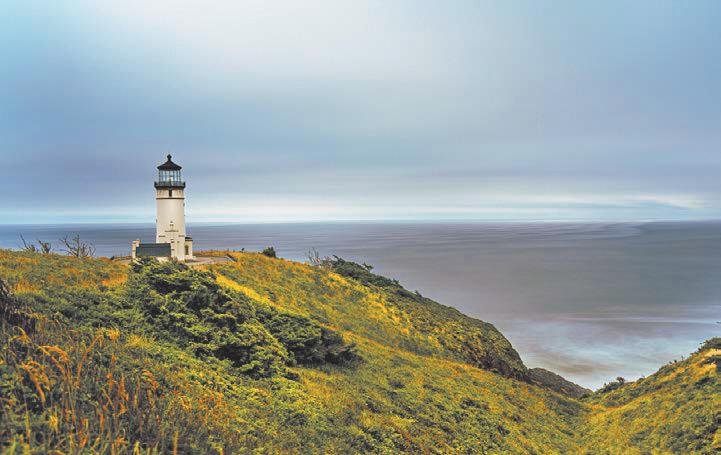
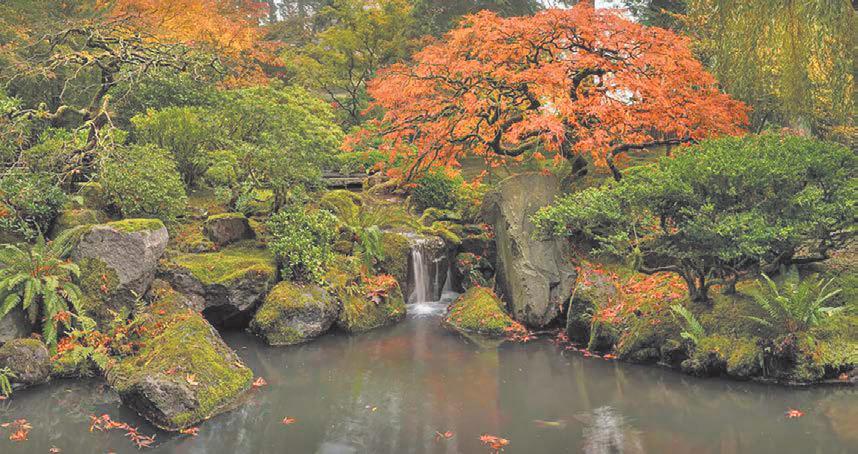
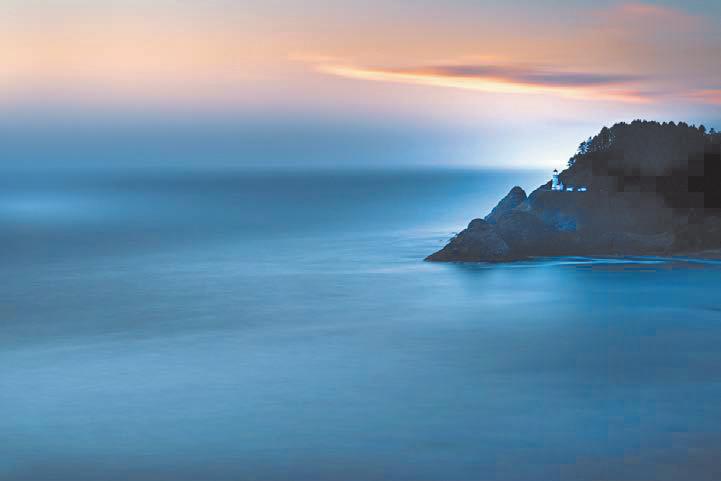
J’s career in photography and motion picture communications of 12, leading to a career garnering numerous international awards and accolades. As a result there is no conventional to categorize his style; his body of work ranges from macro to unique portraiture to sweeping landscapes.
He own s t he J B runner F ine A r t galler y in I lwa c o , WA This and beyond. Being on the peninsula has created a new space for J and allowed his body of work to grow from the red rocks of his native Utah to the beauty of the PNW he now calls home.
J has a deep appreciation for nature, landscape that surrounds us. He uses lighting & his understanding of composition as it relates to both music and photography to capture scenes that exude a magical essence. He attempts to capture this magic in an effort to encourage others to love our good earth.

•

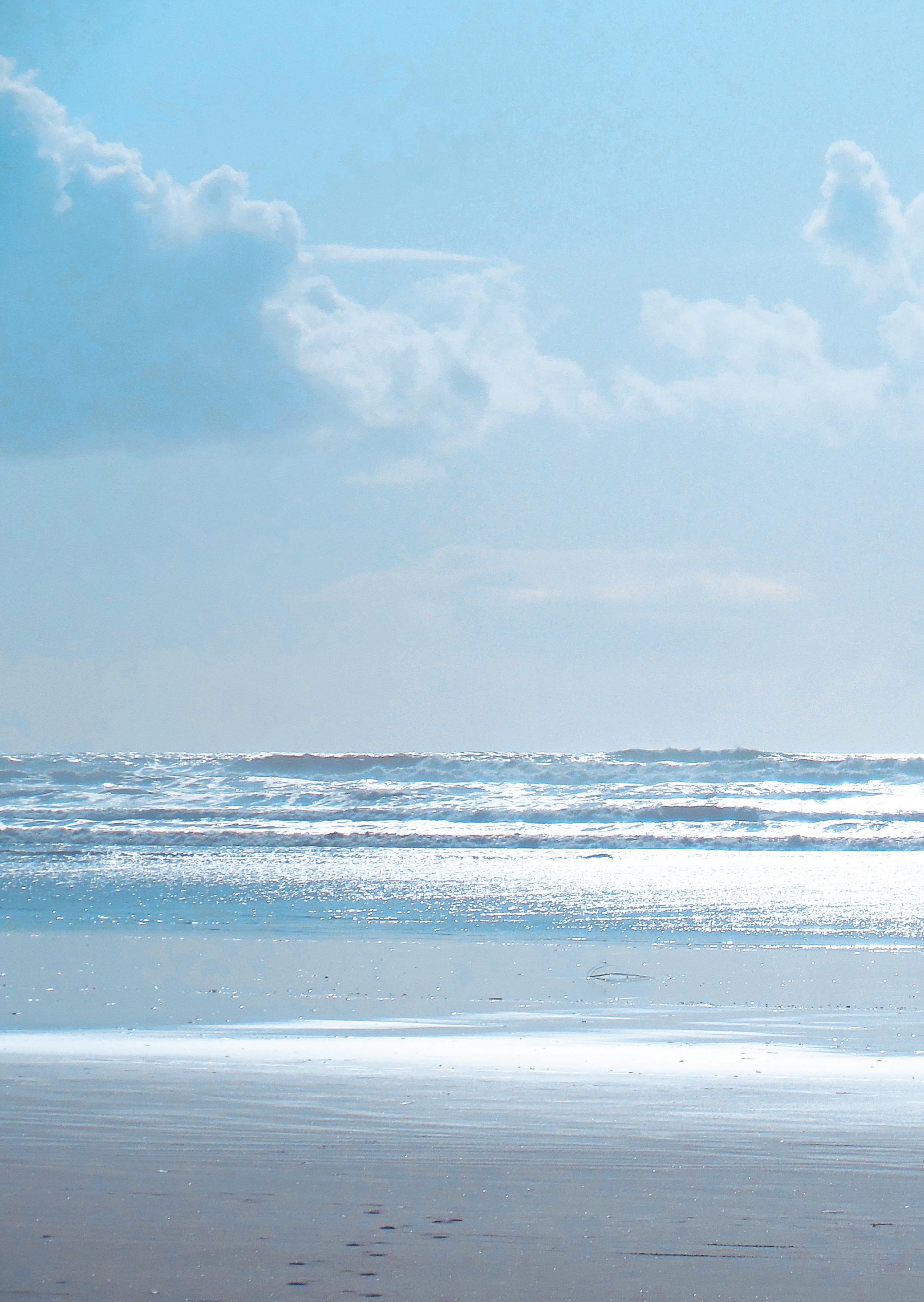
J BRUNN E R FI N E AR T 161 Hower t on Way - I lwaco Wa t er f ron t (360 ) 559-1457 ww w. jbrunne r. ar t
Limited edition print photography
Gifts and Ilwaco-centric souvenirs
•
•
Wonderful waterfront gallery location J B RUNN E R FI N E A R T

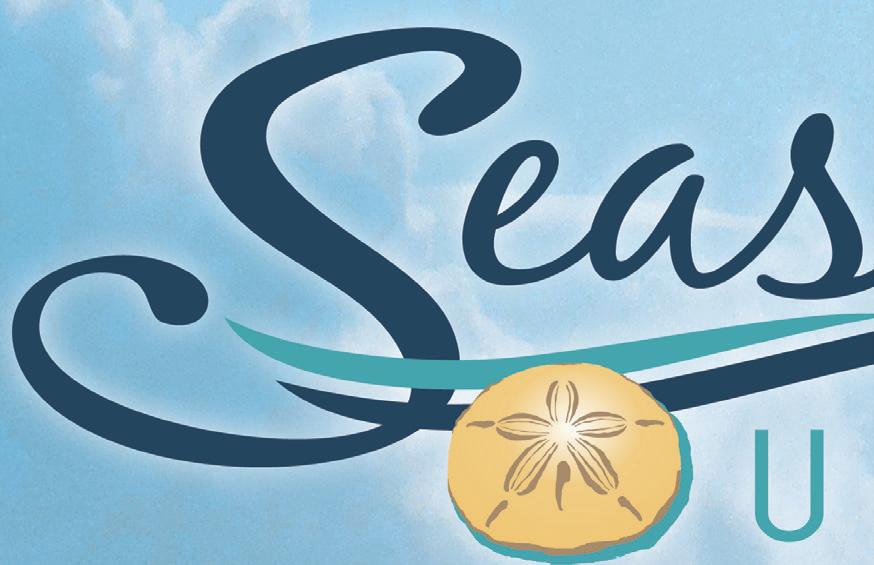




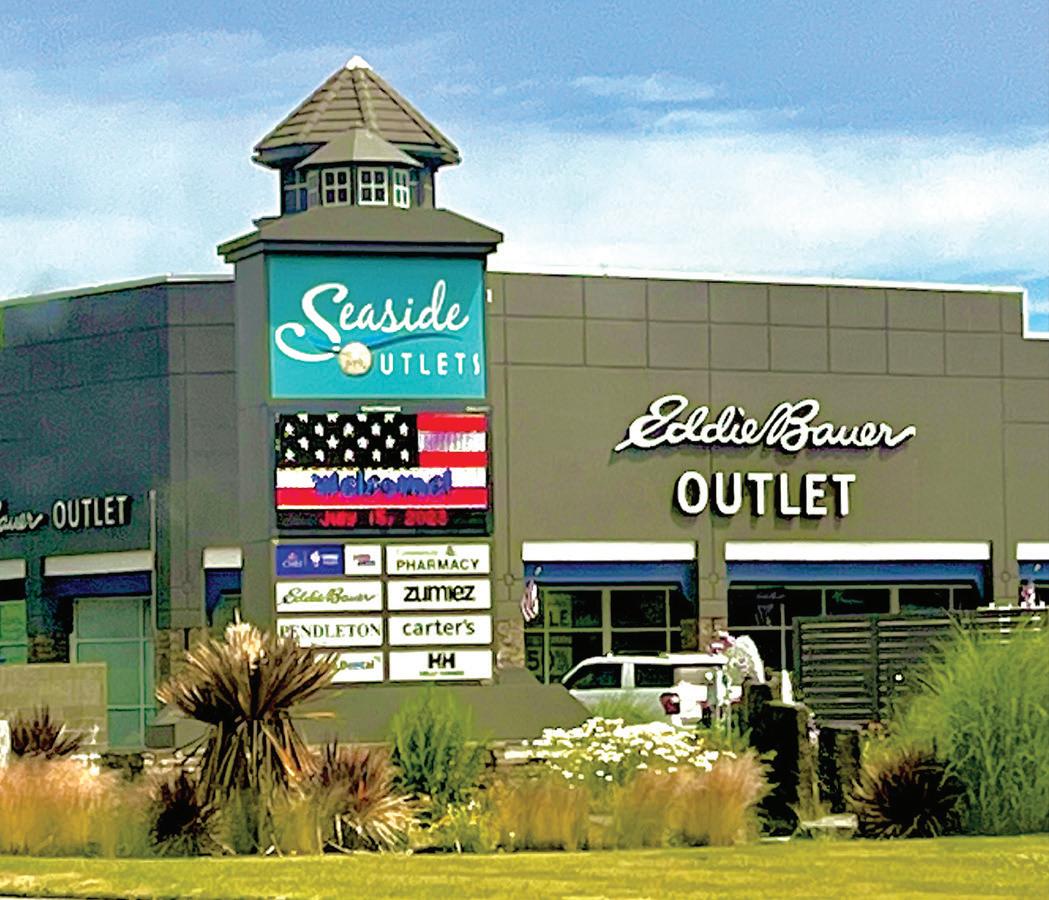
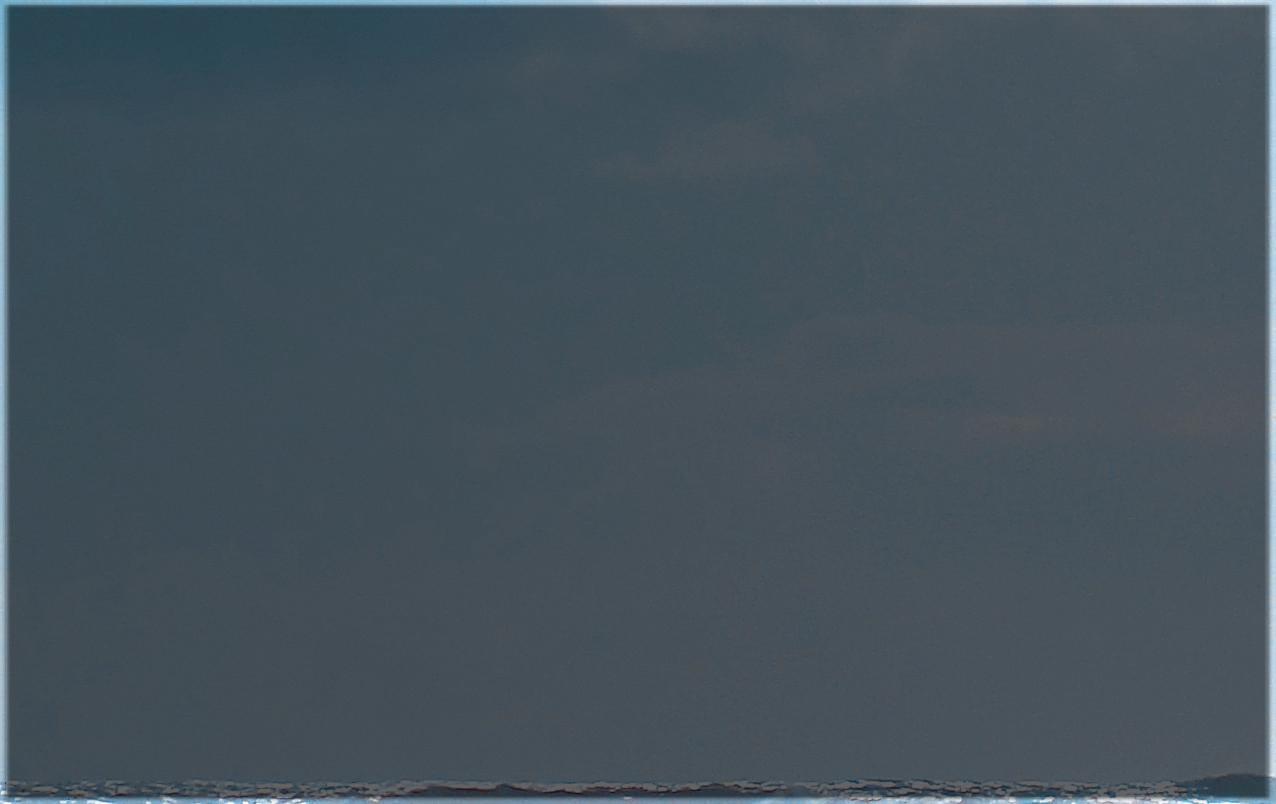




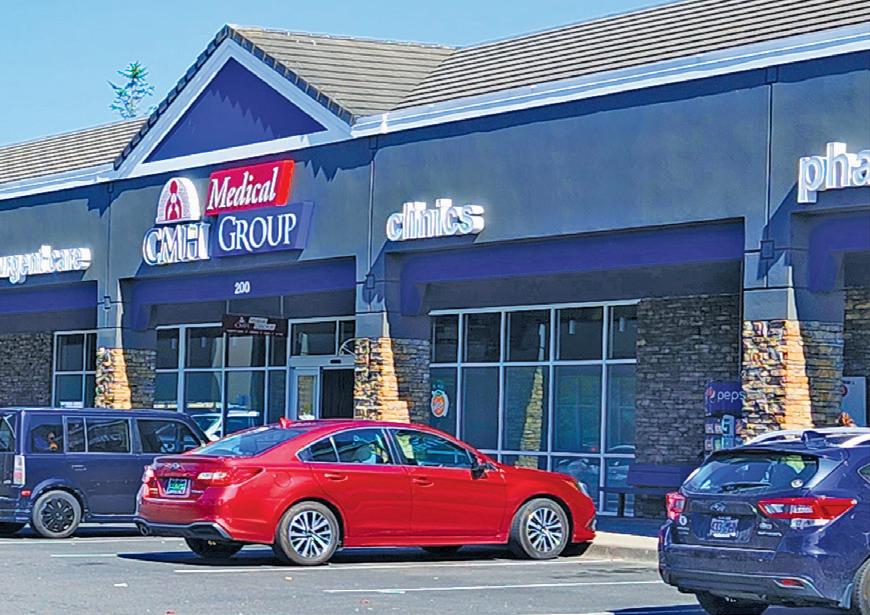



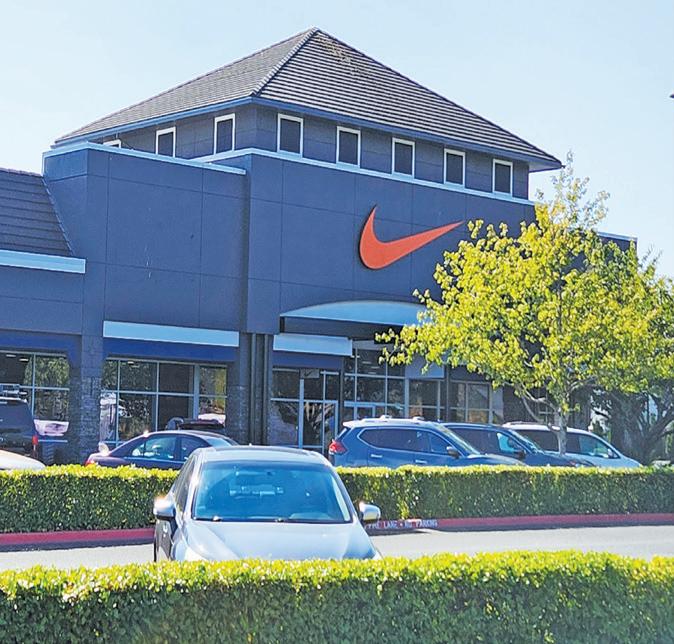
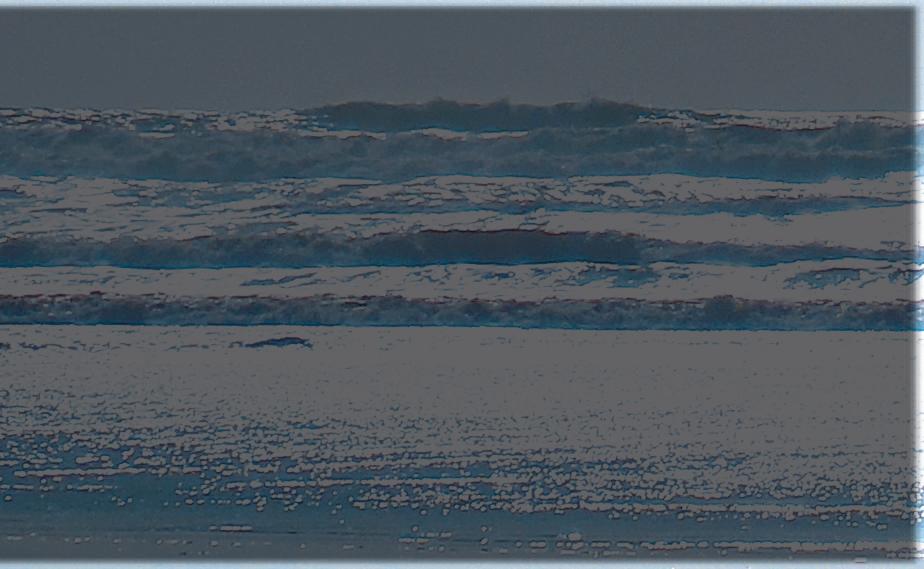
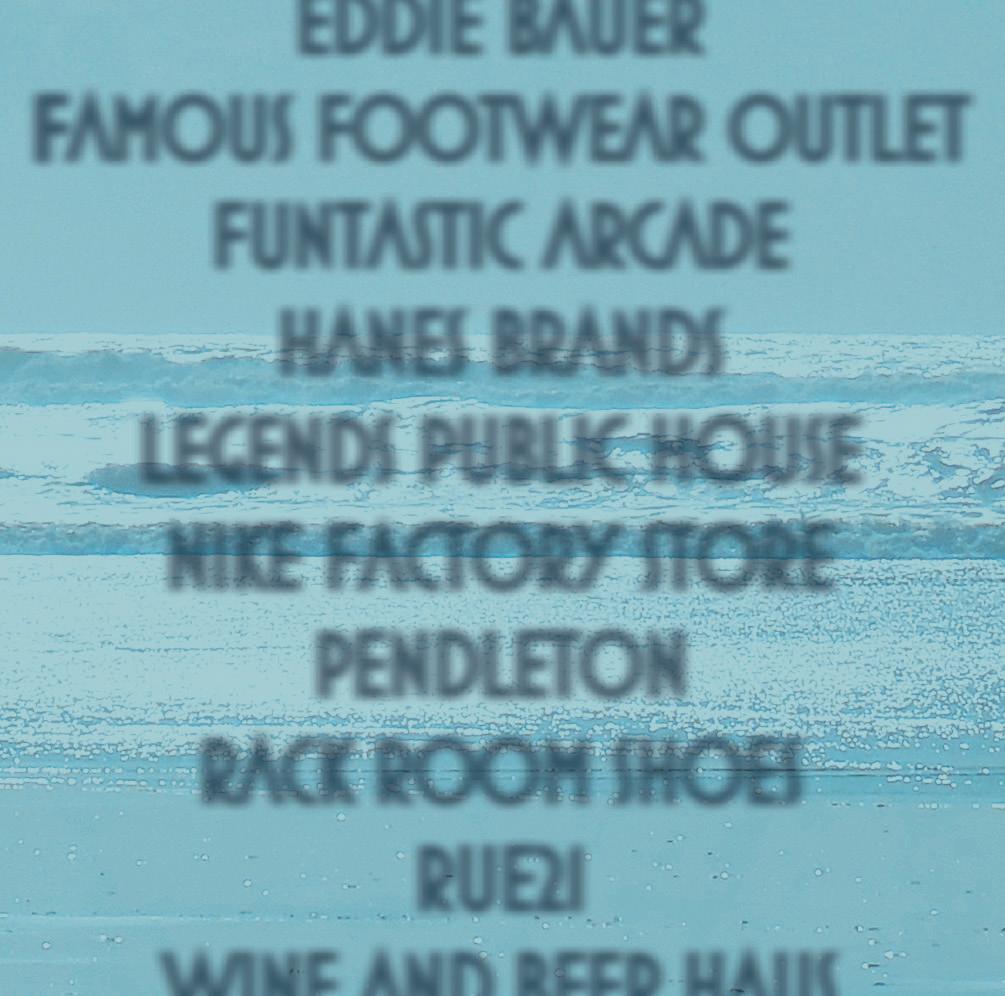

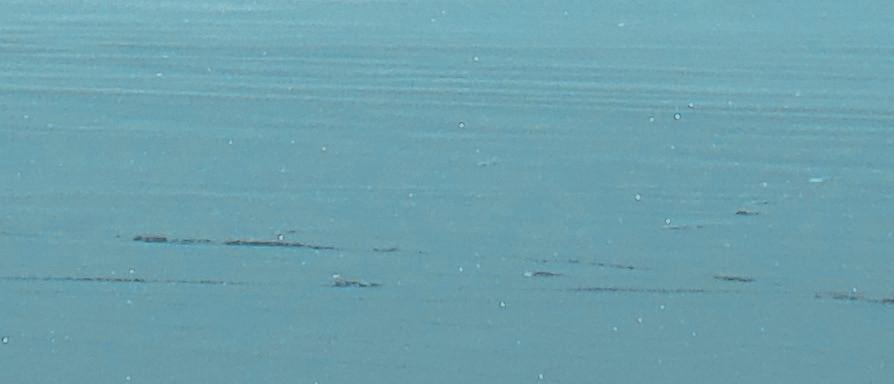
Top Brands. Tax-Free shopping. ADVANTAGE DENTAL BATH & BODY WORKS BOOK WAREHOUSE CARTER’S BROTHERS COASTAL OCCASIONS Columbia Memorial Hospital Primary Care Clinic CMH Community Pharmacy EDDIE BAUER FAMOUS FOOTWEAR OUTLET FUNTASTIC ARCADE HANES BRANDS LEGENDS PUBLIC HOUSE NIKE FACTORY STORE PENDLETON RACK ROOM SHOES RUE21 WINE AND BEER HAUS TOKYO TERIYAKI ZUMIEZ Hwy 101 & 12th Ave., Seaside, Oregon 503.717.1603 for the latest store sales, mall events or coupon book, visit us on facebook or at seasideoutlets.com
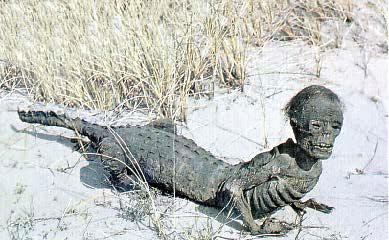

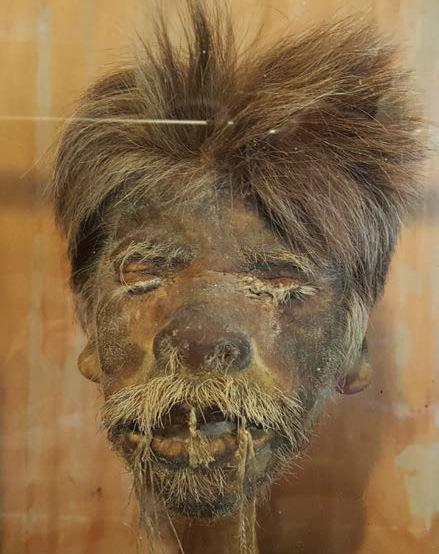
“1 of 10 great places for monstrous encounters”
- USA Today
“A truly fun place to browse and shop, with something bizarre around every corner. Outstanding music box and vintage arcade collection. Something for everyone.”
- People Magazine
Marsh’s Free Museum is a world class side show”
- Tacoma Tribune
“Scientists’ call bizarre creature the missing link.”
- Weekly World News
“Going to Marsh’s Free Museum is a bit like watching Ben Hur. Every time you do, you see something new.”
- Daily Astorian
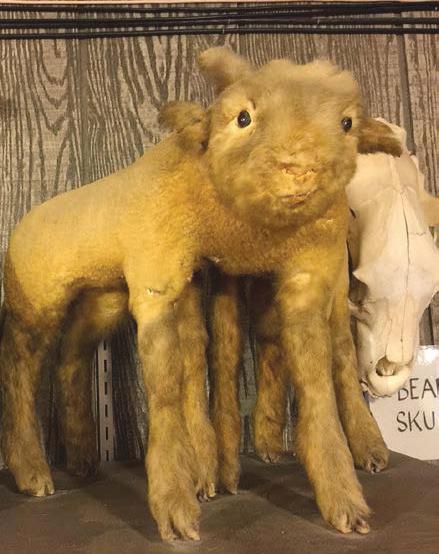

•
•
•
•
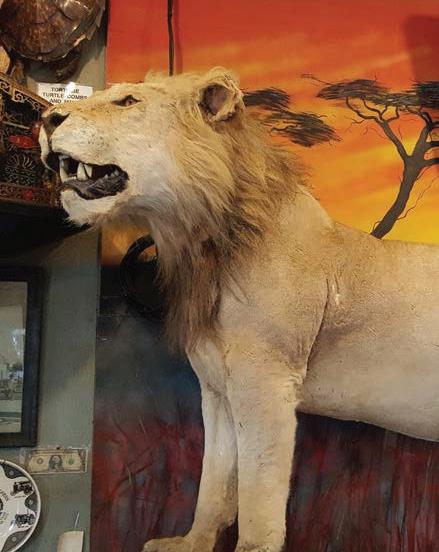
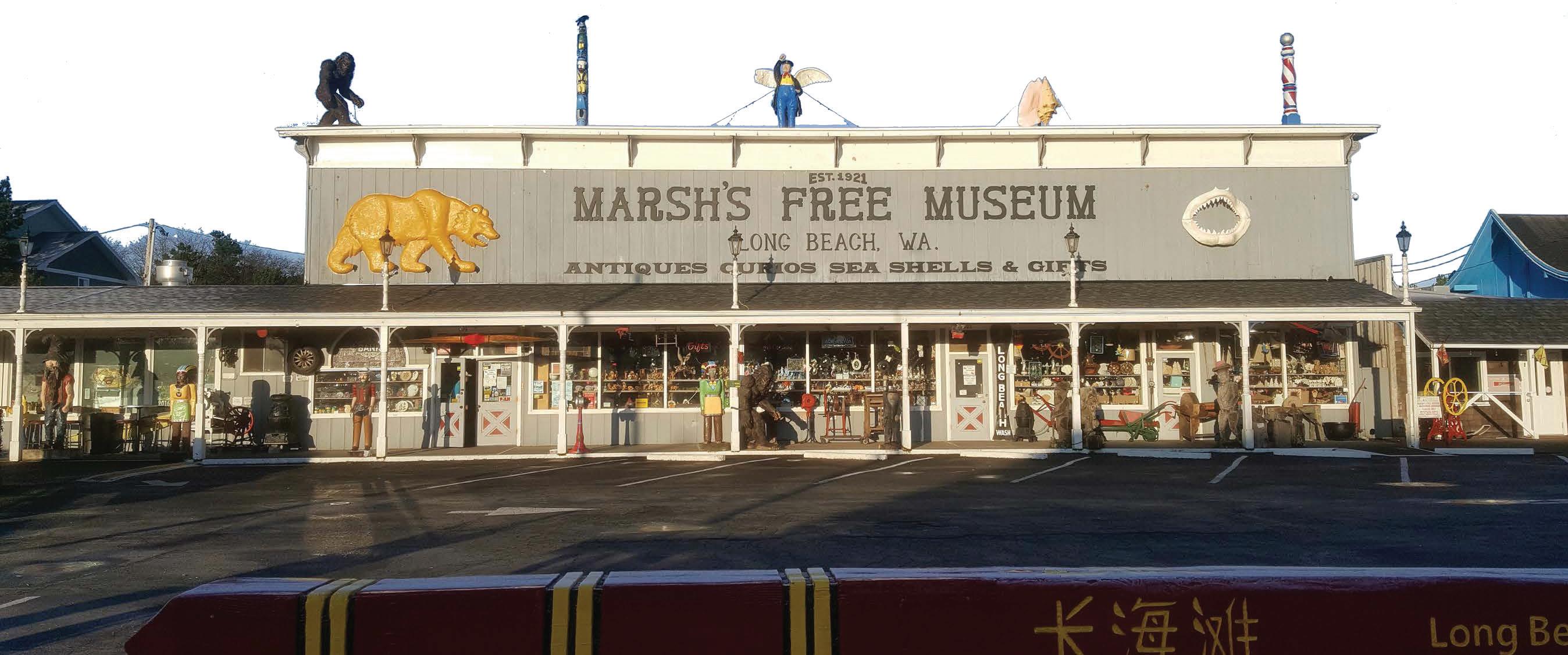

free Museum A place where troubles are forgotten and laughs and smiles are free! A LONG BEACH ICON FOR OVER 100 YEARS! Beach Souvenirs • Seashells • Salt Water Taffy OPEN 7 DAYS • AMPLE PARKING • DOWNTOWN LONG BEACH, WA • 360-624-2188 Join Jake’s Fan Club at: www.MarshsFreeMuseum.com MENTION THIS AD FOR A FREE WOODEN NICKEL GOOD FOR 10% OFF YOUR NEXT PURCHASE COME IN & ASK FOR YOUR FREE SEASHELL!
gotta see jake the
man! A few quotes from some of our visitors come sEE our oddities! Including: Fine & Unusual Gifts! Ask for your FREE Tide Guide & Sea Shell!
Jake - The Alligator Man
Marshs
you
alligator
•
Shrunken Head
8-Legged Lamb
•
Calf
• 2-Headed
1-Eyed Lamb
Vintage Arcade Items
Animal Mounts
• Wild
Large Music Box Collection
So interesting some people never leave!
Peninsula’s #1 Family Attraction!
Port of Ilwaco.com
WATERFRONT ART
Annual Events
• Ilwaco Children’s Parade
Saturday, May 4th • Noon
• Firecracker 5K Run/Walk & Fireworks Show
1st Saturday in July
• Ilwaco Slow Drag
Friday of Rod Run Weekend
• Crab Pot Christmas
First Saturday in December, 12/7
Ilwaco Art Walks
Last Sundays, 1-4pm, May-September

FOOD
Marine Supply
Englund Marine
Seafood
Safecoast Seafood
Sportsmen’s Cannery
Tre-Fin Foods
Fishing Charters
IllwacoCharterAssociation.com
Beacon Charters
Coho Charters
Pacific Salmon Charters
Seabreeze Charters
Shake-n-Bake Sportsfishing
Shopping
Don Nisbett Art Gallery
Luisa Mack Jewelry & Art
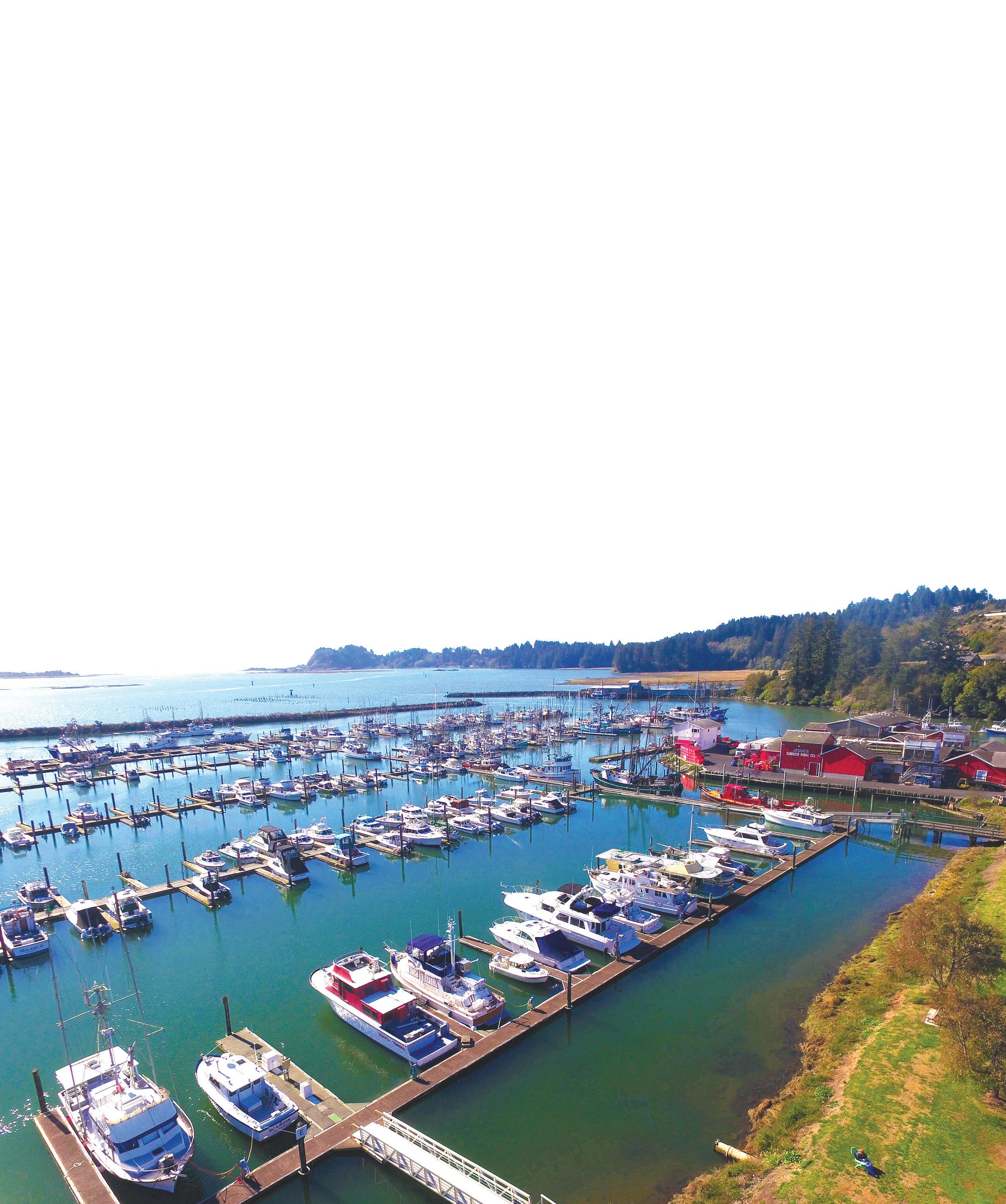
Marie Powell Art Gallery
Purly Shell Fiber Arts
Skywater Gallery
Time Enough Books
Dining
Salt Pub
Waterline Pub
Lodging
Salt Hotel
At the Helm
Also at the Port
RiversZen Yoga Freedom Market
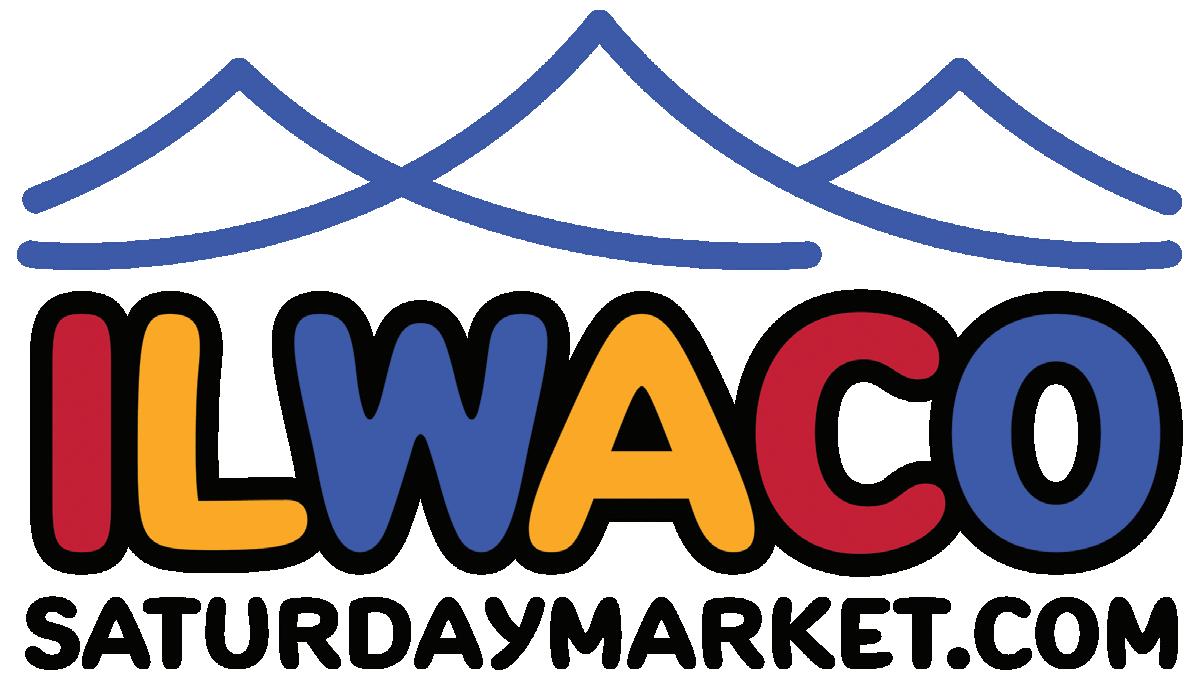
•
•
•
• SHOPPING Follow Us on Facebook DiscoverIlwaco.com
FISHING
FUN
Our Coast
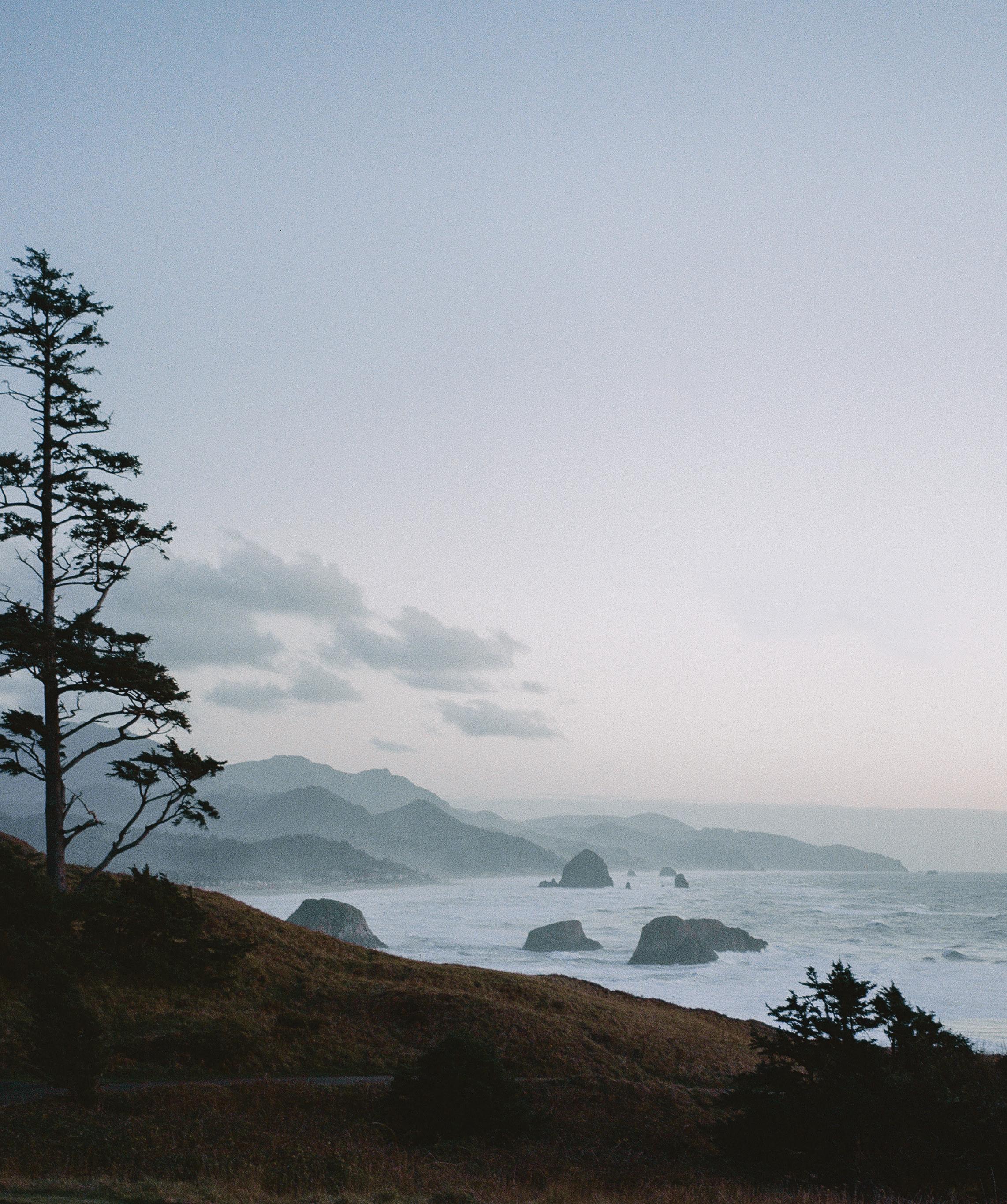
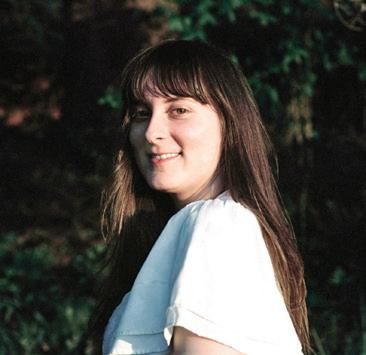
Somewhere to find wonder at every hour.
Before sunrise, ship traffic is already moving on the Columbia River.
A silhouette against the day’s first light, one cargo vessel sounds a low hum as it drifts beneath the Astoria Bridge, guided closely by a Columbia River Bar Pilot’s tugboat. From a window on the riverfront, a child reaches for a pair of binoculars and scans over the ship’s markings and letters.
Miles away, at the Willapa National Wildlife Refuge, birders pack their binoculars too, in hopes of spotting the rare western snowy plover. Already, a double-crested cormorant is airing out its wings and a great blue heron is wading in the mist.
In Cannon Beach and Manzanita, people awake to the churning sea. They walk the city blocks as coffee shops and art galleries open their doors. One pair of hikers watch a herd of elk as they enjoy breakfast before heading out to Saddle Mountain, where they’ll climb to the summit to see panoramic views of the river and ocean.
So another day begins in the ColumbiaPacific region, this place of many waters between Willapa Bay and the Nehalem River.
The stories in this year’s edition of Our Coast are windows into the days and lives of people who call this place home, from oyster farmers to U.S. Coast Guardsmen,
Lissa Brewer Editor Our Coast Magazine
historic figures to contemporary musicians, artists, educators and business owners.
History remains alive and influential here, as told through the stories of this land’s first inhabitants, the Chinook and Clatsop-Nehalem people, in historic buildings and homes and in growing collections of artifacts displayed at the region’s many museums.
Sometimes, these stories and places are comforting reminders that days past looked much like ours, filled with work, creativity and a sense of wonder.
In these pages, move from morning to evening on the coast with Astorian photographer Shanna Madison’s “Hours by the tides,” a photo series that begins with the journey of a coho salmon and ends as surfers exit the waves at dusk in the shadow of sea stacks at Ecola State Park.
The stories in this year’s edition of Our Coast are windows into the days and lives of people who call this place home.
Even after dark, the hours here yield to the rhythm of the tides. On the beaches of Seaview and Ilwaco, clammers switch on their headlamps, still determined to search the outgoing tide for their limit of clams during a dig. Behind them, the evening’s last light is the rotating flash of North Head Lighthouse.
Night across the region brings music, plays, dinners and beach bonfires. Under clear skies, people set up tripods on the sand for stargazing. After the day is done, it’s time to find someplace to call home, for a night or for many, and watch a new day begin. Wherever it might take you, we’re glad you’re here.
6 Our Coast Magazine 2024


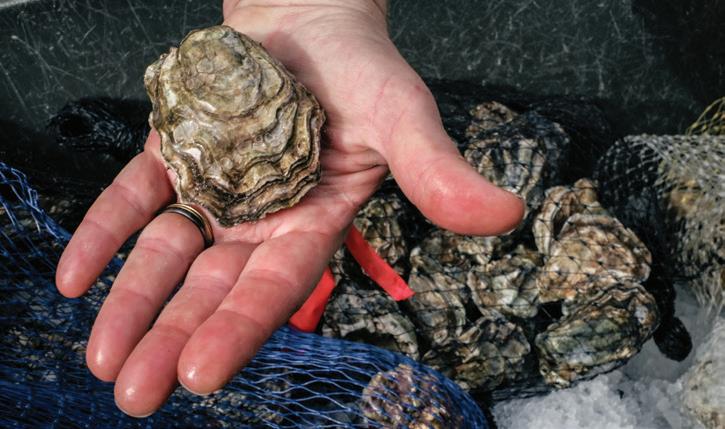
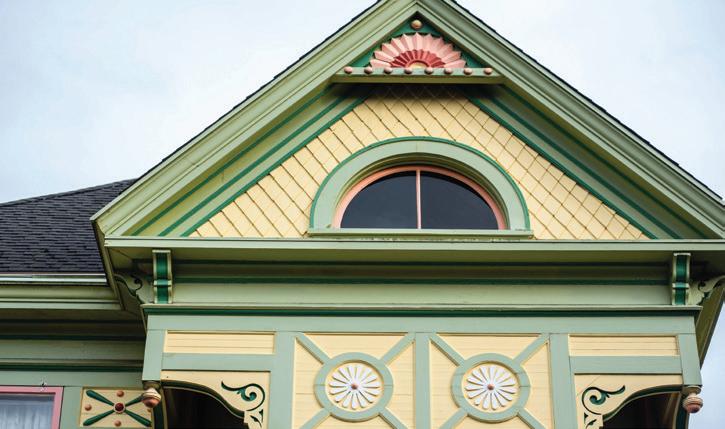
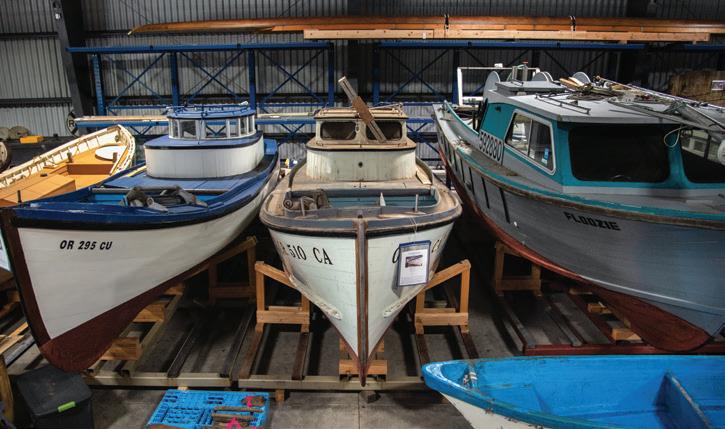
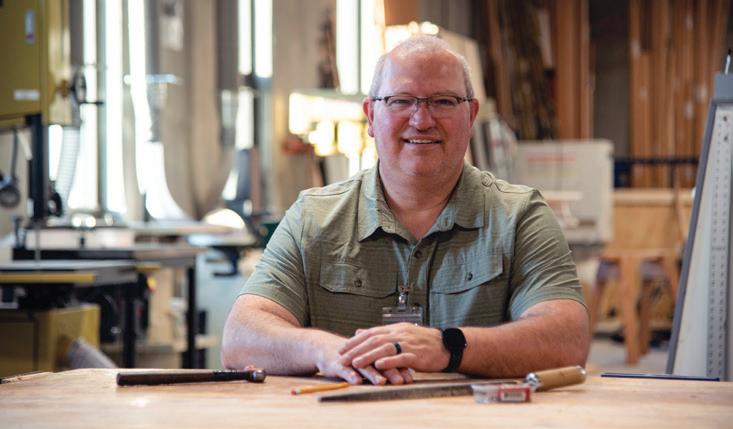
NUMBER 13 • 2024 PUBLISHER Kari Borgen EDITOR Lissa Brewer CONTRIBUTING EDITOR Jenna Dennison PHOTOGRAPHER Shanna Madison DESIGN DIRECTOR/LAYOUT John D. Bruijn CONTRIBUTING WRITERS Lissa Brewer Rebecca Norden-Bright David Campiche M.J. Cody William Dean Jenna Dennison Linda Hoard Peter Korchnak Rebecca Lexa Emily Lindblom Jaime Lump Marianne Monson David Plechl Joanne Rideout Julia Triezenberg Pat Welle ADVERTISING SALES MANAGER Sarah Silver ADVERTISING SALES Heather Jenson Hattie Marvin GET CONNECTED Interact with us and the community at DiscoverOurCoast.com FOLLOW US facebook.com/ourcoast twitter.com/ourcoast instagram.com/ourcoast EMAIL TO US editor@discoverourcoast.com WRITE TO US P.O. Box 210 Astoria, OR 97103 VISIT US ONLINE DiscoverOurCoast.com offers all the content of Our Coast Magazine and more. FIND BACK ISSUES Read up on back issues of Our Coast Magazine at DiscoverOurCoast.com Our Coast is published annually by The Astorian and Chinook Observer. DailyAstorian.com • ChinookObserver.com Copyright © 2024 Our Coast Magazine All rights reserved. EO Media Group COVER PHOTO A person looks to the sea from a piece of driftwood at Short Sand Beach. Inside Our Coast Magazine Hours by the tides Life in the Columbia-Pacific region, from morning catch to moonlight walk 11 Oystering traditions Families adapt and thrive in the face of challenges 44 Residential architecture How Astoria’s homes reflect eras, styles of building 90 Seafaring stories Columbia River Maritime Museum prepares to expand 110 A sense of place Hear what locals have to say about coastal living 122 DO & SEE Our Picks 14 Saddle Mountain 16 Coastal antiques 24 Seasons in foraging 30 EAT & DRINK Our Picks 42 Distilleries on the rise 54 Building a brewery 62 Seaside sweets 68 LIVE & STAY Our Picks 76 Music recording spaces 78 Columbia River ships 84 U.S. Coast Guard voices 96 HISTORY & HERITAGE Our Picks 102 Step out of time 104 Historic local women 115 COASTAL LIFE Birds of the region 124 + MORE Contributors 8 Directory 130 DO & SEE EAT & DRINK LIVE & STAY HISTORY & HERITAGE COASTAL LIFE DiscoverOurCoast.com Check out these stories and more at
MEET the CONTRIBUTORS
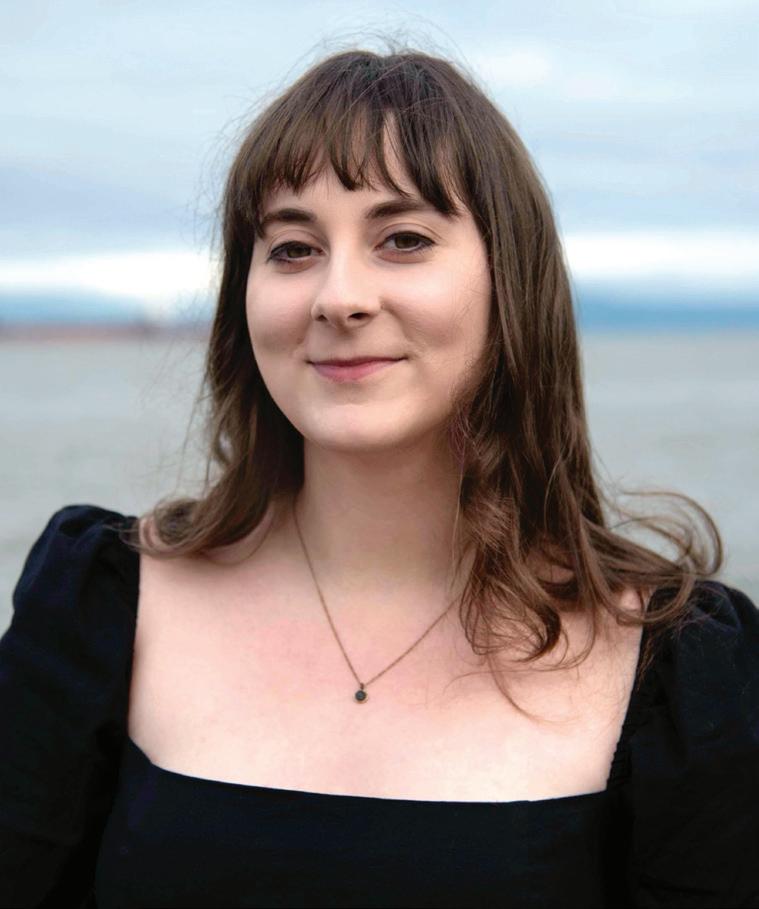
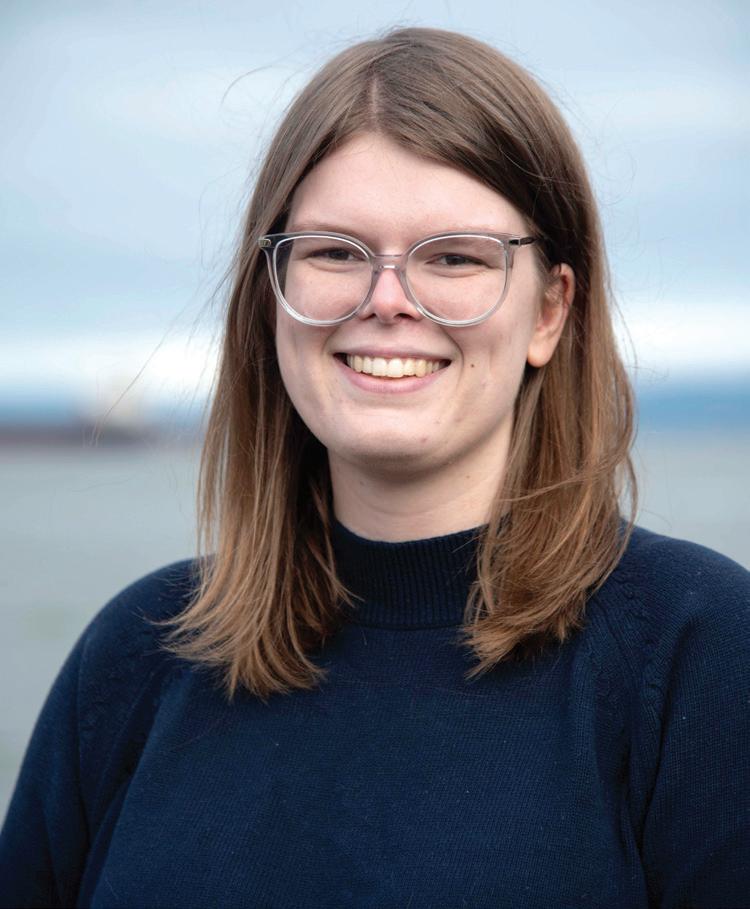
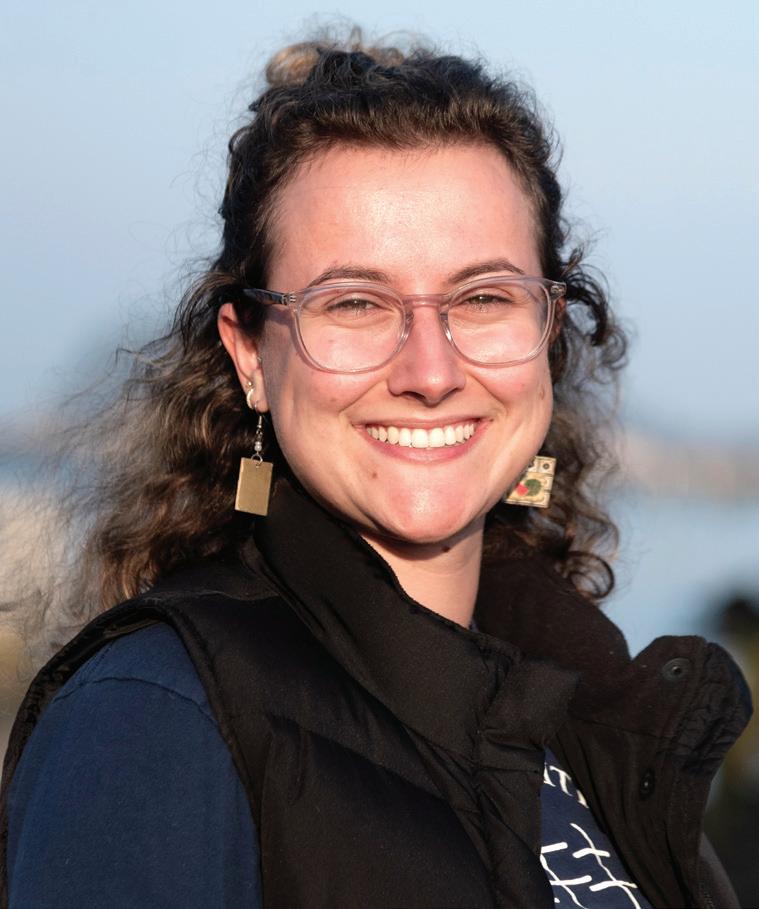
Lissa Brewer
Lissa is the editor of Our Coast and features editor at The Astorian, where she compiles Coast Weekend and The Astorian’s Weekend Break section. She’s fond of books, museums, lighthouses and meandering along the region’s hiking trails and beaches.
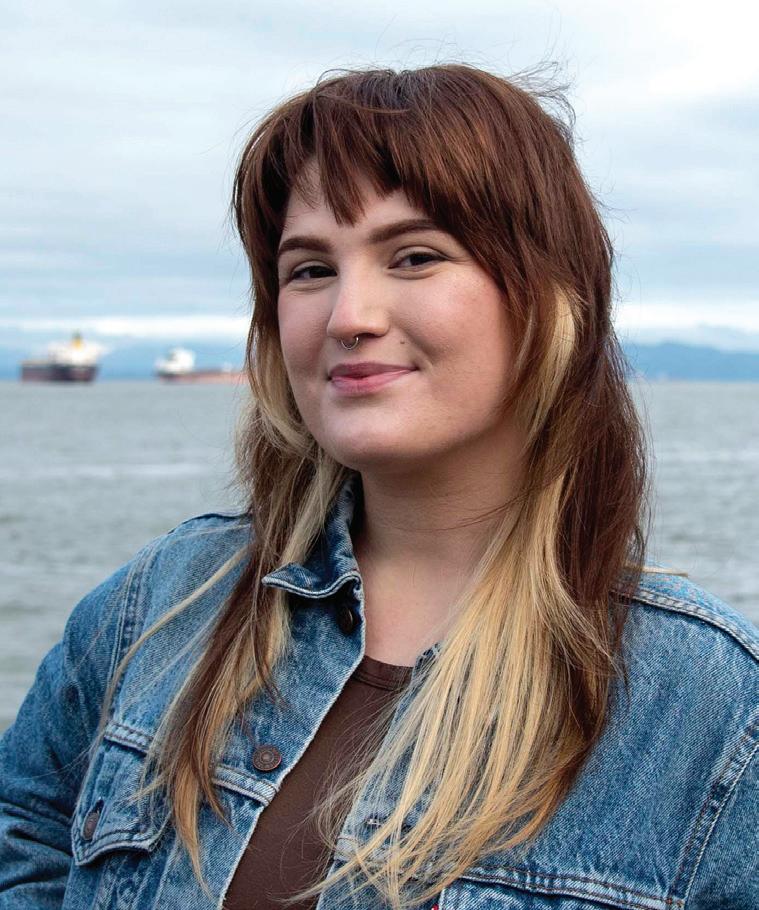
Shanna Madison
Shanna is the photographer of Our Coast and multimedia journalist at The Astorian. Raised in Montana and relocated to the Pacific Northwest, hiking, outdoor recreation and reading at the beach are how she spends her time outside the newsroom.
Jenna Dennison
Jenna is the contributing editor of Our Coast and associate editor at The Astorian. Born and raised in the Pacific Northwest, she enjoys rainstorms and a good cup of coffee.
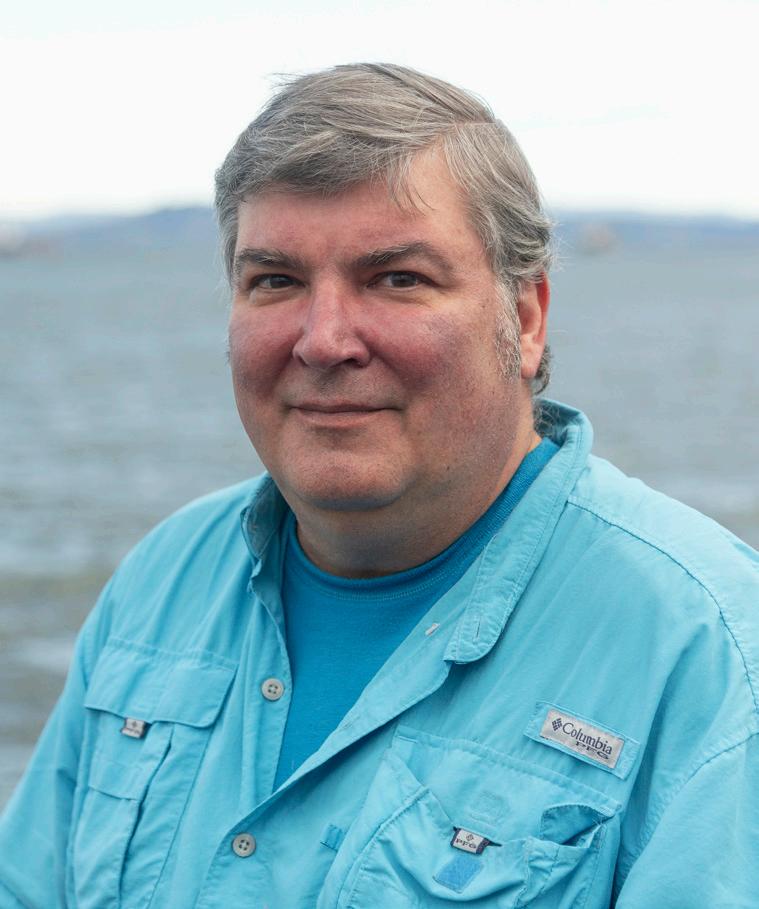
John Bruijn
John is the production director at The Astorian and has been with EO Media Group 24 years. He is design director of Our Coast Magazine and does layout and design work for several other EO Media Group publications.
Julia Triezenberg
Julia is the education supervisor at the Columbia River Maritime Museum and a regular contributor to The Astorian. She coordinates the museum’s adult education programming, volunteer and docent program and equity initiatives with fellow staff.
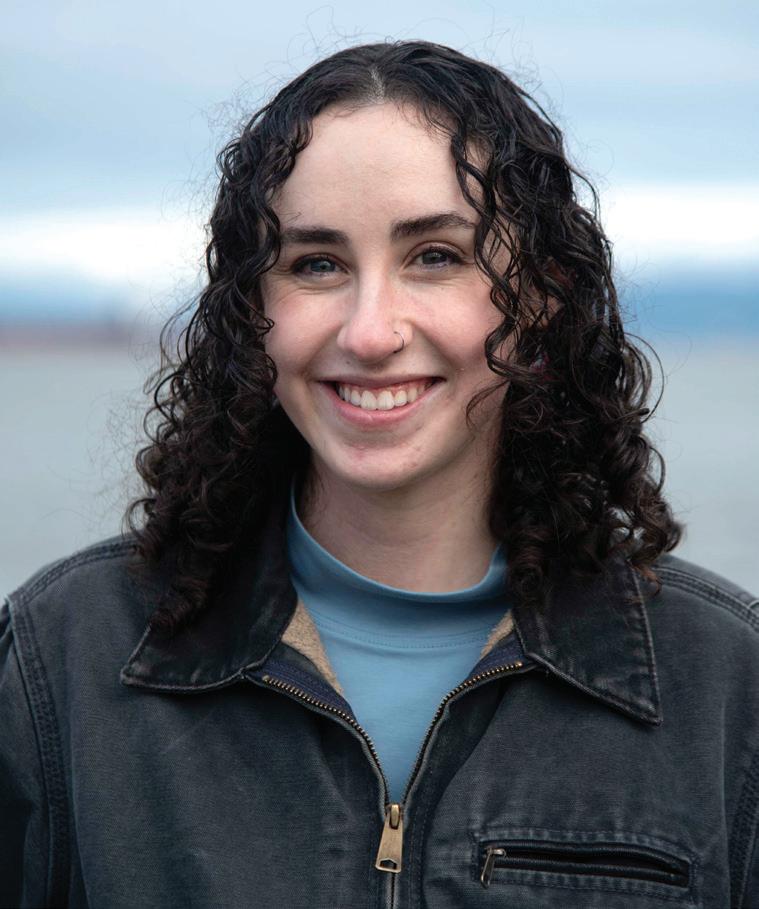
Rebecca Norden-Bright
Rebecca is a reporter covering education and the city of Astoria, among other things, for The Astorian. Outside of the newsroom, she can usually be found reading, watching soccer or scavenging the coast’s vintage and antique stores.
8 Our Coast Magazine 2024
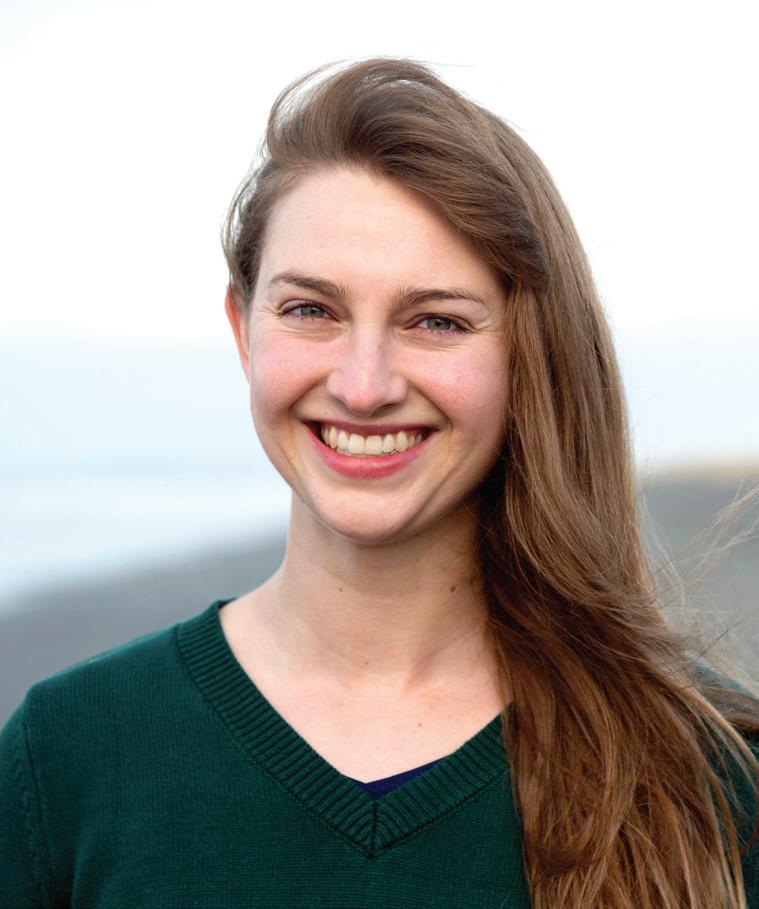
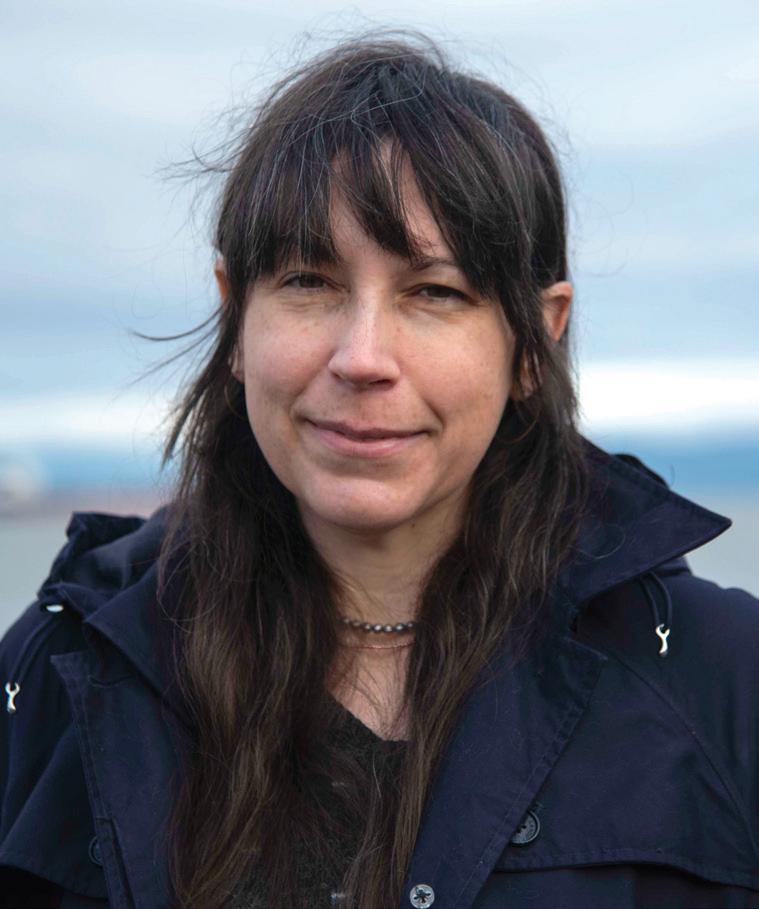
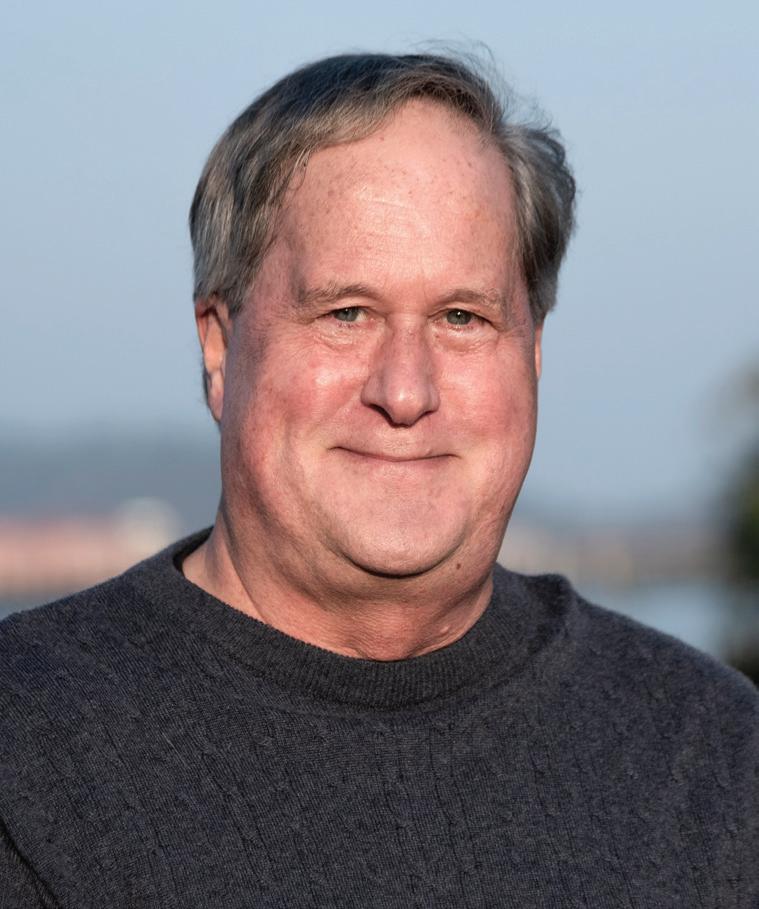
Emily Lindblom
Emily is the marketing director at Astoria Co+op and a freelance journalist in Astoria. She has a background in community reporting and a master’s degree in multimedia journalism.
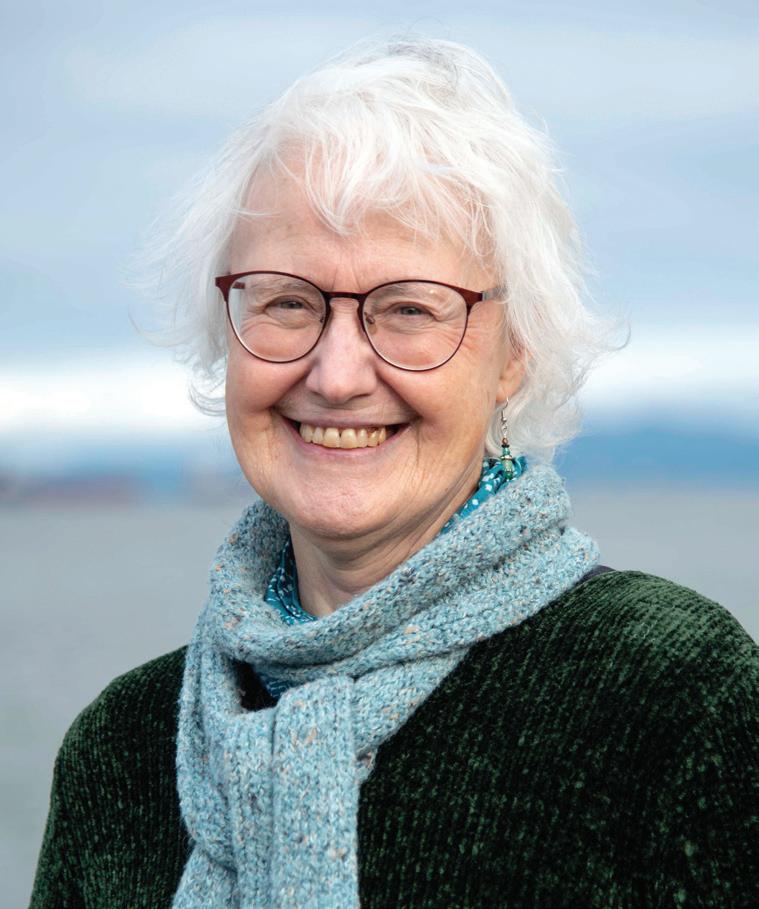
Jaime Lump
Jaime is the administrative assistant at the Lower Columbia Preservation Society in Astoria. Researching regional history and sharing untold stories are two of her passions. She contributes regularly to The Astorian on local history and architecture.

William Dean
William is a retired investigative journalist who left newspaper work to take on a new challenge: writing novels. Since moving to Astoria, he’s published three suspenseful tales set in the Northwest and also writes about the local craft beer scene.
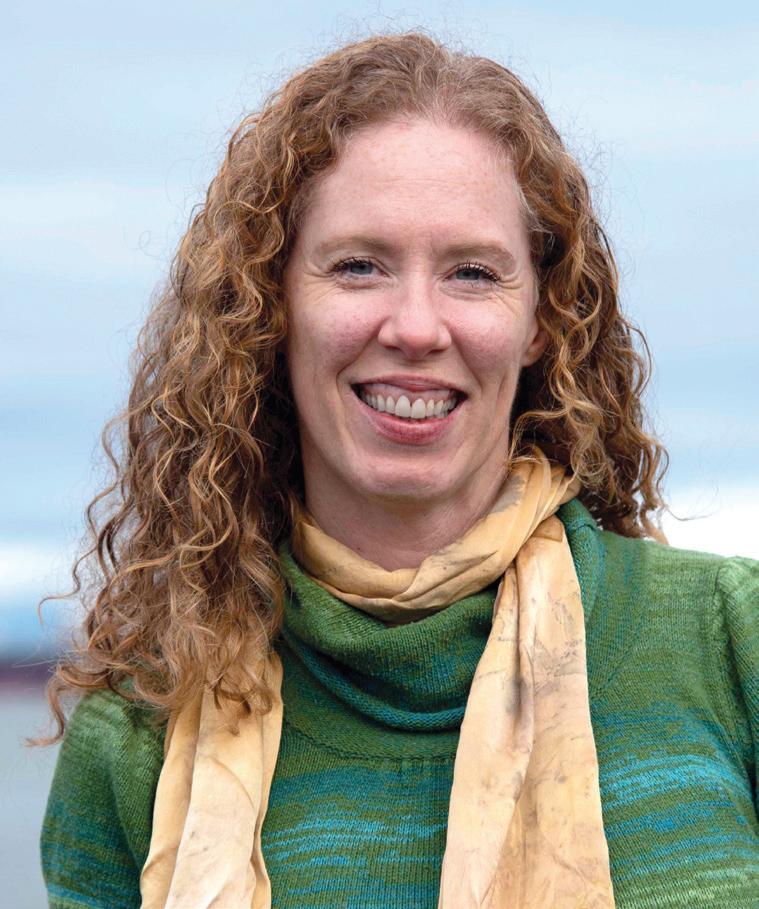
Joanne Rideout
Joanne is the creator and producer of The Ship Report, a local maritime radio show and podcast now in its 21st year. The Ship Report airs on KMUN 91.9 FM in Astoria and on Apple Podcasts and Spotify.
David Plechl
David is a commercial brewer and freelance journalist based in Astoria. His work has appeared in The Astorian, the Chinook Observer, The Columbian, Portland Mercury and the Portland Tribune.
Marianne Monson
Marianne is the founder and president of The Writer’s Guild of Astoria and the author of several books about women’s history, including “Frontier Grit” and “The Opera Sisters.”
DiscoverOurCoast.com 9 DiscoverOurCoast.com
more CONTRIBUTORS

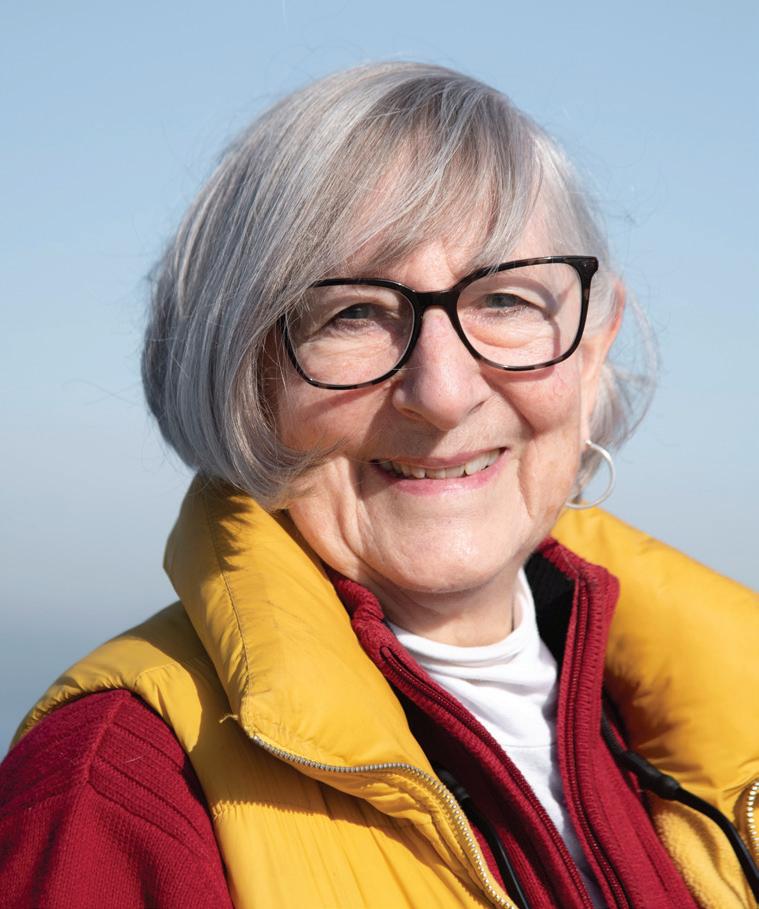
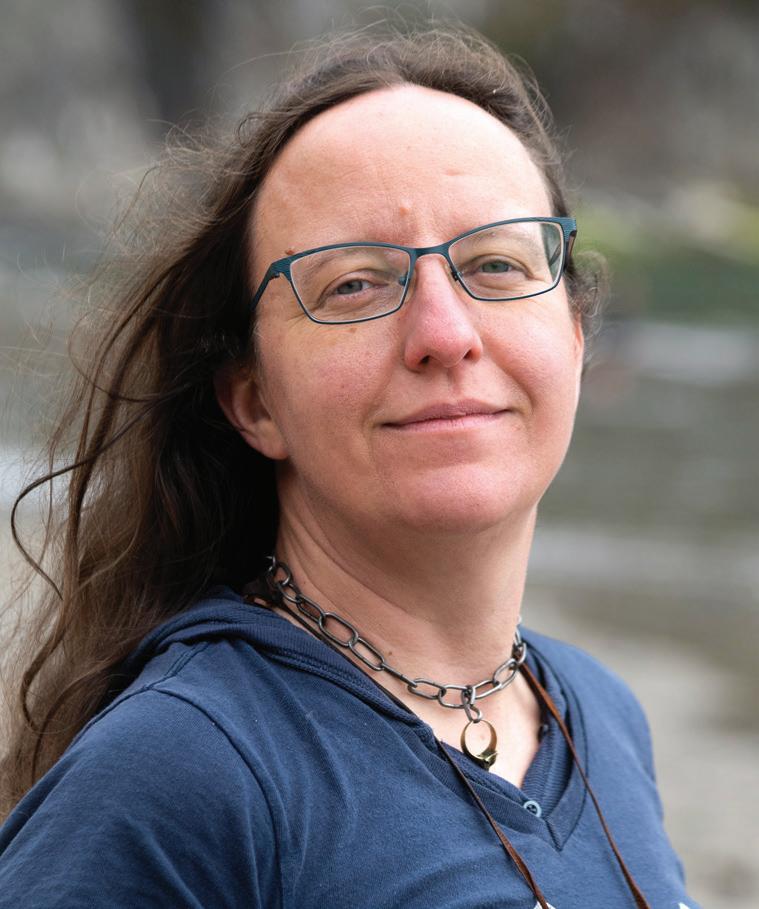
Peter Korchnak
Peter is a regular contributor to Coast Weekend and The Astorian. He is from Czechoslovakia, a country that no longer exists. When he’s not writing, he explores the memory of another in the podcast “Remembering Yugoslavia.”
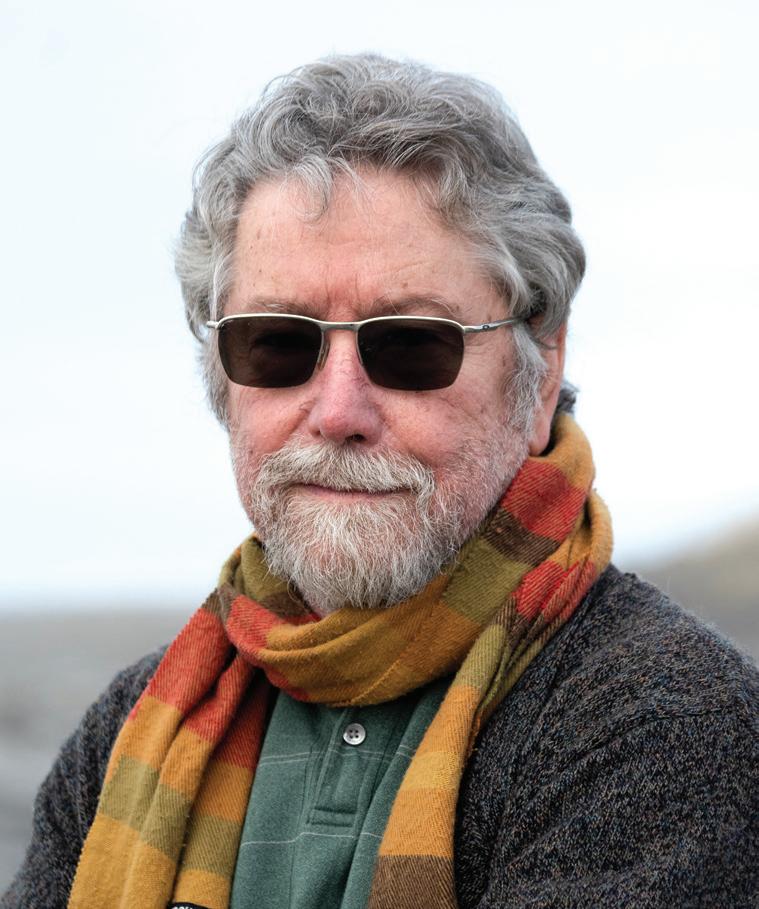
David Campiche
David is a potter, artist, poet, retired innkeeper and the author of “Black Wing,” a historical fiction novel published last year. He has contributed to The Astorian over a couple of decades.
M.J. Cody
M.J. is a regular contributor to The Astorian, Our Coast and Coast Weekend. She travels and writes, always looking for people, places and things that bring her surprise and delight.
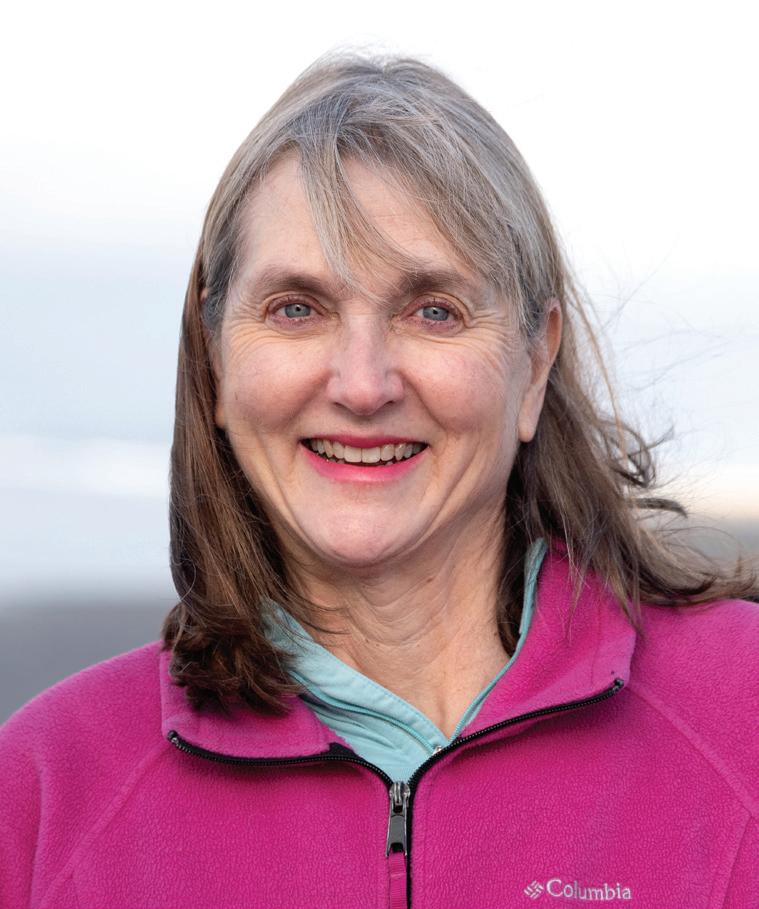
Rebecca Lexa
Rebecca is a Long Beach Peninsula-based naturalist, educator and author of many chapbooks, as well as the forthcoming book, “The Everyday Naturalist: How to Identify Animals, Plants, and Fungi Wherever You Go.” She teaches classes and leads tours on foraging and natural history.
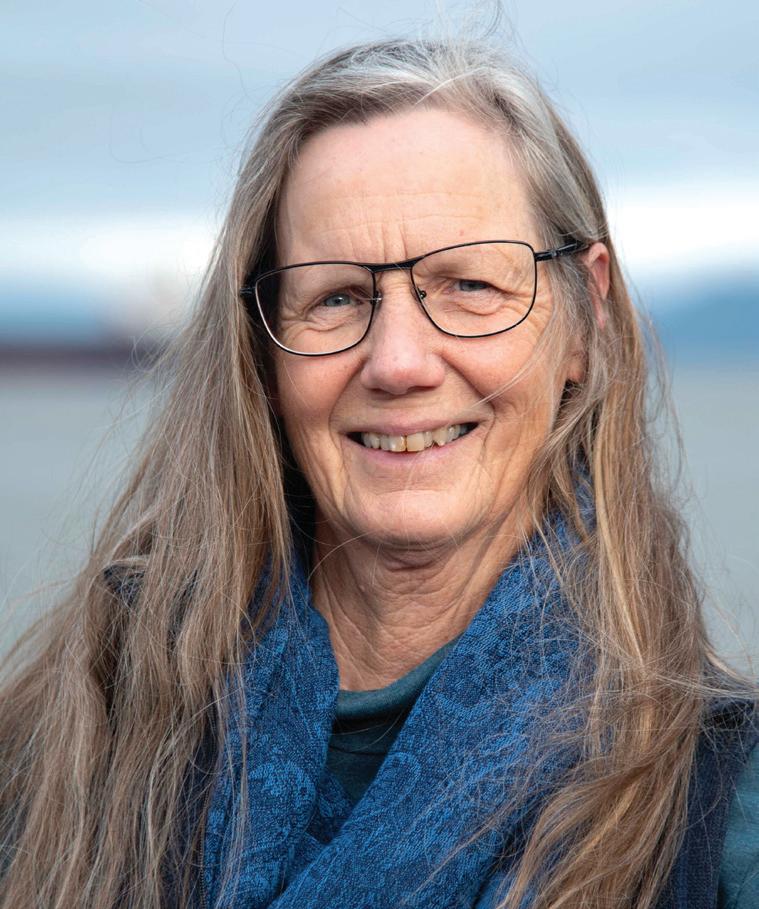
Linda Hoard
Linda is a poet, freelance journalist, substitute teacher and bird watcher living in Lake Oswego. She enjoys spending lots of time on the North Coast in all seasons.
Pat Welle
Pat photographs birds and their habitats while exploring the waterways of the Pacific Northwest. Occasionally traveling to places well beyond home, she looks for backgrounds and details that connect birds and wildlife to the spaces they’re found.
10 Our Coast Magazine 2024
Hours by the tides
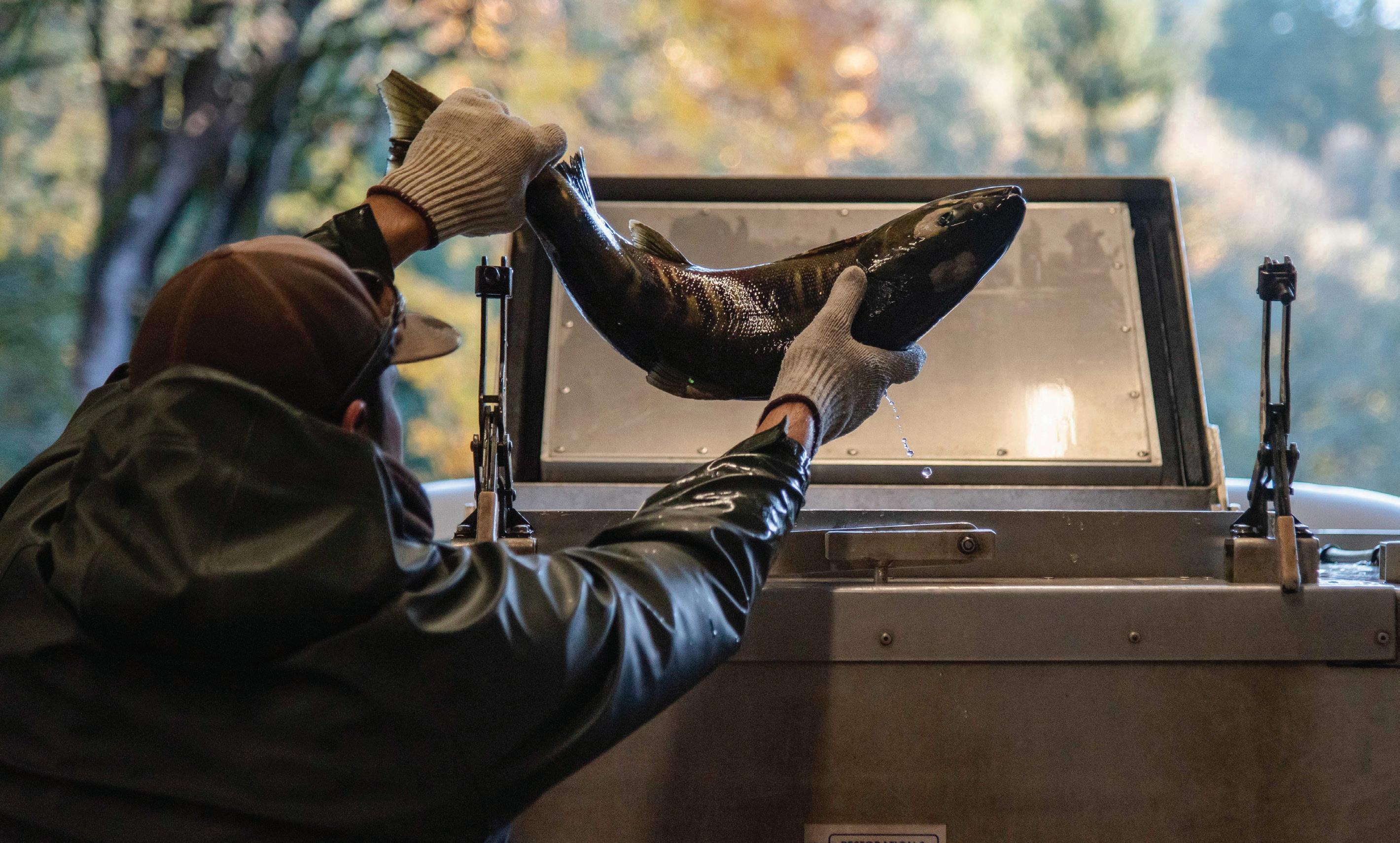
8:57 a.m.
Oregon Department of Fish and Wildlife workers load a chum salmon onto a truck to be transported to a nearby creek.
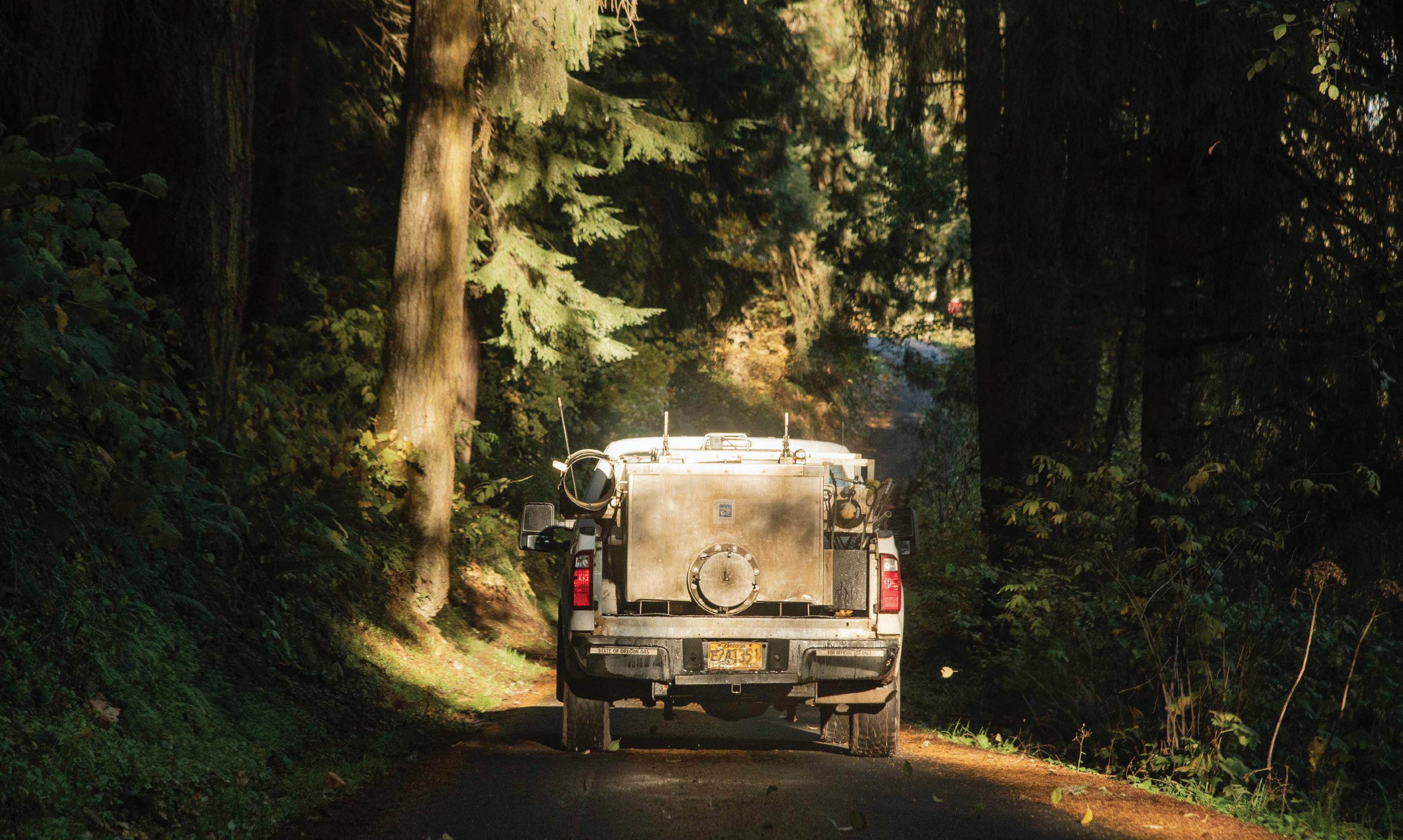
9:17 a.m.
Do & See
A truck transports chum salmon from Big Creek Fish Hatchery to Gnat Creek.
A photo essay by Shanna Madison
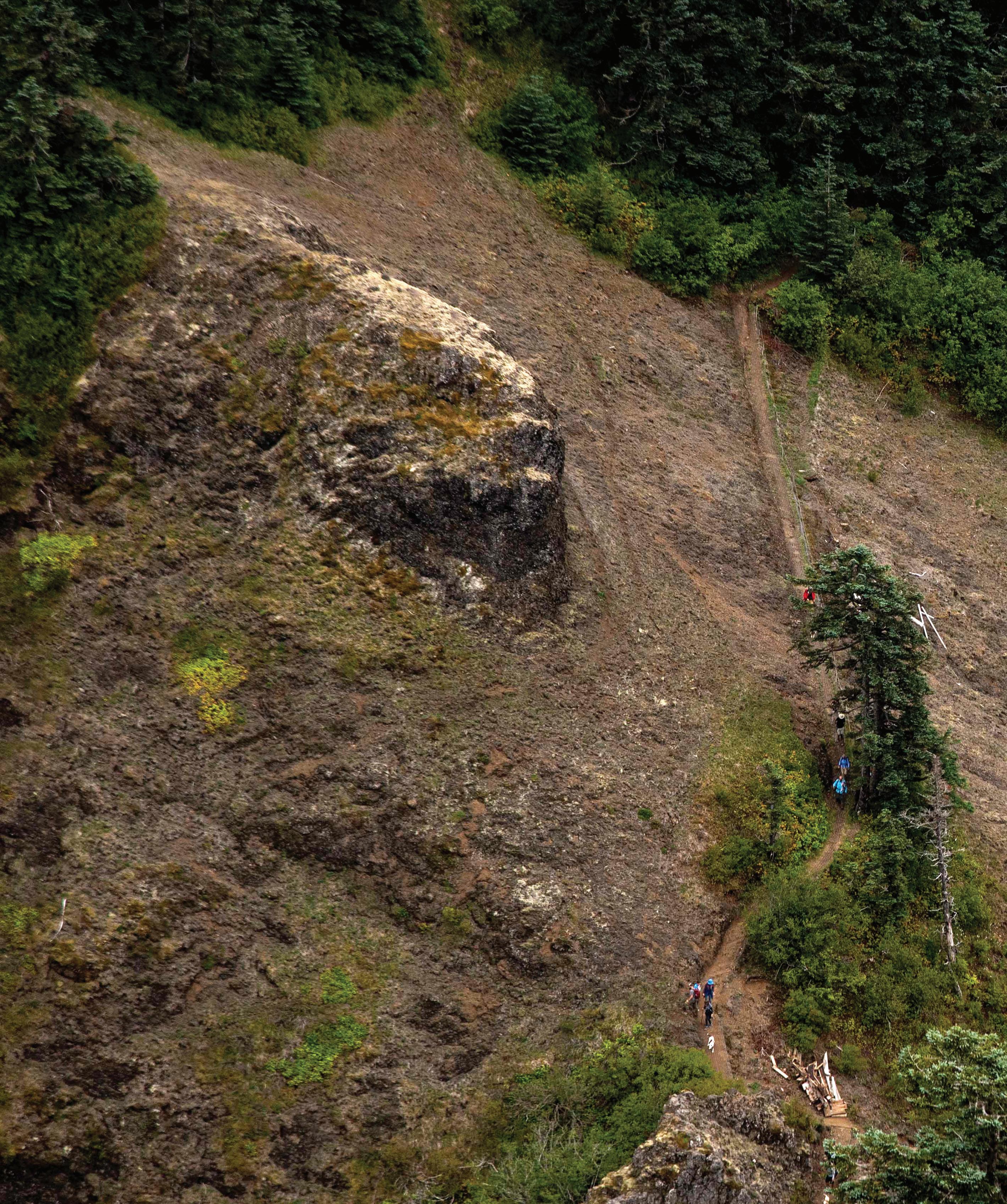
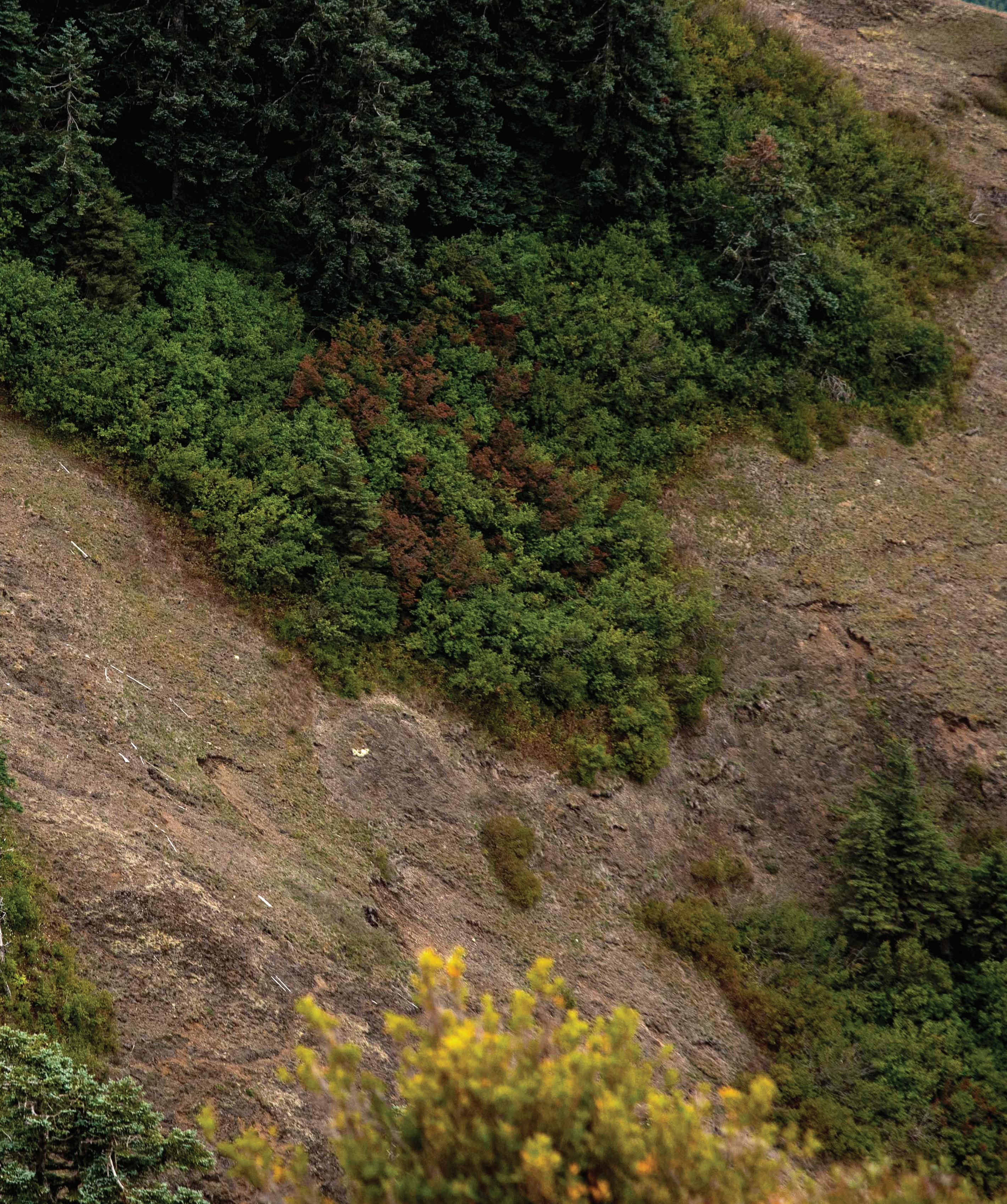
Do & See
Saddle Mountain
Coastal antiques
Foraging through the seasons
Photo essay: Hours by the tides
Do & See Our Picks
Where to spend a day on Our Coast
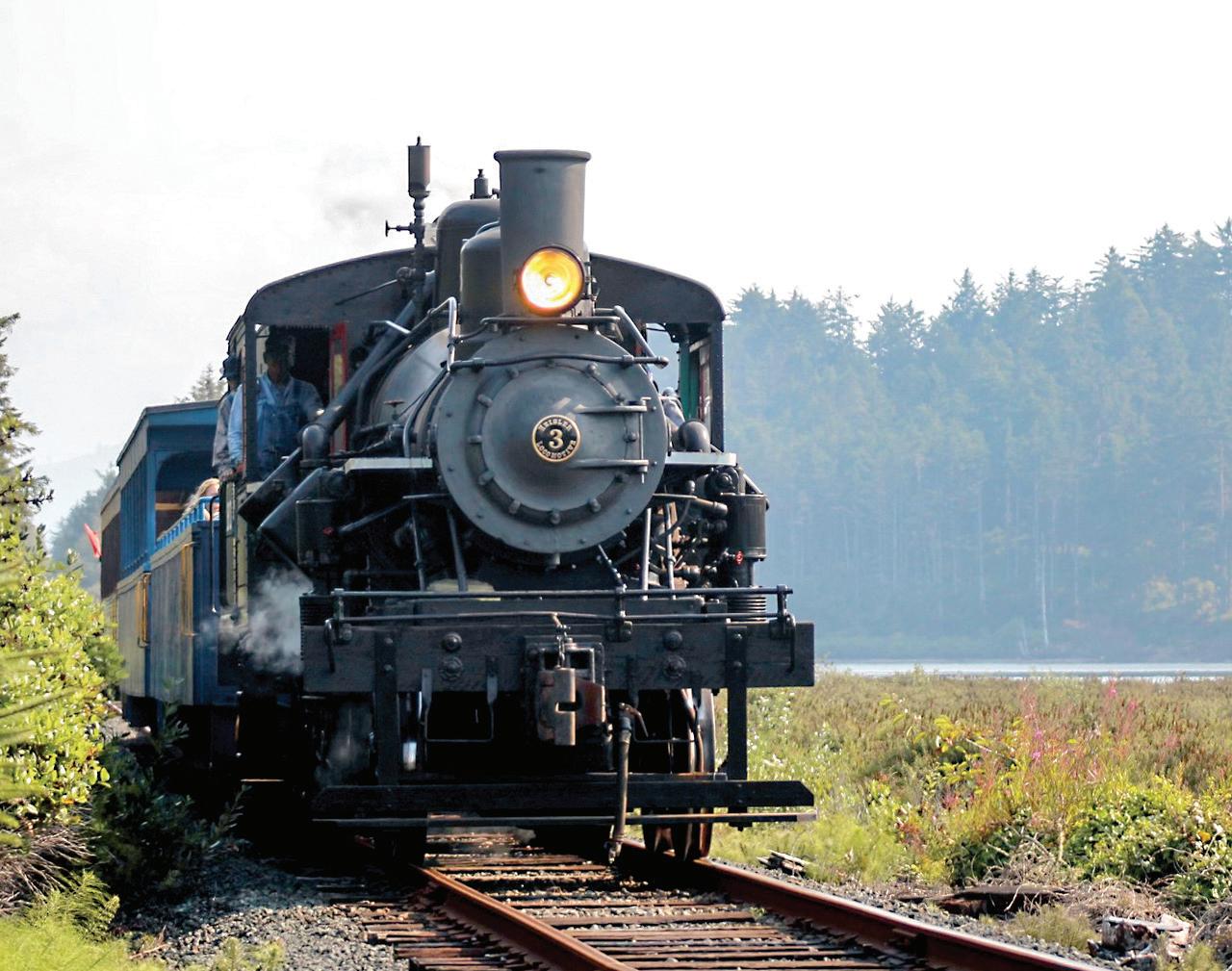
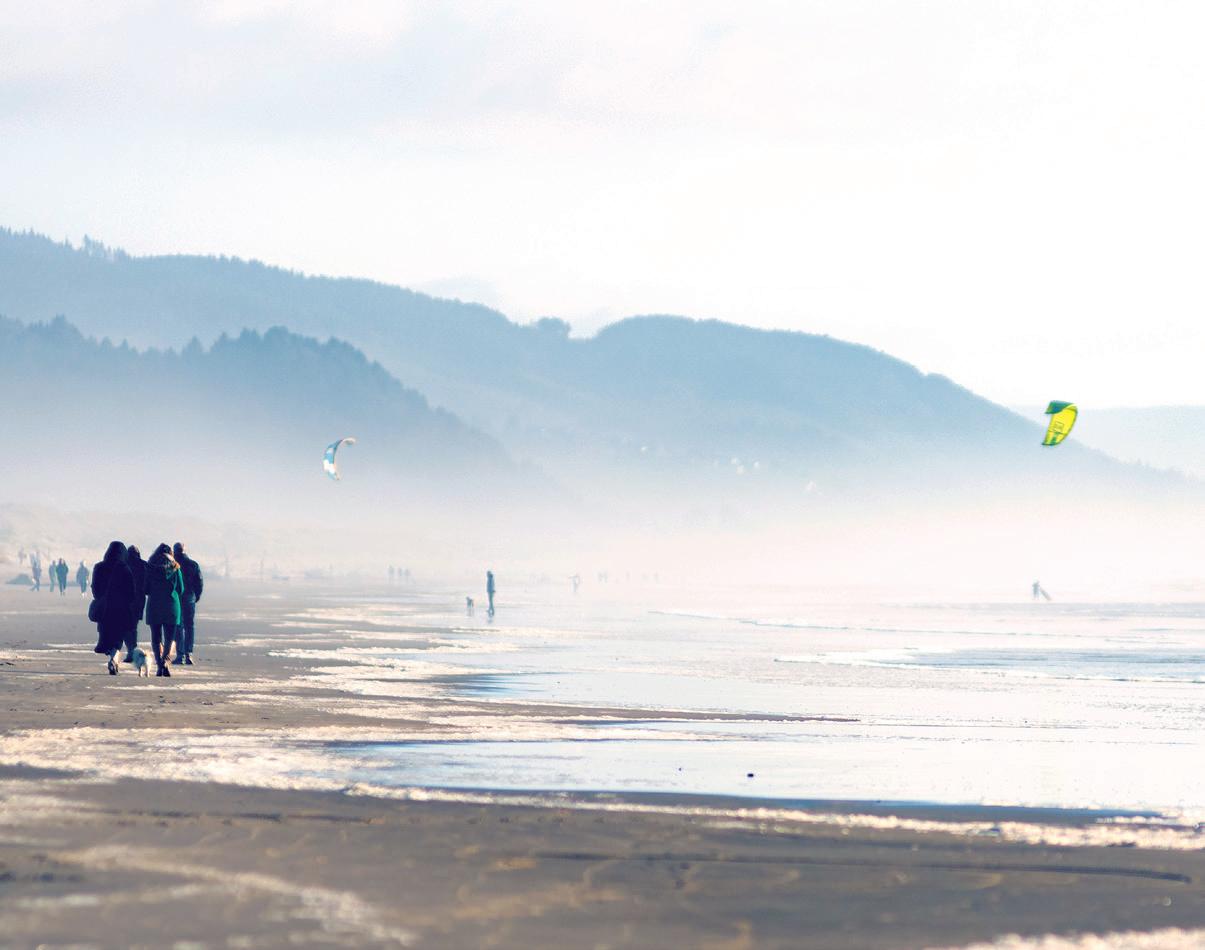
Warrenton
Oregon Coast Scenic Railroad
By Emily Lindblom
Passengers of all ages peer out the windows of a vintage locomotive as they pass by views of Tillamook Bay, past lakes and beside the Pacific Ocean along the Oregon Coast Scenic Railroad.
On rides between depots in Wheeler, Garibaldi and Rockaway Beach, they see rock formations, great blue herons, fishermen and enthusiastic onlookers waving at the train.
The railroad offers a variety of rides throughout the year on its vintage diesel locomotives and its authentic steam locomotives.
As its signature ride, the Coastal Excursion is available from May to September and offers a 90-minute round trip. Evening journeys include the Moonlight Train, which is limited to ages 21 and over.
In the fall and winter, the railroad offers a family-friendly fall excursion, Halloween Coast Train and Candy Cane Express. When the days start getting longer and flowers begin to bloom, the railroad begins its spring excursion.
In addition to taking in the scenery, passengers get to learn about the history of the area, information about local wildlife and the importance of environmental conservation.
The Southern Pacific line was built between 1906 and 1911. The Port of Tillamook Bay later bought it and used it as a freight railroad until 2007, when a dramatic storm wiped out its connection to Portland.
The Oregon Coast Scenic Railroad founder, Scott Wickert, and volunteers had already started operating the tourist attraction with a steam train in 2003. Since the Great Coastal Gale of 2007 left the Tillamook branch isolated, it became the sole organization to use the line.
Now, recreational rides have grown in popularity, offering passengers an experience of going back in time to the era when train travel was in its prime.
Discover Paragliding
By Rebecca Norden-Bright
There is perhaps no better way to see the North Coast than from the air — and with the help of colorful paragliding “wings,” you can experience both spectacular views and the exhilarating freedom of propelling yourself to flight.
Paragliding, often described as the simplest form of human flight, is similar to skydiving with parachutes, but with the aim of staying in the air for extended flights. Paragliders are inflatable wings that can be packed down to fit in a backpack. When unpacked, they inflate to carry the rider across dunes or down steep hills.
The sport has long been popular in Europe, but has slowly grown a dedicated fan base in the United States — and the largest paragliding school in Oregon is right here on the North Coast.
Based on Sunset Beach in Warrenton, Discover Paragliding offers opportunities to try the sport for the first time or practice more advanced skills.
Brad Hill launched Discover Paragliding in Yoncalla in 1997, and was soon joined by his wife, Maren Ludwig — another paragliding instructor — who he met on the Oregon Coast. They soon married and became Discover Paragliding’s instructional team.
In 2002, the business relocated to Sunset Beach, where it’s stayed since. Now, those eager to carry out their dreams of flight can do so with sweeping views of dunes, headlands and the Pacific Ocean.
Hill and Ludwig are both master rated pilots, the highest certification issued by the U.S. Hang Gliding and Paragliding Association.
At Sunset Beach, there are a range of options for all types of fliers, including a solo two-day introductory course and a four-day or five-day beginner training program, as well as advanced special skills courses for more experienced pilots. Discover Paragliding also offers tandem instructional flights for those who prefer company in the air.
14 Our Coast Magazine 2024
Garibaldi
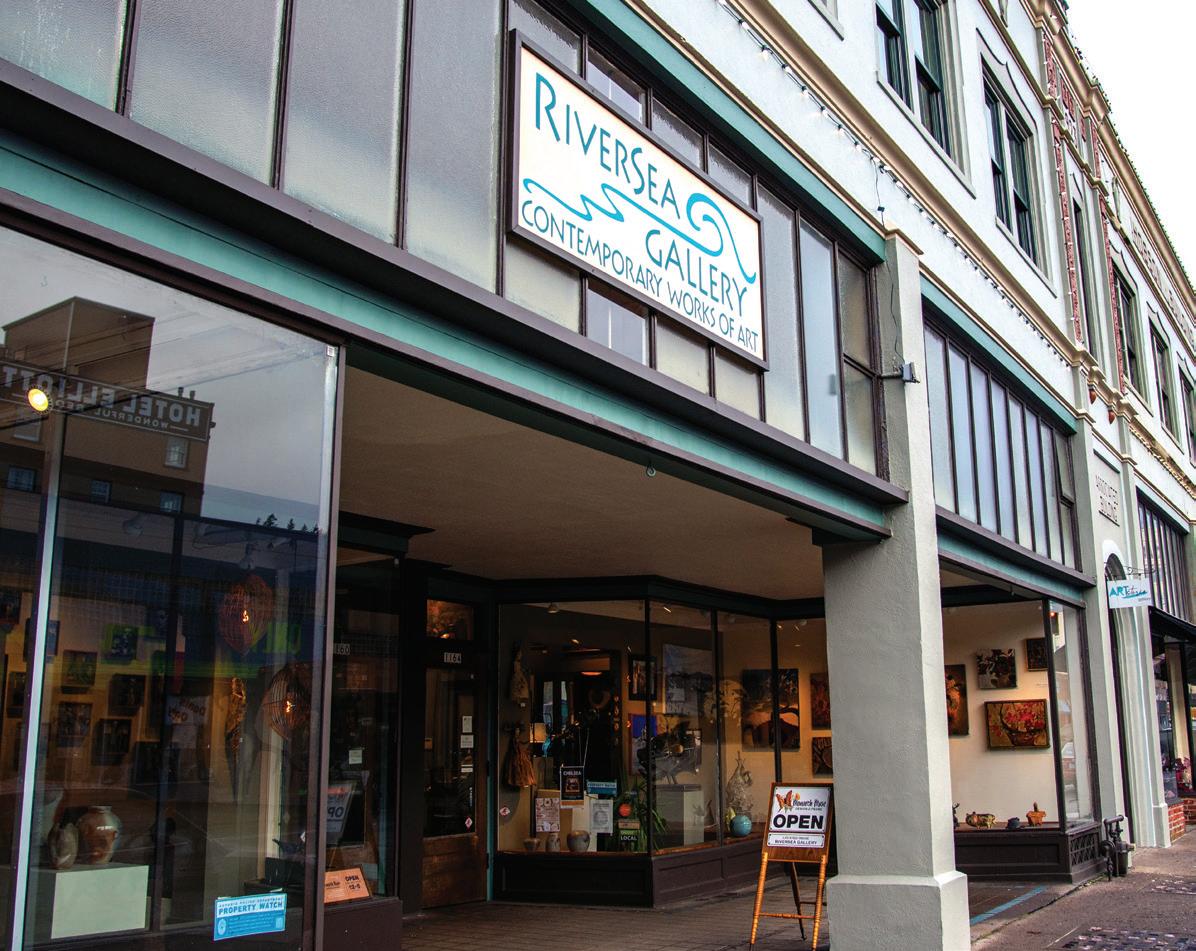
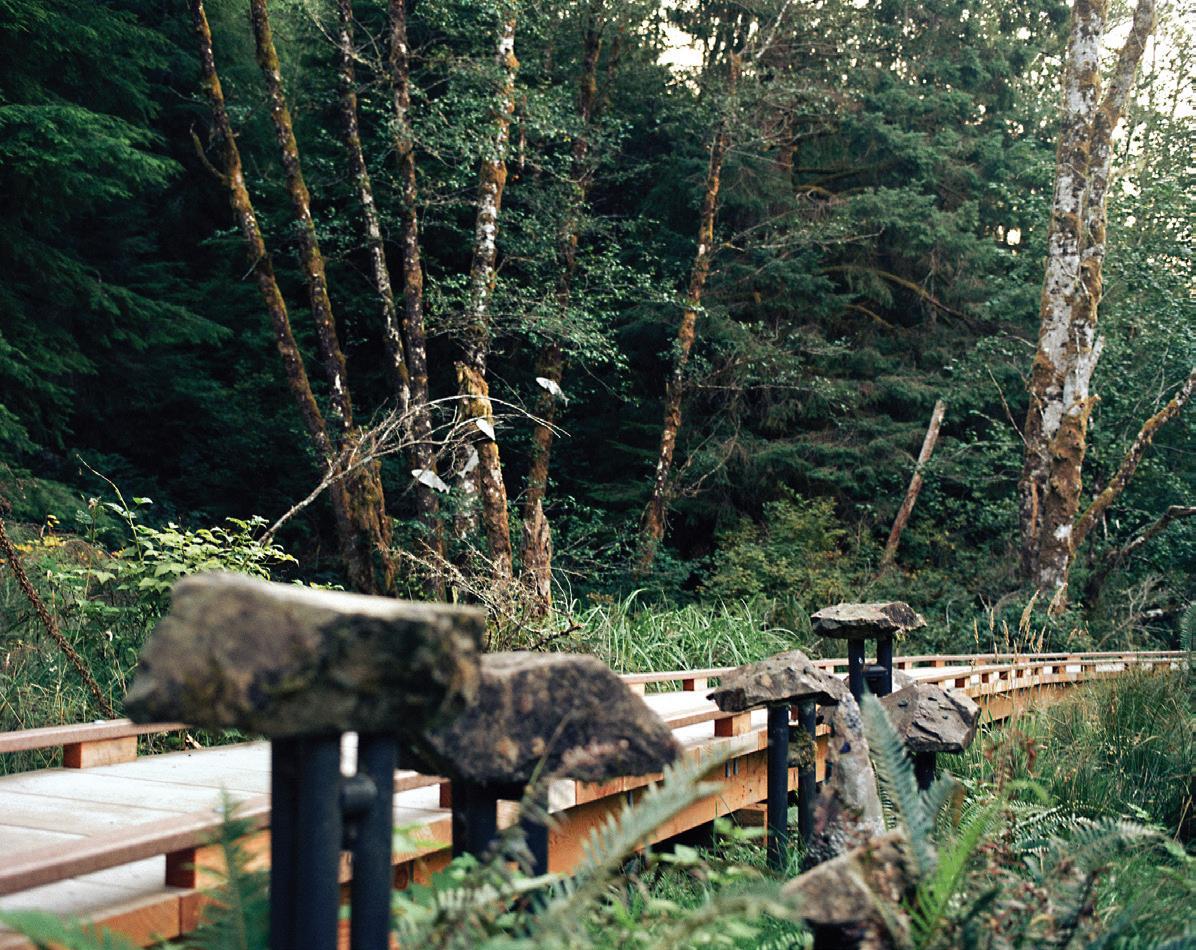
Astoria
RiverSea Gallery
By Marianne Monson
Duck into RiverSea Gallery on Astoria’s Commercial Street to be immersed in a vibrant mélange of artistic styles and mediums, inviting regardless of the weather outside.
Housed in the art deco Copeland Building — one of the first built after the Great Astoria Fire of 1922 — the gallery’s collection is as unique as the space that houses it.
Opened by owner and curator Jeannine Grafton in 1997, RiverSea Gallery is now at the nexus of Astoria’s thriving arts scene. According to Grafton, the gallery’s goal was to present compelling fine art, craft and jewelry by Northwest artists not yet represented on the North Coast.
“From the beginning, it was important to show these works in a welcoming space that invites interaction and discovery,” Grafton said.
RiverSea Gallery now showcases original art and fine craft by more than 200 established and emerging regional artists. The space has been expanded twice to include 4,000 square feet of exhibit space.
The gallery features a variety of mediums including painting, printmaking, photography, sculpture, ceramics, woodworking, glass, fiber arts, books and furniture. A dedicated section of the gallery presents a selection of artful jewelry by Northwest designers. Price points are variable, offering an accessible entry point to art collecting.
The collection changes often, with rotating monthly exhibitions that feature individual artists or themed group shows in the central exhibition gallery and alcove space. Show openings for Astoria’s monthly art walk often include live music. The gallery also regularly hosts events such as readings, performances and fundraisers.
Iconic work from the North Coast includes the muted maritime scenes by watercolorist Noel Thomas, whimsical sculptural assemblage by Stephanie Brockway, bold coastal monotypes by Stirling Gorsuch and absurdist, elegant oil paintings by Jill McVarish.
Grafton’s careful curation and skilled presentation have brought her a loyal following of repeat visitors, locally and beyond. Centered in the midst of Astoria’s thriving downtown and open seven days a week, RiverSea Gallery is a place to seek creative respite and inspiration.
Naselle
Willapa Art Trail
By Rebecca Lexa
This short trail within the Willapa National Wildlife Refuge winds its way through restored tidal wetlands that were once cut off from Willapa Bay by the construction of U.S. Highway 101.
That was until a new culvert reconnected this fragile habitat to life-giving waters a few years ago.
To celebrate the restoration, students in the University of Washington’s Public Arts program created an array of pieces highlighting the intricate relationships wildlife have with the wetland ecosystem, from cutthroat trout working their way up the stream to caddisflies creating intricate portable homes.
Metal sculptures and wood carvings portray these beings and others while complementing the visual treasure of the nature surrounding this trail. Keep an eye out for ceramic mushrooms added for the trail’s reopening last year.
While you’re enjoying the art, don’t forget to explore the natural features. In spring, the ponds near the trail are a great place to watch rough-skinned newts spawning, and cutthroat trout may return to the stream in fall.
Great blue herons, common ravens and belted kingfishers are just a few of the birds that make this beautiful place their home.
The wooden boardwalk is wheelchair accessible and an out-and-back trip is about 1/4-mile, with a couple of benches along the way to rest and enjoy the scenery.
Those wishing for a more rugged hike may connect with the ascending Cutthroat Climb trail. This round-trip, 1-mile loop can be narrow and is rife with roots and rough spots, but is worth it for the interpretive signs along the way, the stone labyrinth on the north end of the loop and views of a structurally complex conifer forest.
As with the rest of Willapa National Wildlife Refuge, dogs are not allowed on this trail. Wear sturdy footwear, especially if intending to hike Cutthroat Climb, and avoid forested areas of the trail during windy weather.
While the Willapa National Wildlife Refuge headquarters may have relocated from the east side of Willapa Bay on U.S. Highway 101, these trails continue to showcase the best this wild locale has to offer.
DiscoverOurCoast.com 15
Artistry. Outdoors. Adventures. Pastimes.
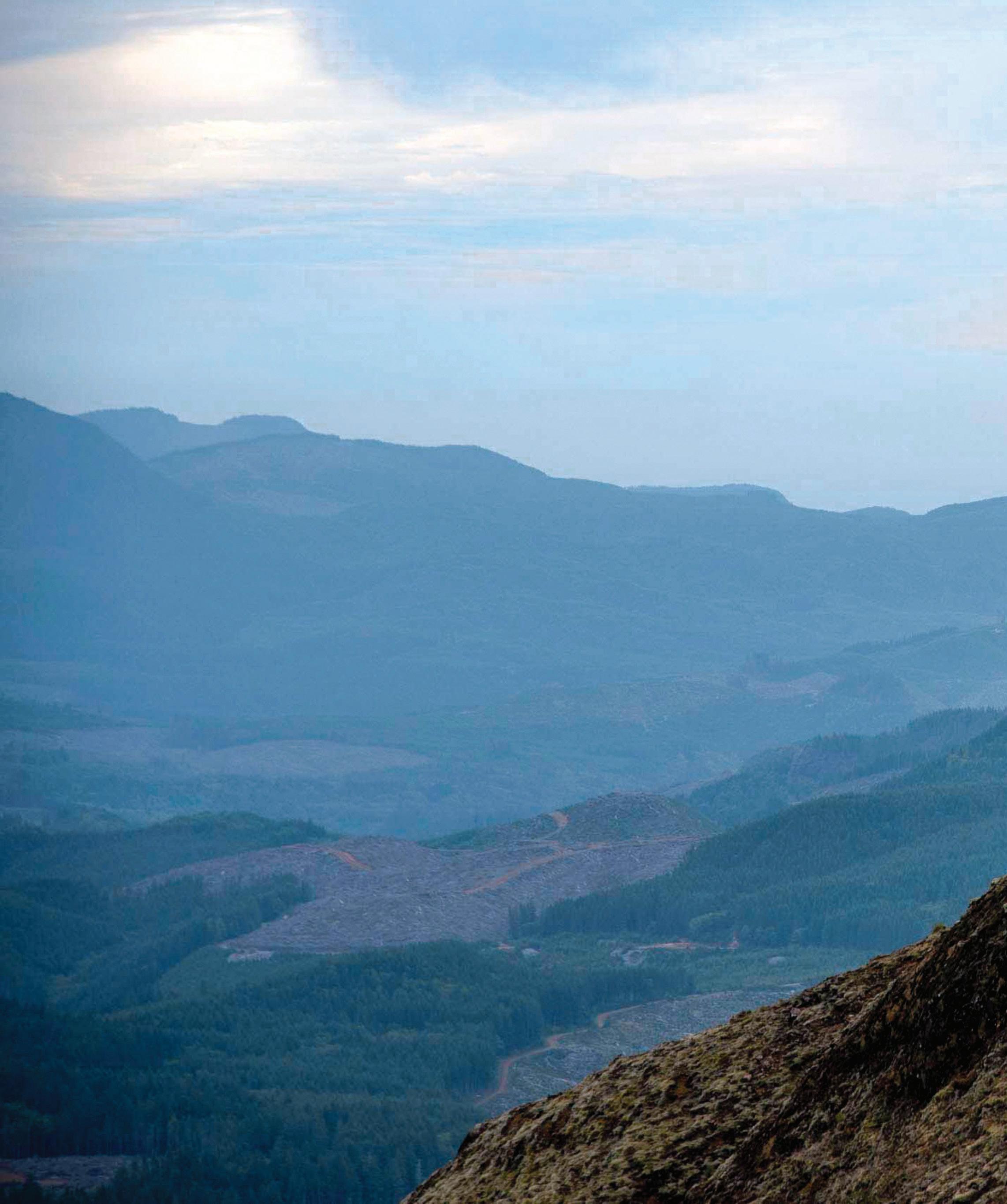
Saddle Mountain
After extended closure, a beloved trail is in bloom
Words: David Campiche • Images: Shanna Madison and Lissa Brewer
On a summer day when fog clings to the higher peaks above the Oregon Coast Range, Saddle Mountain ghosts out of the clouds.
The peak is a handsome vista, the tallest in Clatsop County, a nudge above 3,200 feet.
Do & See

On a clear day, Mount Hood, Mount St. Helens, Mount Adams and, of course, Mount Rainier rise above the clouds. The Pacific Ocean is just to the west, endless somehow in its water world, and Tillamook Head overlooks the grand vista close by.
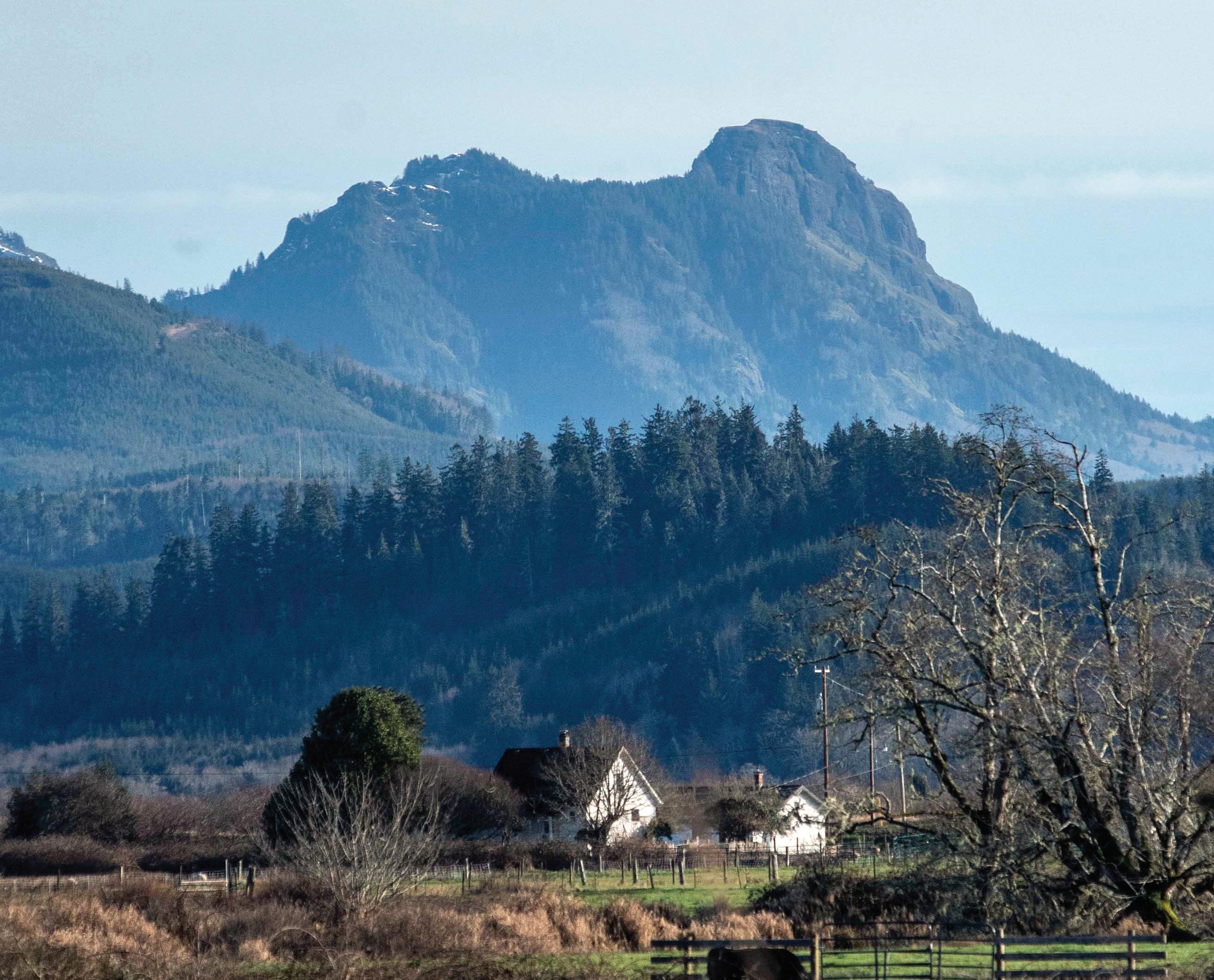
There is a park surrounding the peak, the Saddle Mountain State Natural Area. Drive 7 miles up a winding road from U.S. Highway 26, lined with handsome evergreen trees, to reach the trailhead.

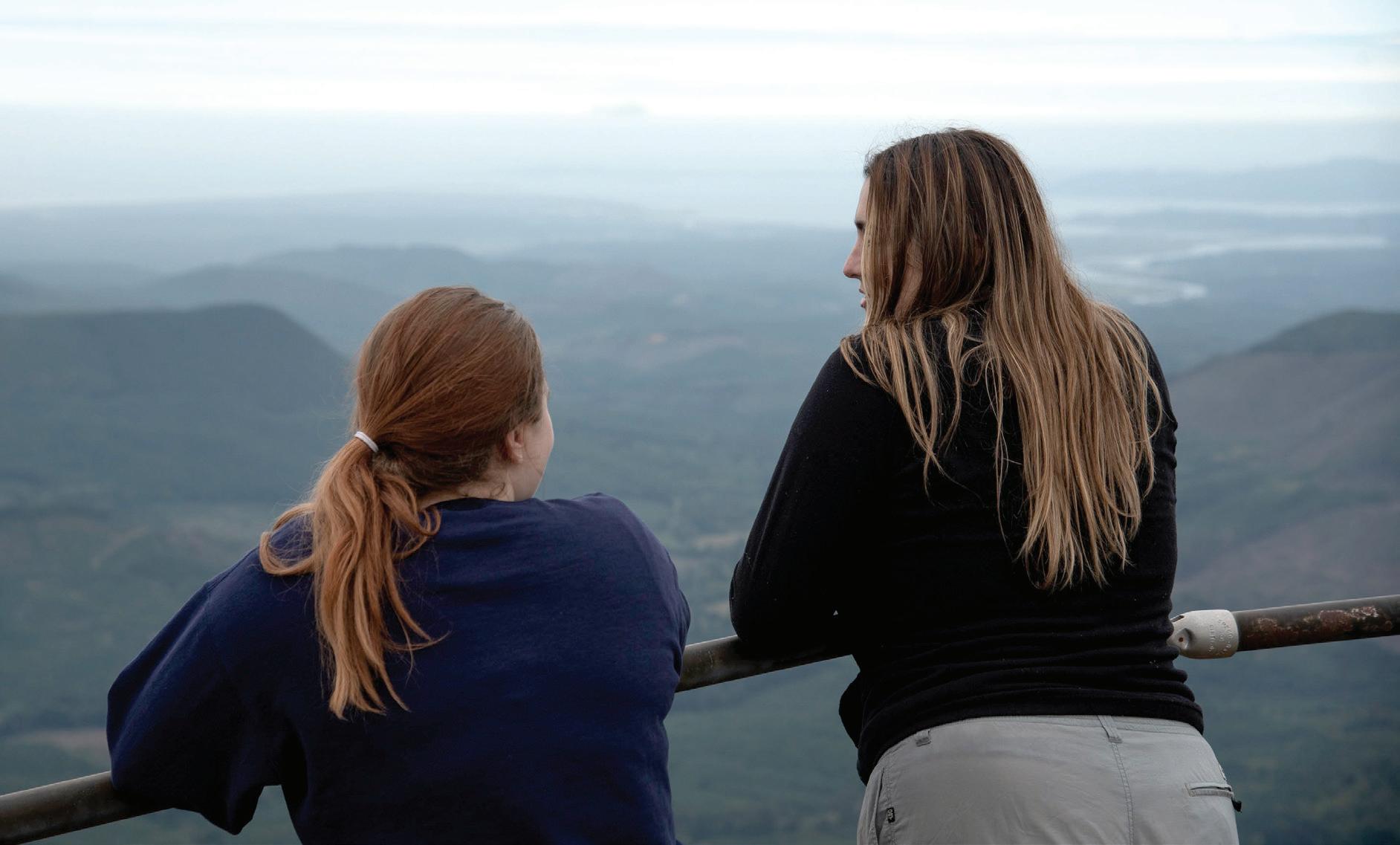
Do & See
Final ascent
Hikers take it slow on the final ascent to the Saddle Mountain summit, a 1,640 foot elevation gain over 2.5 miles.
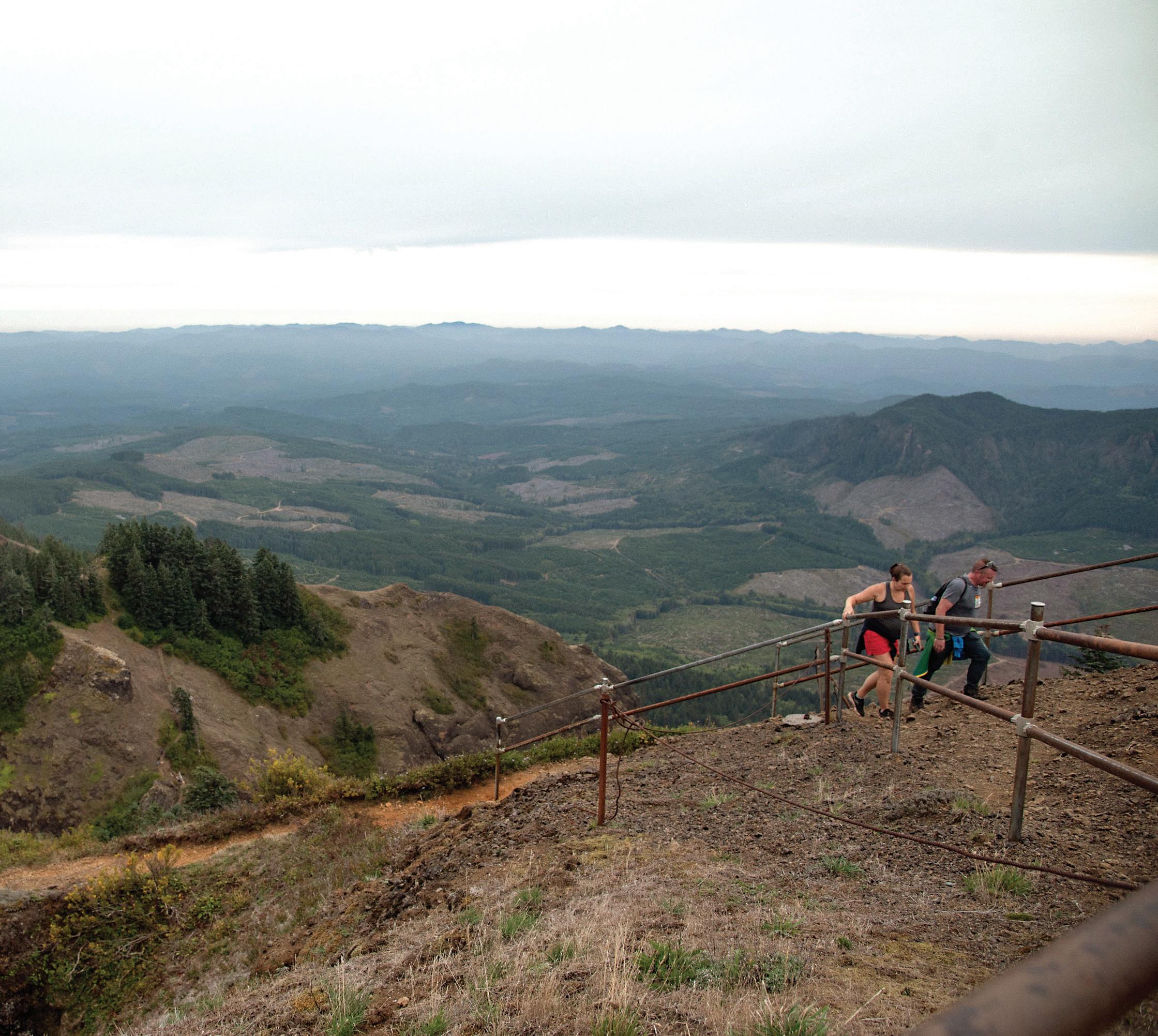
At times, local citizens may take the mountain for granted, as is frequently a human trait. We are busy people, our days full of obligations. We drive by, oblivious to our surroundings. But the mountain and its surrounding park offer a dialogue with nature, in a verdant nest of fir, hemlock and cedar.
The mountain reopened last year after an extended closure. Now, hikers can return to the trail and surrounding park. When occasional snows lay a white cloak over the mountain, one can imagine a poet, scampering for a pad, ink and a brush.
The poet may just write a haiku, something like this: Beneath the peak’s shadow / mountain salutes raven’s flight / eyes ablaze with wonder.
This mountain is alive with some of the rarest and oldest species of wildflowers, lichens and mosses in the state. A few, such as the Saddle Mountain bittercress and early blue violet, can be found in late spring and early summer.
The early blue violet is a favorite of the rare Oregon silverspot butterfly, which was reintroduced to the area in 2018. Add the Cope’s
giant salamander, the Alaska long-awned sedge, the Willamette Valley larkspur and a half-dozen others and this place is home to a rare assembly of flora, fauna and avian life.
Saddle Mountain is rich in surprises.
The trek isn’t the hardest in the region, but requires a good picnic lunch and generates a bit of heavy breathing. As a bird flies, the mountain hears, strong and tall and ancient.
Those brave enough to scale the peak are rewarded by watching a bevy of raptors and tiny songbirds. Listen to their squawks and protests as they scamper for leftovers.
On a clear day, Mount Hood, Mount St. Helens, Mount Adams and, of course, Mount Rainier rise above the clouds. The Pacific Ocean is just to the west, endless somehow in its water world, and Tillamook Head overlooks the grand vista close by.
This mountain was created some 15 million years ago after a series of volcanic eruptions. Lava flows were converted into igneous stone and the mountain was born.
DiscoverOurCoast.com 19
A Sitka spruce tree rises over a lookout along the trail.
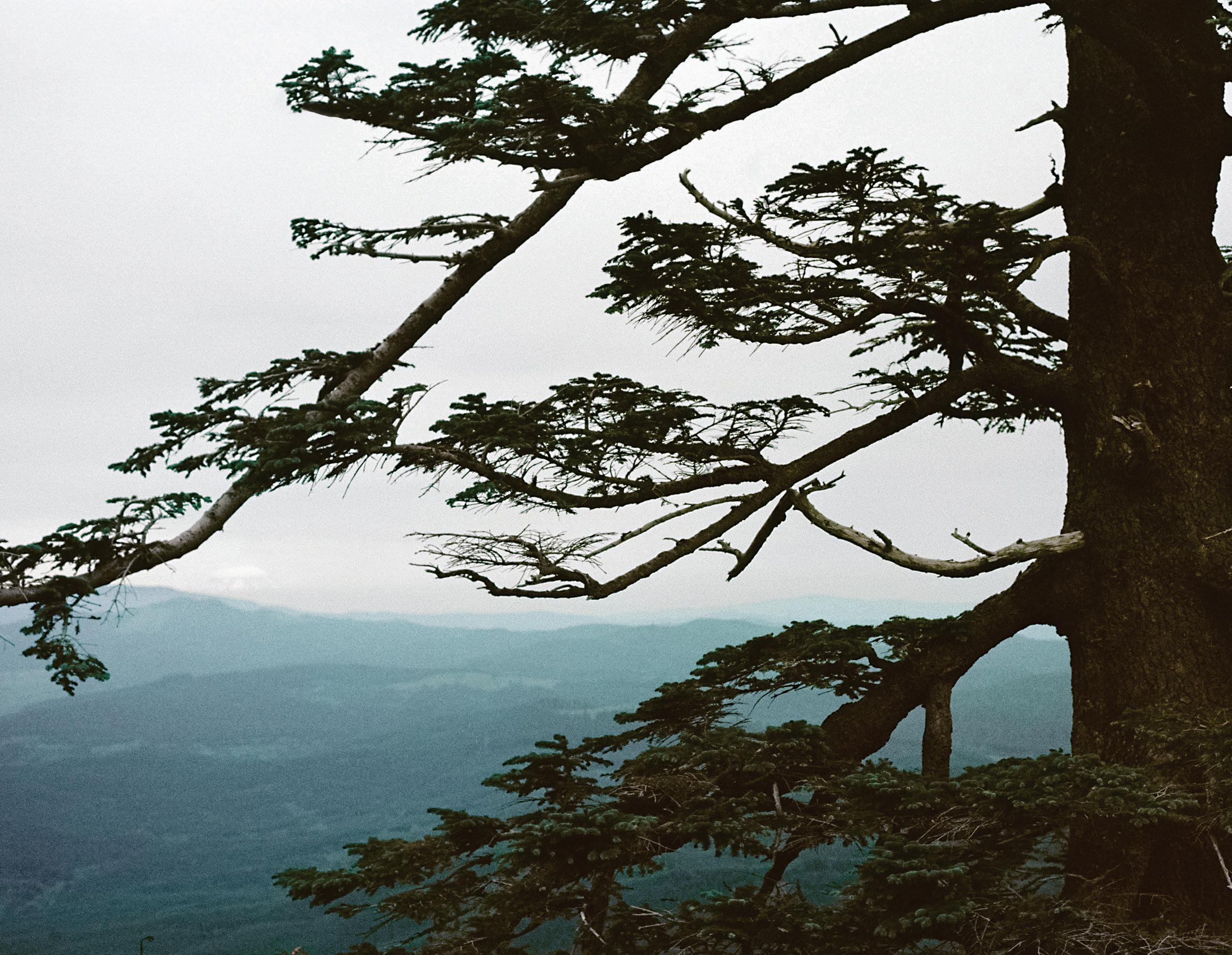
The Chinook and Clatsop-Nehalem people came here first, occupying the seashore for thousands of years. A later newcomer was Capt. Meares, who in 1788 named the mountain Mont de la Selle.
There is a park surrounding the peak, the Saddle Mountain State Natural Area. Drive 7 miles up a winding road from U.S. Highway 26, lined with handsome evergreen trees, to reach the trailhead.
The 2.5-mile trail to the top has seen plenty of foot traffic. In places, it is eroded — with loose gravel and slick detritus — and a traveler must watch their step, but new netting has made footing more stable. Still, it is best to press on carefully and quietly.
Hikers might stumble upon a herd of elk, seen from high above, or a black bear in the distance. Wildlife and birds abound with enough regularity to fill a diary on any bluebird day. And flora and fauna — how many ferns can one count? How many wildflowers? Isn’t this the delight of trekking?
According to a Chinook legend, Thunderbird flew to the top and laid a nest of eggs. They were stolen, rolled down the mountain. In the legend, the eggs were broken open, and the First Peoples spilled out.
Capt. William Clark took another view. It was a cold winter day. The mountain was snowclad: “The after part of the day fair & Cool, fore part of the Day rain hailed & blew hard, The mountain which lies S.E. of this is covered with Snow to day ...”
The soldiers of the Corps of Discovery were hungry. Clark recorded his observations and then turned to another reality. His men were starving. First in their minds was food, or lack of it.
And again, on March 5, 1806, “the hunters informed us that the Elk is tolerable plenty near the mountains about nine or ten miles distant.” This was Saddle Mountain, barely visible through the rain.
Aren’t we all explorers when we strike out on a wet winter day and climb to the summit of this ancient mountain?
With luck, Saddle Mountain will remain for another dozen eons, standing proud over our lives, a precipice of distinction. If so, we will still climb its broad shoulders and marvel at Mother Nature.
Do & See 20 Our Coast Magazine 2024
Sitka spruce
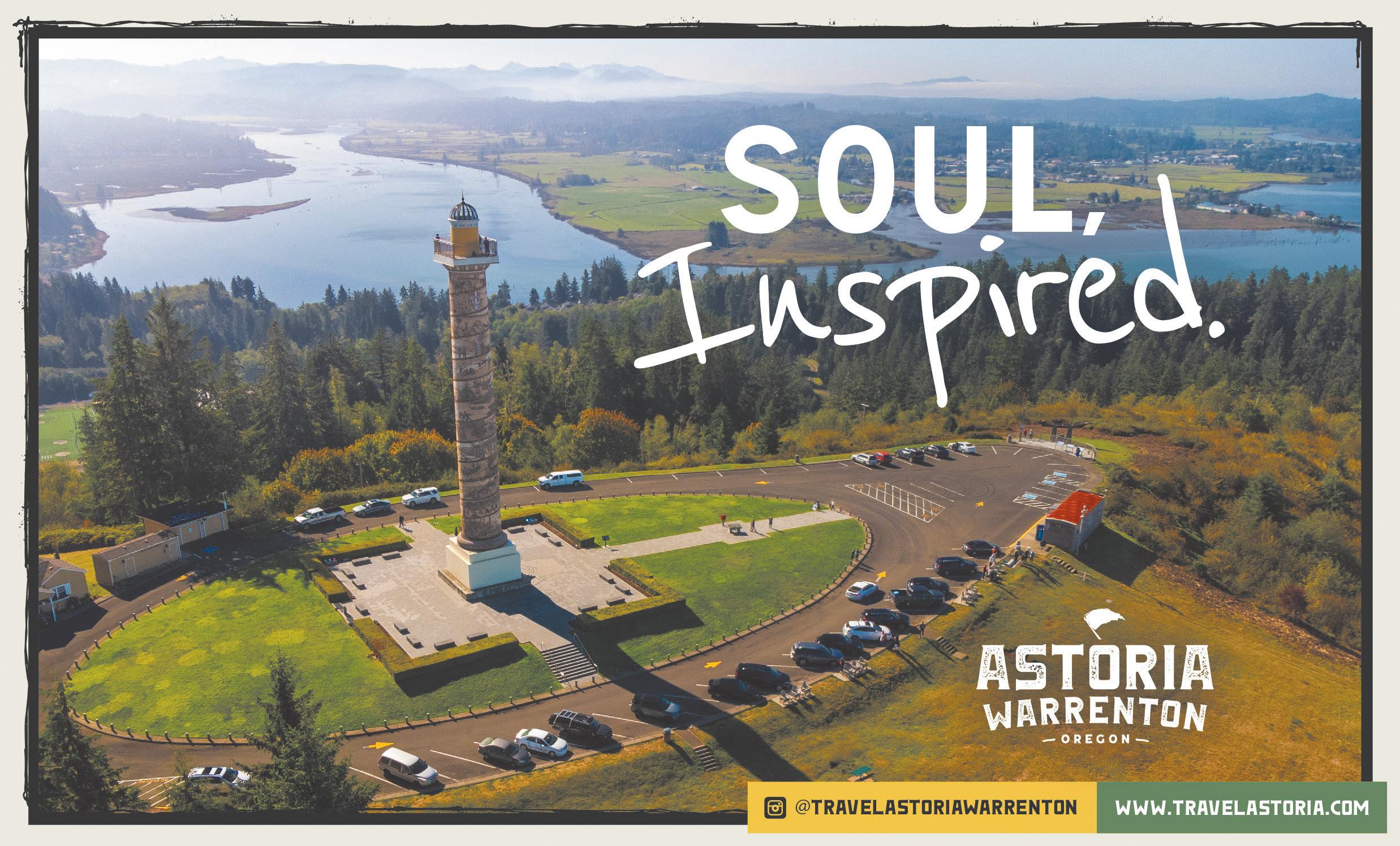

DiscoverOurCoast.com 21

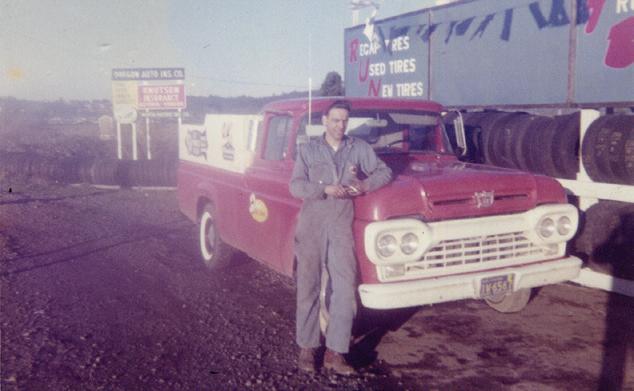

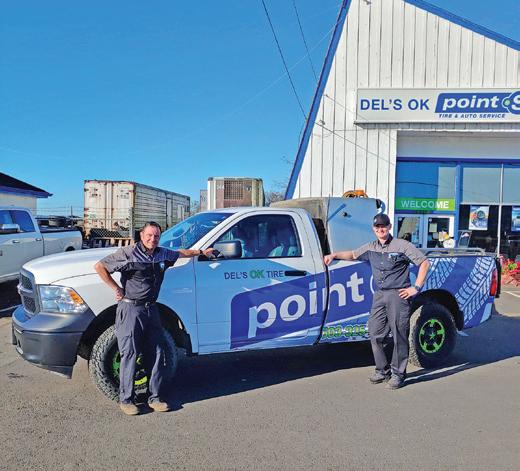

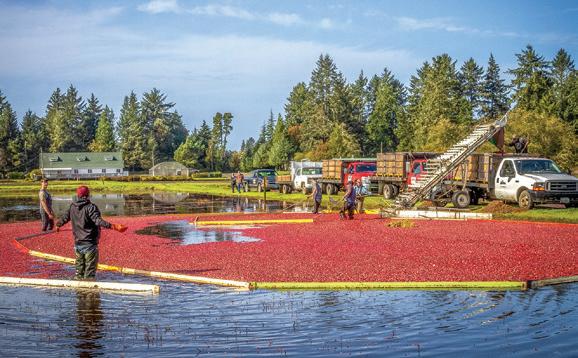

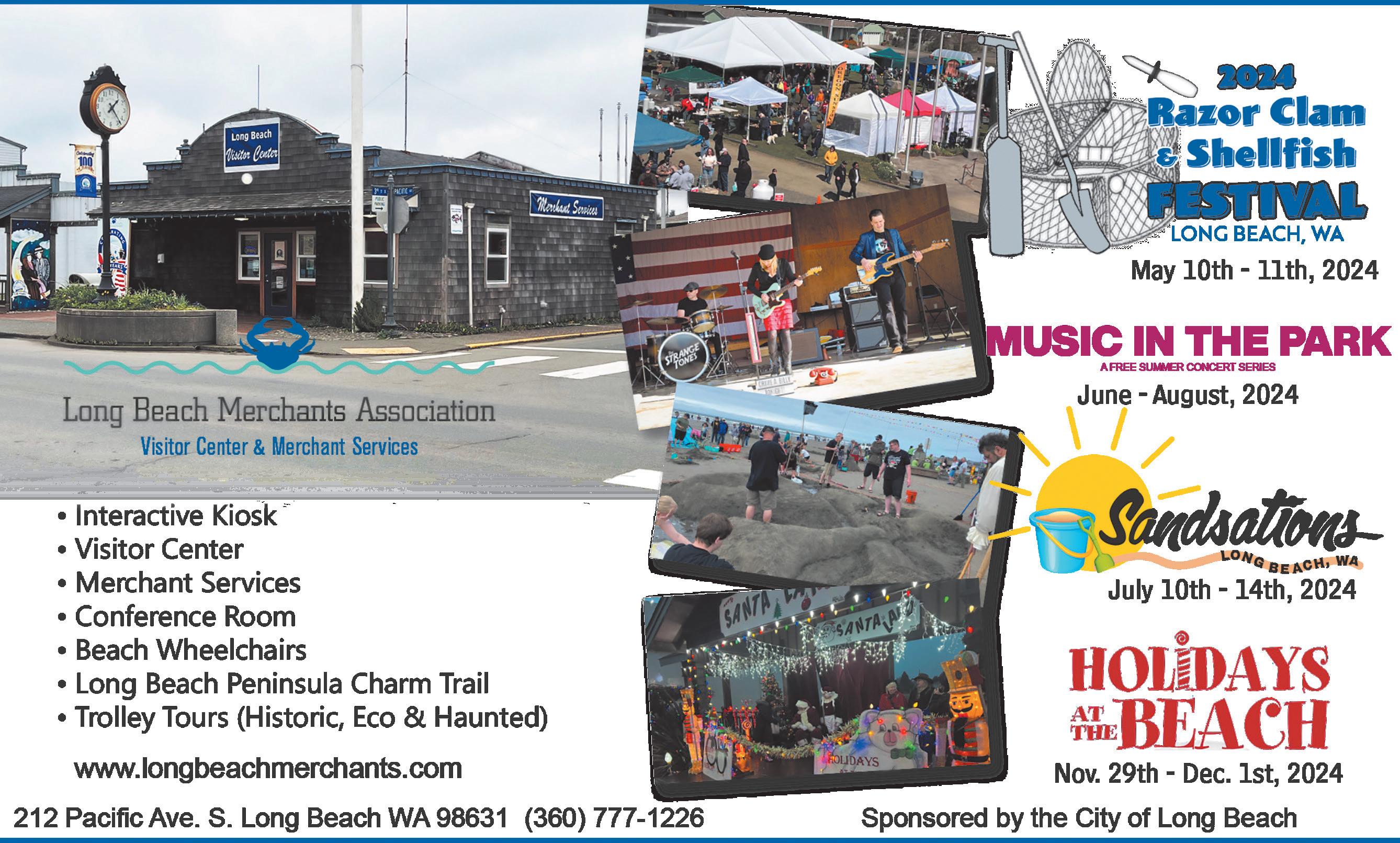
22 Our Coast Magazine 2024 Store hours: Mon-Fri, 8-6; Sat. 8-4 Closed Sunday Same loca l ow ne rs , friendly se rv ic e an d guarante es on wa rranties Ge t to The Point. Expert Service. Guaranteed DEL’S O.K. TIRE Trust your vehicle safety to the professionals at 503-325-2861 35359 Hwy 101 Business • Astoria 76 years of the same local owners putting you first! Lewis & Clark Commemorative Silver Dollars Clatsop COIN 211 12th Street ~ Astoria, OR 97103 USA 503-298-3898 ~ clatsopcoin@gmail.com www.ClatsopCoin.com 2907 Pioneer Road • Long Beach, WA (360) 642-5553 www.cranberrymuseum.com e-mail cranberries@willapabay.org Pacific Coast Cranberry Research Foundation Cranberry Museum & Gift Shop Free Admission Watch the Cranberry Harvest in October Open Daily 10-5 April – December Open Fri-Mon 10-4 January-March


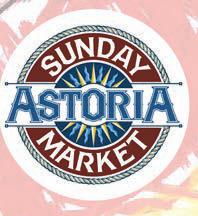
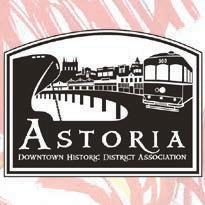


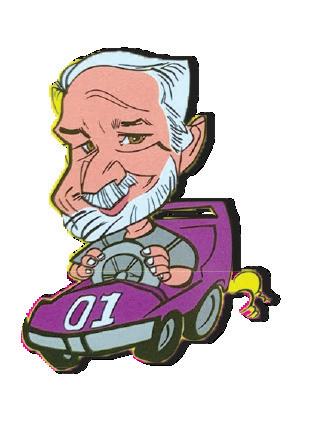


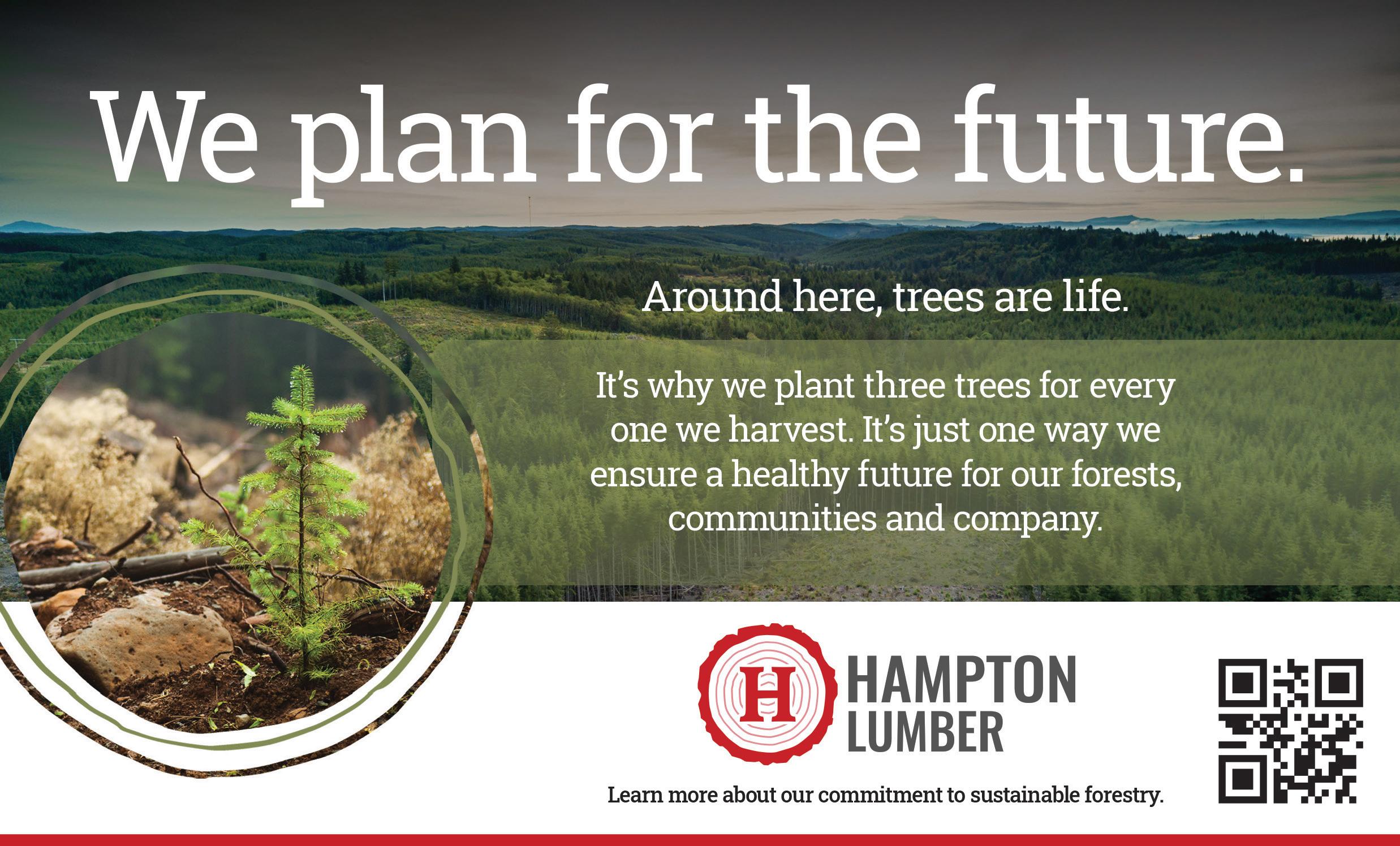
DiscoverOurCoast.com 23 Astoria Sunday Market Always Local. Always Fun. Sundays Downtown Astoria, OR 10am to 3pm Rain or shine 5/12 - 10/13/24 The Astoria Sunday Market is a program of the Astoria Downtown Historic District Association. www.astoriasundaymarket.com HWY 101 (1/4 mi South of Seaside) 2735 S. Roosevelt Dr. • 503-738-2076 Seasonal and limited hours November-February. For more info: www.captainkidamusementpark.com SEASIDE, OREGON OPEN DAILY 11 am to 6 pm GO KARTS WITH STADIUM SEATING 18 HOLE MINI GOLF FAMILY COASTER AND MORE AMUSEMENT RIDES! GEM MINING
Antiques COASTAL
The Columbia-Pacific region has dozens of antique and vintage shops that are home to ever-changing collections. But without a roadmap, it can be intimidating to know where to begin.
Start in Astoria, below hillsides of historic homes, then head north, as far as Ocean Park, to find maritime artwork and vintage books at Long Beach Peninsula Trading. Or, head south to explore the many stairwells and rooms of Wheeler Station Antiques.
Vintage Hardware
ASTORIA
As the oldest European settlement west of the Rocky Mountains, Astoria has many historic homes. This Commercial Street shop stocks pieces to fill their interiors — antique furniture, lighting and hardware items.
Much of the stock is locally sourced from Clatsop and Pacific counties. In addition to home goods, there are also troves of old pictures, records and maritime artifacts, as well as collections of jewelry and clothing.
The shop is housed in the former J.C. Penney building, in a large space that has continued to grow since owner Becky Johnson opened it more than 15 years ago.
Some items are now posted online. A sample of offerings: an Eastlake dresser, an antique bakers’ cabinet, a library card catalog cabinet and a vintage Regatta board game.
Vintage Hardware
Much of the stock at Vintage Hardware in Astoria is locally sourced from Clatsop and Pacific counties.
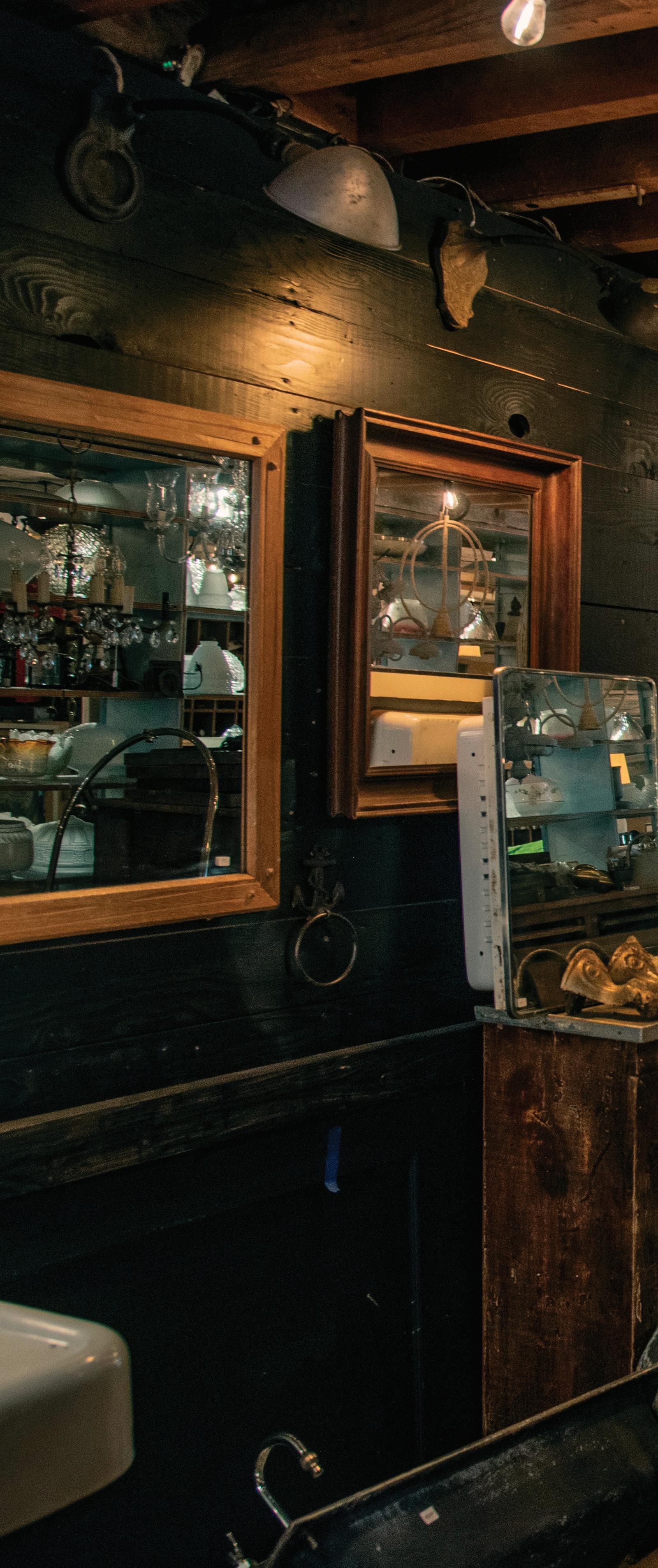

24 Our Coast Magazine 2024 Do & See
Words: Jaime Lump • Images: Shanna Madison
When visiting small, historic towns along the coast, antique and vintage shops are a must. So much history can be packed into a well-curated collection of treasures, relics and curios. Each object holds a story, just waiting to continue its journey.

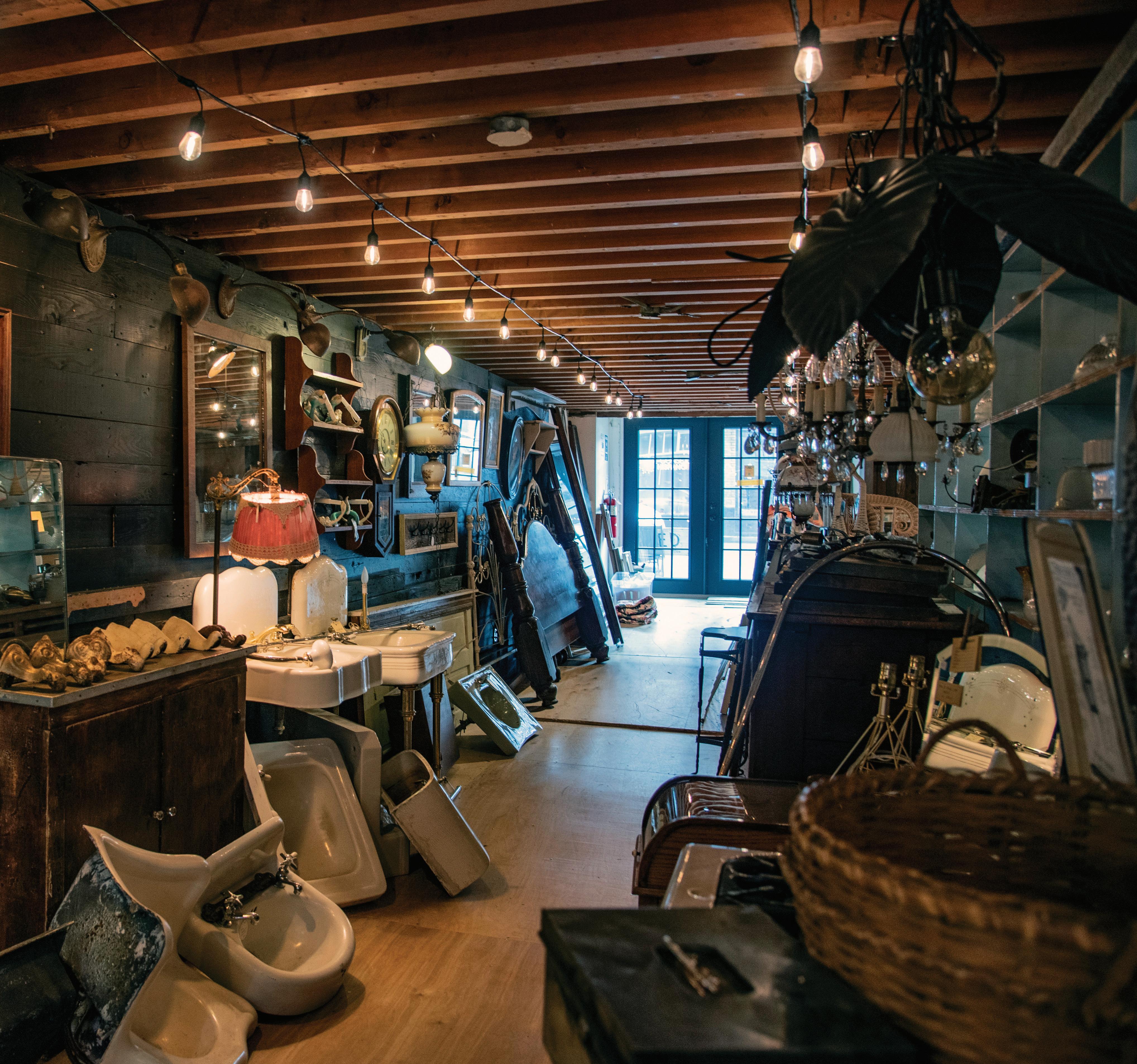
DiscoverOurCoast.com 25
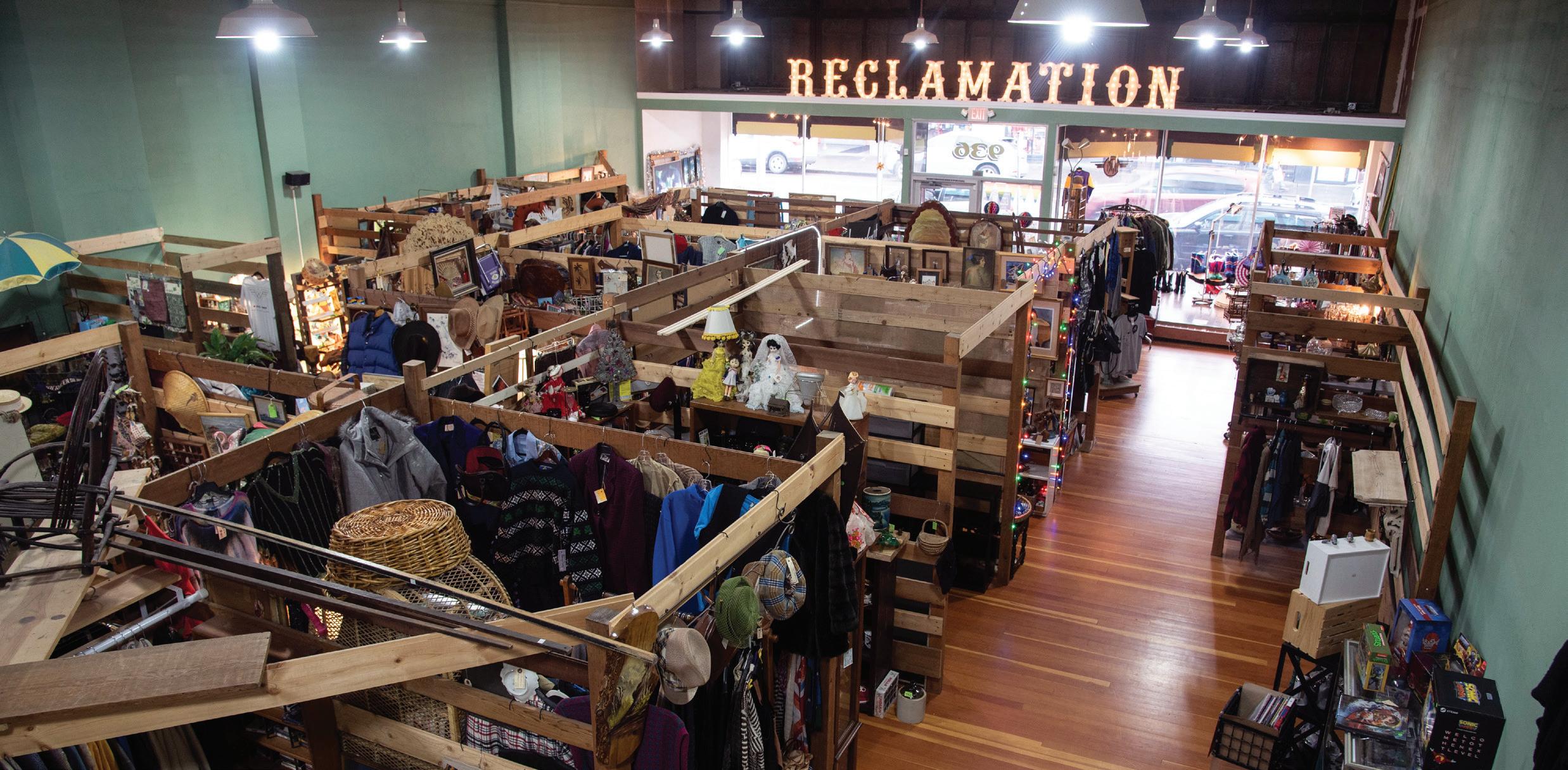
Reclamation Marketplace
Also on Commercial Street, arranged windows greet visitors with style and interior design ideas at this shop, enticing them to look around. Golden light washes in through large panes of glass.
In 2019, this century-old building — which once operated as a bank — was transformed into a vintage collection.

The space is separated into several booths, including the old bank vault, that are managed by over 20 different vendors.
Home goods and accent furniture span decades of different regional tastes. Visitors can find mugs, dishes, lamps and wall decor. Or, stock a kitchen or dining area with vintage Pyrex and handmade ceramics.
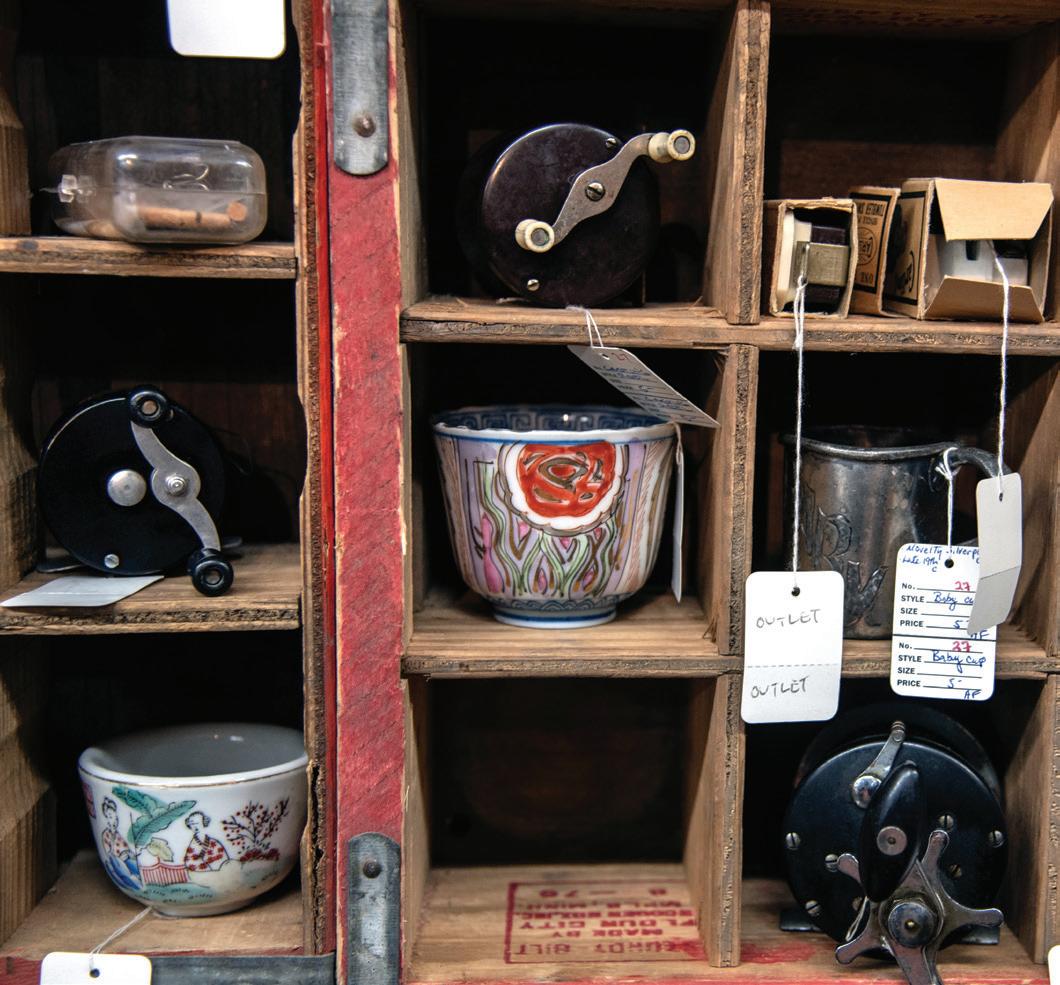
While home goods are a specialty, visitors will find many other surprises strolling from booth to booth, from wool sweaters and buttondowns to customizable leather western belts or handmade crocheted tops and hats.
Upstairs, between two rooms offering vintage and handmade clothing, the halls are lined with locally-made artwork.
Phog Bounders Antique Mall ASTORIA
Housed in the historic former Astorian building, this shop on Marine Drive brings visitors into an exhibit of historic nautical artifacts — propellers, steering wheels and ship bells that are sure to spark conversation about the area’s maritime past.
With decades in business, Phog Bounders is a pioneering Astoria antique mall that features over 50 vendors, with an assortment of local history and curiosities from around the world.
Here, find historic anvils and Columbia River sea glass, or goods and furnishings to match home styles from Victorian to ranch.
Browse the fine china and midcentury modern dinnerware, discover a new tea cup pattern or maybe find a missing piece to a collection. One booth offers restored cast iron cookware, ready to serve up a breakfast skillet or be placed on display in the kitchen.
Find antique and vintage jewelry in cases full of gems, handmade necklaces, costume earrings and rings. Antique hunters may even find an exact match to a ring they lost long ago.
There is also an abundance of crystalware and silver-plated servingware, old toys, cameras and suitcases that invite one to travel through memories or contemplate the experiences of past generations.
26 Our Coast Magazine 2024 Do & See
ASTORIA
North Coast Antique Mall

SEAVIEW
A short drive from Astoria, Seaview is home to historic houses and buildings that line quiet streets, drawing visitors to a slower pace of observation and contemplation.
Antiques dealer Martin Martinez’s love for old buildings was his gateway into the world of antiques. North Coast Antique Mall is housed in a historic lumber yard that is now one of the largest spaces of its kind in the region.
Martinez sees each shopper’s visit as an experience. If antiquing was choosing your adventure, the quest at North Coast Antique Mall is the expedition rather than the prize.
Exploring the large building nearly never ends. Every turn somehow keeps going and going, with furniture, artwork, local nautical artifacts and items from around the world.
Martinez gives his vendors the flexibility to curate their booths — bringing in objects that are “new, old and everything in between.”
“I love doing this,” said Michelle Hutton, one of Martinez’s vendors, “you can’t come here once and think, ‘Oh, I’ve seen it.’” Hutton began dealing in antiques only a few years ago as a way to find new homes for items from her family’s estate. Her booth features items from many decades and is constantly changing.
“New things are always coming in,” she said.
Seaside Antique Mall
SEASIDE
Antiquing goes beyond collecting and keeping treasures behind glass cases. Many items have proven their durability by standing the test of time and certain older items, like appliances and furniture, were built to last — many designed to be passed down from generation to generation.
Repurposing antiques has grown in popularity with younger visitors, explained Jodie Mathison, owner of Seaside Antique Mall. “They’re wellbuilt and can be used for a long time,” she said.
Repurposed antiques can pull generations together through memory. A mixer or a table may remind some of their mother or grandmother, and adding those pieces to the home places a personal touch of comfort.
So much can be learned from old relics and objects. As Mathison has gotten to know her customers and the many dealers who stock the booths in her store, she has gained knowledge on just about every type of antique. When it comes to specific antiques, “collectors know everything,” and are more or less experts in their interests.
The shop spans thousands of square feet, curated to avoid too much of the same thing. Here, visitors will find everything from historic planers to toy cars to glass floats.
From sharing childhood stories to explaining the history of certain objects, Mathison learns something new every day.
Repurposed antiques can pull generations together through memory. A mixer or a table may remind some of their mother or grandmother, and adding those pieces to the home places a personal touch of comfort.

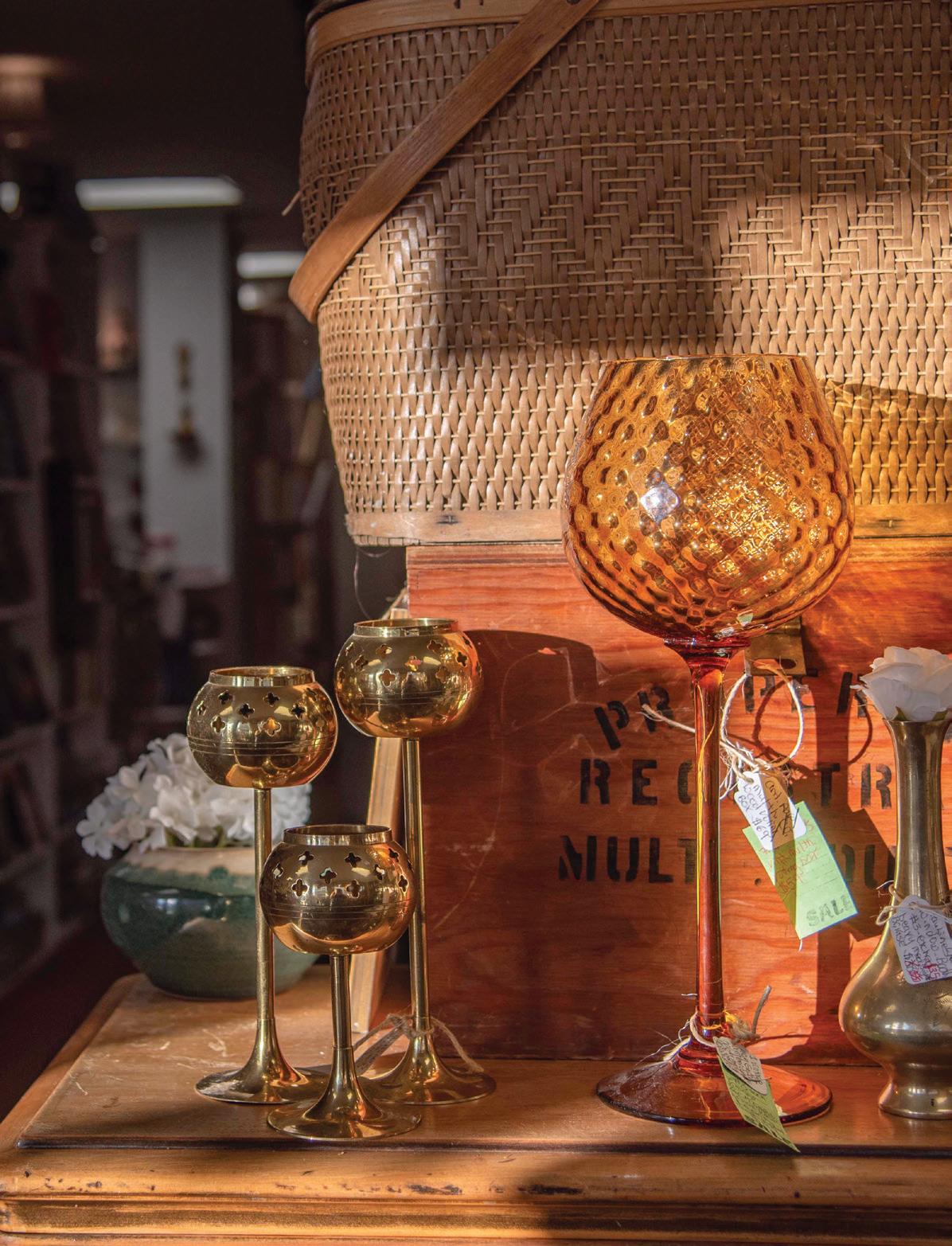
DiscoverOurCoast.com 27
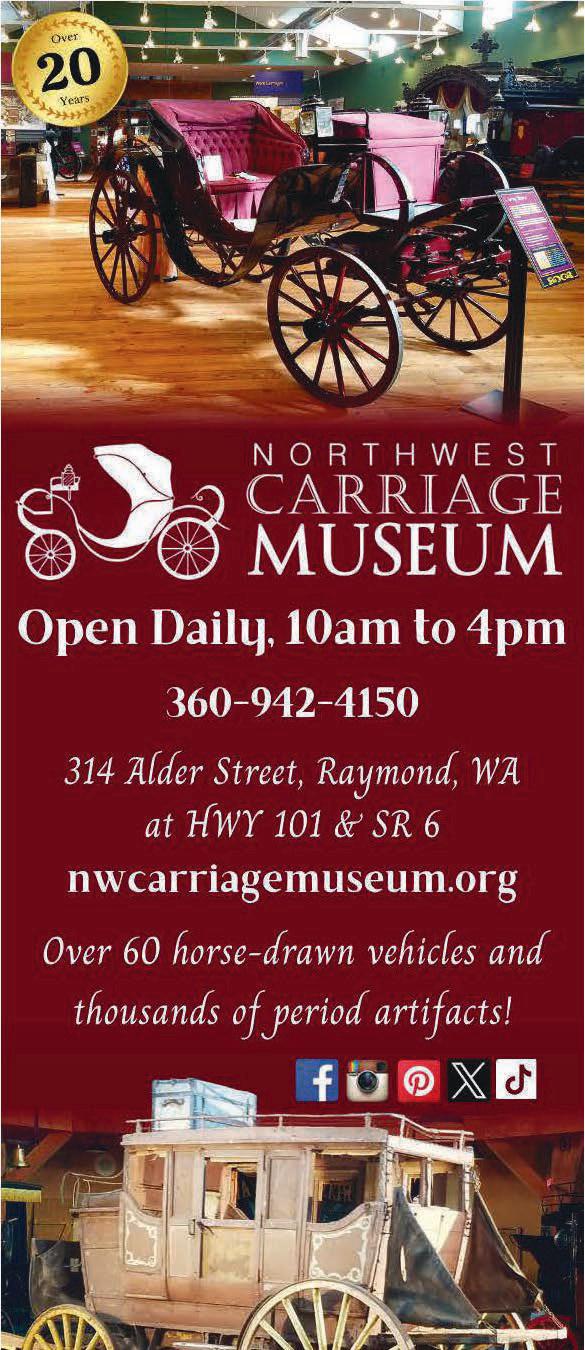




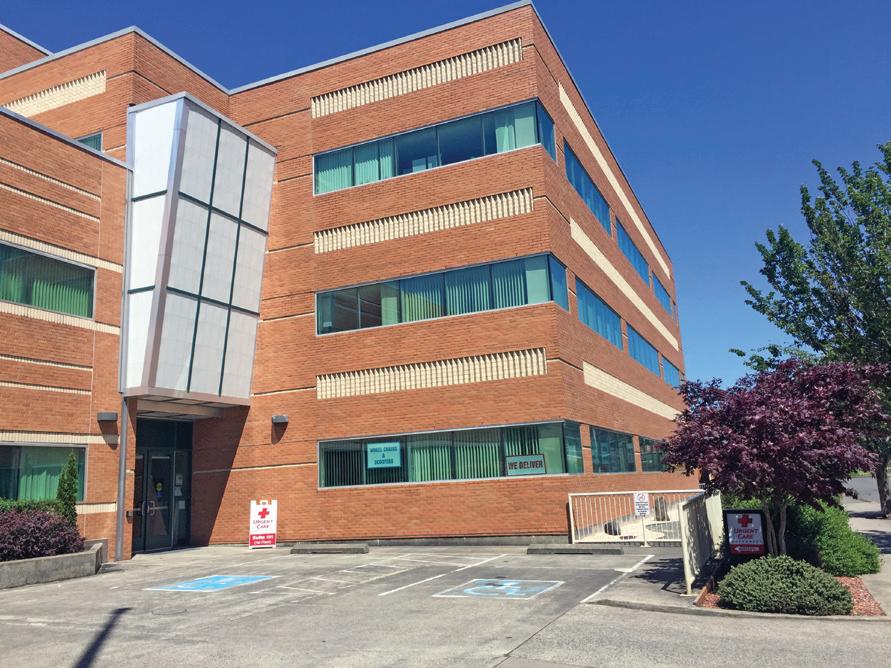

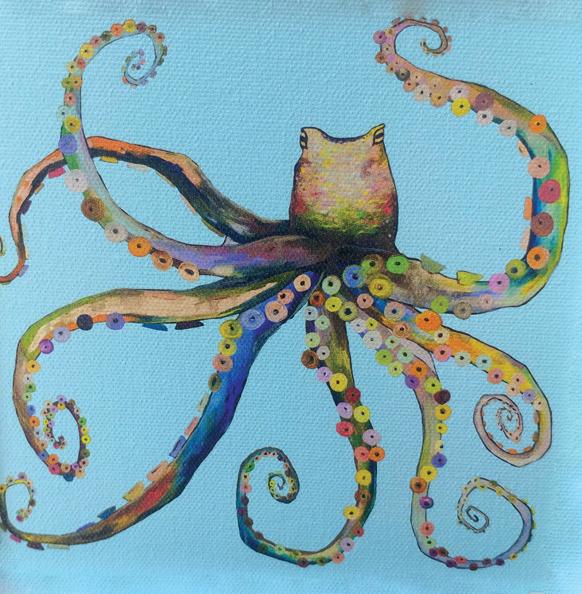
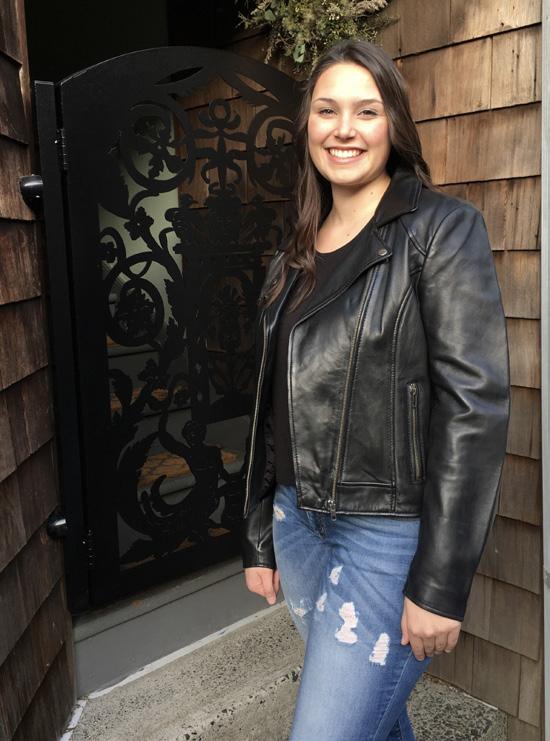
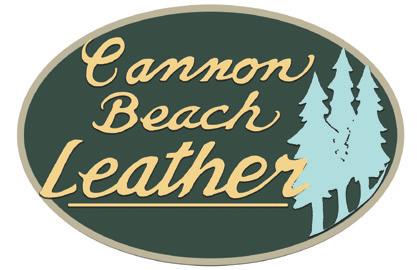









28 Our Coast Magazine 2024 a smartER alternative WE’RE OPEN AND HERE FOR YOU! 503-325-0333 or Visit www.urgentcarenwastoria.com 2120 Exchange Street • Suite 111 • Astoria, Oregon We observe the following holidays & are closed on July 4th, Thanksgiving, Christmas & New Year’s Day. Express Healthcare for Busy Lifestyles HOURS: MON-FRI 7AM-7PM • SAT-SUN 9AM-7PM Life happens... That’s why we’re here! Our friendly and dedicated Physicians and Physician Assistants are available for all of your routine healthcare needs, not just for emergency situations! If you’re suffering from a headache, toothache, earache, backache, any illness or injury or on the job injury, are in need of a refill of your prescription medications, or even a sports physical or DOT physical, our dedicated staff is here to assist you! We are open 7 days a week. We are located in the Park Medical Building East in Suite 111. We accept most insurances, offer a cash discount and also accept the Oregon Health Plan, WA Medicaid and Medicare RAPID COVID-19 TESTING AVAILABLE! We are currently serving walk-in patients, same day appointments A UniqueAstoria Experience 1116 Commercial St. • Astoria 503-325-5720 www.finnware.com info@finnware.com Iittala Marimekko Jewelry Sauna Supplies Specialty Foods Souvenirs Gift Items & much more Est. 1987 503.436.0208 239 N. Hemlock Cannon Beach 1296 DUANE STREET ASTORIA 503.468.0308 Art Cards • Artisan Crafts • Gallery



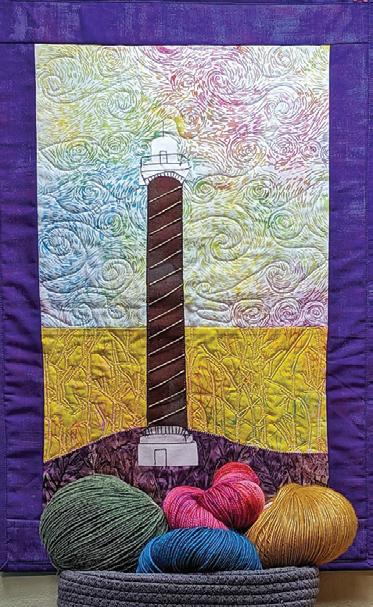

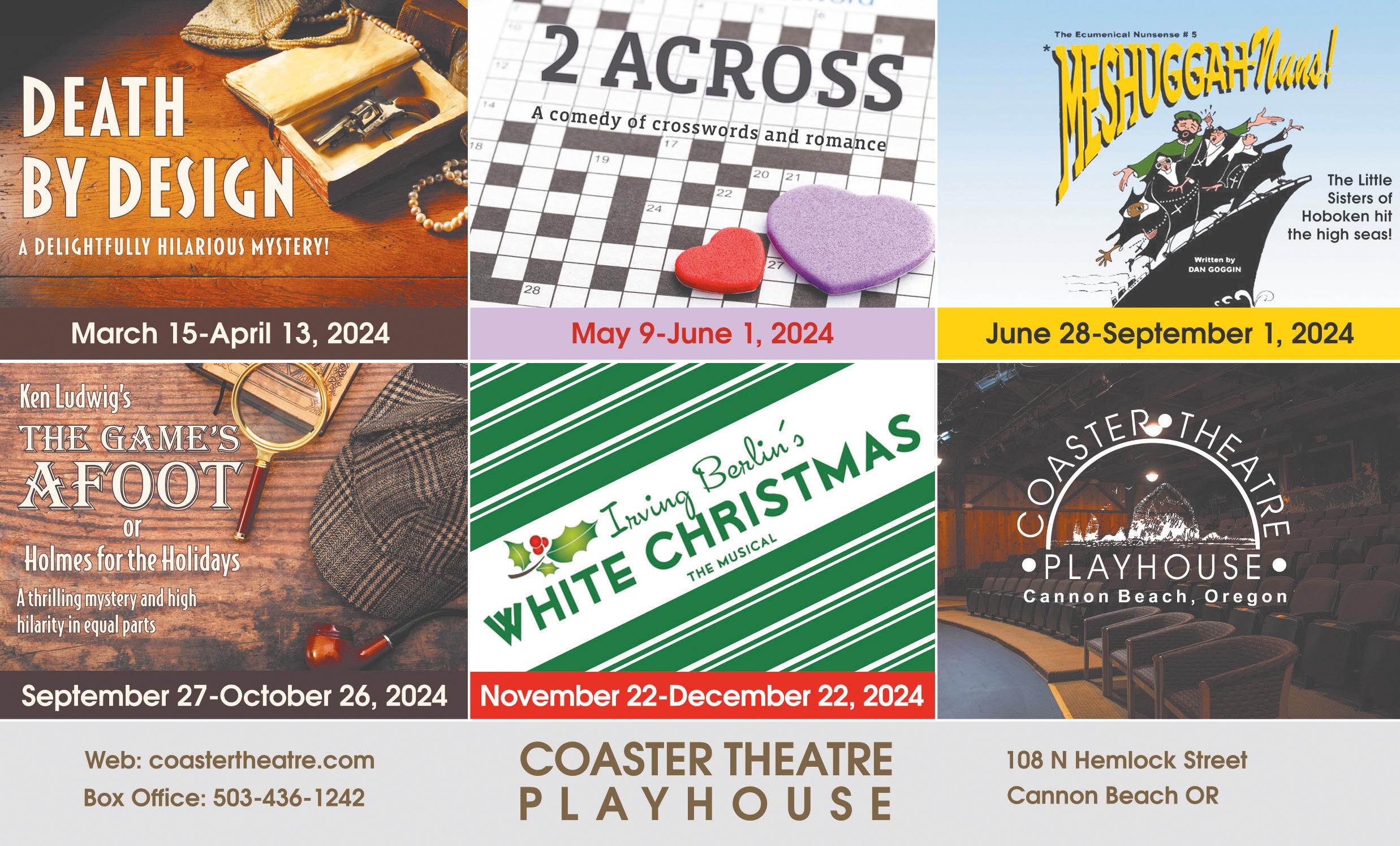
DiscoverOurCoast.com 29 • Top Quality Fabrics & Yarns • Books, Patterns & Notions A creative shop helping customers create quilt or fiber arts projects. 108 10th St. - Astoria, OR (503) 325-3300 www.homespunquilts.com Open Monday-Friday 11-4, Saturday 11-5
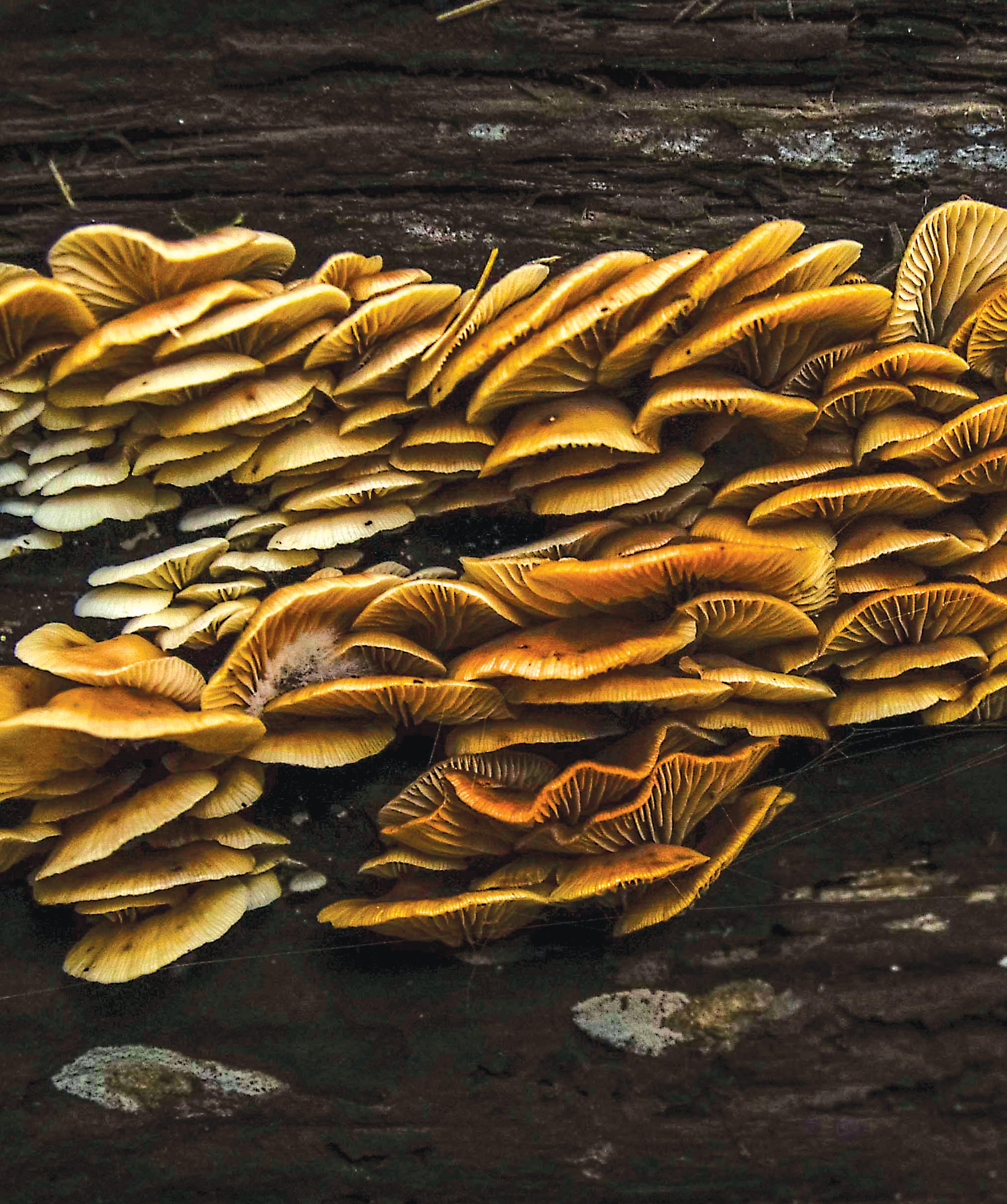
Tree bark mushrooms
Many varieties of wild mushrooms grow from the bark of trees.
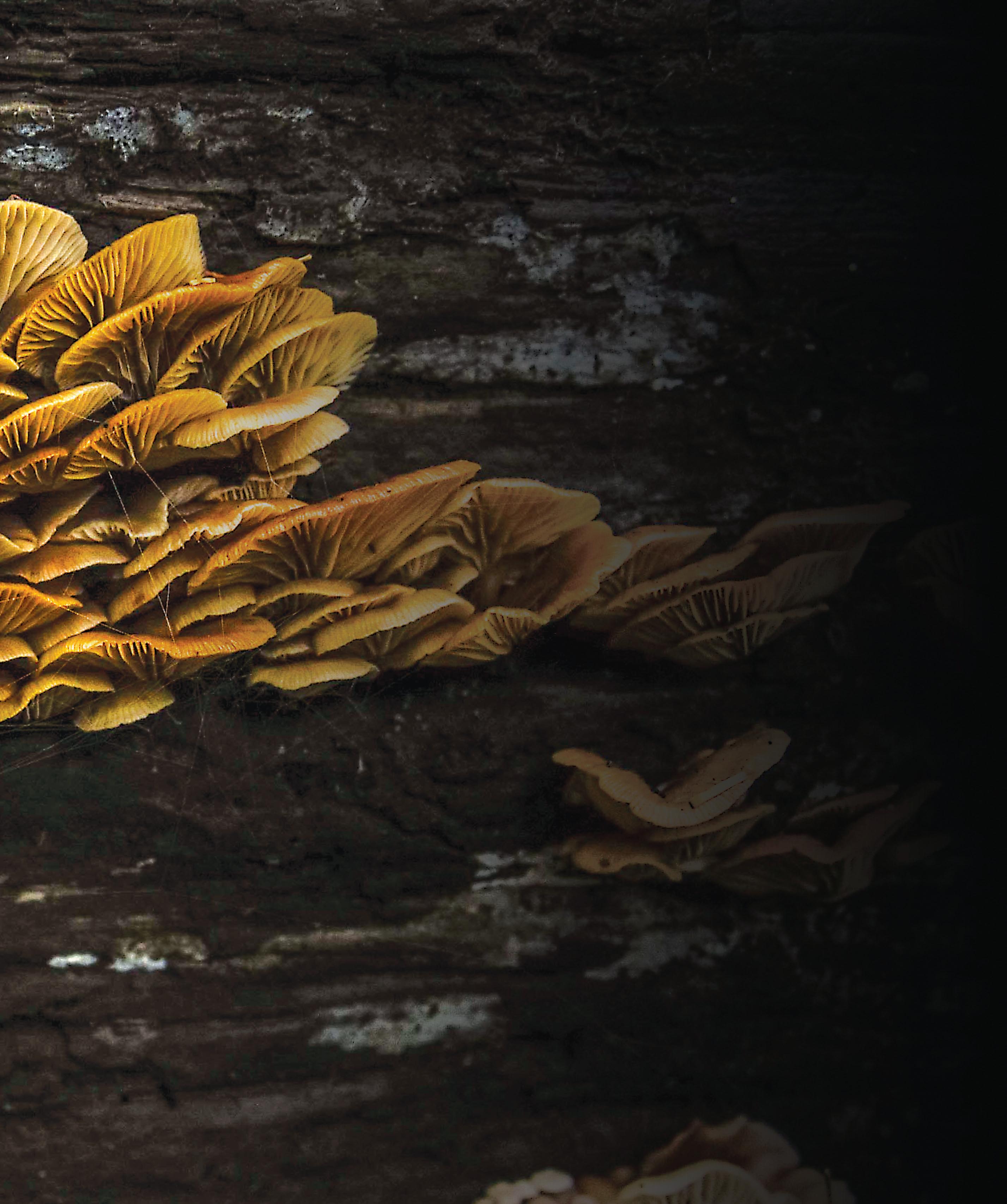
Foraging through the seasons
The Columbia-Pacific region is teeming with biodiversity, coupled with a mild, wet climate and varied habitat types.
Words: Rebecca Lexa • Images: Shanna Madison
In the region’s forests, coastal zones and mountains, foragers head out through the seasons — chefs looking to complement restaurant menus and locals looking to add to their groceries. The harvest is year-round, from wild summer berries to fall forest mushrooms.
Spring
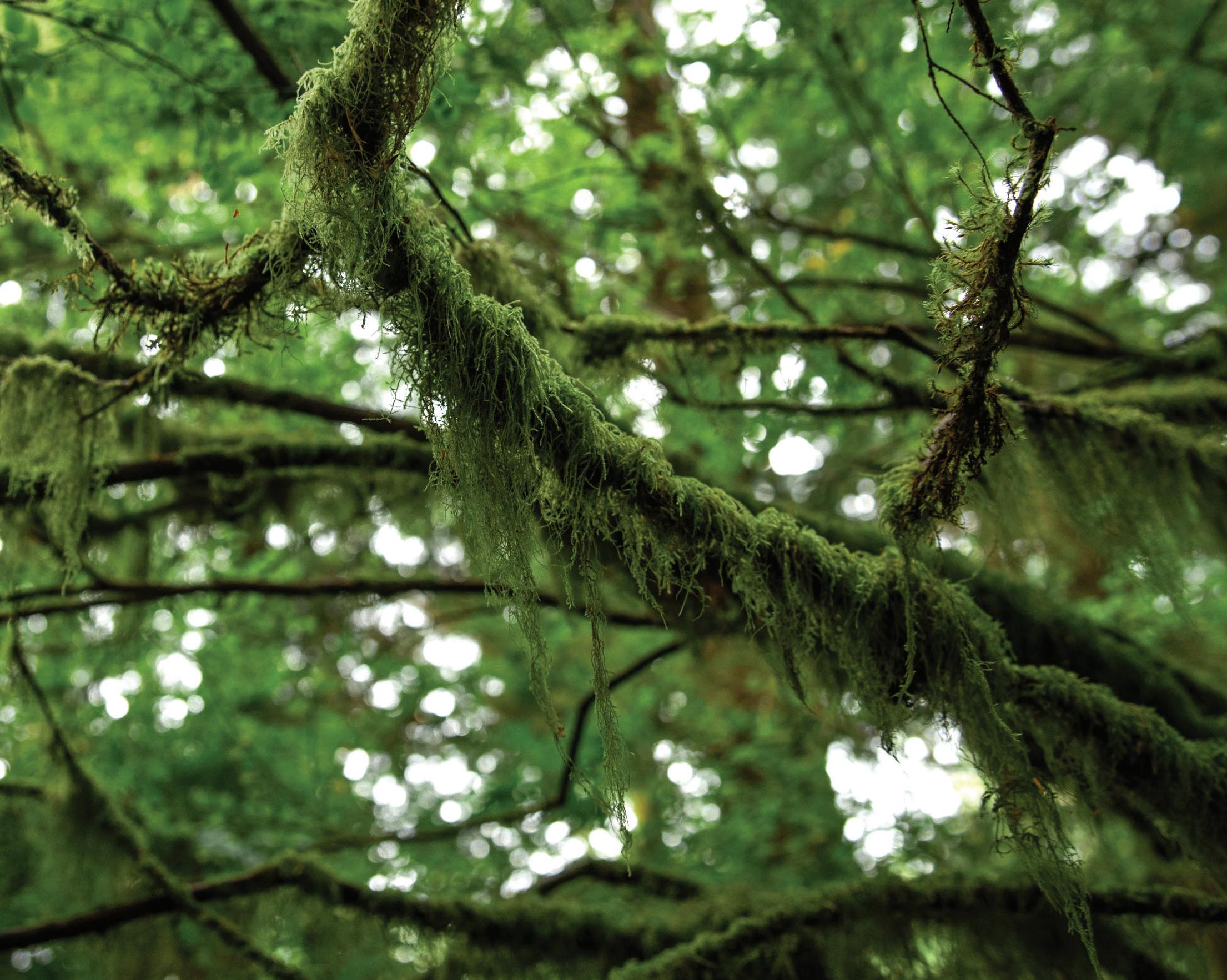
The early months of the year may bring warming temperatures, but historically spring has been a tough time to live off the land.
By this time, winter stores may have been used up, while the fruits and other bounties of summer are still months away.
But there are still wild foods to be found. Spring greens appear in the form of garden weeds — common dandelions, red deadnettle and hairy bittercress (or popweed) are a few invasive regional plants with leaves and flowers that can be eaten raw or cooked.
Wood sorrels, such as the native redwood sorrel and invasive creeping woodsorrel, may be eaten raw in small amounts. However, cooking them neutralizes their oxalic acid, in case one wants to eat more than a little.
Many of these green plants will grow year-round, though older leaves usually need to be well-cooked to be palatable.
One of the most prized spring wild plants is stinging nettle. Often used as a substitute for spinach, it must be collected while wearing gloves. The plant has tiny hairs that inject stinging properties into the skin.
Cooking the stinging nettle deactivates the plant’s defense mechanism and makes it safe to eat. Make sure to harvest stinging nettle — which is nonnative to the region — and not the native coastal hedgenettle, which looks similar but produces larger, purple flowers and does not sting when touched.
Wild greens
Even in colder months, wild greens can still be found in lawns and gardens.
Also in spring, keep your eyes peeled for oyster mushrooms. These white, semicircular, shelf-like mushrooms grow on decaying red alder and other hardwood logs and often appear in clusters.
They also have a distinctive aroma similar to black licorice. Morel mushrooms are mostly found further inland around the Cascade Mountains, but the edible morchella importuna mushroom often grows on bark mulch.
Many of these green plants will grow year-round. One of the most prized spring wild plants is stinging nettle, often used as a substitute for spinach.
It’s not uncommon to find these mushrooms popping out of neighborhood landscaping in April and May.
Watch for poisonous false morels that look similar and grow at the same time. Instead of looking like cones with honeycomb-like textures, they resemble a pile of worms on a stalk, and they are solid or multichambered inside instead of the one single hollow space inside a true morel.
32 Our Coast Magazine 2024
Blackberries
Ripening in late summer, varieties include the smaller native trailing blackberry, or Pacific blackberry, and the larger invasive Himalayan blackberry.
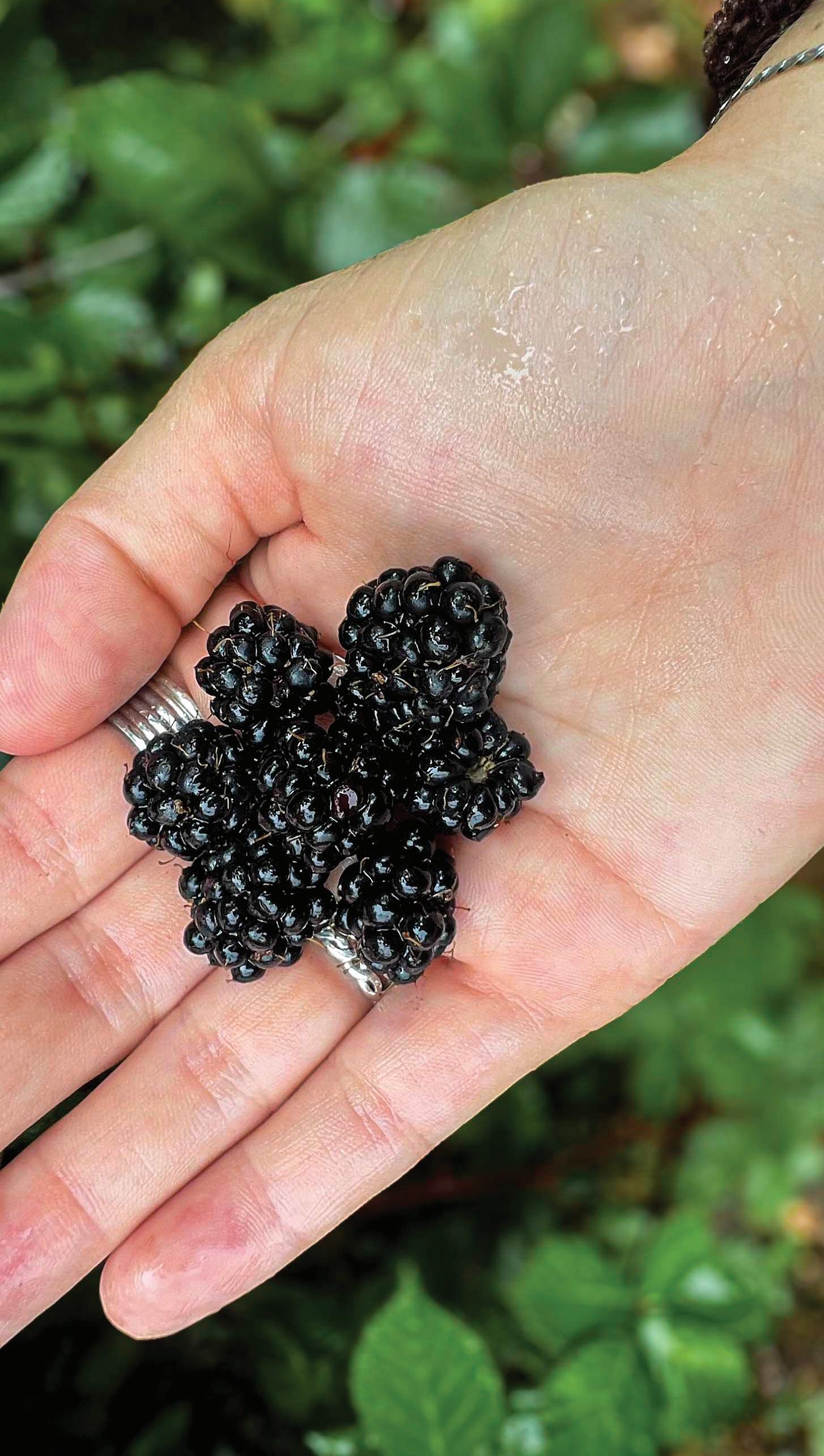
Around late spring — into June and through the first part of July — look for bright salmonberries that appear in forests and along riparian areas.
Salmonberries look similar to blackberries, only orange to red in color. These are the first berries of the year to ripen.
Later in the summer, they are joined by thimbleberries. These are soft, red and look like semi-spherical candy, growing on bushes with big, green, three-lobed leaves. At about the same time, red huckleberries begin to ripen as tiny round spheres.
By August, the first blackberries are usually ripe. That includes the native trailing blackberry plant — also called the Pacific blackberry — as well as the larger berries that grow from the invasive Himalayan blackberry and cutleaf blackberry plants.
Oyster mushrooms often appear in summer, with large flushes on dead hardwood trees, favoring red alder.
By July, start to look for the bright yellow Pacific golden chanterelle, popping out of the soil. Also, look for the deep orange chicken of the woods (use caution when trying this mushroom for the first time), often found growing out of dead conifer trees.
By August, the first blackberries are usually ripe. That includes the native trailing blackberry plant — also called the Pacific blackberry — as well as the larger berries that grow from the invasive Himalayan blackberry and cutleaf blackberry plants.
DiscoverOurCoast.com 33
Summer
Mushrooms arrive on the Oregon and Washington coasts in the fall, to the excitement of eager foragers.
In addition to more chanterelles, chicken of the woods and oyster mushrooms that appear earlier, there are plenty of other species to look for as fall begins, like the lobster mushroom.
The lobster mushroom is an unusual case of a fungus infecting a russula mushroom, so it can hijack its host’s gills to spread its spores. While the host may not have been edible, the mushroom is and changes the host on a molecular level. Look for this orange or red mushroom with a twisted shape, usually growing under or near pines.
This region also sees a lot of boletes, mushrooms with spongy pores instead of gills underneath their caps, that often associate with conifers. The best-known edible species is the king bolete, which can grow 6 inches across or more and looks like a bread roll on a big, thick stalk.
Occasionally, one might find a venerable bolete with a maroon-tinted yellow stalk and red-brown cap with bright yellow pores. But more likely to be found are edible slippery jacks, whose caps are edible after peeling the top layer of skin off of them.
Be aware that not all slippery jacks — or all pored mushrooms — are edible, so make sure you identify each mushroom down to the species level and then determine edibility.
Wild mushrooms need to be thoroughly cooked before they are safe to eat. If trying a new plant or mushroom for the first time, prepare and eat a small amount — just a few bites — and then wait a couple of days to look for any symptoms. Only try one species at a time, and keep a whole, uncooked sample of it in the fridge.
For berries, the evergreen huckleberries that begin ripening later in summer are now shiny, black, sweet and ready to be picked.
Also, find more blackberries in abundance, and perhaps a few late red huckleberries. This area is dotted with old farmsteads, and you just might stumble across an old apple tree someplace that’s still producing fruit (just be sure to ask permission if it’s on private property).
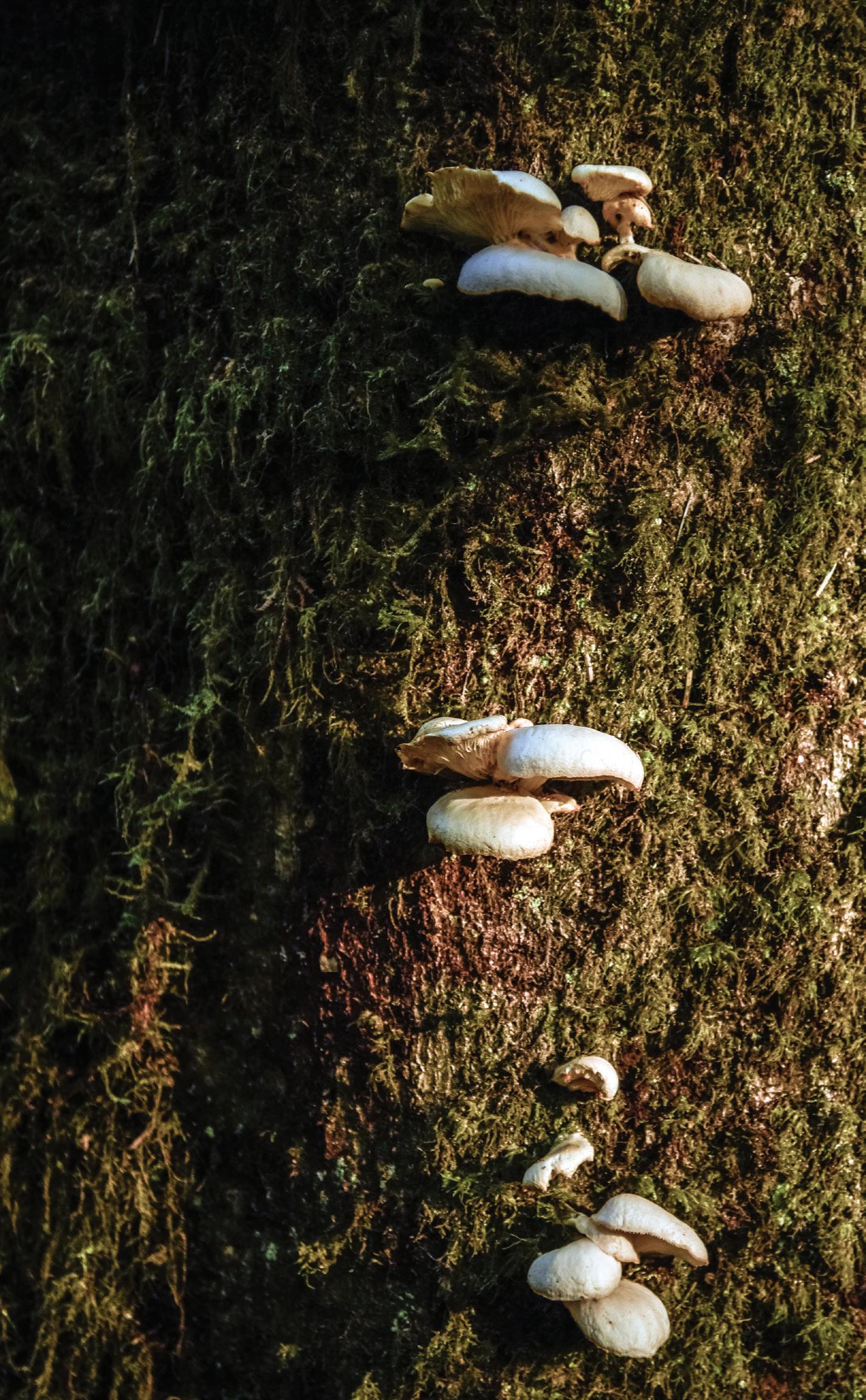
Fall
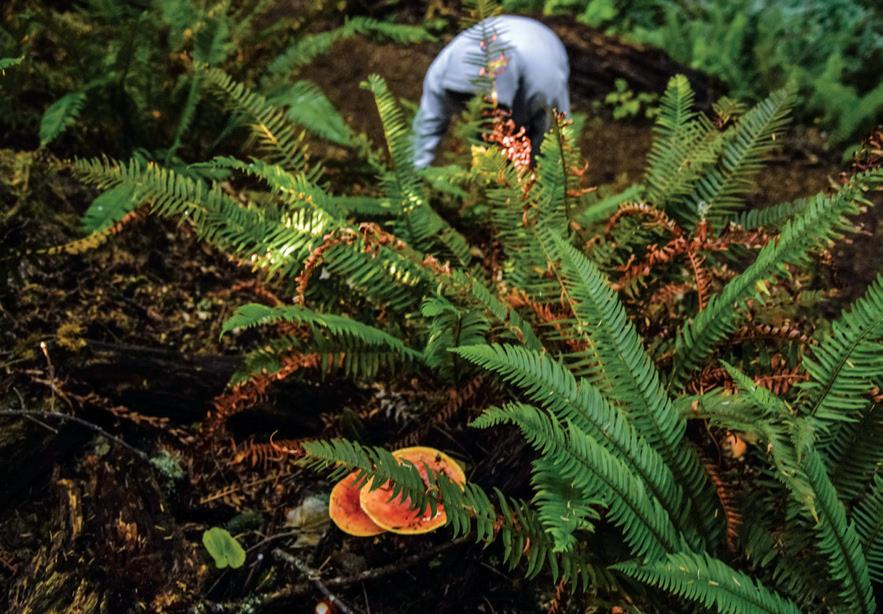
4:02 p.m.
Jordan Green looks at a patch of amanita mushrooms.
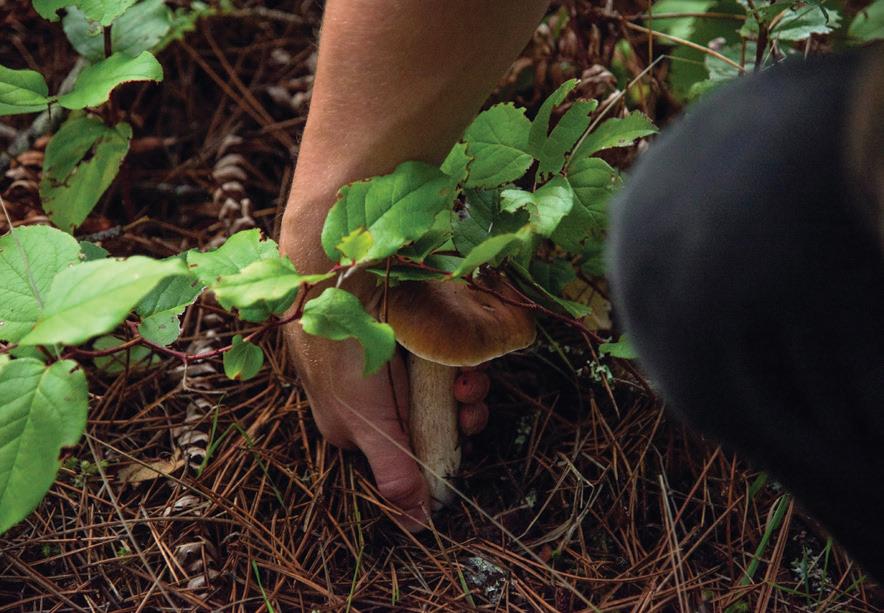
6:16 p.m.
Sam Block pulls a porcini mushroom from the ground.
34 Our Coast Magazine 2024
Do & See
Winter
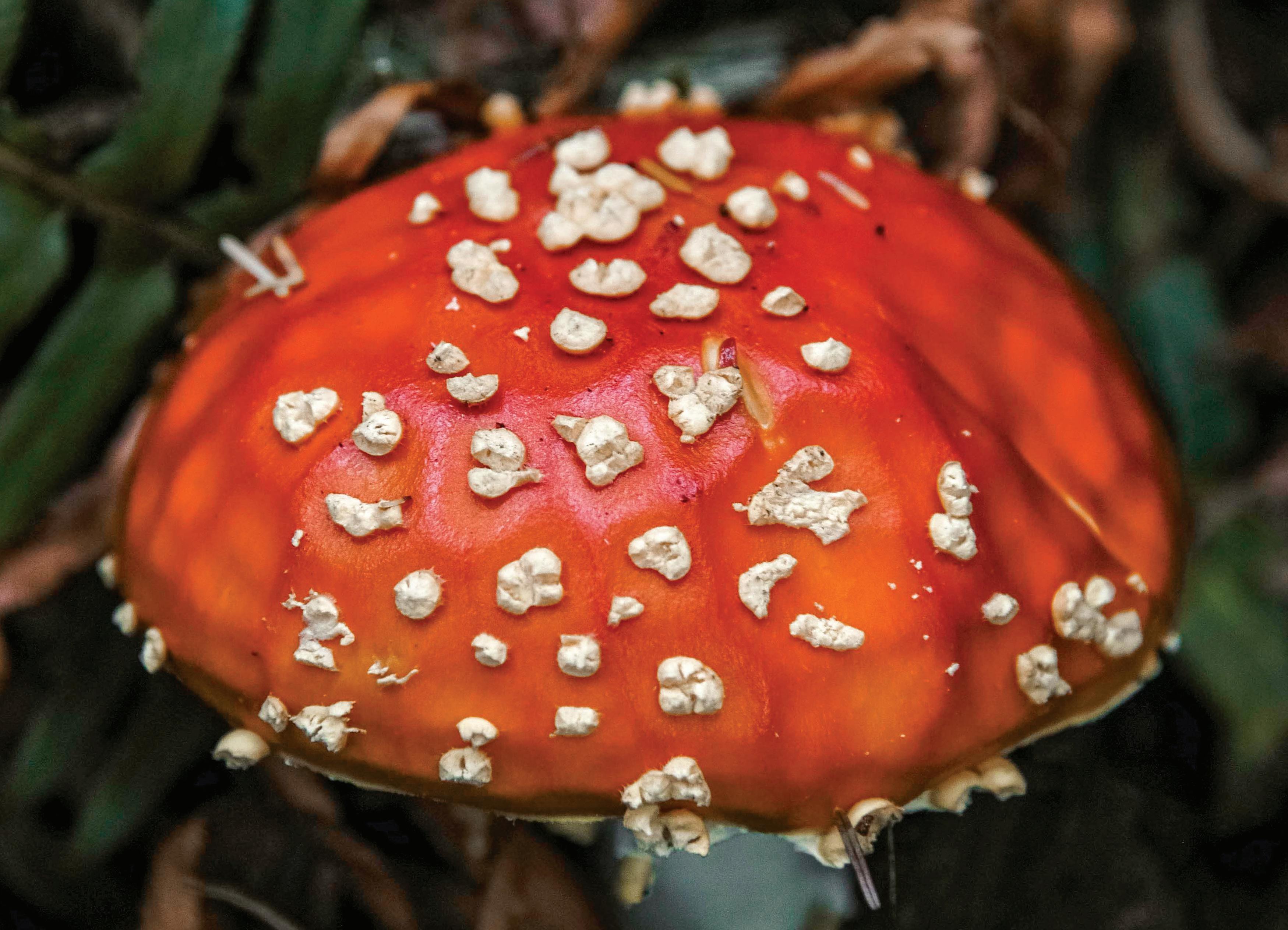
This may be the leanest time of the year, but it’s far from empty. Thanks to a mild coastal climate, it’s still possible to glean some edible plants and fungi, especially if one is willing to head out into the mountains and hills.
Remember all those weeds that had to be pulled out of the garden earlier in the year? Many of those can survive over winter without a problem and can provide some nice greens.
The common dandelion, hairy cat’s ear, broadleaf plantain and ribwort plantain are all easy to find on lawns, parks and other open areas.
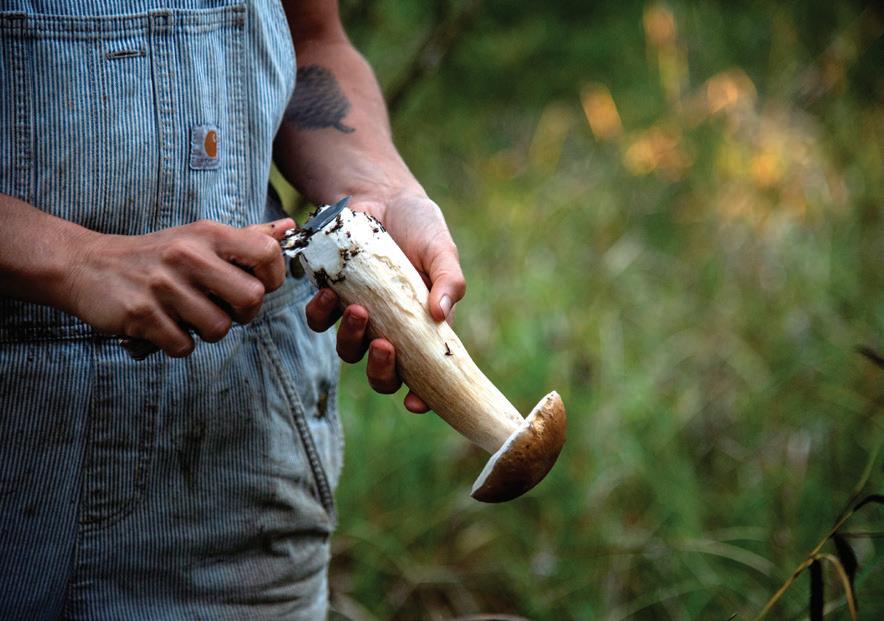
6:23 p.m.
Cleaning
The leaves are older and aren’t very good raw. Instead, try steaming them like spinach, sauteing them in olive oil or adding them to a soup or stew.
There aren’t a lot of mushrooms around by the time winter rolls around, but keep your eyes peeled for a few late flushes.
Chanterelles may be found as late as January in the Coast Range and Willapa Hills, and while you’re up there you may find some yellowfoot mushrooms, too. Hedgehog mushrooms are famous for popping up in the middle of winter, so look for these little fungi with spiny undersides.
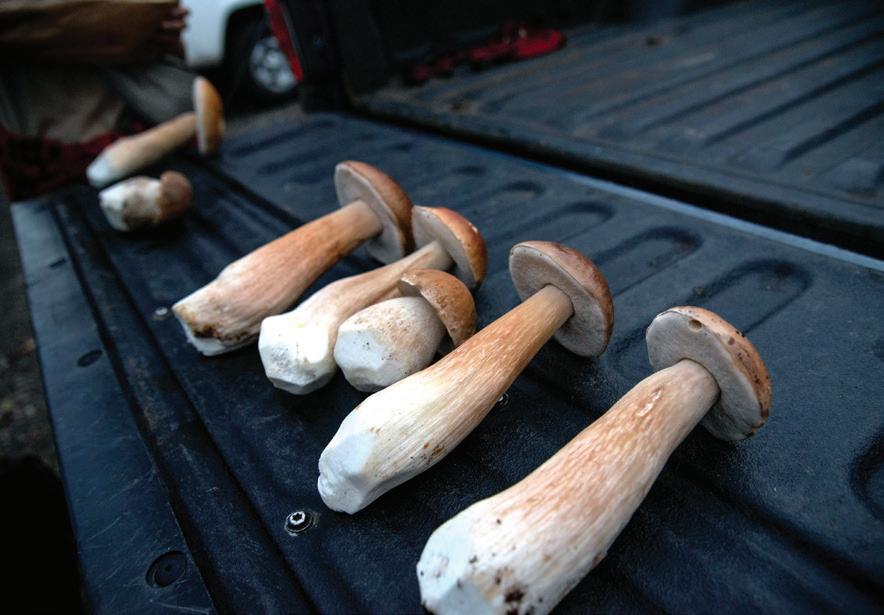
7:05 p.m.
DiscoverOurCoast.com 35
off the stem of a mushroom.
A forager's haul at Nehalem Bay State Park.
12:31 p.m.
Kristin Quirk, an interpretive specialist at Cape Disappointment State Park, tours North Head Lighthouse.
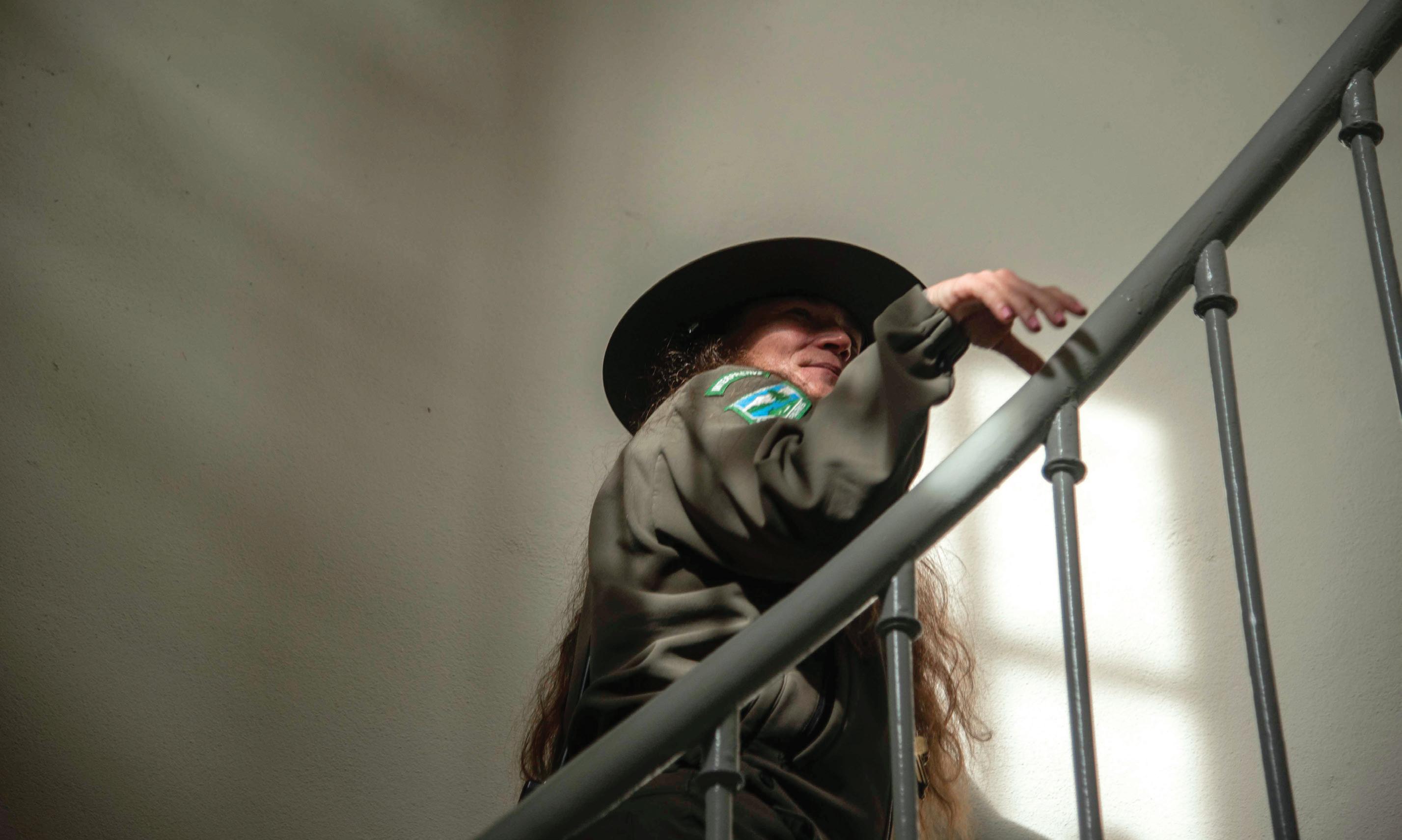
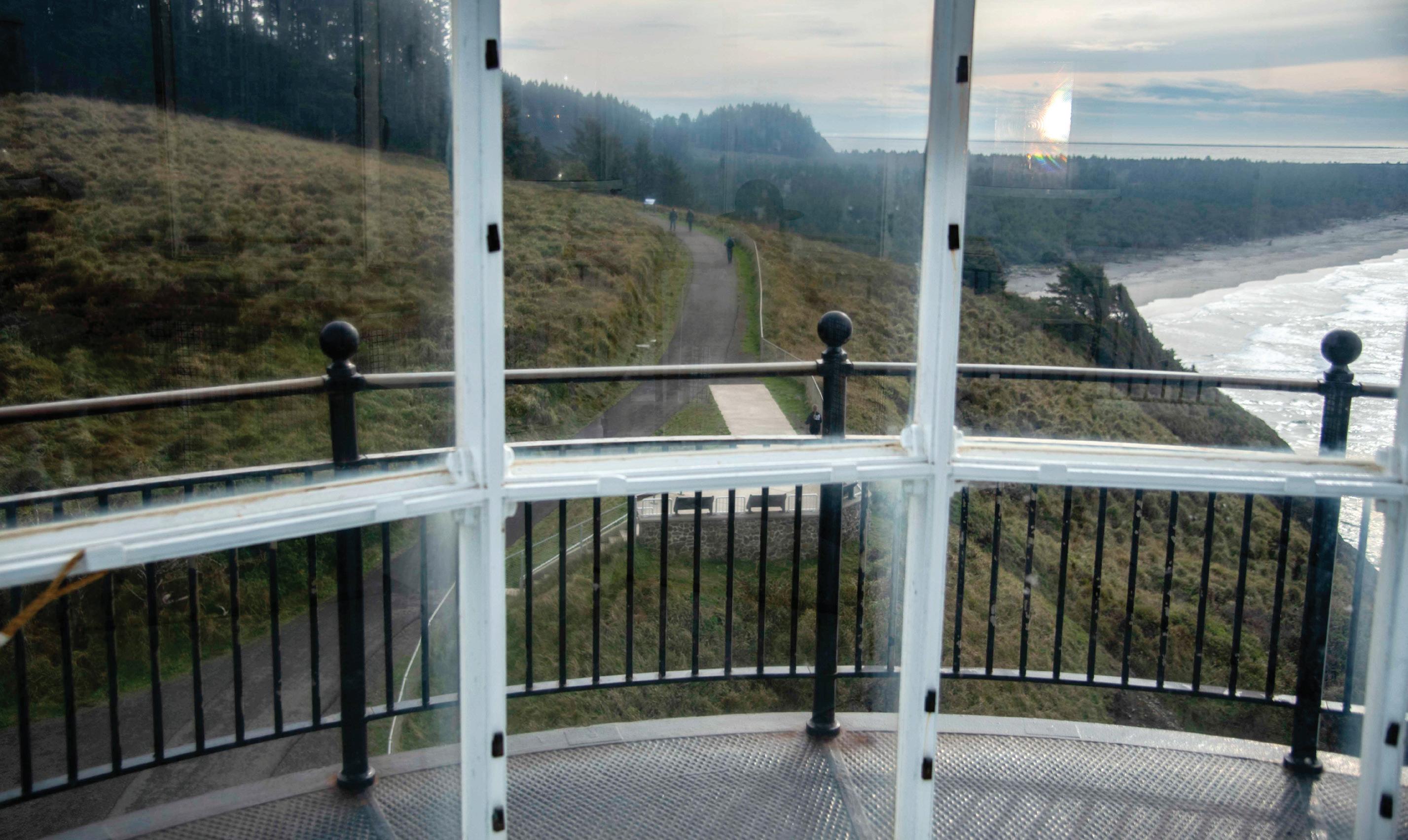
12:36 p.m.
In the summer months, park visitors can climb the lighthouse tower during tours.
Do & See
12:46 p.m.
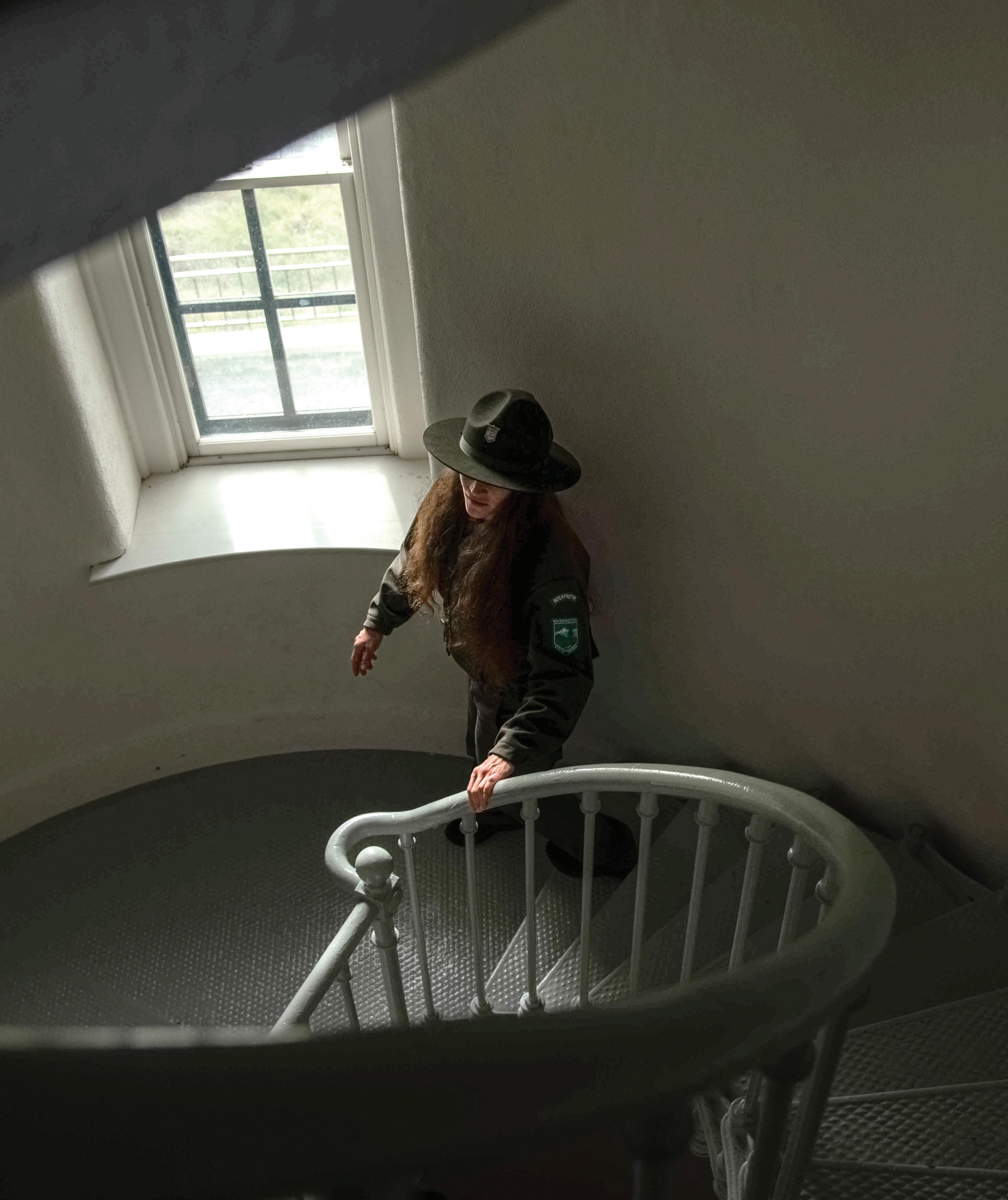 North Head Lighthouse, built in 1898, is the newer of two lighthouses at Cape Disappointment State Park.
North Head Lighthouse, built in 1898, is the newer of two lighthouses at Cape Disappointment State Park.
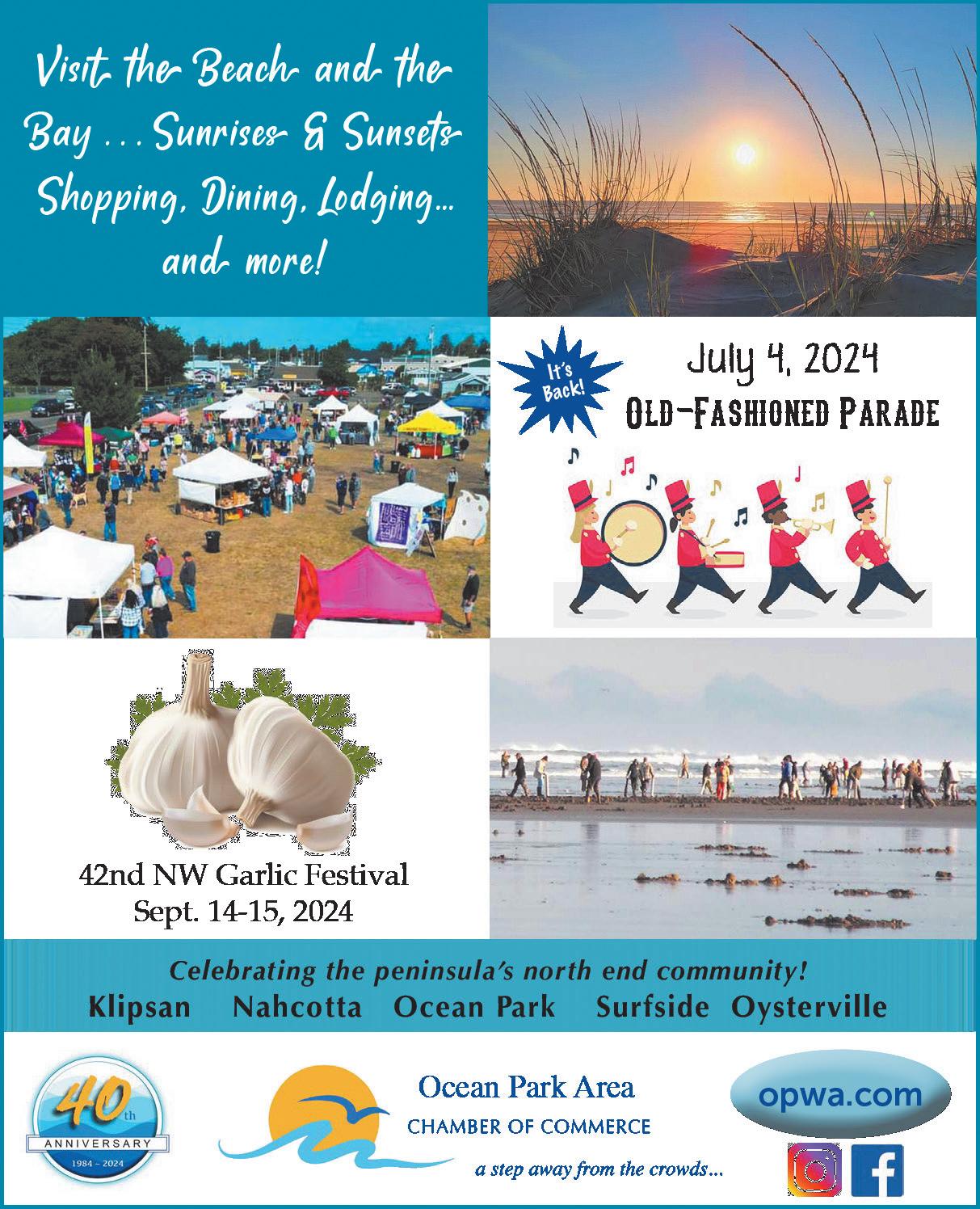

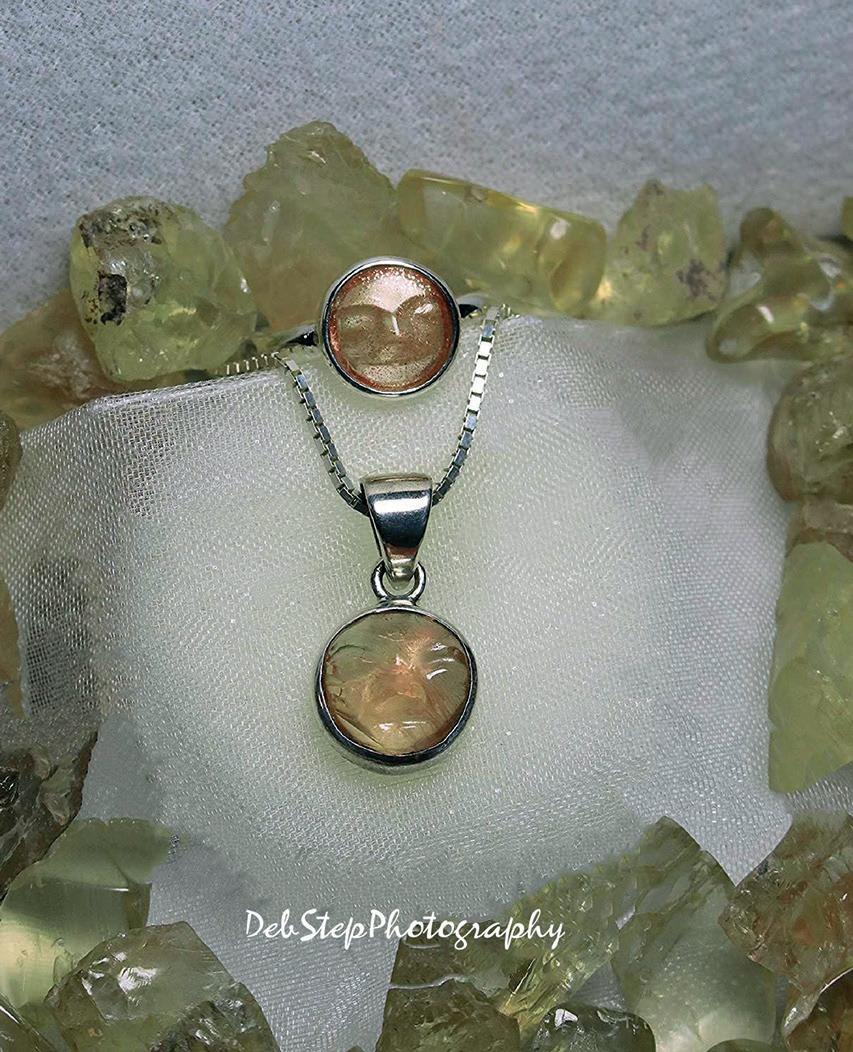
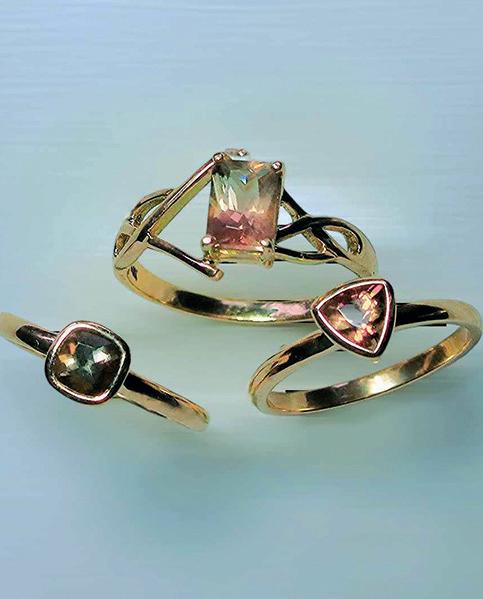
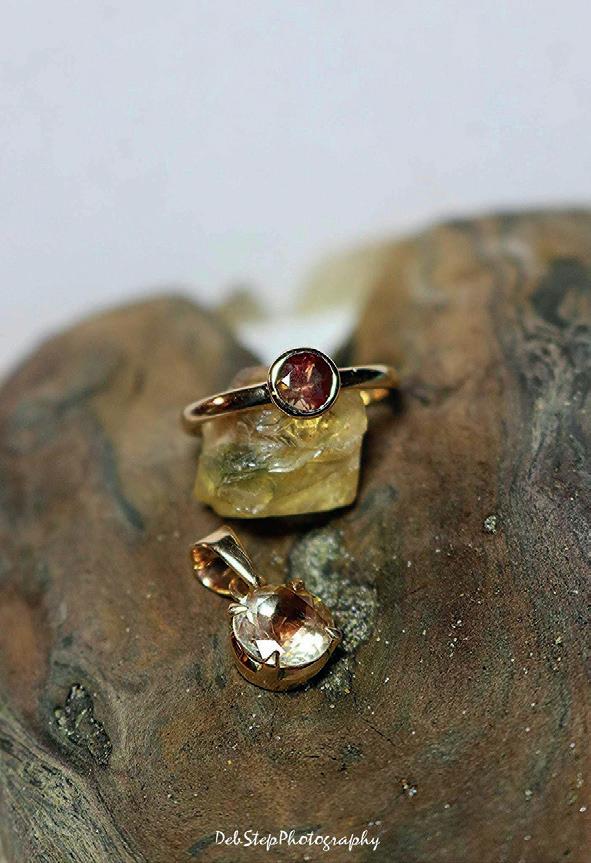

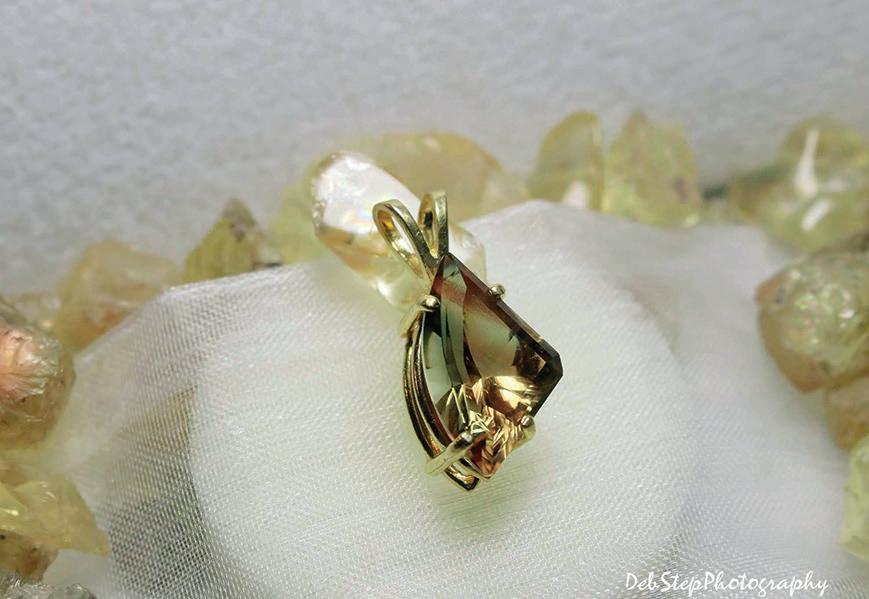


38 Our Coast Magazine 2024 The Community of Emerald Heights is nestled on 200 acres of wooded wonderland and has 300 apartment homes. From small and large 2 to 3 bedroom floor plans, you are sure to find the right fit for you! On City Bus Routes • Playground Areas Covered Bus Stops • On-Site Laundry Minutes from Downtown Community Center Renovation Astoria’s Hidden Gem CALL 503.325.8221 OFFICE HOURS Mon - Fri 9AM to 6PM Saturday & Sunday 10AM to 2PM No Appointment Necessary emerald.heights.apartments@gmail.com ASTORIA, OR • 503.325.5548 23 Years IN BUSINESS Terra Stones Fine Jewelry and Crystals for the Imaginative Soul Oregon Sunstone

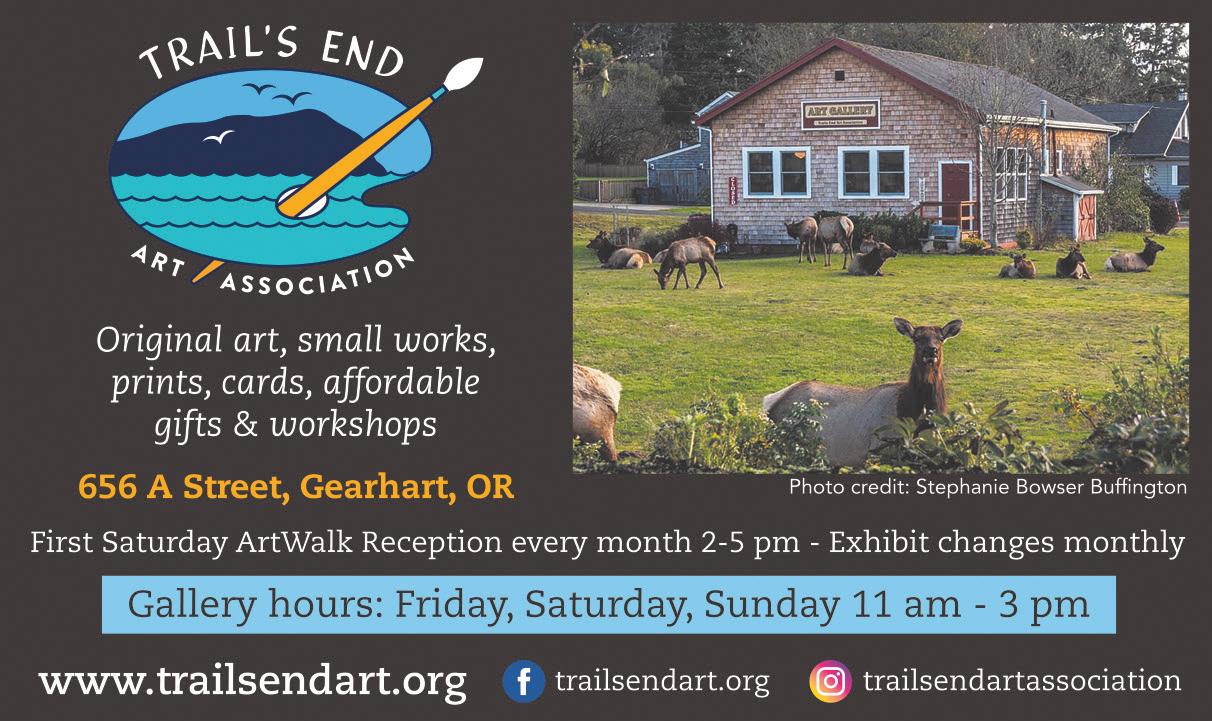


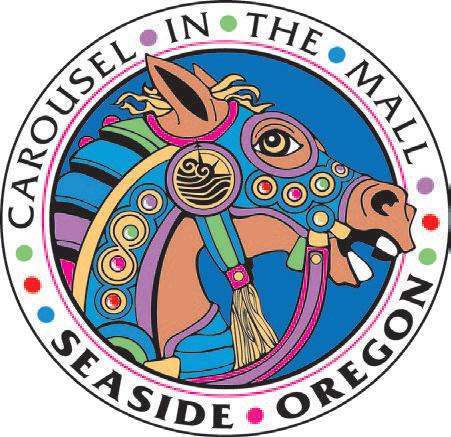

DiscoverOurCoast.com 39 SEASIDE Carousel Mall 300 Broadway Open Every Day Join us for shopping, dining, & family fun for ages 1 to 100. Come ride the operating carousel Seaside Carousel Mall 300 Broadway Reservations please call 503-739-7513 TWO-STORY LASER TAG ARENA! Party and event packages available. Come join the fun and get Tagged in Seaside. Wiegardt Studio Gallery 2607 Bay Ave., Ocean Park, WA • www.ericwiegardt.com • 360-665-5976
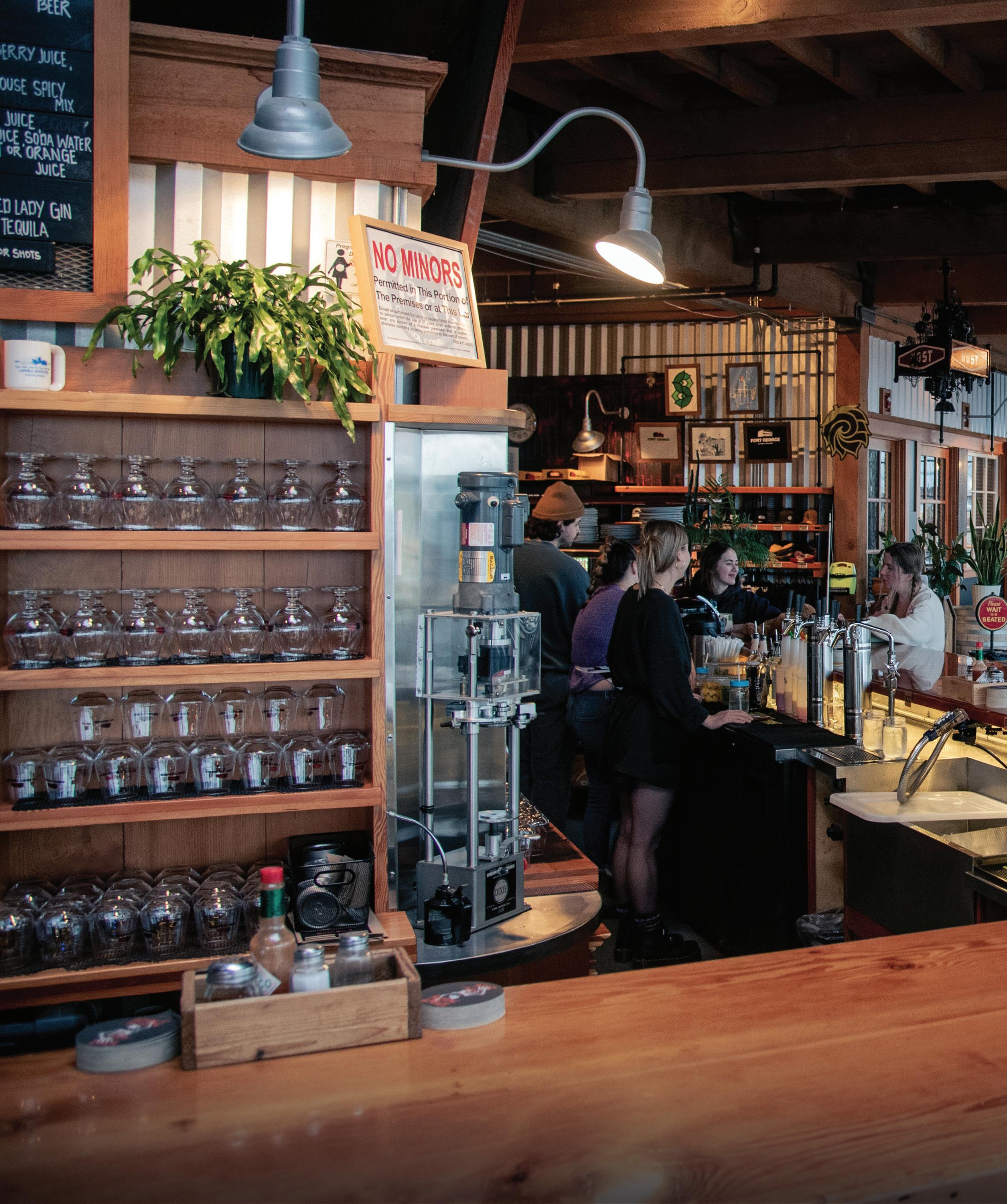
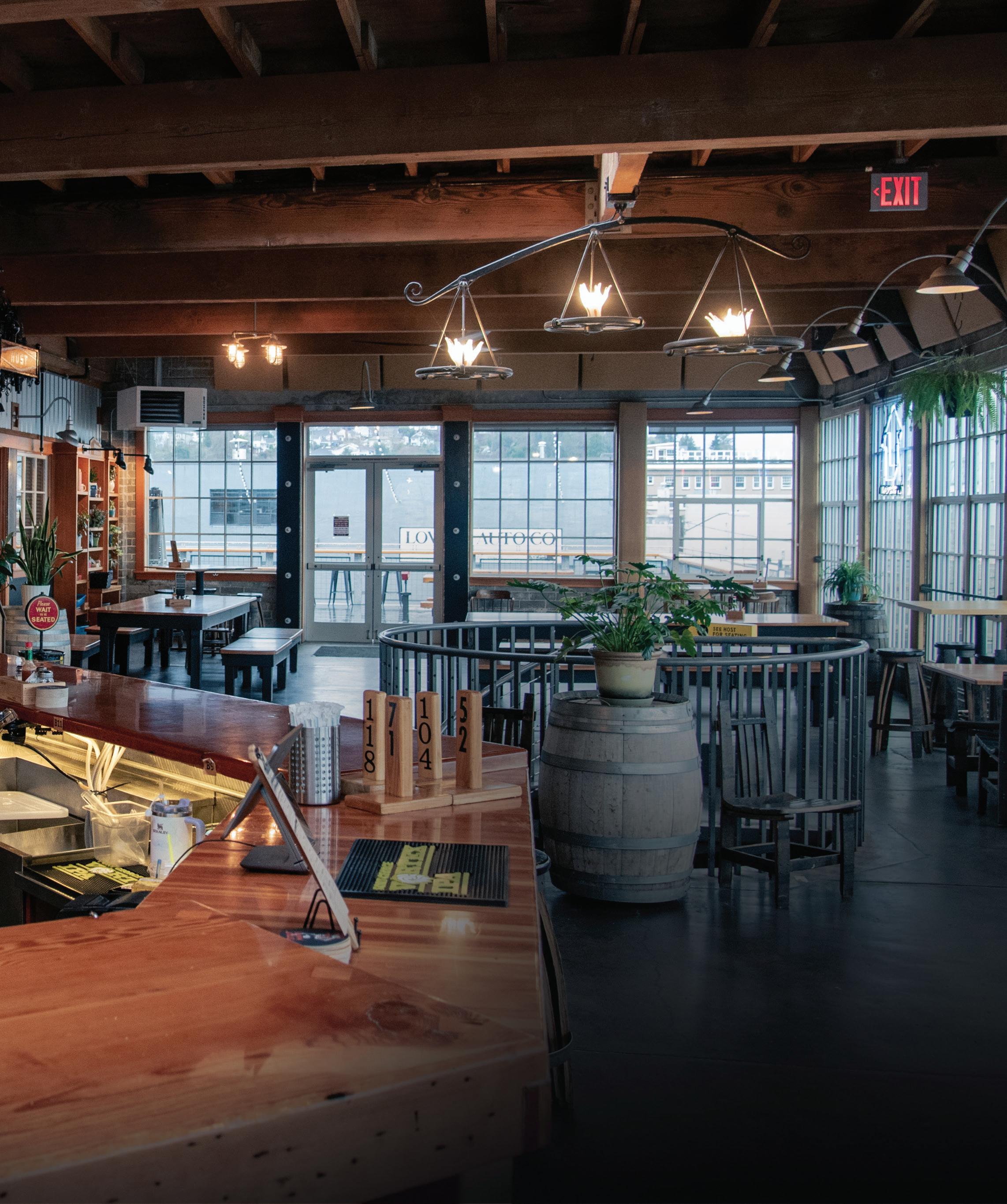
Eat & Drink
Generations moving as one
Distilleries on the rise
Building a brewery
Sweets by the sea
Eat & Drink Our Picks
Where to spend a day on Our Coast
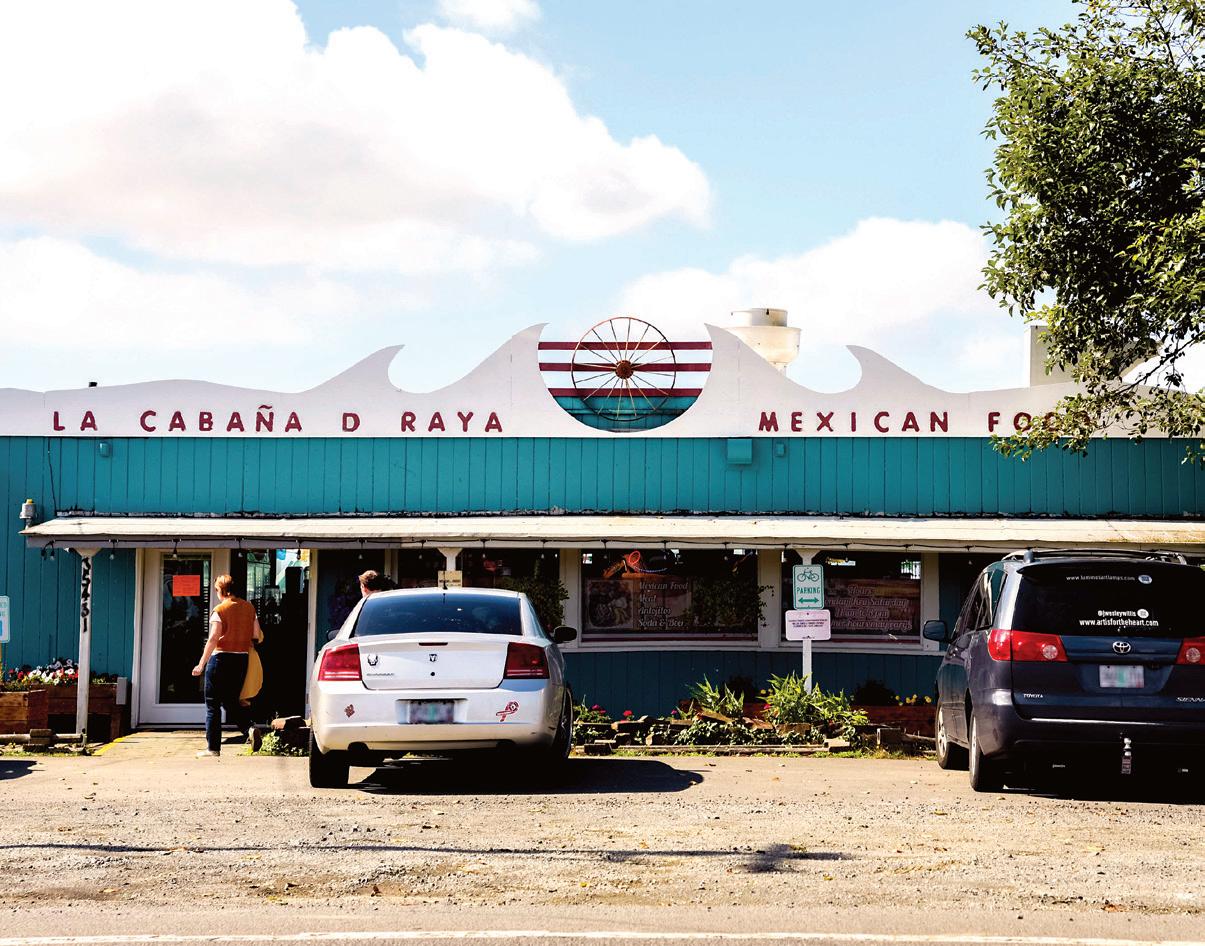
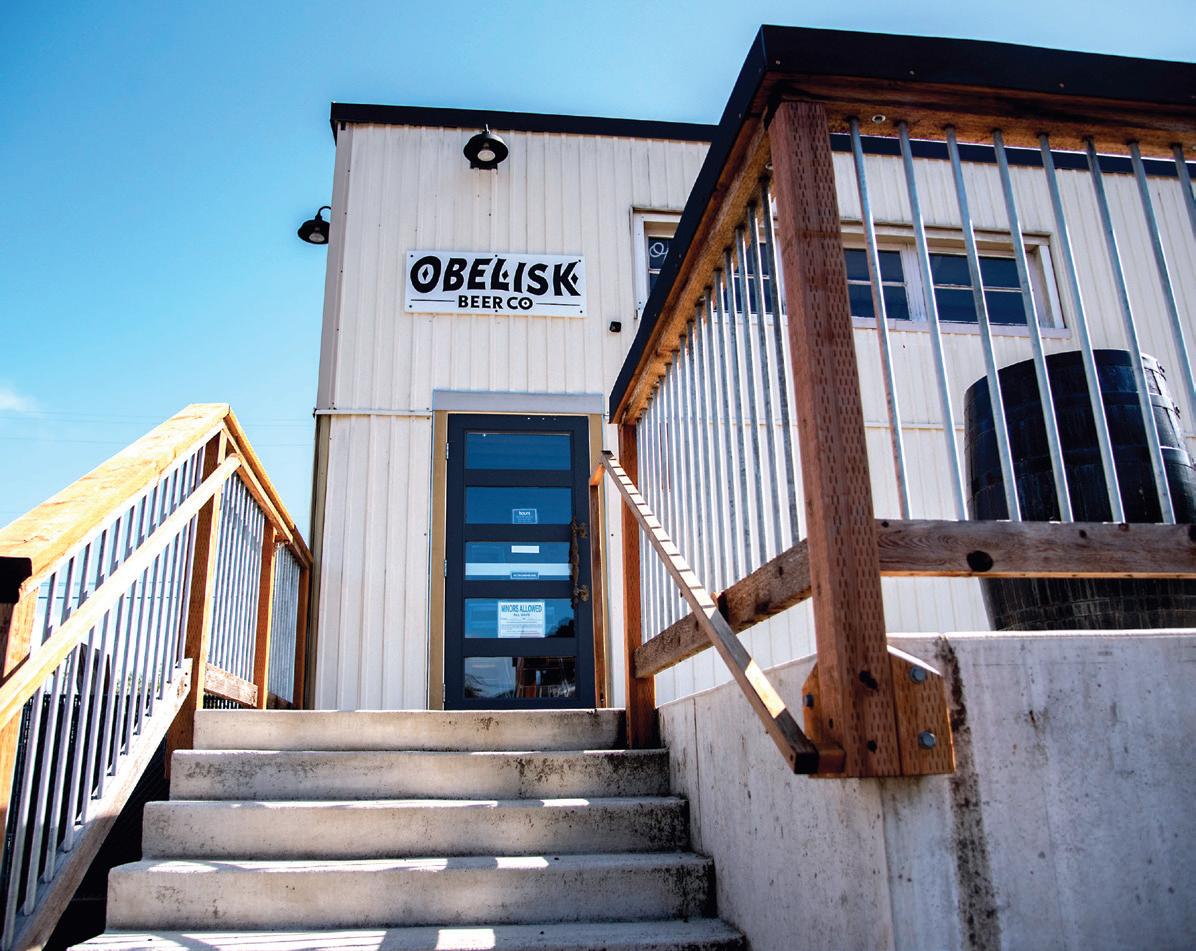
La Cabaña de Raya
By Emily Lindblom
As the sunset spreads red and orange hues across the waterfront view of La Cabaña de Raya on Youngs Bay, guests enjoy authentic Mexican cuisine.
Owners Miguel and Leticia Raya opened the family-owned restaurant 13 years ago. Since then, they have gained continued recognition and a local following. Alex Raya, the son of the owners, continues to manage the restaurant’s daily operations.
La Cabaña de Raya prides itself on its fresh, made-from-scratch ingredients, including homemade corn tortillas.
Dishes are made to order and range from traditional items like birria, gorditas, burritos, sopes and enchiladas to fusion Mexican-American dishes like nacho fries, Mexican pizza and french fry burritos. Appetizers include pico de gallo, bean dip, guacamole and ceviche.
The Raya family occasionally makes homemade tamales on Saturdays, announced ahead of time online — and this special dish sells out quickly.
Most menu items can be customized to be vegetarian or vegan, offering soybased chorizo as a protein option.
Nonalcoholic drinks include agua fresca, soda and sangria, while alcoholic beverages include micheladas, margaritas, piña coladas and Mexican beers.
The restaurant offers outdoor seating on its deck right at the edge of Youngs Bay off U.S. Highway 101 Business. A windscreen and umbrellas make the outdoor dining experience pleasant for guests, especially on bright, sunny days with a light breeze off the water.
La Cabaña de Raya also offers indoor dining and takeout options for lunch and dinner throughout the year, with traditional decorations on the walls and music to set the ambiance.
Obelisk Beer Co.
By William Dean
One of Astoria’s craft breweries is tucked inside an old Bond Street warehouse that’s been extensively remodeled while preserving glimpses of its past.
It’s fitting that Obelisk Beer Co., named in tribute to the Astoria Column, is the building’s newest incarnation since it once served as a distribution center for Blitz-Weinhard beer.
Owners Nathan Lampson and Dave Coyne, both formerly of Fort George Brewery, have created a fun, family-friendly vibe for the taproom, which overlooks the brewhouse and its gleaming stainless steel tanks.
On various nights, you can hear live folk music, partake in a Mario Kart competition — with the game displayed on a screen at the end of the long bar — or enjoy a special German-style Kölsch beer service featuring those tall, skinny glasses.
The brewery’s motto is “slow beer, good times,” a reference to patient brewing and a festive atmosphere.
As for the beer, it’s second to none.
Coyne, who does the brewing, is constantly seeking perfection and it shows in his crisp lagers and robust IPAs. When visiting, be sure to ask for one of his inventive, limited-release collaborations with other Oregon breweries. There’s almost always one on tap.
Also, feel free to request a sample of a draft beer or two. The cheerful beertenders enjoy turning people on to new taste sensations.
While there, check out the art. Coyne doubles as an artist with a penchant for imaginative pen and ink drawings. Find them on beer labels, the brewery’s logo, signage and merchandise.
The brewery celebrated its first anniversary in November and is open every day. There’s no food service, but outside munchies are welcome. A selection of wines isare also available.
42 Our Coast Magazine 2024
Astoria
Astoria
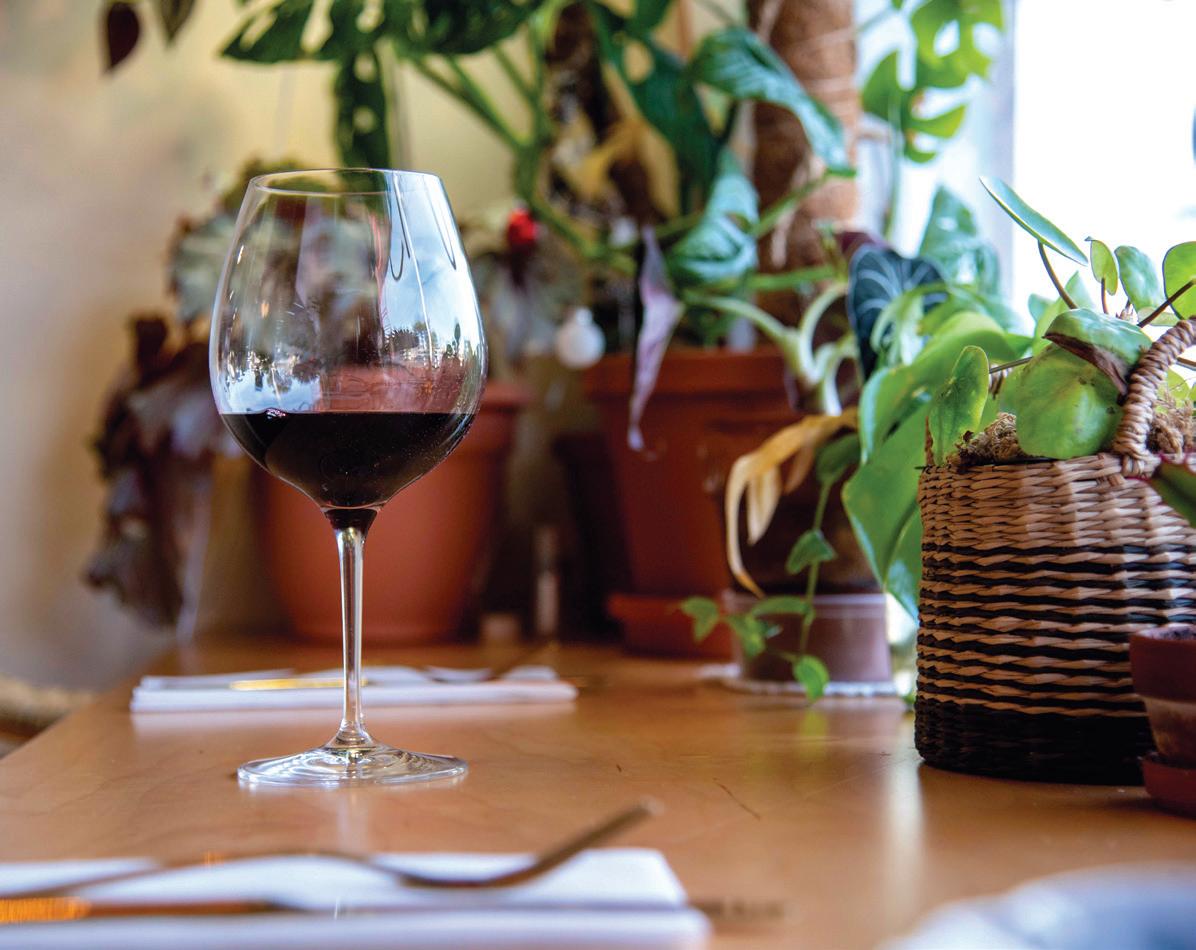
CHēZ Seaside
By Linda Hoard
CHēZ is a French-inspired wine bar and charcuterie shop in Seaside, cheerfully decorated with pastel hues, comfortable seating, fresh flowers, plants and paintings of beautiful vineyards.
They offer a large selection of wines including local, French and Spanish wines and some ciders. Their chef-crafted menu includes hot and cold sandwiches, soups, salads, small plates, oysters and a variety of charcuterie boards.
There are vegan and vegetarian options as well. Sunday specials include beignets, $5 mimosas and $2 oysters.
The owners, BraeAnn Bartlett and Destiny Deras, were previously private chefs in the area for over five years before deciding to open the restaurant. Bartlett is the restaurant’s chef and Deras is the cheesemonger and sommelier.
Bartlett and Deras still operate their catering business, Culinary Concierge, creating meals in peoples’ homes and catering events like private parties, business events, weddings and anniversaries.
Their creamy clam chowder won first place in last year’s Chubby Chowder Cook-Off in Seaside. It’s served in a cup or bowl alongside a slice of freshly baked focaccia bread. Cheese and meat are available by the pound, and one can order charcuterie boards filled with selections of delicious cheeses, meats, pickles, olives, nuts and breads.
CHēZ offers sandwiches such as rosemary French ham and Emmenthal cheese, tuna steak or assorted cured meats, cheese and micro greens on a baguette, caprese, muffuletta, tri-tip and the classic grilled cheese.
In addition to their usual hours, they offer winemaker dinners by subscription on the first Wednesday of every month. These are small gatherings with local winemakers where they serve appetizers and four-course meals, and includes wine pairings.
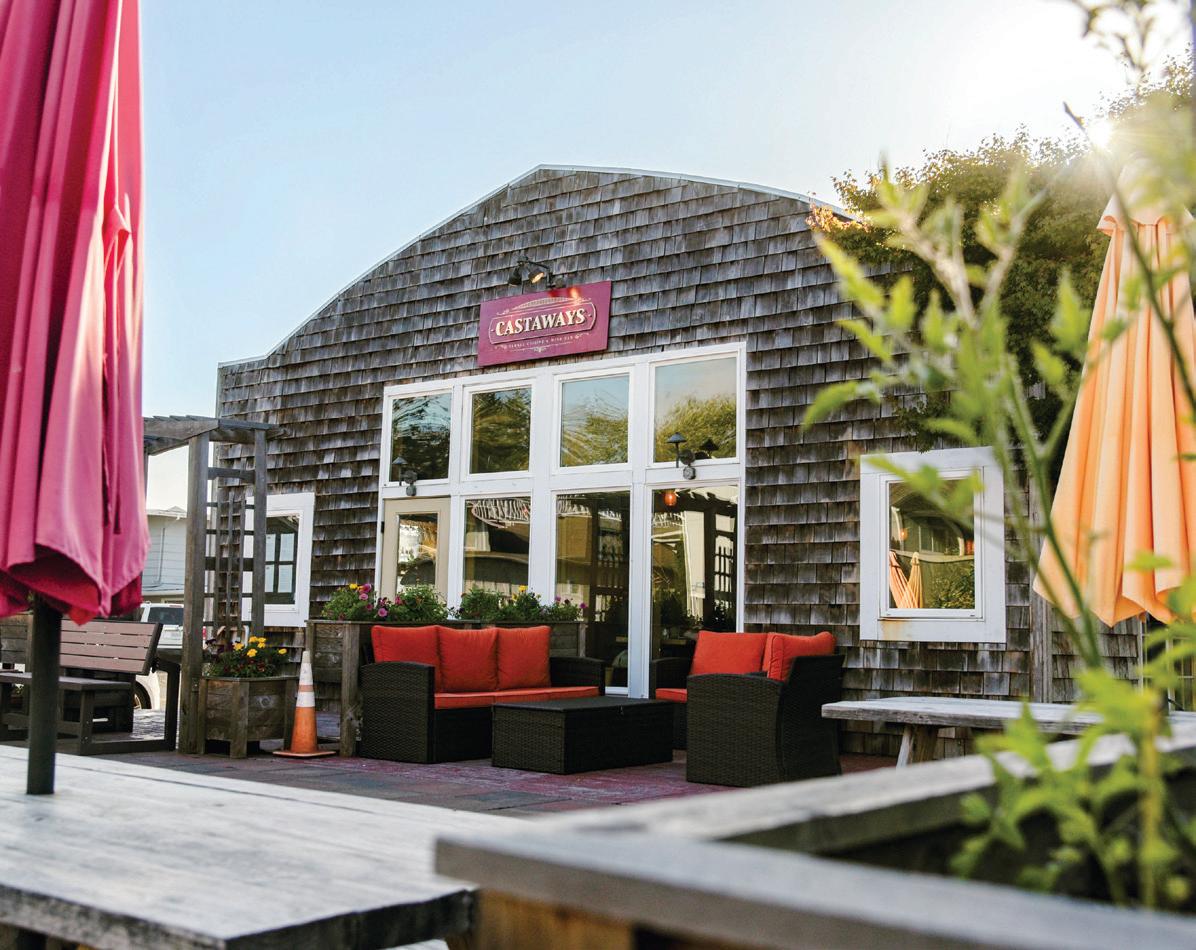
Beach
Castaways
By Marianne Monson
Walk into this restaurant to be enveloped in the light of golden sconces illuminating surfaces finished in slate and honey-toned wood.
The wine bar at Castaways gives way to a cozy dining room with ten tables, a space that’s extended with outdoor patio service offered in the summer months. The artwork on the walls is selected for the restaurant by White Bird Gallery and features work by local artists.
This family-owned restaurant has been operating at the north end of Cannon Beach for many years but still manages to feel like a local secret — but one that’s been getting out. Castaways’ innovative menu draws inspiration from around the world, with a strong emphasis on seafood prepared with Cajun and Creole influences.
The menu changes daily, though a few favorites such as lobster bisque garnished with chives and creme fraiche, and sea scallops served with polenta and maple rum buttered popcorn sauce, are featured frequently.
The bar offers an extensive cocktail menu, showcasing tropical elements and house-made infused liquors. There’s “Heaven in a Glass,” which mingles elderflower liqueur, two types of vodka and guava juice.
Rotating seasonal entrees may feature stroganoff, gnocchi or etouffee, a crawfish or shrimp stew served over rice that has its roots in Louisiana. Desserts often feature house-made ice creams.
Nearly everything is made from scratch by owner and chef Josh Tuckman, who circulates among guests near the end of the evening, asking about their meals. Castaways’ menu was inspired by Tuckman’s travels in the Caribbean, as well as his love for world cuisines.
Castaways can accommodate diets, as nearly everything is made to order. Though reservations are recommended, diners can walk in, especially on weekdays and off-season.
DiscoverOurCoast.com 43 Feasts. Eateries. Libations. Recipes.
Cannon
Generations moving as one
The families of Willapa Bay’s shellfish industry
Words & Images: David Plechl
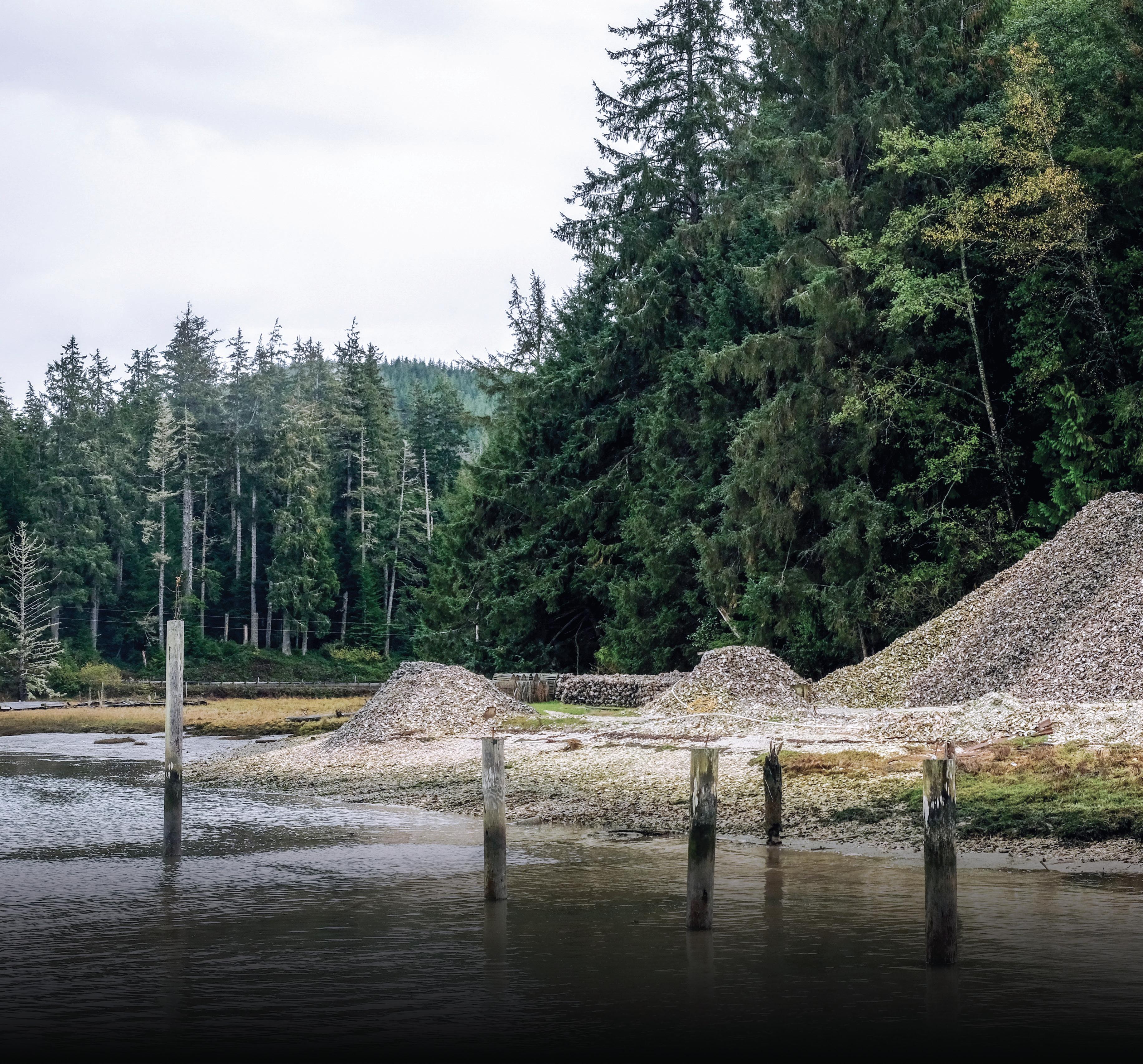
44 Our Coast Magazine 2024 Eat & Drink
Chetlo Harbor
On the eastern shore of Willapa Bay, Chetlo Harbor has been the home of Herrold Fish and Oyster Co. for over 75 years.
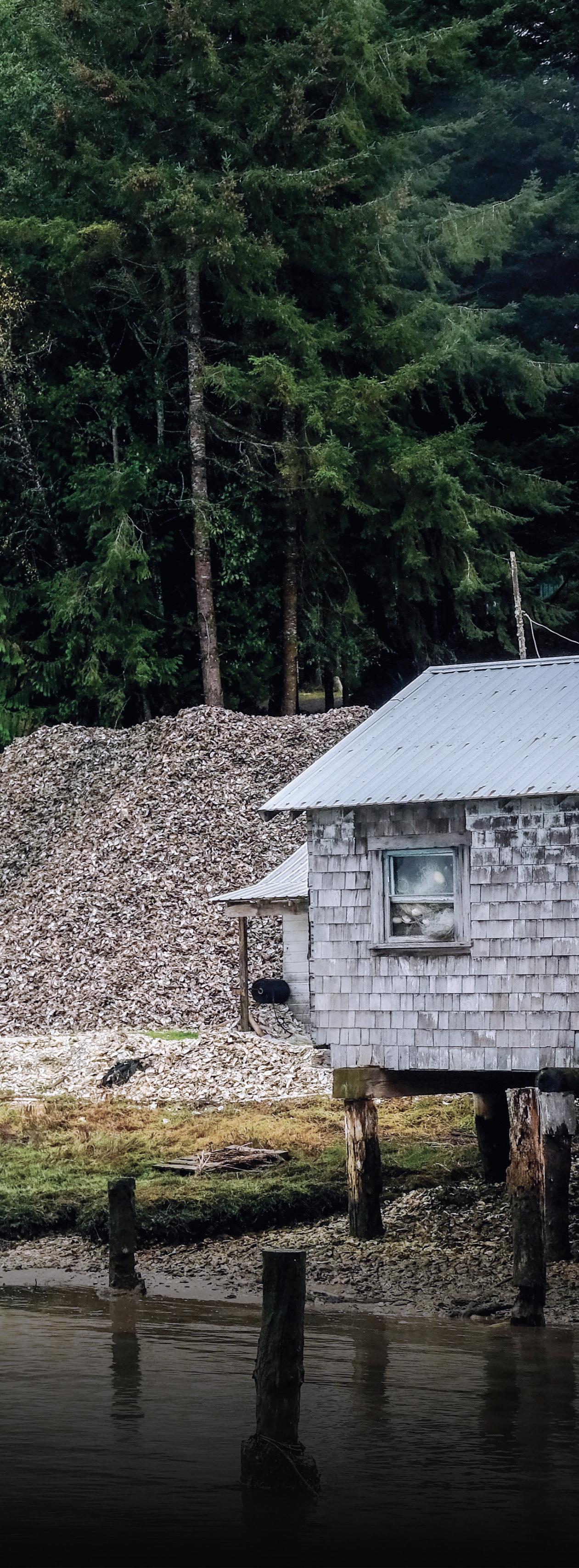
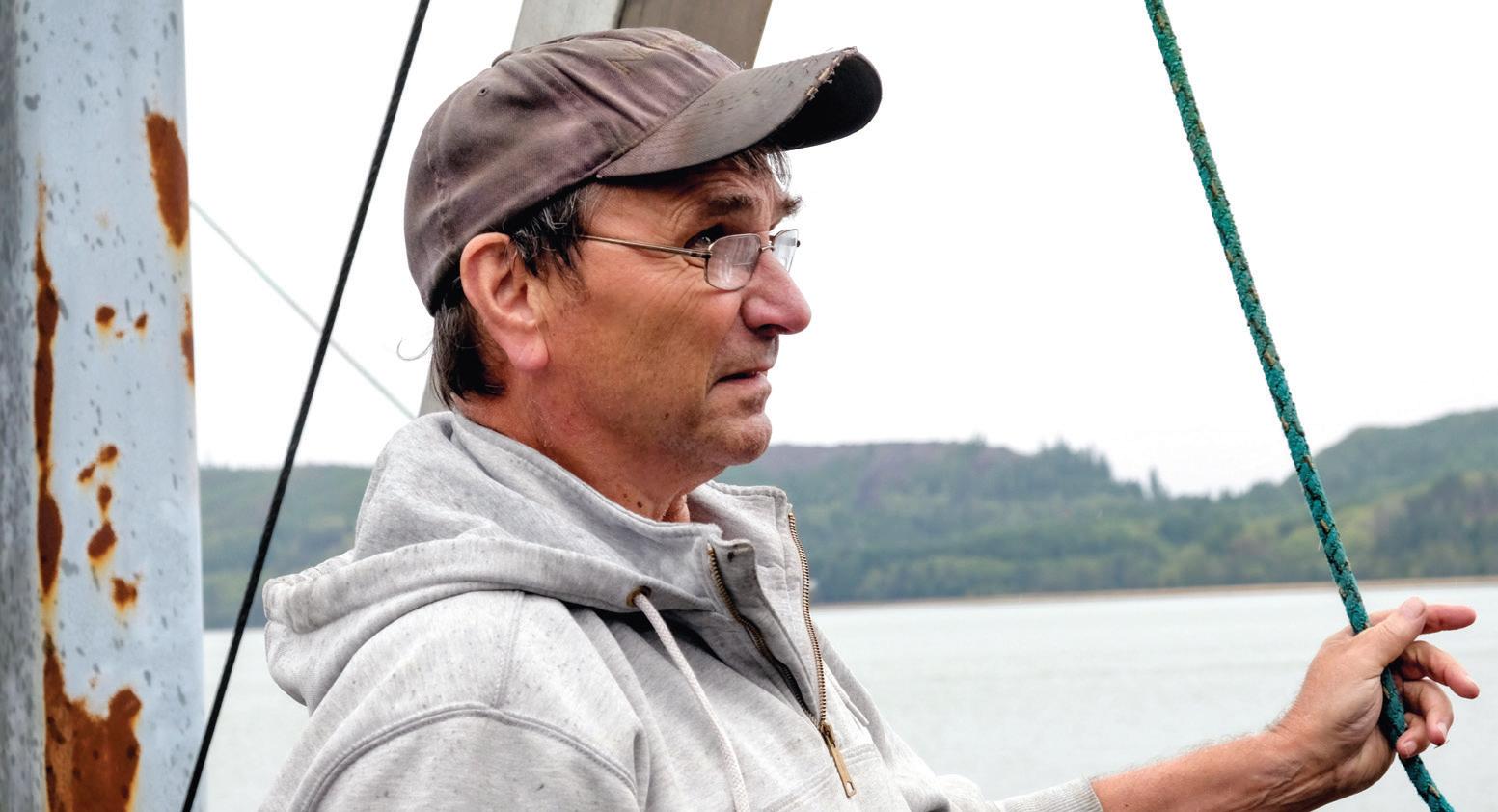
John Herrold
John Herrold farms oysters out of Chetlo Harbor, Washington, where his grandfather fished and farmed, and his father, Harlan, founded Herrold Fish and Oyster Co. in 1946.
Herrold Fish and Oyster Co.
“How long you been doing this?”
“All my life,” replied oysterman John Herrold. He didn’t skip a beat. He was in the thick of another harvest, wending a 30-foot truck, laden with a few thousand pounds of Pacific oysters, up the steep road from his swing dock in Chetlo Harbor, Washington, to the small plant where they are shucked, processed and packaged.
Herrold Fish and Oyster Co. takes its name from John’s granddad, Roy Herrold, who first fished and farmed oysters in the shadow of these forested hills and placid waterways of southwest Washington over a century ago.
Here, where the Naselle River spills its cool waters into the nutrient-rich, heaving, breathing tidal body of Willipa Bay — its churning mix of fresh and salty waters — are ideal conditions for farming oysters.
Of course, this is also incredibly hard work. Patience, physical strength, keen planning and dedication are required above all else.
Luckily, John has some help. On one day, beneath a gray mist and skies that seemed to threaten a downpour but never quite deliver, John’s daughter, Annie, deftly guided heaping totes of Pacific oysters onto a flatbed.
Her husband, Edgar Galvan, plucked the hand-shoveled totes with a crane from the docked dredge, pulling up, towards a truck perched improbably at the edge of an old wooden dock. She caught them in the sky, guided them down and locked them into place, like a jumbo game of oyster Tetris.
Nearby, their three children played, sometimes pausing to watch as their parents worked. The constant scooping sound of plastic scratching at the deck of the dredge filled the air as Armando Guzman and Luis Garcia Aceves, longtime deckhands, hand-shoveled thousands of pounds of oysters with scarcely a pause. It’s a remarkable choreography of motion.
Willapa Bay and neighboring Grays Harbor together make up the United States’ largest oyster growing area, and the region’s shellfish industry is Pacific County’s largest private employer. Much of that can be traced to locally-owned operations, many of which have been passed down through families.
Generations of people moving as one.
DiscoverOurCoast.com 45
Eat & Drink
Stewards
For the Herrolds, this almost didn’t happen. During World War II, while Roy Herrold kept running the oyster farm, his son, Harlan, John’s dad, left to work in the busy Oakland shipyards.
When the war ended, Harlan was eager to come back and take over his aging father’s business but was shocked to discover that almost everything had been sold, barring just one small plot. It was barely enough to scratch out a living, but in 1946, Herrold Fish and Oyster Co. was born.
The late 19th century had seen the collapse of the native Olympia oyster industry. Once a booming trade that fed an insatiable market with train cars bursting with bivalves, this small, slow-growing species that once fed Indigenous people for thousands of years could not keep pace with the demand of a growing, industrialized West.
The Olympias were overharvested. Their foot-deep shell beds were reduced to almost nothing, their habitat was altered and destroyed.
But blooming in their place would be the hardy Eastern oyster. They had gained a foothold — quite literally — and would essentially replace the native Olympia oyster.
But before long, those too would lose their viability, and Harlan would soon find himself importing seed from Japan, setting the stage for dominance of the Pacific oyster cultivated today.
The old dock Harlan built, and his collection of stout wooden buildings, still dot the hillside property. Sixty-five years ago, high up on the hill, he built himself a house. John grew up there, and Annie did too. Like those first Pacific oysters, everything Harlan touched seemed to live on, like the Tokeland, a wooden dredge built in 1905 that he refurbished in the 1940s.
It was only a few years ago that it was finally retired, capping an unprecedented 120 years in service.
Does it make John happy to see his family taking on this business? “Sometimes,” he said. “It adds a whole different dynamic.”
He warmed slightly as he reflected. “She enjoys it. She really likes what she does.”
Things have been mostly steady year over year, John said. Lately, prices are up. Maybe a little too high, he thinks. The future worries him some.
“The big companies are getting bigger,” he said. “I don’t think that’s good for the industry. I think the industry is stronger if you have a lot of players.”
He sees shellfish farmers as a generally cagey type, preferring to stick to their responsibilities rather than muck about in someone else’s affairs. But, he said, “If there’s an issue that affects everybody, we’ll attack it as a group.”
By sticking together, John said growers have stopped several what he called “ill-advised developments” — a pulp mill and other heavy industries that would scarcely be compatible with the sensitive nature of the bay.
“Oyster growers have always been a steward of the land,” John said. “We have a vested interest in keeping the water quality as it is.”
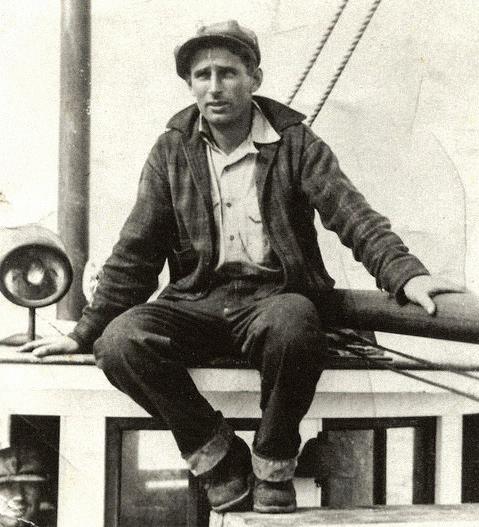
During World War II, Harlan Herrold left to work in the busy Oakland shipyards. At the war’s end, he was eager to return to Willapa Bay.
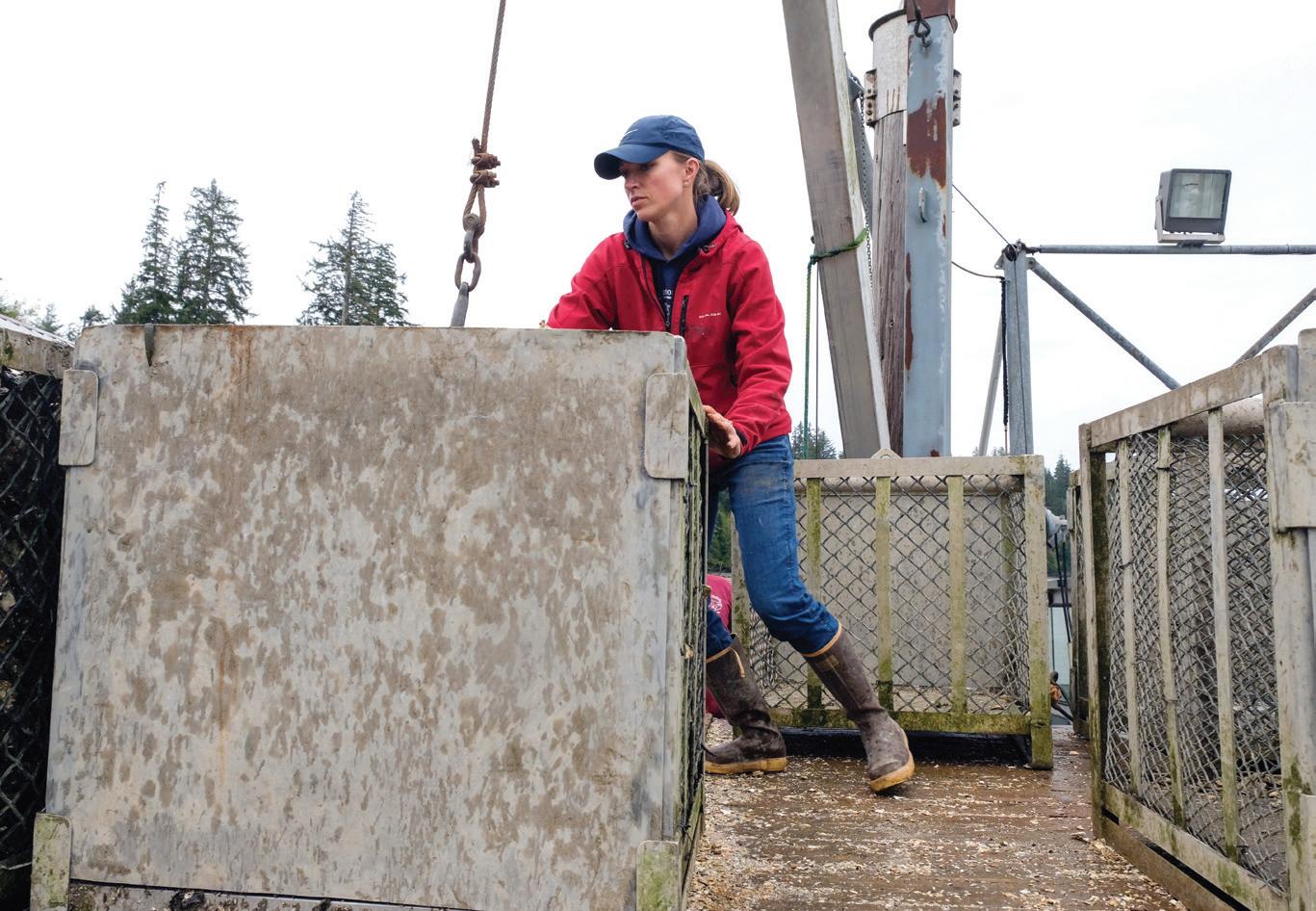
46 Our Coast Magazine 2024
Harlan Herrold
Annie Herrold
Annie Herrold, a fourth-generation oyster farmer, guides freshly harvested Pacific oysters onto a waiting truck.
Deckhands
Armando Guzman and Luis Garcia Aceves have worked for Herrold Fish and Oyster Co. for almost a decade.
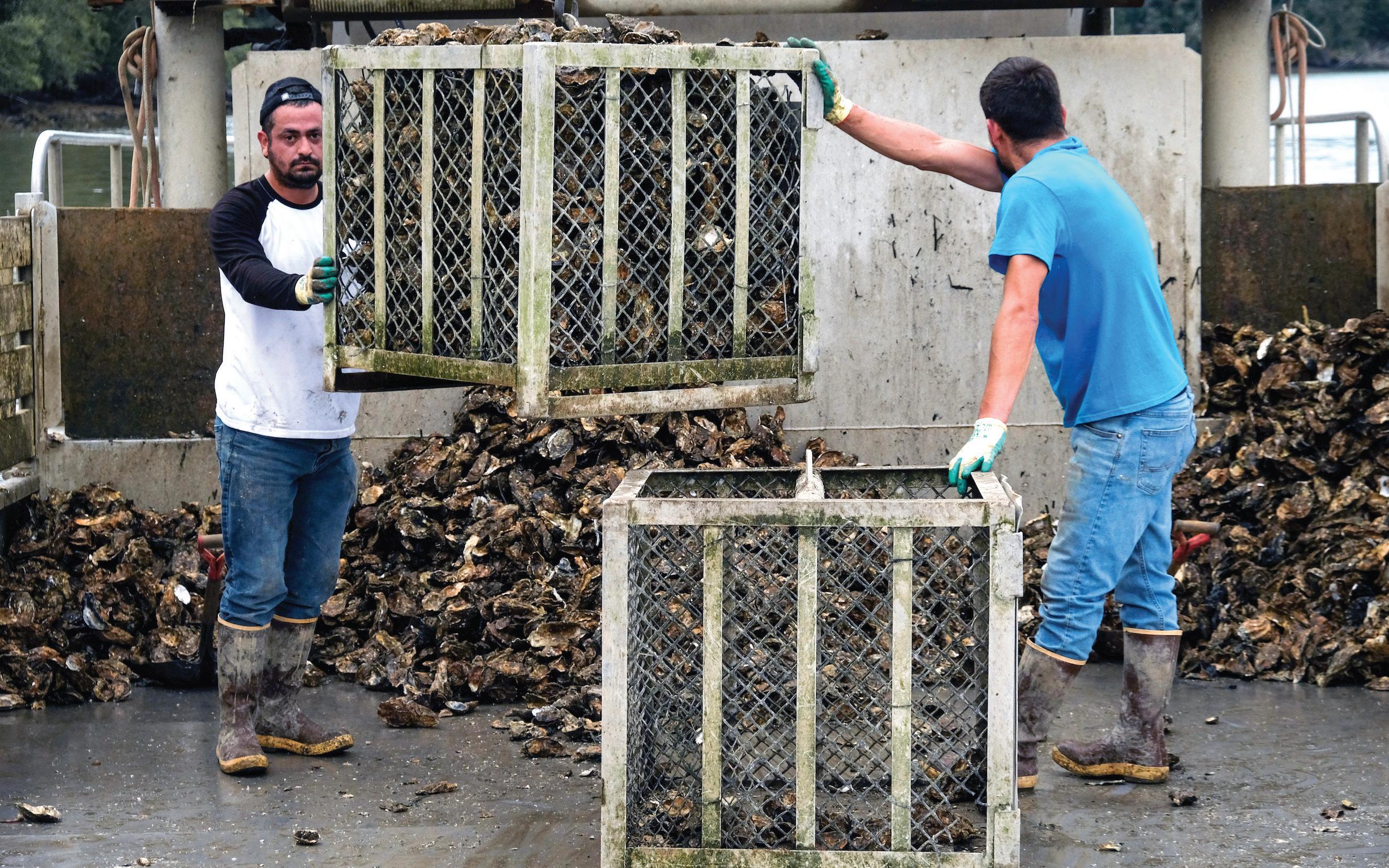
But it’s the next generation that gives him the most hope. “The young people that are getting into this industry have their heart in the right place,” he said. “In a lot of ways, they’re smarter than the previous generation. More educated and more inquisitive.”
Annie has two older sisters. One is a schoolteacher and the other is a nurse. When Annie went off to Oregon State University, she had no intention of returning to the family business. Picking oysters and cutting open seed bags for five cents a pop was just something she did. Something she grew up with— not a career, not her future. But shortly after graduation, she found herself back on this vast, blue bay.
“Sometimes it takes walking away from something to realize what you had,” Annie said.
Right away, she had ideas for diversifying what the company could offer. The family had never shucked on-site before. She had a plan for a new wing of the business.
Chetlo Harbor Shellfish took shape, adding growth and another layer of security.
Annie estimated that about half of the 800 acres the farm owns are currently under production. Seed is imported from hatcheries
off-site, and then nurtured in on-site tanks that provide optimal conditions for rapid growth. “It’s almost like a little jacuzzi for them,” Annie explained. “They put out their little foot and get set.”
The baby oysters, or spat, firmly set on reused oyster shells, are then moved to a seed bed, then on to the main growing bed and eventually to a fattening bed. A nuanced shuffling, informed by years of experience in and around these waters, guides the whole affair. The dance may take three or four years before an oyster is plump and ready for market.
Even though production has been steady and reliable for years, Annie warns that the shellfish industry always hangs within the balance of the greater ecosystem of the bay.
Presently, she said that invasive burrowing sand shrimp are a growing problem, and lamented a “lack of tools” growers have at their disposal in light of pesticide restrictions.
“The amount of beds I’ve seen where before there wasn’t a shrimp problem has skyrocketed,” Annie said.
Invasive European green crab are another issue, but so far, the farm has avoided significant impacts. Others have not been as lucky. “Basically, any area they’ve moved into
has just been destroyed,” she said.
Despite the challenges ahead, Annie stands by an “if it ain’t broke, don’t fix it,” kind of mentality. That doesn’t mean it’s all smooth sailing. Problems are part of the profession and adaptability is necessary. But every once in a while, the upheaval is of the good kind. Like when Galvan turned up about 10 years ago — a quiet, hardworking deckhand that Annie noticed had a knack for “just getting it.”
She found herself falling for his consistent, cool nature. Marveling that he always met every obstacle as it came, in real-time, when others would have become frazzled, buckled or quit. “Luckily, he’s the most easygoing person ever, or I’d have probably driven him crazy by now,” Annie laughed.
Galvan had picked oysters as a teenager, working the muddy bottoms of the bay for Jolly Roger, another legacy oyster grower where his mom had worked for decades. So when he showed up at Chetlo Harbor, he wasn’t exactly a greenhorn.
Now, with three children between them, Annie sees her childhood in theirs. She embraces the hard-won but worthwhile lessons she thinks they’ll learn, at first playing, then likely working in the oyster beds.
DiscoverOurCoast.com 47
Eat & Drink
Challenges
Across Willapa Bay, Brian Sheldon, his wife, Marilyn, and their son, Jeb, were down at the Nahcotta marina tying up a skiff as their crew of workers unloaded a fresh catch onto the dock. A netted bag bulged with — not oysters — but invasive European green crab.
These won’t make their way to market, but instead will be collected by state authorities.
They’ll be counted, frozen and their harvest locations catalogued. A small reimbursement will be paid to Sheldon’s Northern Oyster Co., but the main goal is to get them out of the bay.
Oysters already must dodge predation from otters, raccoons, birds and native crustaceans, like the Dungeness crab. But green crab have edged the natural balance toward a tipping point. Throw in burrowing shrimp and it’s like a one-two punch.
Shrimp churn up the bottoms, eventually smothering the oysters where they lay. Jeb recently found out the hard way when he walked into an infested bed, only to sink in up to his hips.
A sturdy frame topped with a square face yet to be etched with worry lines and wrinkles, Jeb still needed a hand to be pulled from the muck. Yet despite the challenges, despite the uncertainties, he said he’s still hopeful about the future of oyster farming in Willapa Bay — the place where his great-grandfather first plucked an oyster from in the late 19th century.
“There’s always something that’s not going right, but that’s just part of the industry,” Jeb said.
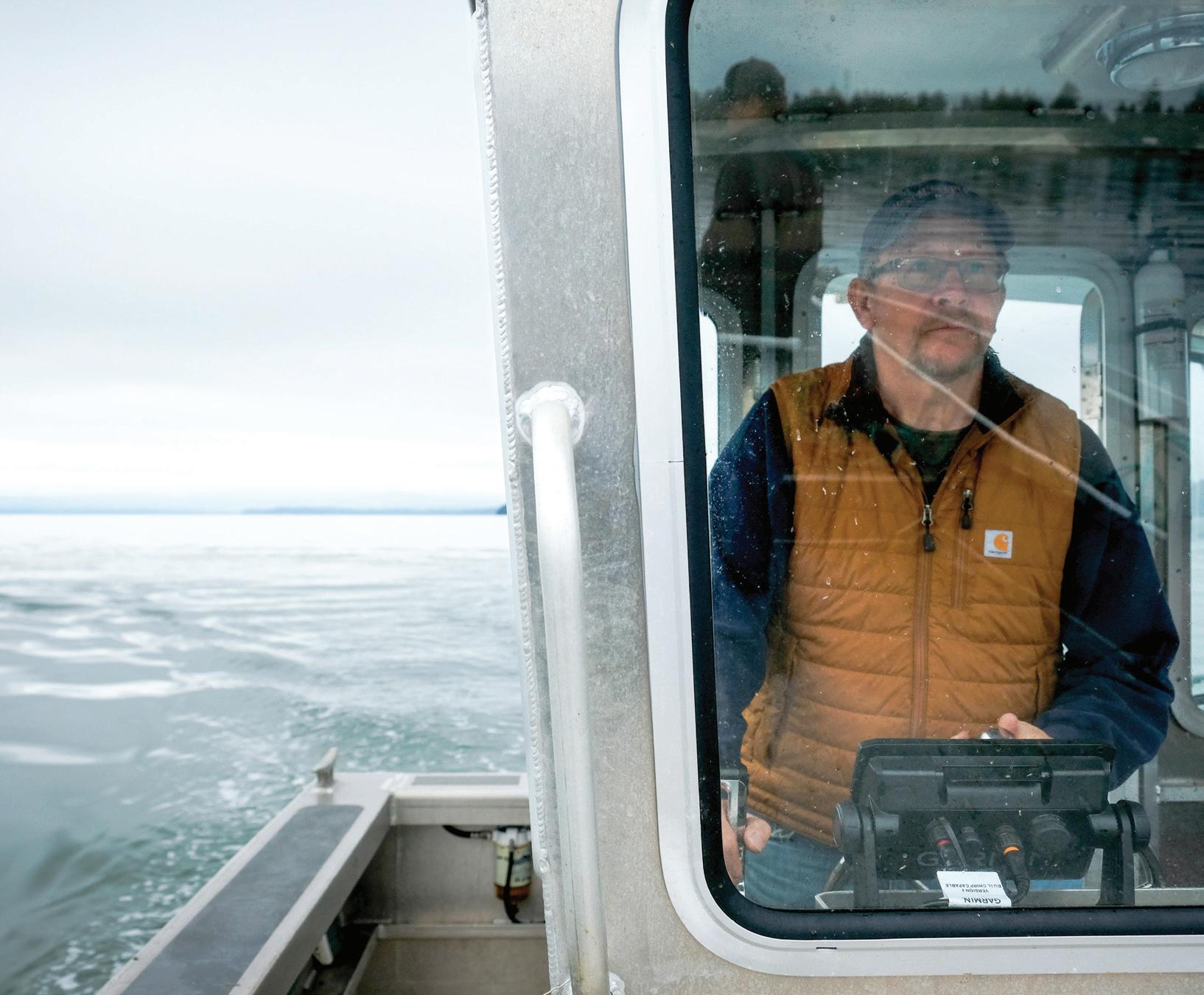
Taking it in stride, rolling with the punches. Feint. Dodge. Counterpunch. Take one on the chin. Get back at it. That’s oyster farming.
Navigating invasive species, unpredictable harvests and unreliable labor markets all remain formidable obstacles. “It’s been tough sometimes,” Brian said. “We didn’t ship for three months because we didn’t have the crew.”
Managing their 1,000-plus acres requires a formidable team of dredge operators, farm managers and general laborers. While mechanical harvesting accounts for a portion of what Northern Oyster Co. does, the majority is still hand-picked, natural set oysters.
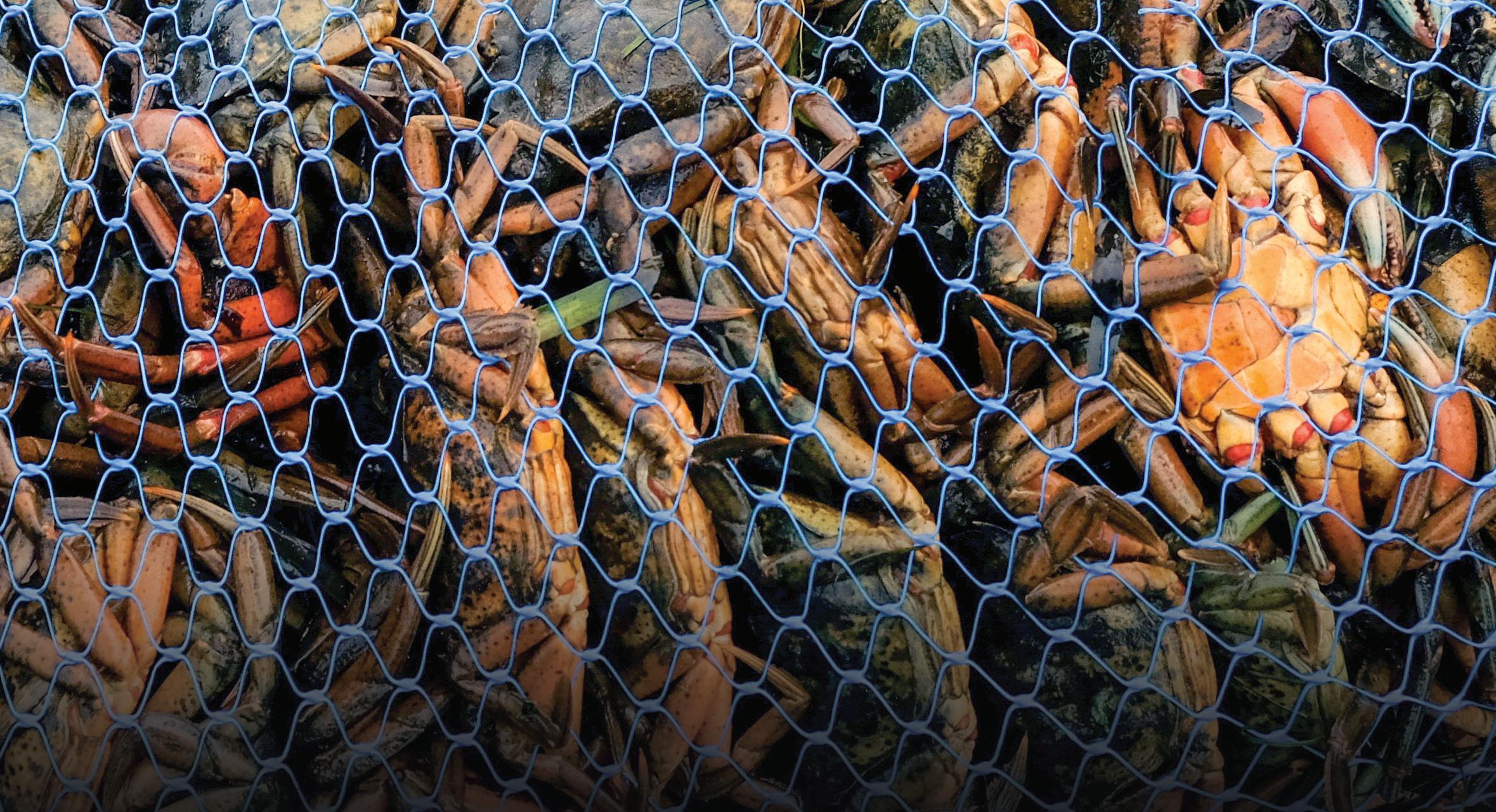
It’s been the preferred family method since the 1930s when Brian’s grandfather split from his partners in the salmon business to focus exclusively on oysters and his newly founded Northern Oyster Co. “I’m glad he did,” Brian said, “because salmon went south.”
After the construction of Jetty A in the 1930s, fish traps in the bay filled up with sand, among other challenges, but the oysters managed to hold on.
Over time, the farm grew, shrank, and then grew again, always seeking out the best beds for the natural set. Brian thinks the south part of the bay is most favorable for the natural set.
Still, he prefers to finish his oysters further up north, near Leadbetter Point, where the upwelling of cold waters flushes phytoplankton in from the ocean.
Northern Oyster Co. also farms Manila clams, which have an even longer crop cycle, anywhere from four to seven years. “Just looking that far down the road,” Brian said, “that’s a big challenge.”
Like others who have found themselves scratching out a livelihood from the bottoms of the bay, Brian didn’t expect to end up here. His parents encouraged him to get out, go to school and explore other options, and he did.
After earning a degree in engineering from Seattle University he worked for several industrial manufacturers, including Boeing. It was a good job with financial security, but something still drew him back.
His parents were getting older and running the farm was becoming something of a burden.
48 Our Coast Magazine 2024
Brian Sheldon
Brian and his wife, Marilyn, have navigated invasive species and unpredictable harvests while managing Northern Oyster Co.
Invasive crab
European green crab are a threat to oyster growers.
Oysters already must dodge predation from otters, raccoons, birds and native crustaceans, like the Dungeness crab. But green crab have edged the natural balance toward a tipping point.
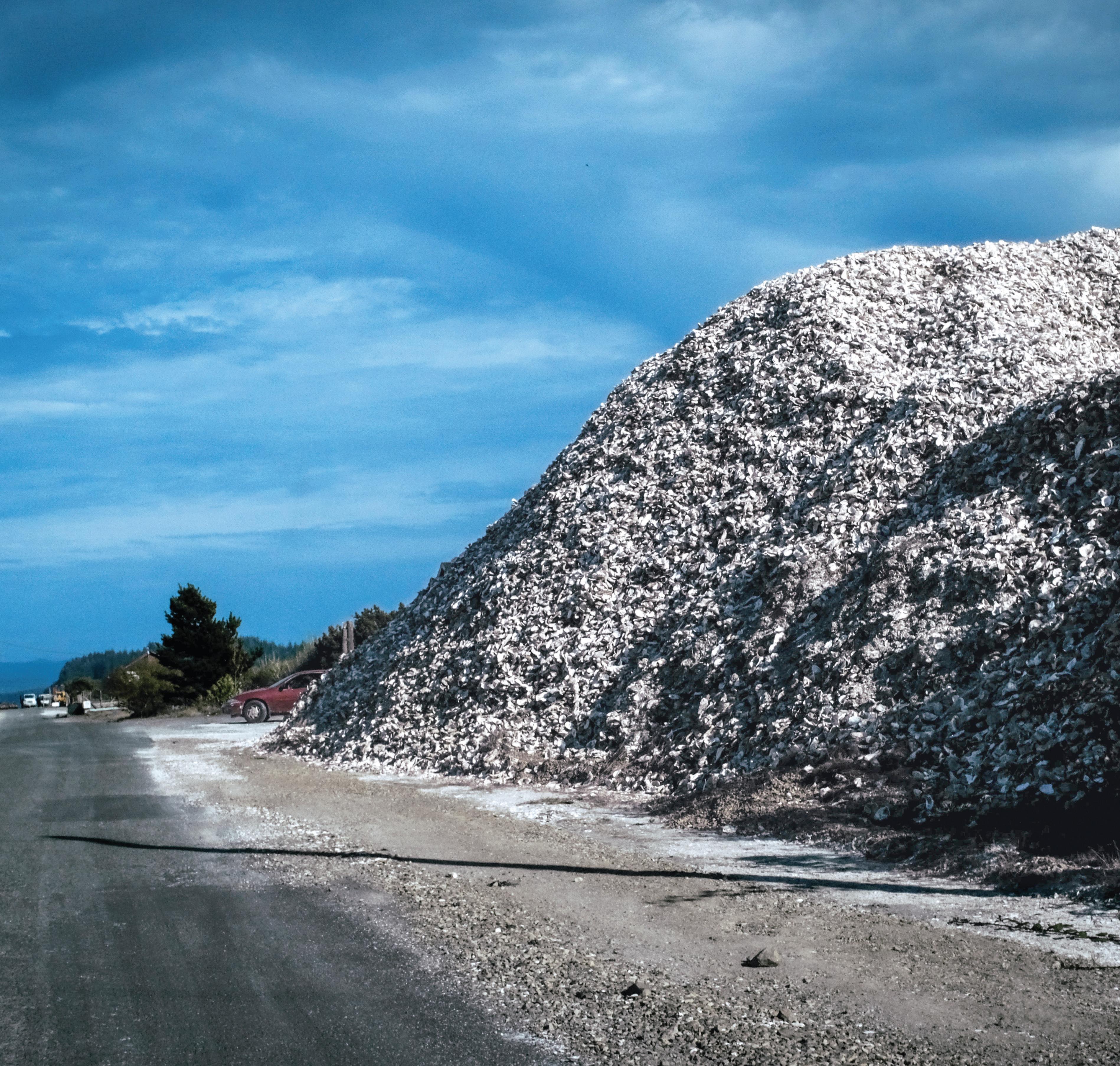
Nahcotta
It wasn’t exactly high-tech, Brian thought, but oyster farming was filled with little puzzles, in many ways just like the technical problems he liked solving as an engineer.
He even found a kind of romance to it all, at least a kind not found in the big city.
“You get out in the middle of that bay at night and it’s just very — I always found it kind
of comforting,” Brian said. “That dark is sort of, you got your light on, you can’t see very far, but you can see the other guys you’re working near. And that’s what we’re doing this time of year because the lower tides are all at night.”
Taking comfort in the darkness. Having faith that the oyster will reseed. That the bay will be replanted with a bounty. A belief that it
will and should all carry on.
“I don’t think when my grandfather got into this, he’d imagine how far it would go,” reflected Brian, as the sun set, as the tide rose, as his wife and son worked nearby.
“I don’t even look at this like it’s my farm,” Brian said. “We’re taking care of it for a while, and maybe the next generation will take it up.”
DiscoverOurCoast.com 49
Mountains of oyster shells sit piled along a roadside near Nahcotta, Washington.
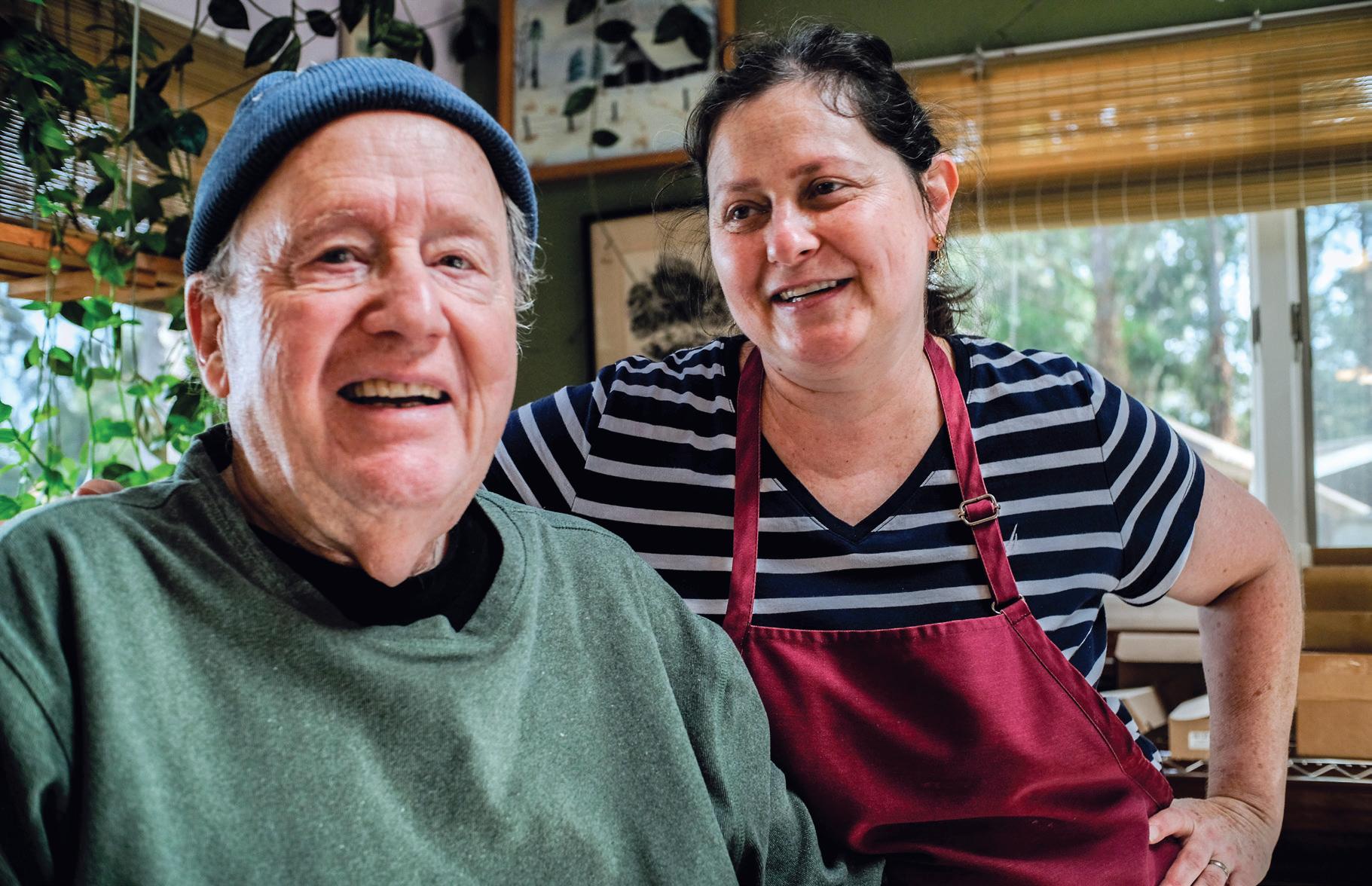
Returning
It didn’t seem ironic to John Rowell to be starting a business near Oysterville some hundred-odd years after the boom and collapse of what was once a mighty shellfish empire. In fact, it felt like the perfect place to start over.
Rowell’s grandfather spent time crabbing and fishing these same waters in the early 20th century. His dad was born here, but work in engineering and business took him around the world.
“To him, this was always home, even though he was only here a very short time,” Rowell said. After traveling the world, he came back to this little strip of bay and built a home in the late 1970s. But by then, Rowell himself had caught the travel bug and would end up spending the next 40 years in Brazil.
It was a grand adventure that would lead him to his wife, Raquel, as well as a lifelong fascination with food production and quality management. It was there he ran several business ventures — restaurants, wholesale and even livestock.
“I have always worked with food,” John Rowell said.
Life was good, great even. But then, out of nowhere, he got a diagnosis of melanoma.
At that time, treatment options were scarce, and a doctor in Brazil strongly recommended staying out of the sun. He knew just where to go — Willapa Bay.
Raquel had never participated in any of her husband’s businesses but figured they could try something on a small scale that would complement their interests. Raquel wanted to do something that could express her love of cooking. John liked the angle of offering a product on an artisan scale. Together, the couple opened Willapa Artisan Kitchen.
In Raquel’s experience, American meals tended toward the sweet. She wanted to focus on the seafood and the savory dishes she missed from back home.
They built a full commercial kitchen but started small, just dialing in a local harvest clam chowder. They added smoked oysters, then fluffy panko crab cakes with celery and green onion.
Then, crab mac and cheese with mascarpone, which Raquel coaxes out a delicately rich flavor without it being overly heavy. Fresh oysters and clams are always available on-site.
The Rowells harvest what they can from their modest acreage — “just big enough to have a resident bear,” he said — and are proud to buy from other farms like Chetlo Harbor. Hot meals are offered on-site, but everything is also available frozen or cold-packed for overnight shipping.
Between online sales, word-of-mouth and faithful customers, they’re making it work.
“We’re not big oyster farmers,” Rowell said. “We didn’t want to be. We’re much more tied into quality.”
Adapting
Several decades into the oyster game, things were positively humming for Dave Nisbet.
It was 2009, and he had grown the familyrun Goose Point Oysters company from a tiny 5-acre lease into a behemoth of over 1,000 acres.
“And then we hit a wall,” Nisbet said.
Hatcheries couldn’t produce larvae, at least not efficiently. Things suddenly looked bad.
Oyster growers got together. An oceanographer was hired to help them look into what was happening. What they found was that creeping ocean acidification was taking a toll on juvenile larvae. Shells were stunted, misshapen or not formed at all.
Calcium carbonate is used to form hard shells, but with excessive absorption of carbon dioxide into the oceans, free carbonate ions are depleted. Additionally, aragonite — a substance that binds calcium and carbonate ions — dissolves in acidic conditions.
Nisbet adapted.
“I kind of went on a mission to figure out what we were going to do for seed,” he recalled. That journey finally ended in Hawaii, where Goose Point Oysters now operates a hatchery, producing millions of pounds of seed for themselves and other growers on the West Coast from Alaska to California.
Somewhere along the way, Dave also found time to get married. He had four daughters (each has an oyster dredge named after them), and all went off to college to pursue professional careers.
One came back.
Kathleen Nisbet Moncy has spent a good chunk of her life in the oyster beds, first as a toddler dangling in a basket off her dad’s back. Now, a mother of two herself, she is at the helm of this still-growing oyster empire.
She is now one of the bay’s most recognizable and fiercest defenders.
Nisbet Moncy has lobbied for more tools to manage the burrowing shrimp and invasive green crab. She has sought protections for the bay and called for contingency plans in case of an environmental emergency.
“In order to protect water quality, we need to maintain really high standards,” she said.
Her tenacious defense of the bay has been noticed by many, most recently U.S. Rep. Marie Gluesenkamp Perez, a Washington state Democrat who invited her to speak before the House Committee on Small Business.
She scarcely expected her march through the mudflats might one day lead to the marbled halls of Congress. Still, she never once balked at the opportunity.
50 Our Coast Magazine 2024 Eat & Drink
John and Raquel Rowell
The Rowells, of Willapa Artisan Kitchen, at their home and oyster farm near Oysterville, Washington.
She took the dance to warn of threats to the bay from oil spills and invasive species, ocean acidification and simple complacency. She spoke about the importance of the industry to her family and her community.
She was surprised that oil executives in attendance seemed shocked to learn that one of the most pristine and prolific oyster grounds in the world was lying so close to their proposed oil and gas projects. She saw influential eyes open.
“It was just a different perspective that they hadn’t heard before,” she said.
She recounts that before the Deepwater Horizon oil spill in 2010, the Gulf of Mexico was the largest producer of oysters in the United States. Now, Willapa Bay holds that title. But sometimes she wonders — for how long?
It would be easy to cash in, sell out, give up in the face of such threats. But they have no intention of doing so. There’s too much at stake. The shellfish industry is the largest private employer in Pacific County, a tightknit community that accounts for millions in wages.
Without really trying, Nisbet Moncy learned to speak Spanish as a teenager. She grew up with the kids of her dad’s generation of workers, who in many cases became workers themselves.
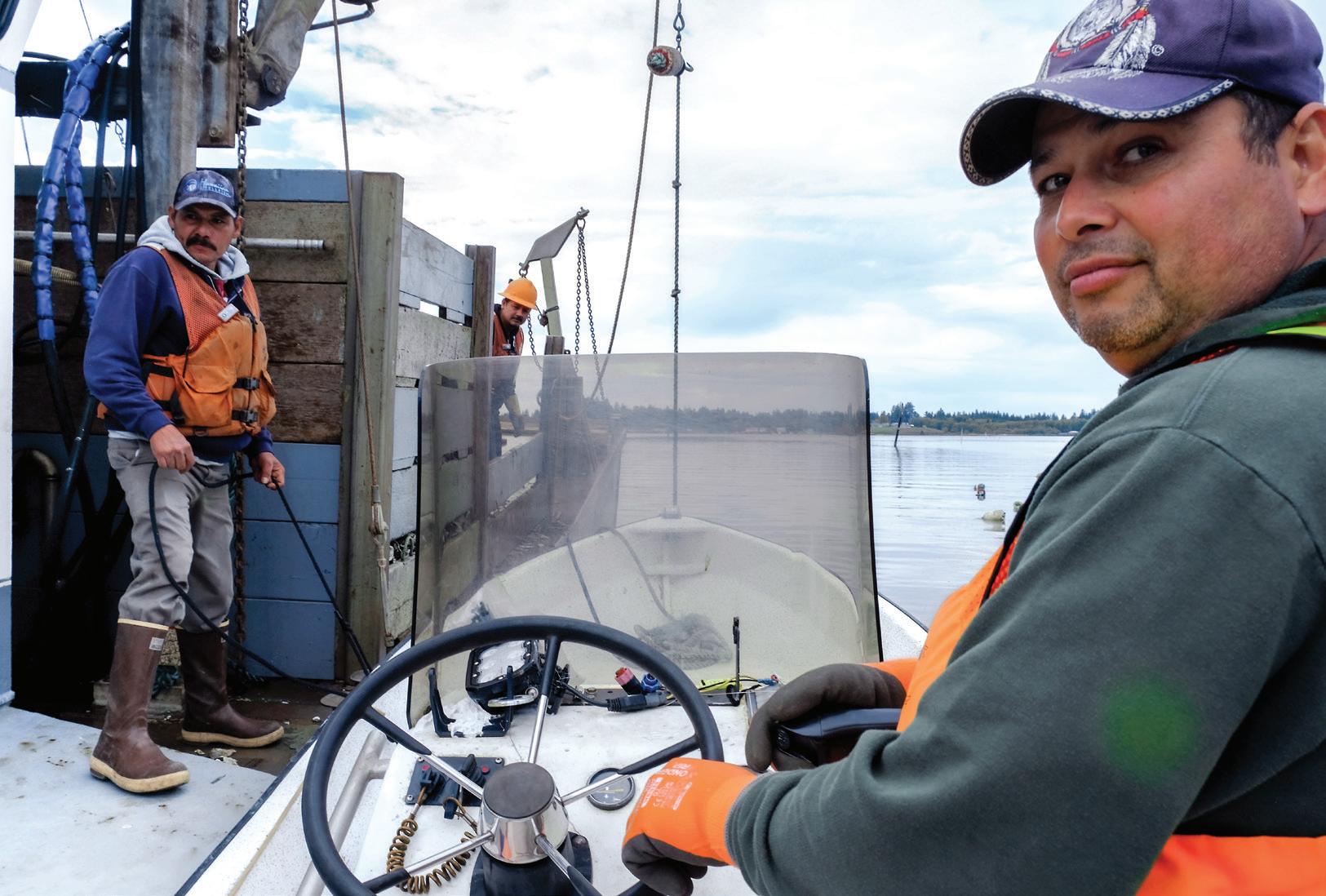
Francisco is the farm manager at Goose Point Oysters, where he’s been employed for 25 years.
“We were all just kind of raised together,” she recalled.
Francisco Meliton is their farm manager, and he’s been with Goose Point for 25 years. He is also part of three generations of workers in the industry. His father was an oysterman, and now his kids are even getting into the work.
That takes some getting used to. Meliton recalled how he recently had to warn his eldest boy, new to the workforce, that — “out here, I’m not your father, I’m your boss.”
Nisbet Moncy laughed, but she gets it too. The little Panga skiff that Meliton pilots back out into the bay, the late afternoon sun has just fought through the clouds and warms his face, still penciled with a grin.
“As long as we’ve been in business, they’ve been with us,” she said, nodding toward Meliton. “It’s the families that work with us too. We’re like one big family together.”
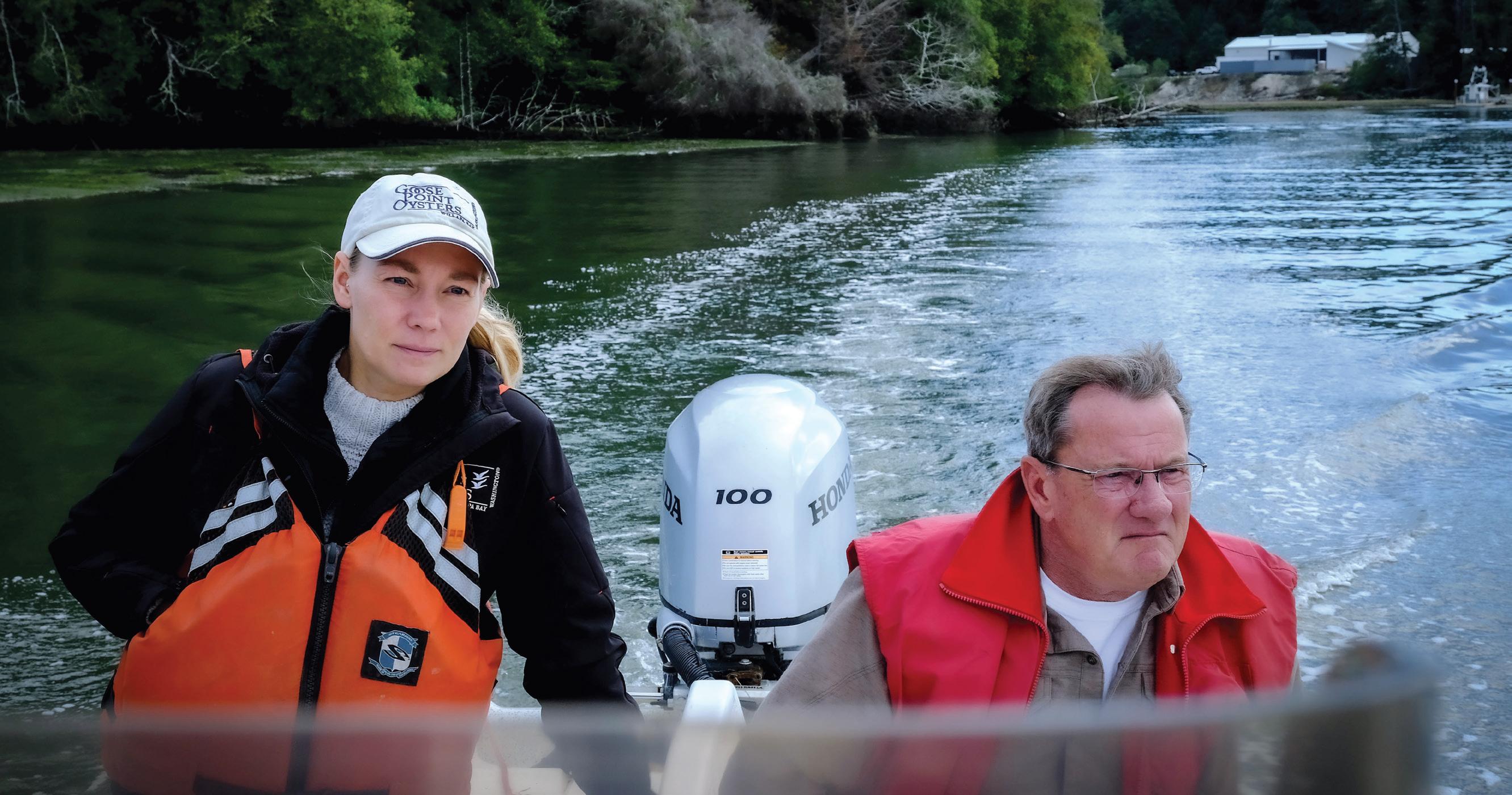
DiscoverOurCoast.com 51
Kathleen Nisbet Moncy
Kathleen, left, is the chief operating officer of Goose Point Oysters.
Francisco Meliton
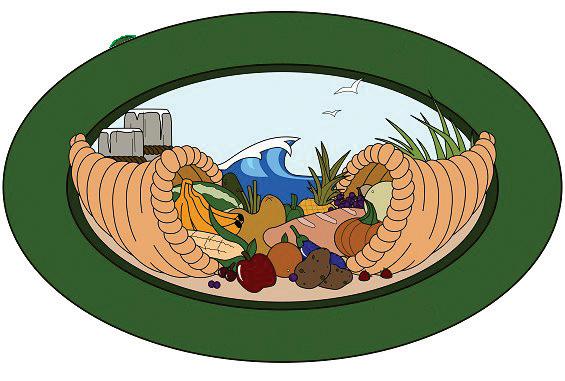
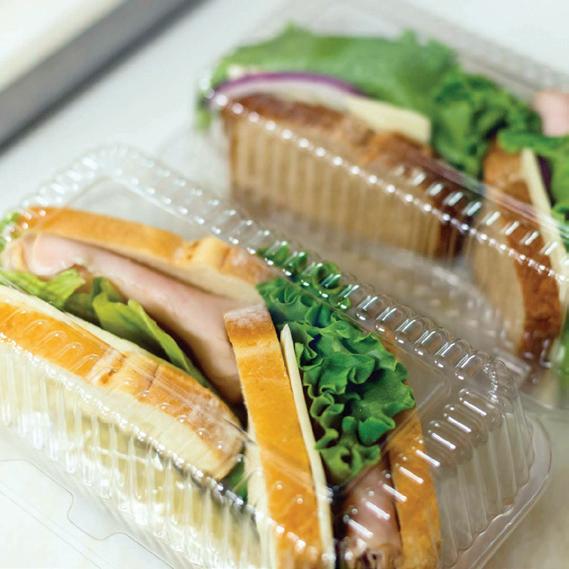


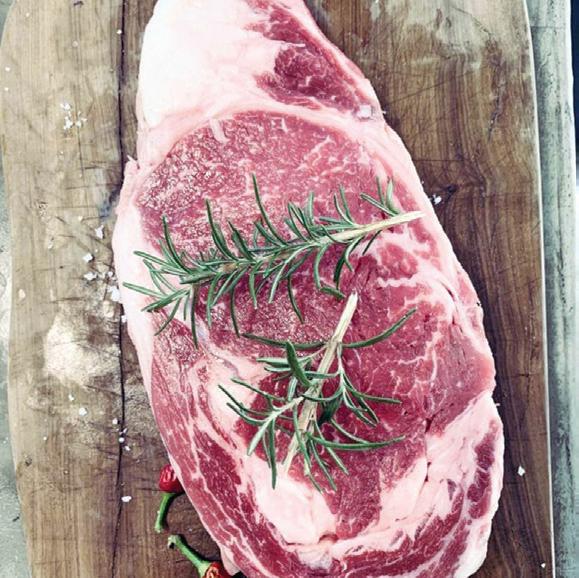
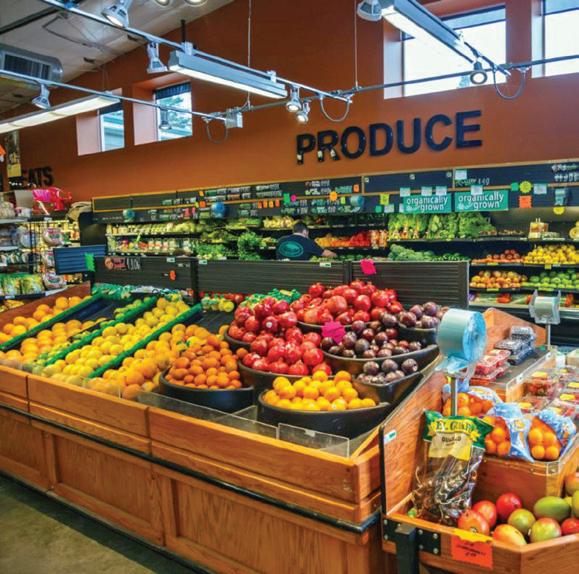
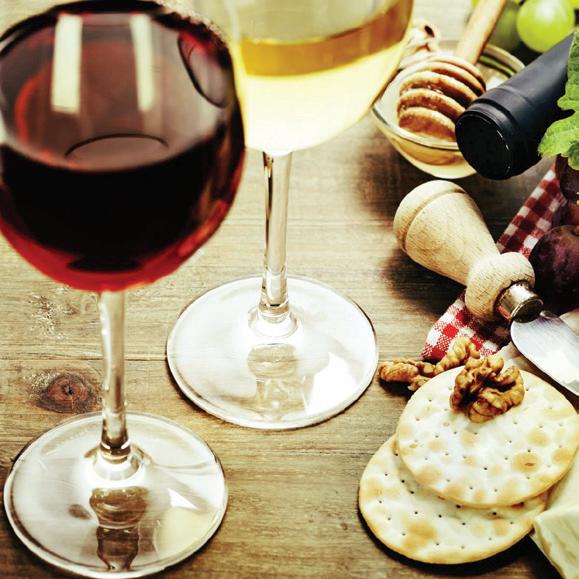
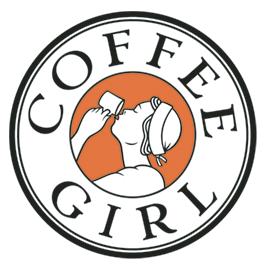
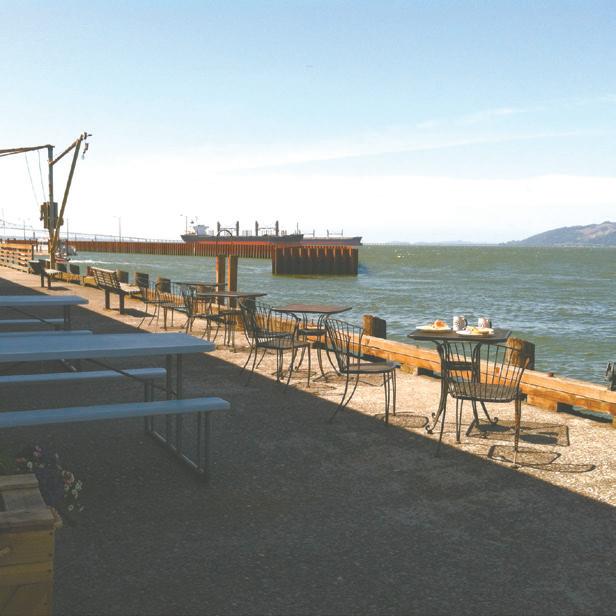



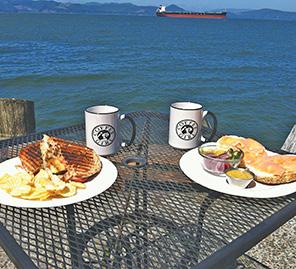

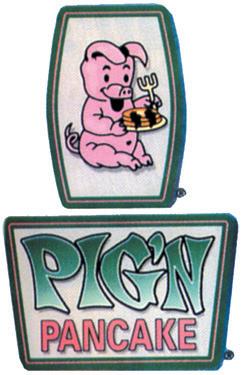
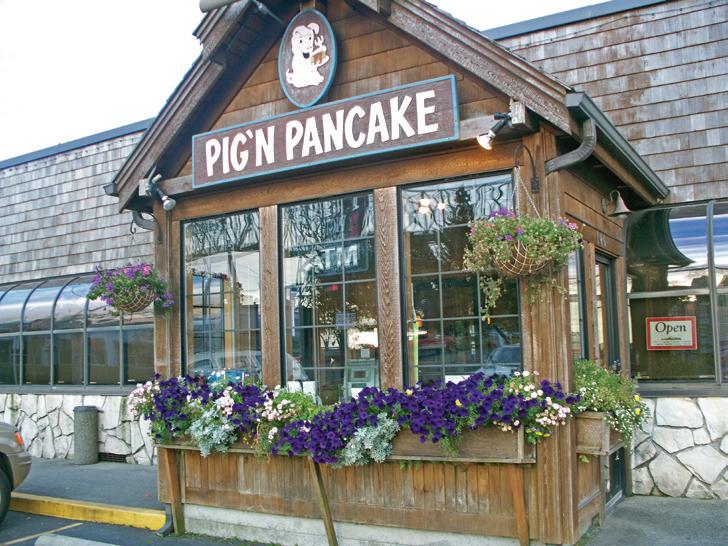

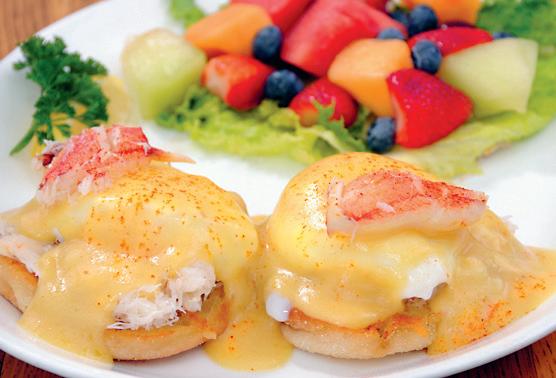
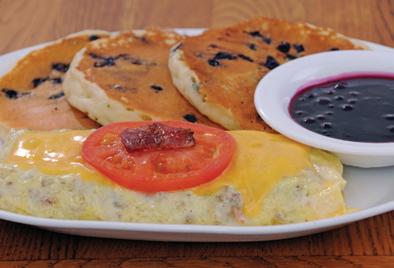

52 Our Coast Magazine 2024 MANZANITA CANNON BEACH Fresh Foods - Manzanita 730 Manzanita Ave., Manzanita Open 8am-9pm, Sunday thru Saturday Manzanita’s Finest Liquor Store, Same Hours Fresh Foods - Cannon Beach 3401 S. Hemlock St., Cannon Beach Open 7am-9pm, Sunday thru Saturday FIND US ON FACEBOOK AND YELP FRESH FOODS Seaside 323 Broadway 503-738-7243 Cannon Beach 223 S. Hemlock 503-436-2851 Lincoln City 3910 NE Hwy 101 541-994-3268 Newport 810 SW Alder St. #A 541-265-9065 Astoria 146 W. Bond 503-325-3144 Breakfast • Lunch • Dinner Steaks • Seafood • Salad • Chowder Serving the Oregon Coast Since 1961! “aaaaah...” * “oooooh...” * One of the most unique Cafes in the world. Located on the Columbia River in the West’s oldest cannery building; the historic Hanthorn Cannery at the end of Pier 39 * - typical reaction to our riverside dining area. Come Join Us! Friendly services • High quality espresso Sumptuous fresh pastries Unique breakfasts and lunches 100 39th Street #2, Astoria, Oregon 503.325.6900 TheCoffeeGirl.Com
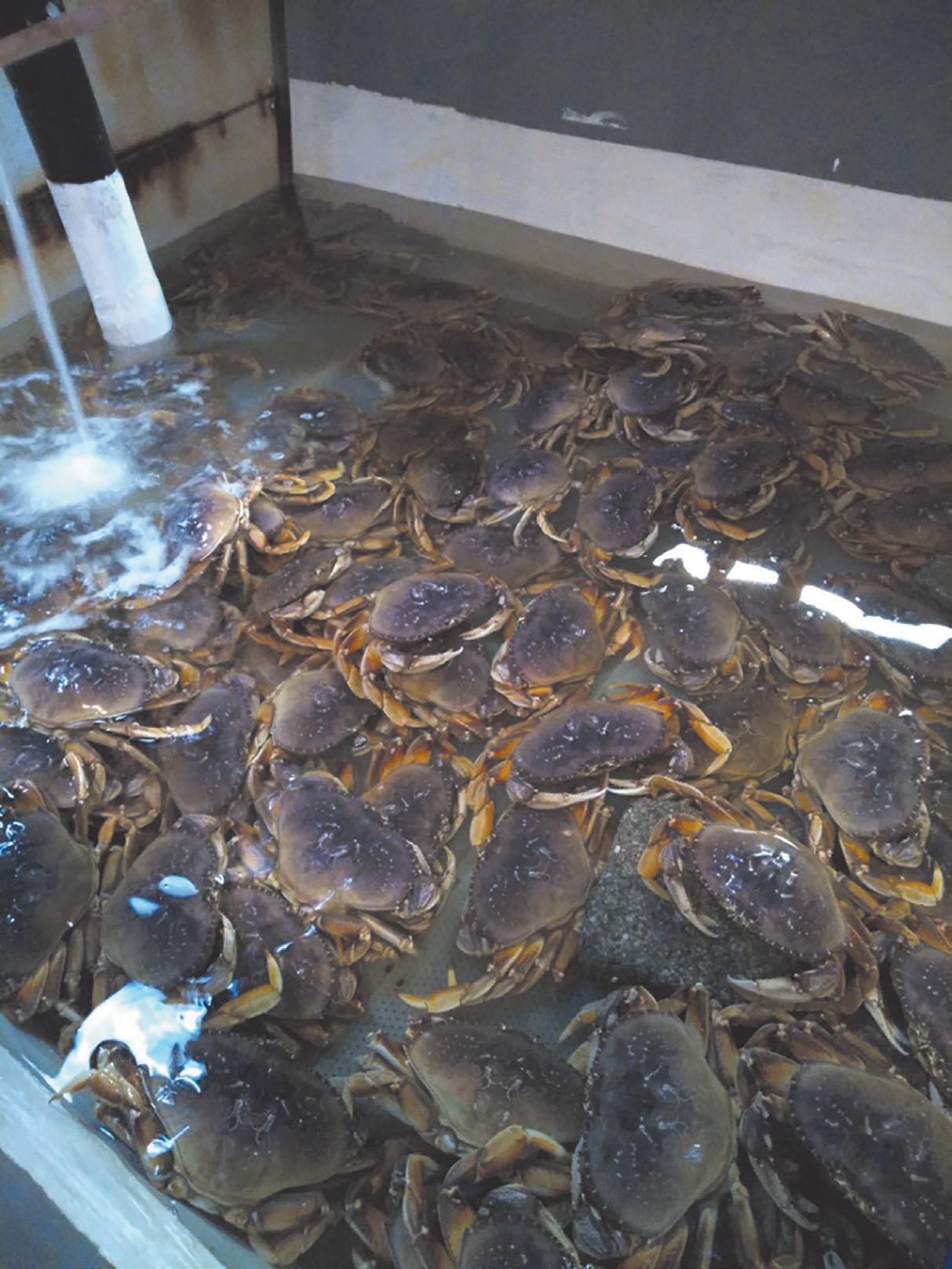


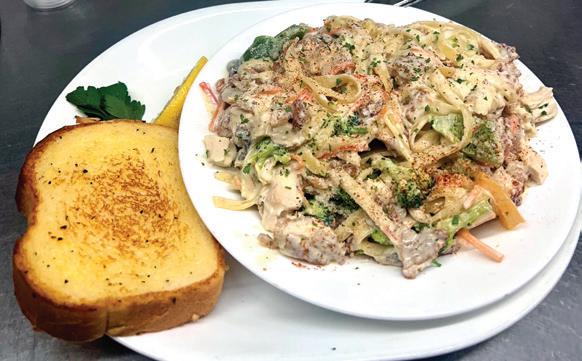

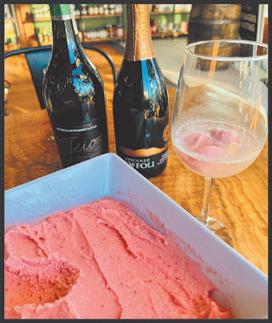
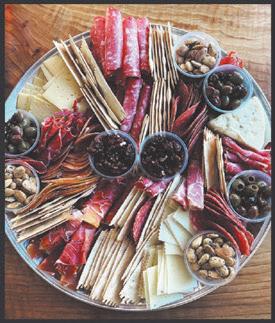

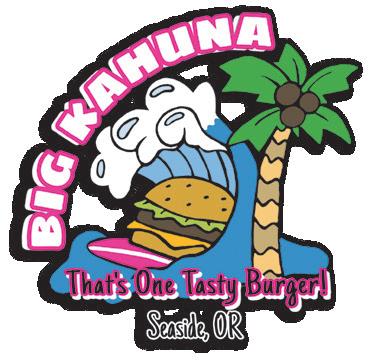
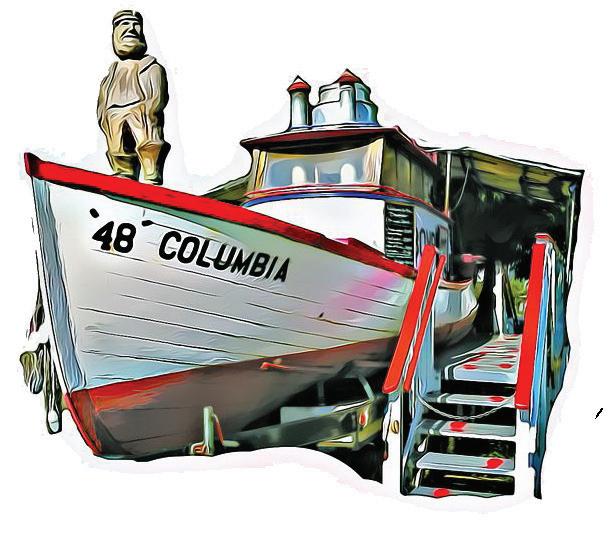
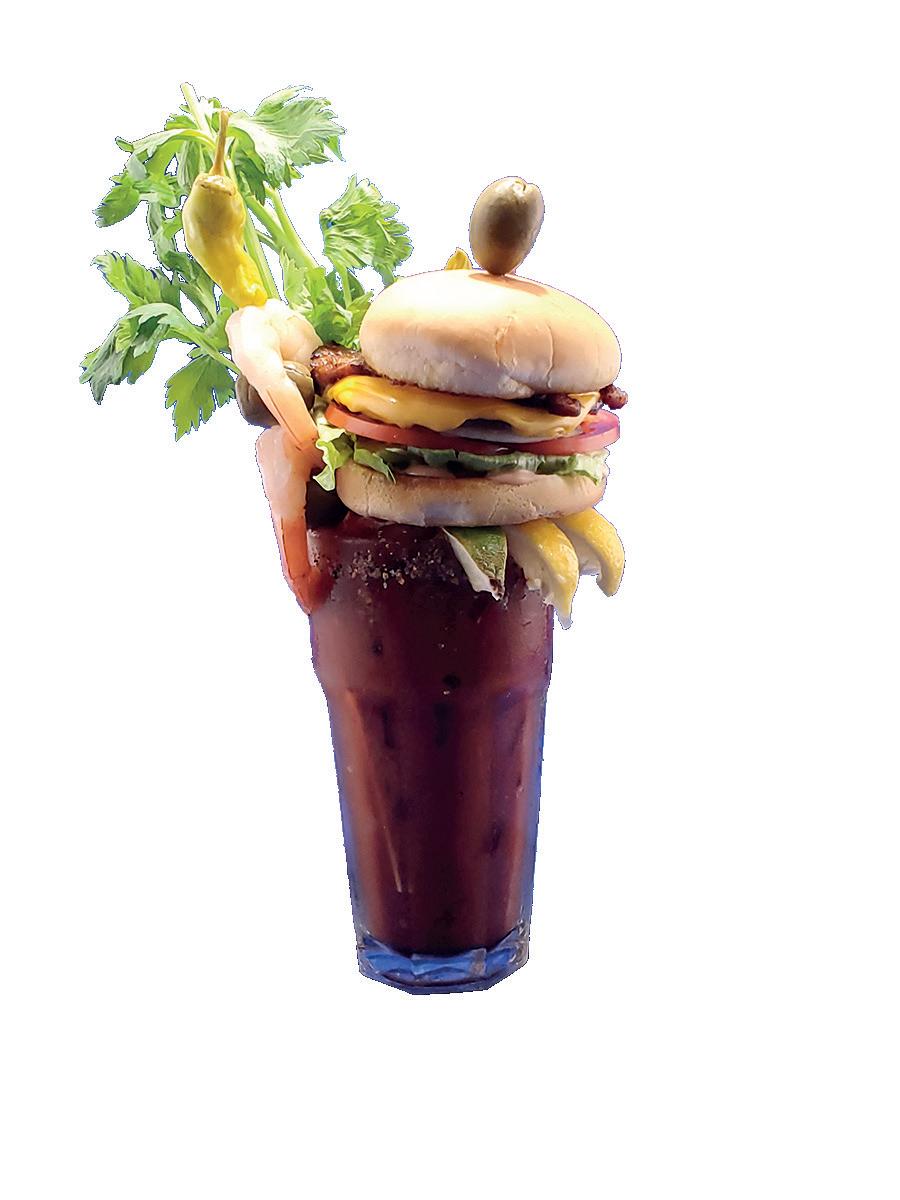
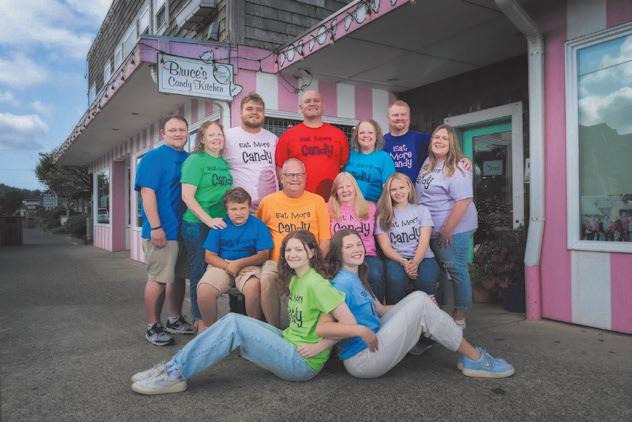
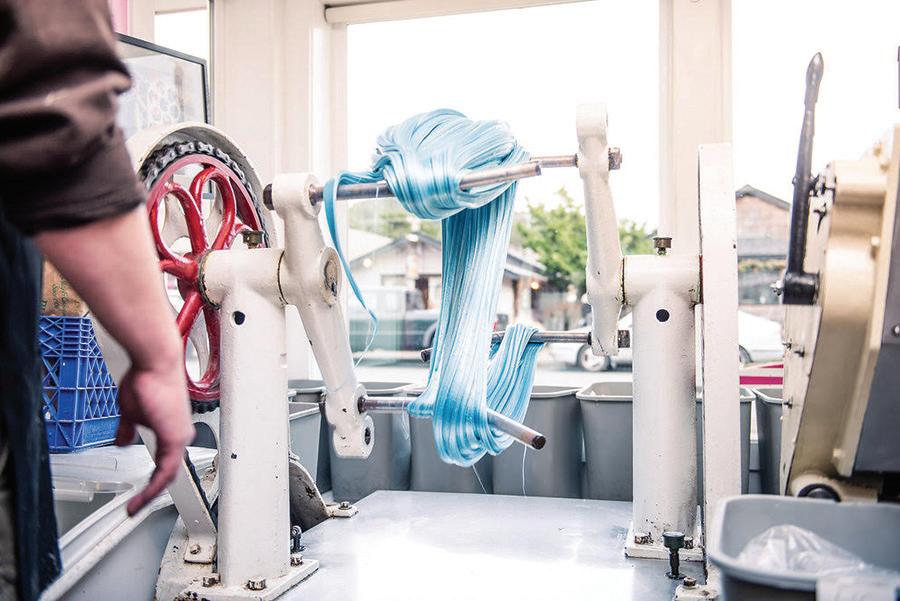
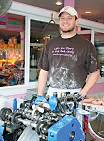
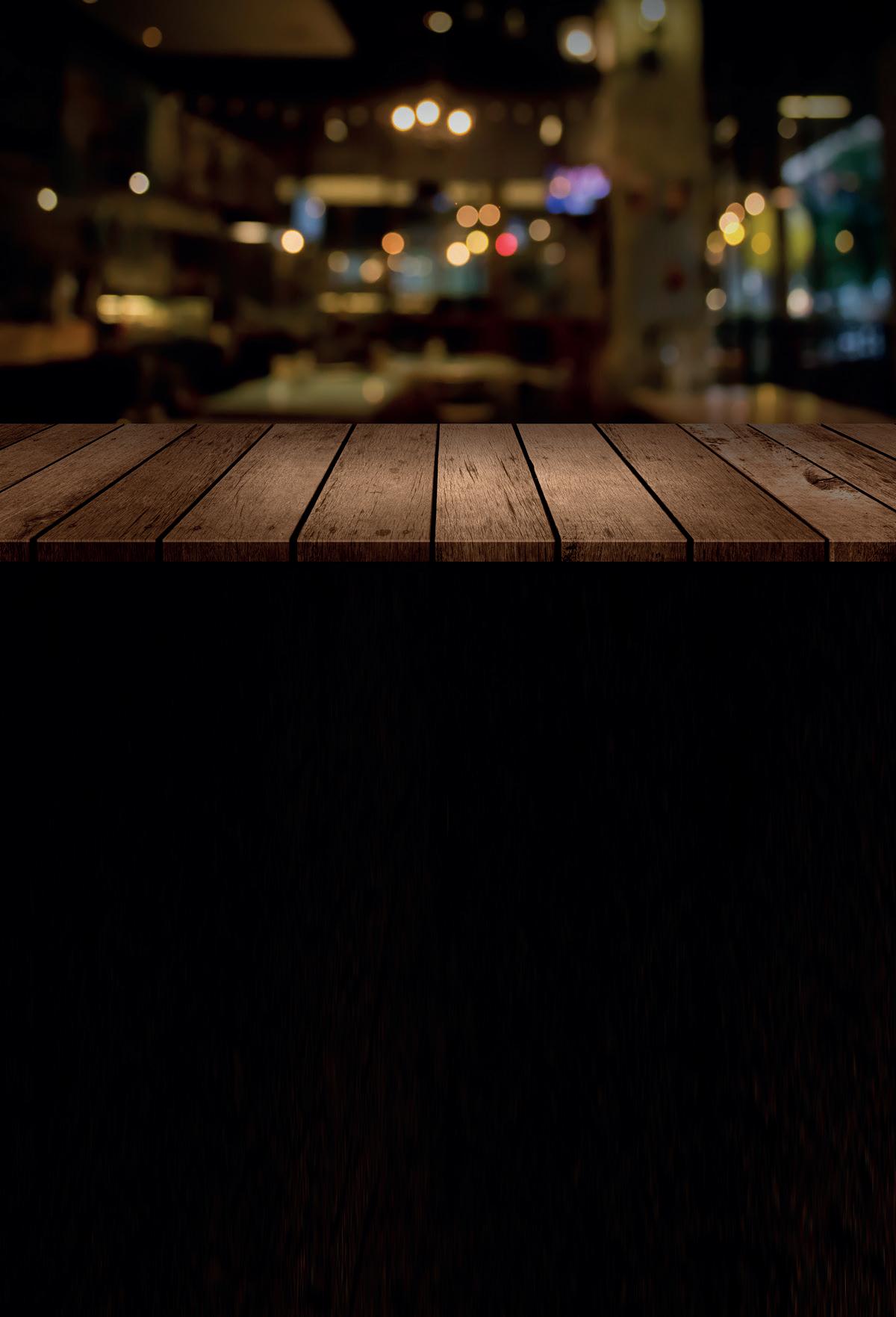
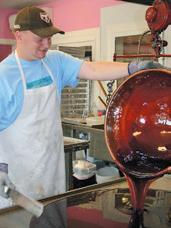

DiscoverOurCoast.com 53 256 N Hemlock • Cannon Beach www.brucescandy.com • 503-436-2641 Downtown Cannon Beach Family Owned & Operated We are a full-service Italian deli offering fine meats and cheeses, ready to eat sandwiches, housemade pastas and sauces to cook at home, housemade sausages, desserts, European market items, and Italian wines. Stop in for a sandwich and a glass of wine, beer, or craft soda, and take something home for an easy dinner! Open daily 10-6, 10-4 on Sunday. Follow us on Facebook and Instagram for the latest products and specials @gaetanosmarketanddeli 1004 COMMERCIAL ST. ASTORIA (503) 741-3043 WWW.GAETANOSMARKETANDDELI.COM FROM OUR KITCHEN TO YOURS Anchor • Classic Seafood • Clam Chowder • Creamy Alfredos • Cocktails 900 Pacific Ave S • Long Beach (360) 642-4224 DropAnchorSeafood.com SEAFOOD & GRILL 10% OFF *excludes alcohol Bloody Mary in Town on Trip Advisor RATED #1 Best 111 Broadway • Seaside 503-738-3271 111 Broadway • Seaside 503-738-3271 Mention This Ad 1335 Marine Dr., Astoria 503-791-1907 • Serving Fresh, Local Seafood, Exotic Meats, Steaks & Burgers • Unique Bar & Gift Shop • Pet Friendly Area -Best In TownWalk up window Beer Battered Fish 1634 Duane St • Astoria Across from the Maritime Museum 503-791-2942 Bowpicker Fish & Chips Chowder, smoked salmon, crab cocktails, salads, and other delicious Grab & Go specialty items to eat on the spot Live and cooked fresh local Dungeness crab, crab cakes, salmon, halibut, oysters and other fine seafood to cook up at home SEAFOOD MARKET TWO LOCATIONS! Pier 39 & Pier 11, both right on the river in Astoria 503-741-3133 Hours: Thursday to Monday 11-5
Distilleries ON THE RISE
In a region that has established a solid reputation for craft beer, local distilleries are working to elevate craft spirits to a greater height.
“We’re a destination,” said Matt Lessnau, who is head distiller at Long Beach-based Adrift Distillers. “Astoria is a destination, (the) Long Beach Peninsula is a destination and people want more than beer.”
David Kroening, president of Buoy Beer Co., which owns Pilot House Distilling, said, “People enjoy the camaraderie and community, being able to imbibe something made here in town by their neighbors and friends.”
Pilot House Distilling
Shelves of Bar Pilot vodka, gin and coffee liqueur at Pilot House Distilling in Astoria.
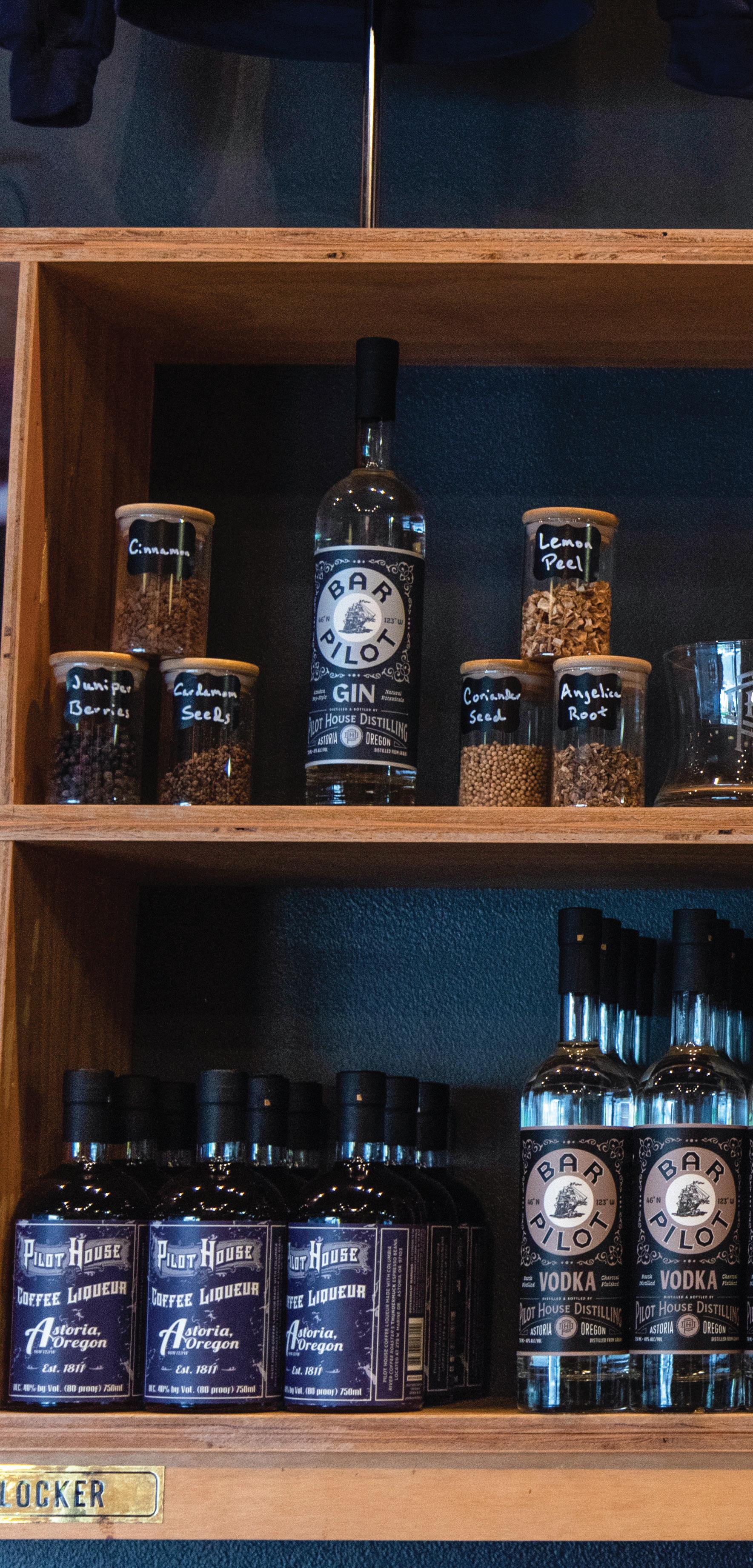
54 Our Coast Magazine 2024 Eat & Drink
Words: Peter Korchnak • Images: Shanna Madison
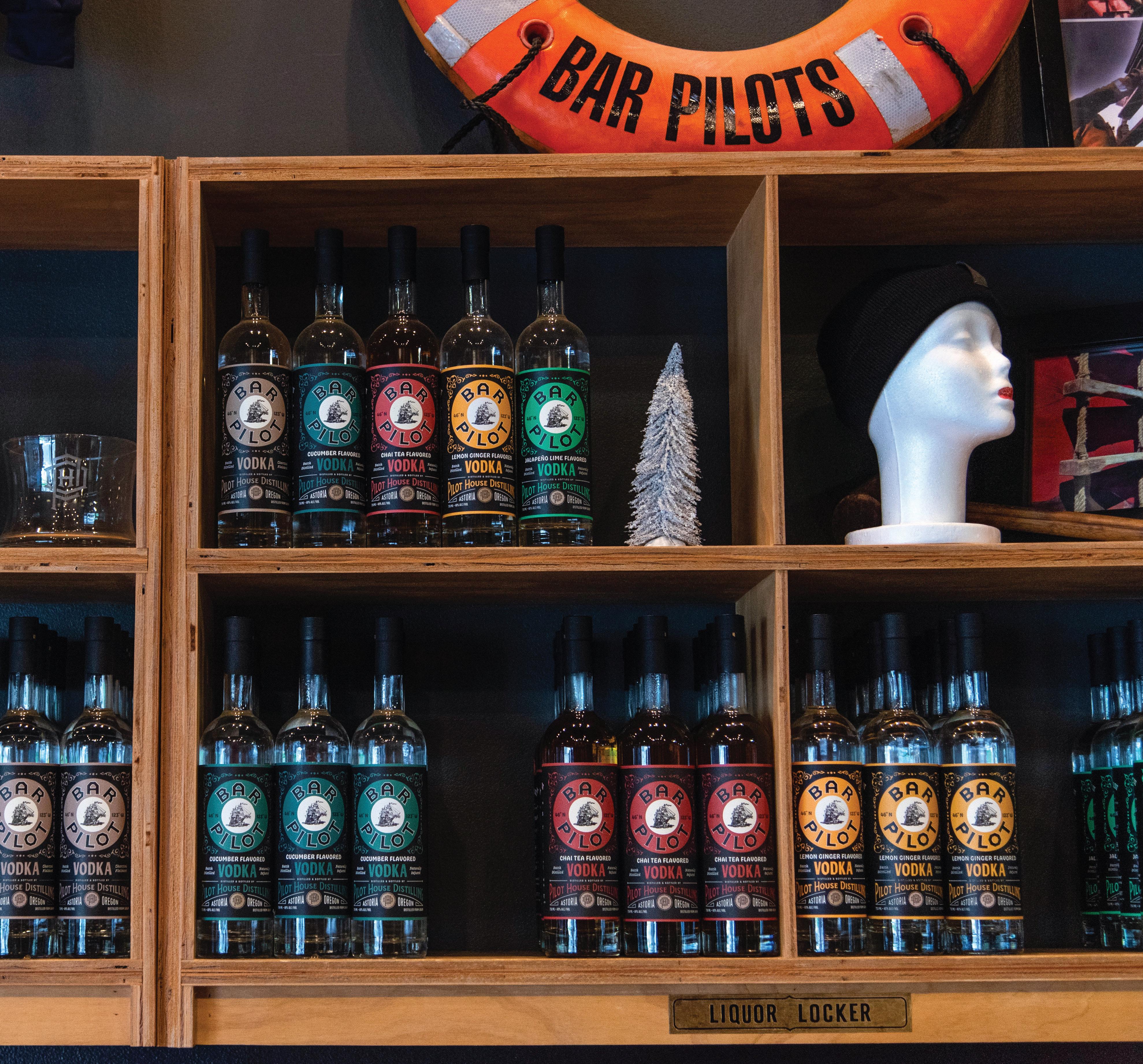
DiscoverOurCoast.com 55
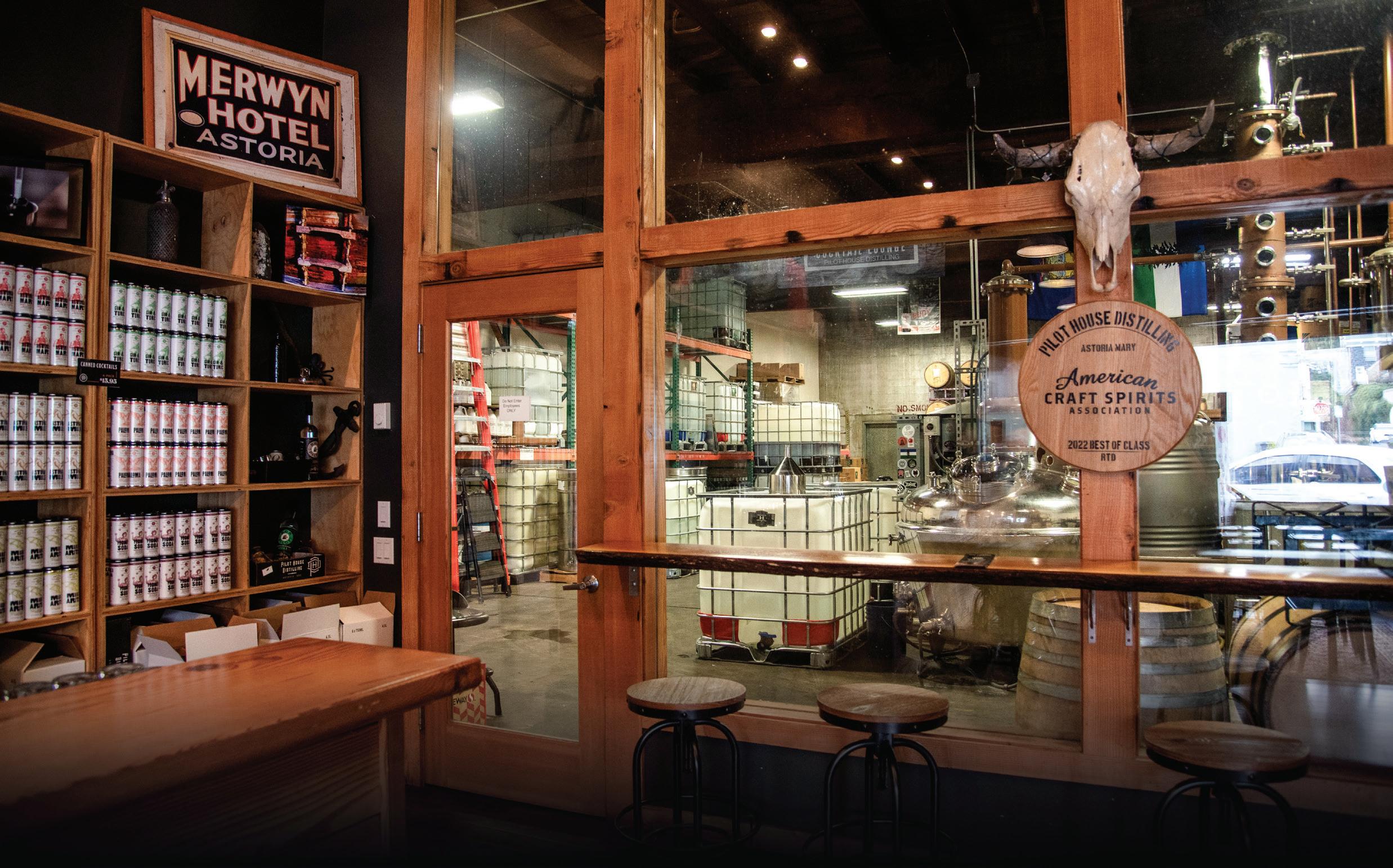
PILOT HOUSE DISTILLING
After Larry and Christina Cary moved to Astoria, they noticed an absence of distilled spirits in town.
“Passion and learning turned into a distillery,” Christina Cary said. Pilot House made its first clear spirit, a vodka, more than 10 years ago.
Its next creation, Painted Lady Gin, has since become the company’s flagship. The botanical American-style gin layers a bouquet of chamomile, lavender, cinnamon and red peppercorns over a juniper base. Last year, Wine & Spirits Magazine awarded Painted Lady as its best domestic gin.
For Pilot House, with the years came aging spirits. The highlight: Hell or High Water, a limited-edition, single-malt whiskey aged in American oak barrels — first in-house for over two years and finished for a year onboard commercial fishing boats, plying the Pacific Ocean waters between California and Alaska.
The churn of whiskey on the ocean in barrels, exposed to the elements, brings out the spirit’s complexity. “It’s literally — go out, slosh around, create some magic and come on back,” said Michael Cox, a tasting room associate.
Because each fishing trip varies in duration, route and weather conditions, each numbered and dated batch subtly differs in its profile.
One recent batch, No. 13, includes hints of baking spice, clove, and cinnamon, whereas a preceding batch brought out notes of ripe banana. The uniqueness and variation of ocean aging have turned the product into a collector’s item.
“The terroir is not as evident with spirits as with wine, but it still plays a part,” said Ben Thompson, a tasting room manager.
Ingredients, like barley, are grown in the Pacific Northwest, where a relatively steady climate aids the consistency of production. Then, there’s the ocean aging.
“Even if you can’t necessarily taste that terroir, you can feel it,” Thompson said.
Pilot House was acquired in 2019 by

Buoy Beer Co. The move has helped expand the distillery’s capacity and distribution. The brewery ferments the mash foundation for the spirits, which are then distilled at the distillery’s Duane Street site.
A new, bigger still is projected to grow the operation eight-fold this year, according to Kroening.
The fusion also opened new taps to creativity and innovation. In addition to gins, agave spirits and whiskeys, the lineup includes infused vodkas, absinthe and canned cocktails.
In fact, Pilot House’s Astoria Mary was the first canned cocktail in Oregon.
Its introduction prompted a change in the state’s liquor law to allow the sale of canned cocktails. Since then, Astoria Mary has received industry recognition and, according to Cox, has developed somewhat of a cult following.
A tasting room fronts the Astoria distillery (another tasting room is located in Cannon Beach). All products are offered in sample sizes or as flights. A new addition of mini-cocktails allows for mixing at home.
56 Our Coast Magazine 2024 Eat & Drink
Pilot House Distilling tasting room
A tasting room fronts the Astoria distillery on Duane Street. Another tasting room is located on Hemlock Street in Cannon Beach. Two of Pilot House Distilling’s signature spirits (right) are Hell or High Water, aged in-house and onboard commercial fishing boats, and Painted Lady, an award-winning botanical gin.
PACIFICK DISTILLERS
On the Astoria Riverwalk at 4th Street stands an 1892 warehouse that is now the home of Pacifick Distillers. Its founder, Steve Fick, who is the owner of Fishhawk Fisheries, located behind the building, launched the distillery last year.
His grandparents told stories of a moonshine maker living on family property in Jewell during Prohibition. Nearly a century later, armed with friends’ encouragement and motivated by better using the building and offering his employees more stability, Fick dove into distilling.
After vodka and gin, both clear spirits that don’t require aging, the distillery recently added a whiskey to its fleet.
In bottles or flights, the distillery’s products are available at a tasting room and bar that gives a whiff of a speak-easy. Murals and paintings by local artists anchor the brick walls. Some of the decor creatively reuses parts of long-gone buildings, including wood from a defunct cannery and a stepping stone from an early Astoria post office.
Snacks like clam chowder, shrimp cocktails and shrimp or crab melts, made with the fishery’s produce, complement the offering.
“One of the opportunities in a business like this is to educate the public where their food comes from,” Fick said. “We’re celebrating the seafood that comes from our region.”
Many events are planned for the future, including a jazz brunch, spring salmon night and crab boil event, as well as partnerships with other citywide events like the FisherPoets Gathering and the Astoria Scandinavian Midsummer Festival.
“Those are things that really tie this type of business and that can actually help people understand their sustainable resources,” Fick said.
In its early days, Pacifick’s spirits are available in local liquor stores. The next step is to expand.
One of the opportunities in a business like this is to educate the public where their food comes from. We’re celebrating the seafood that comes from our region.
Steve Fick Owner of Fishhawk Fisheries and Pacifick Distillers
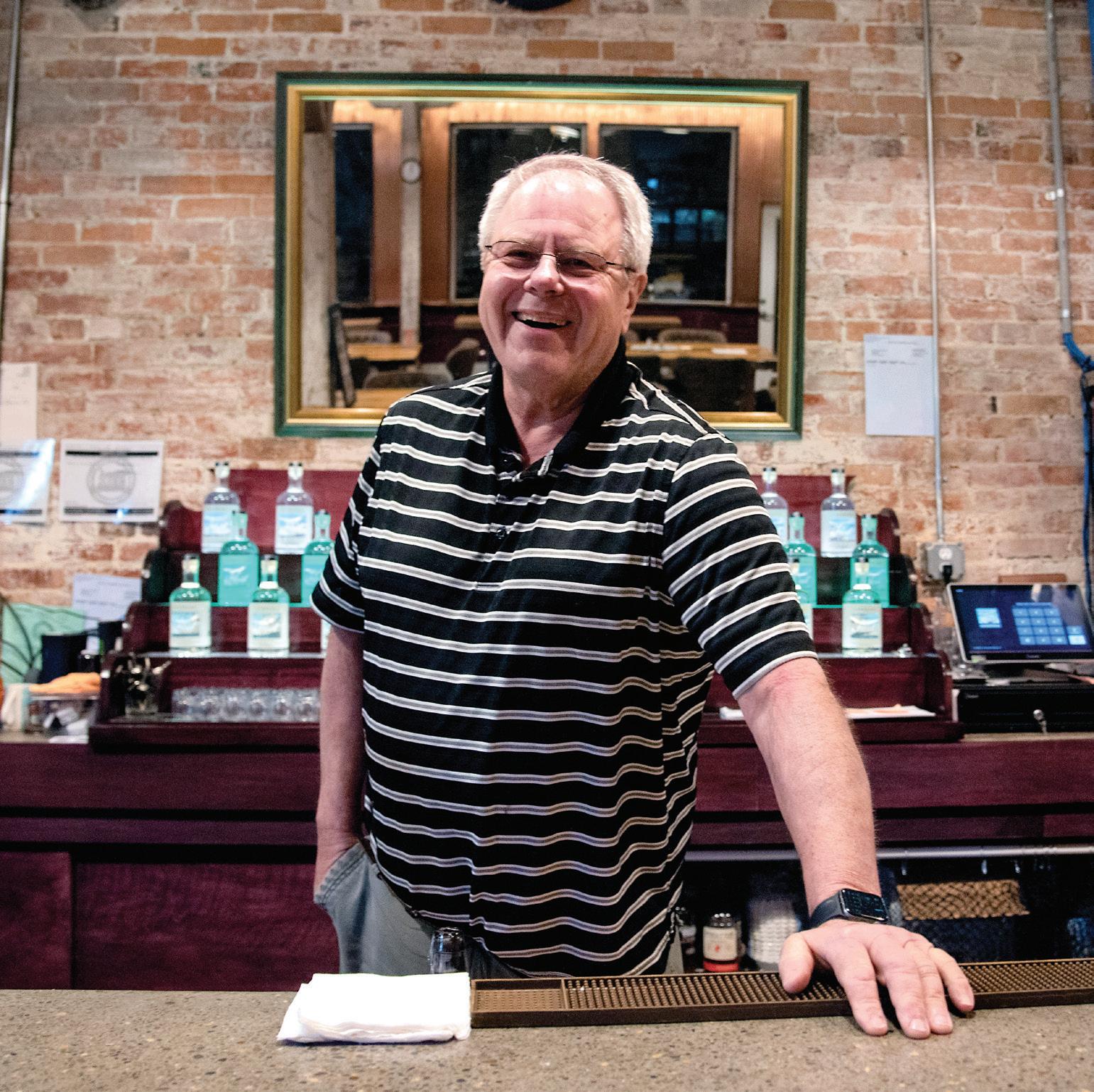

DiscoverOurCoast.com 57
“
“
Pacifick Distillers
Steve Fick (above), the founder of Fishhawk Fisheries, opened Pacifick Distillers along the Astoria waterfront last year.
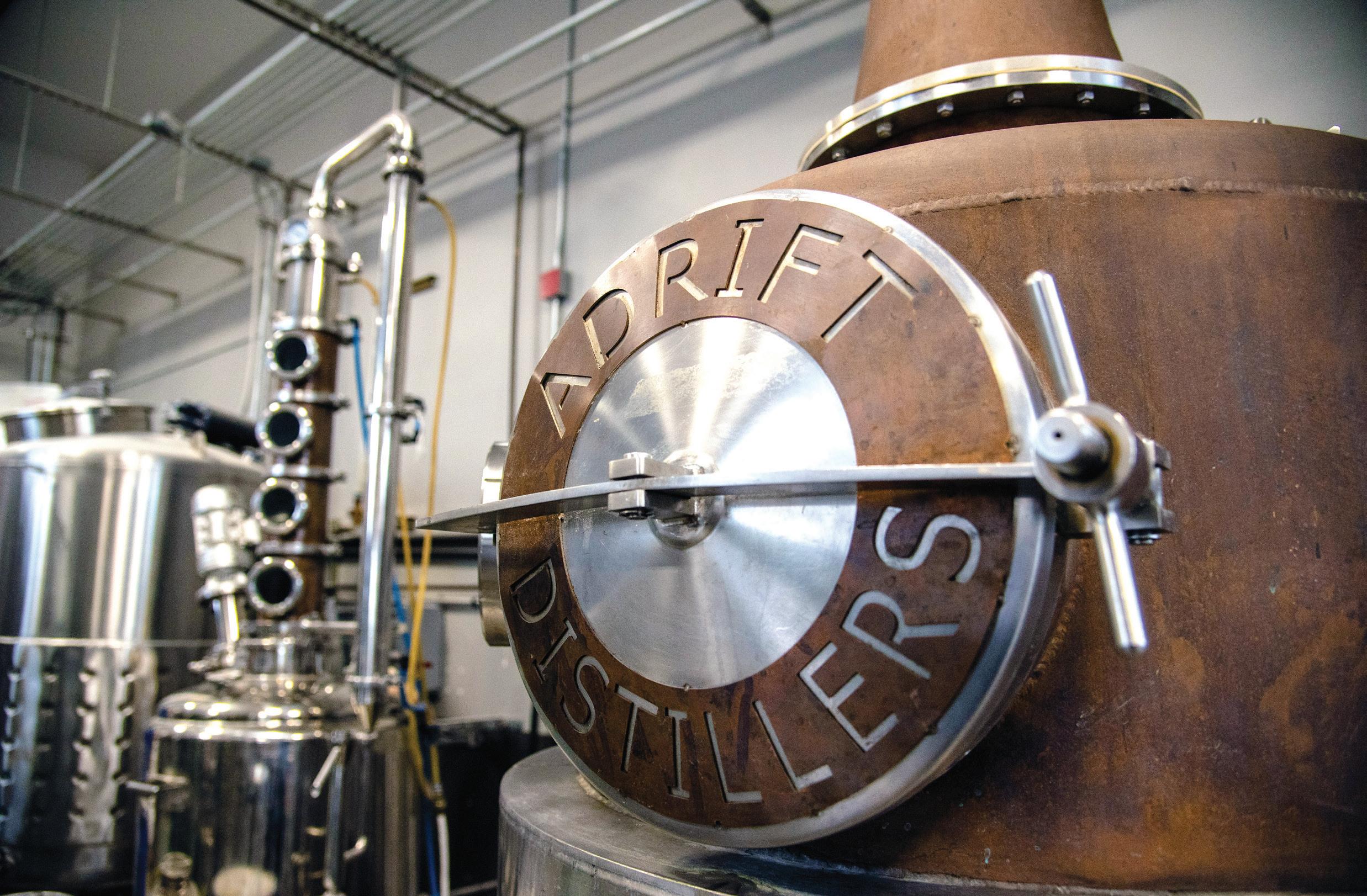
ADRIFT DISTILLERS
On the Long Beach Peninsula, Adrift Distillers has been manufacturing spirits since 2017, remaining the first and only distillery in Pacific County.
Their inaugural product remains their flagship. Adrift’s cranberry liqueur was created with a local touch in mind. Cranberries for the burgundy-red spirit come from Starvation Alley Farms, with familial ties binding the two companies.
“It’s something really hyperlocal to the area and showcases what we can do here with the terroir of the region,” said Lessnau, who is also an Ilwaco city councilor.
Building on a positive initial reception, the distillery grew, adding a tasting room in 2018 and now offering a strong lineup of liquors, including whiskeys, gins, vodka and aquavit.
Their products have garnered accolades and awards over the years, including a 2019 Sip Magazine double gold for their vodka. In addition to the tasting room headquarters, Adrift’s spirits and liquors are poured into several bars and restaurants on the peninsula.
The process takes place in a building located steps away from the expanse of one of the longest beaches in the nation. “We’re green to bottle,” Lessnau said. “We mill, mash, ferment and distill all on-site.”
Adrift’s focus this year is on expanding distribution to Oregon.
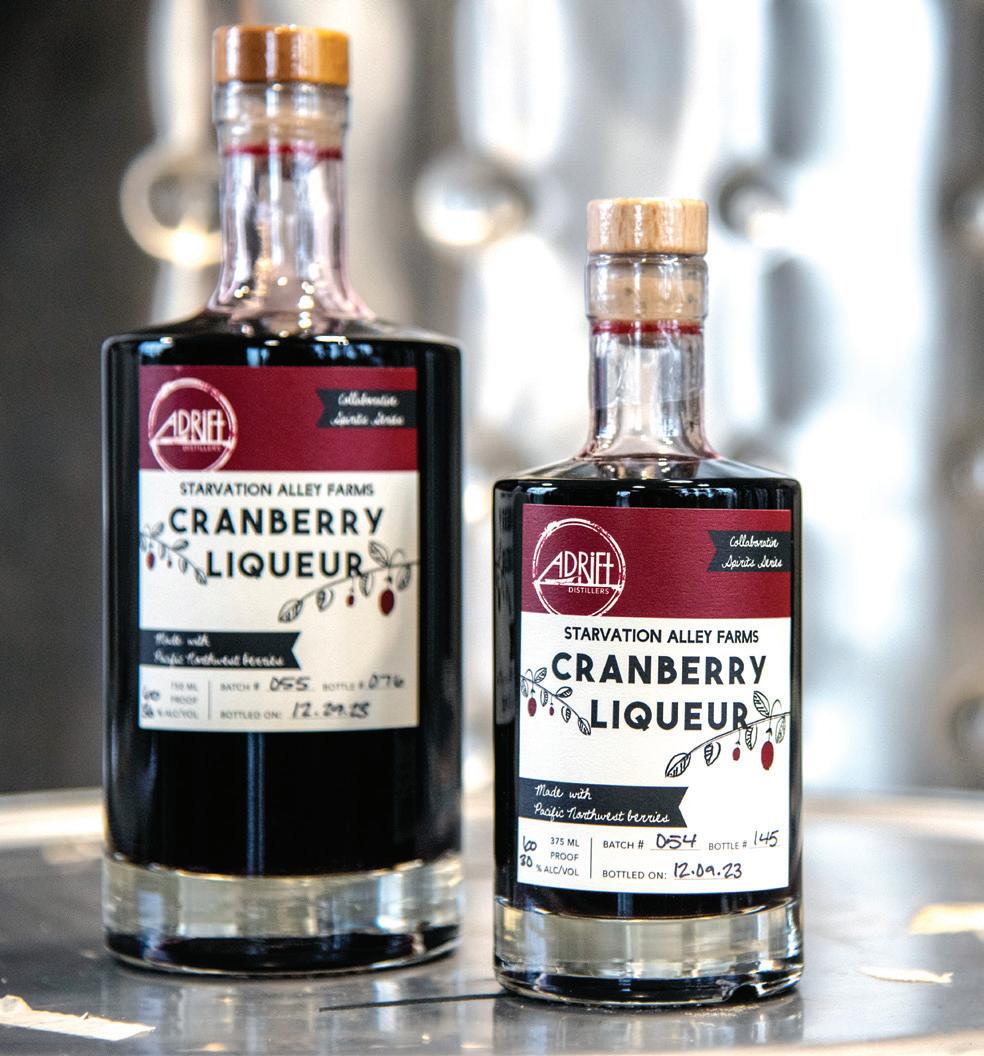
58 Our Coast Magazine 2024 Eat & Drink
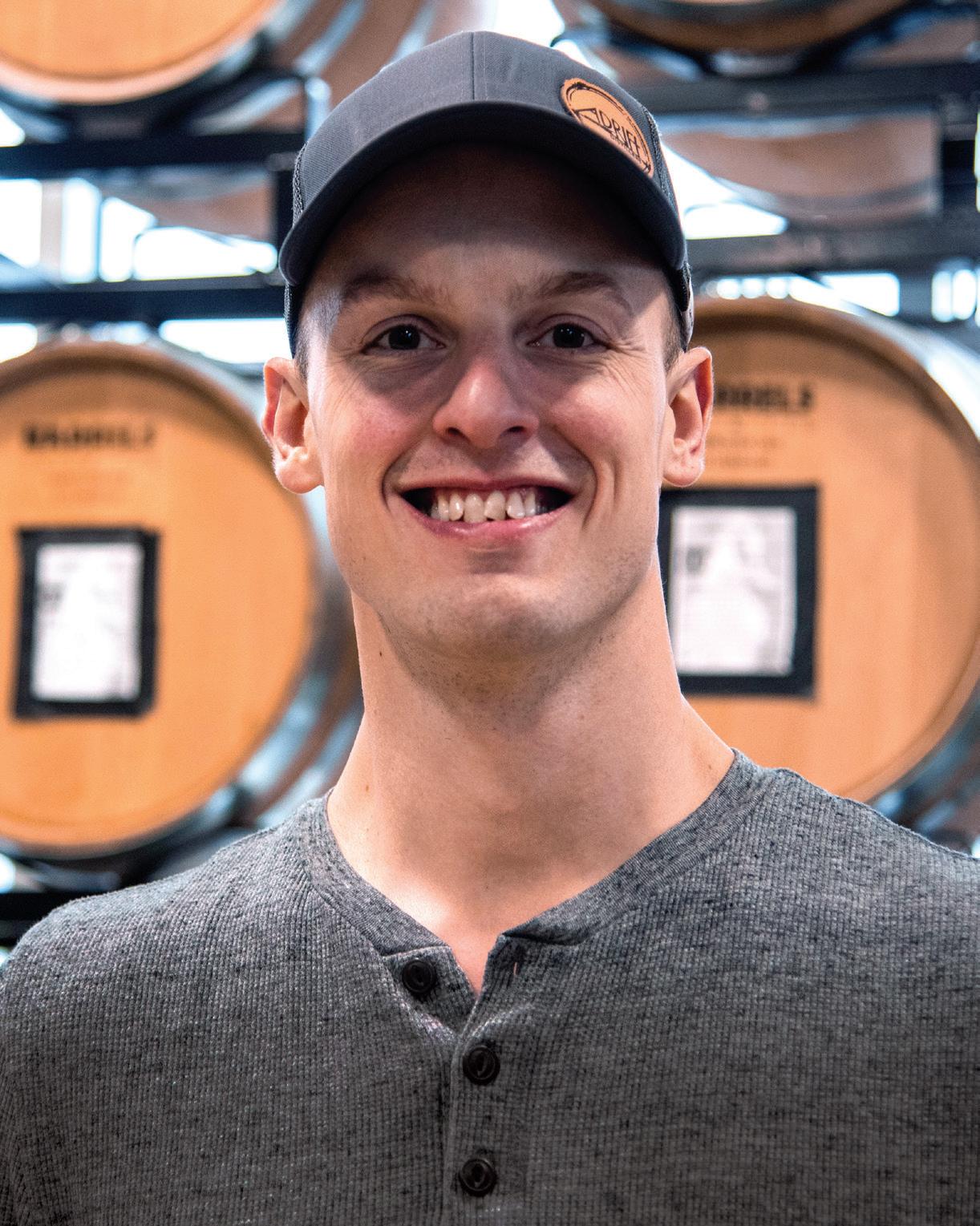
Adrift Distillers
Matt Lessnau
the head distiller at Adrift Distillers, which is Pacific County’s first
COLLABORATIONS
Regional distillers agree the adage “the more the merrier” clinks true. “It’s great to have variety,” Cary said. “It brings people to the area.”
The collaborative nature of their craft elevates the spirit of place. One of the vessels aging Pilot House’s whiskey this year is South Bay, whose owners operate the eponymous seafood restaurant, South Bay Wild Fish House, in Astoria. Local breweries have used spent barrels to age their beers.
In addition to using cranberries from a local farm, Adrift has partnered with Columbia River Coffee Roaster on a coffee liqueur and Obelisk Beer Co. on an aged Belgian Dubbel. The latter was also a collaboration with North Jetty Brewing, in Adrift’s whiskey casks, which they returned to finish a bourbon.
“Collaboration is how we can differentiate ourselves and have deeper ties to the region,” Lessnau said. “There’s a destination aspect to it. Why are you going to pick our stuff off the shelf? It’s because of that attachment that you have to the area, to the region and your experience here.”
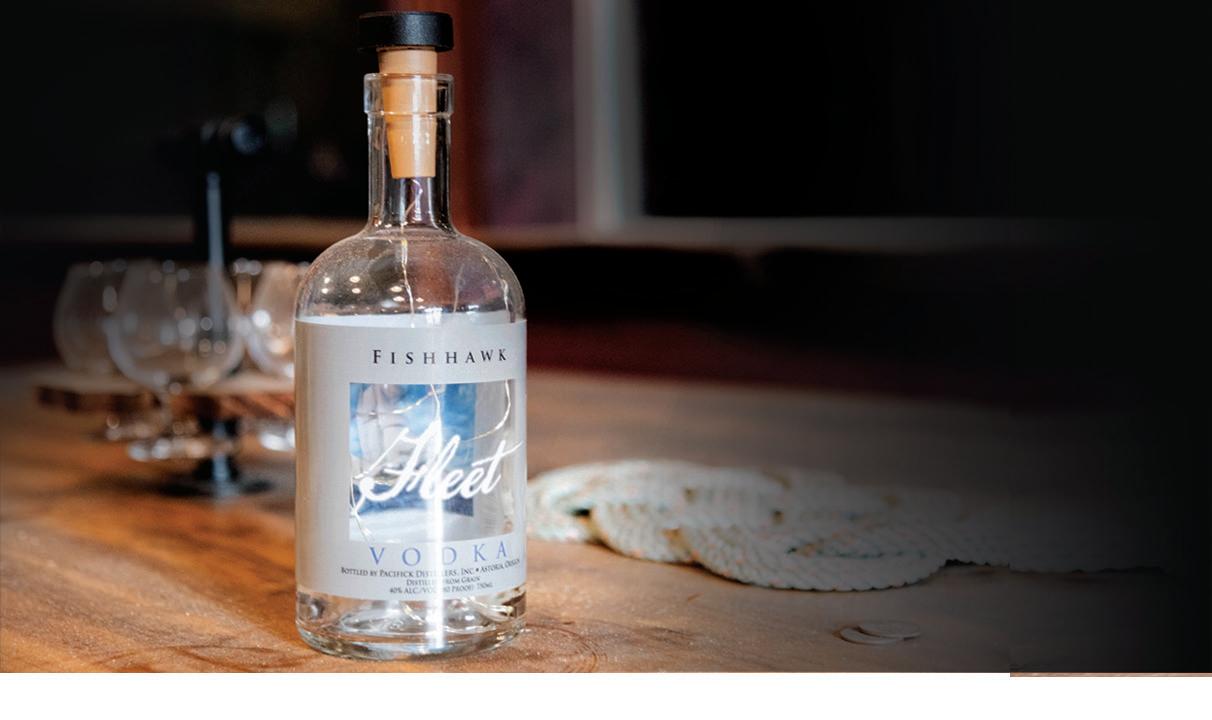


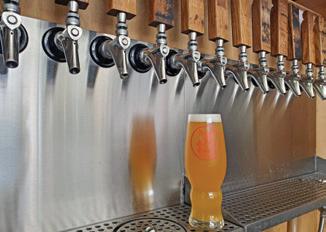
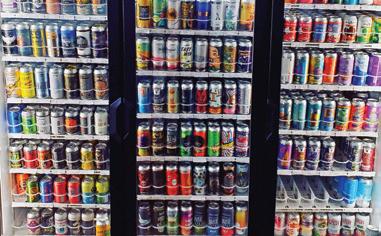
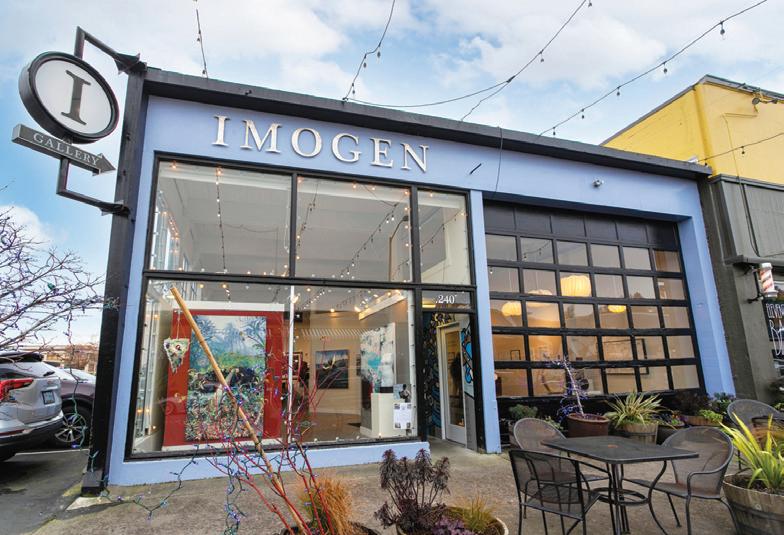
“ “
It’s because of that attachment that you have to the area, to the region and your experience here.
Matt Lessnau
Head distiller at Long Beach-based Adrift Distillers
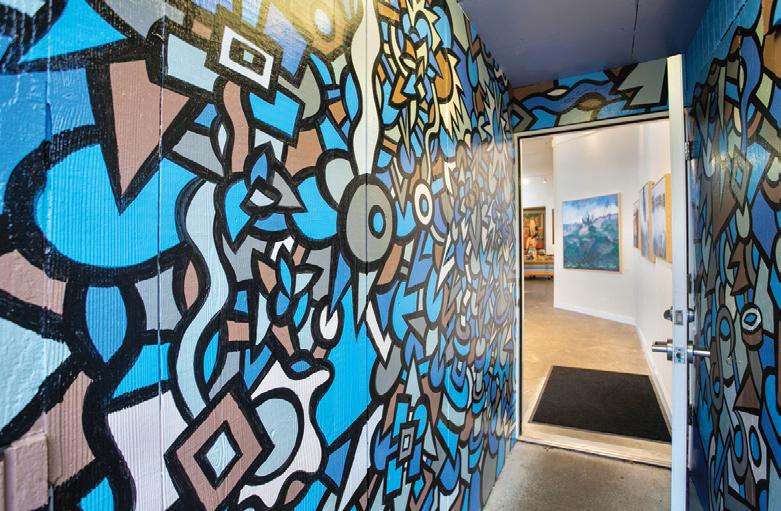
DiscoverOurCoast.com 59
IMOGEN GALLERY imogengallery.com HRS: Thur-Mon 11 to 5pm|Sun 11 to 4pm 240 11th street astoria or 503.468.0620 Bridge & Tunnel Bottleshop & Taproom features 22 taps of ever rotating Craft Beer, Cider and Wine from across the country and around the world. Along with a curated selection of to go cans & bottles. 1390 Duane Street, Astoria facebook.com/beers4all bridgeandtunnelbottlesandtaps The Astoria wharf and warehouse building constructed in 1892 provides the home of Pacifick Distillers, Inc. The interior trimmed in purple heart wood and copper walls provides a classic reminiscent ascent of the old Astoria waterfront. 503-741-3036 55 4th St, Astoria, OR Pacifick Distillers Creating great memories for all who visit Pacifick Distillers crafts Vodka, Gin and Whiskey on the riverfront in Astoria, next to Fishhawk Fisheries
is
and only distillery.
1:10 p.m.
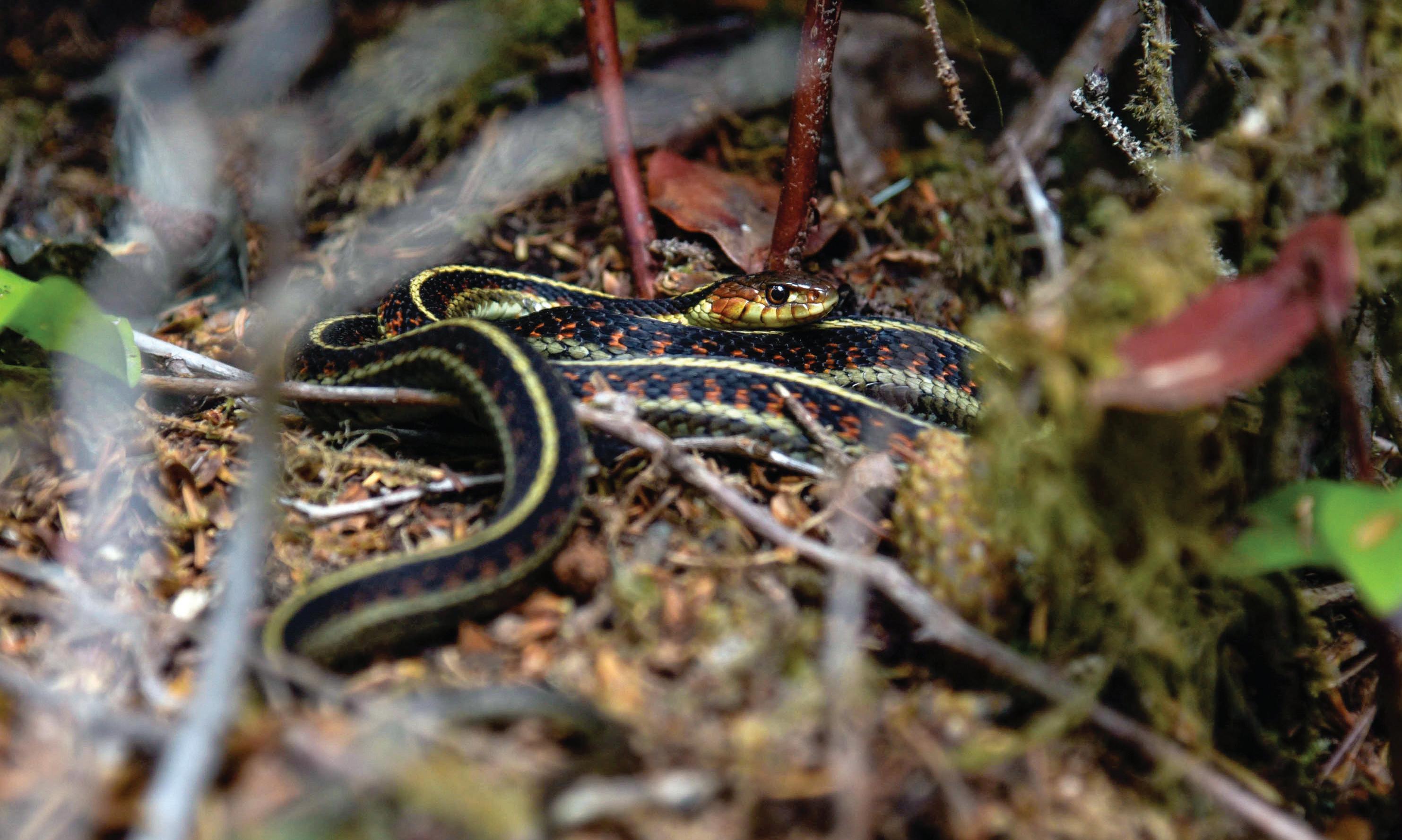
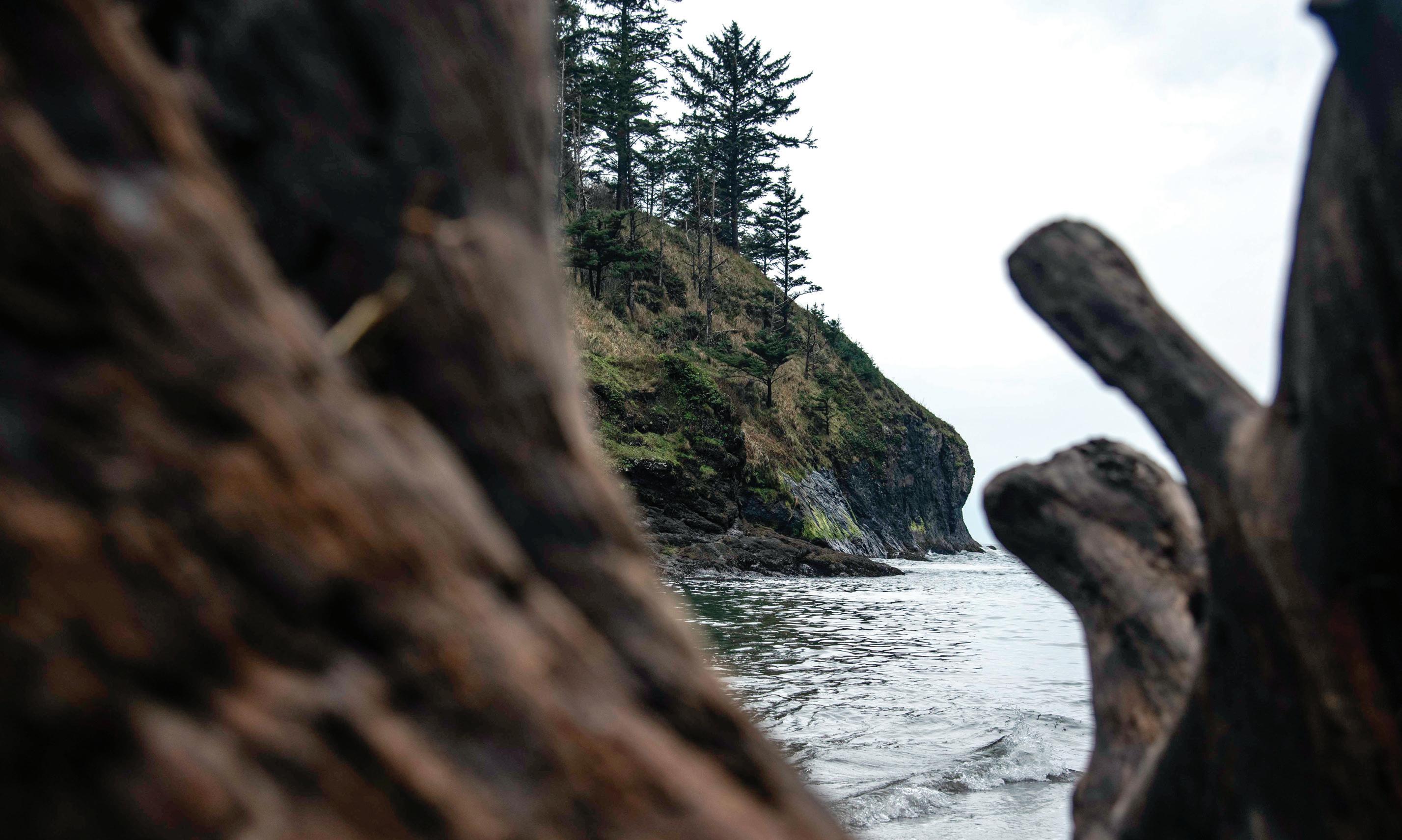
2:15 p.m.
A garter snake moves along the forest floor at Oswald West State Park.
A piece of driftwood frames the Pacific Ocean at Dead Man’s Cove, near Ilwaco.
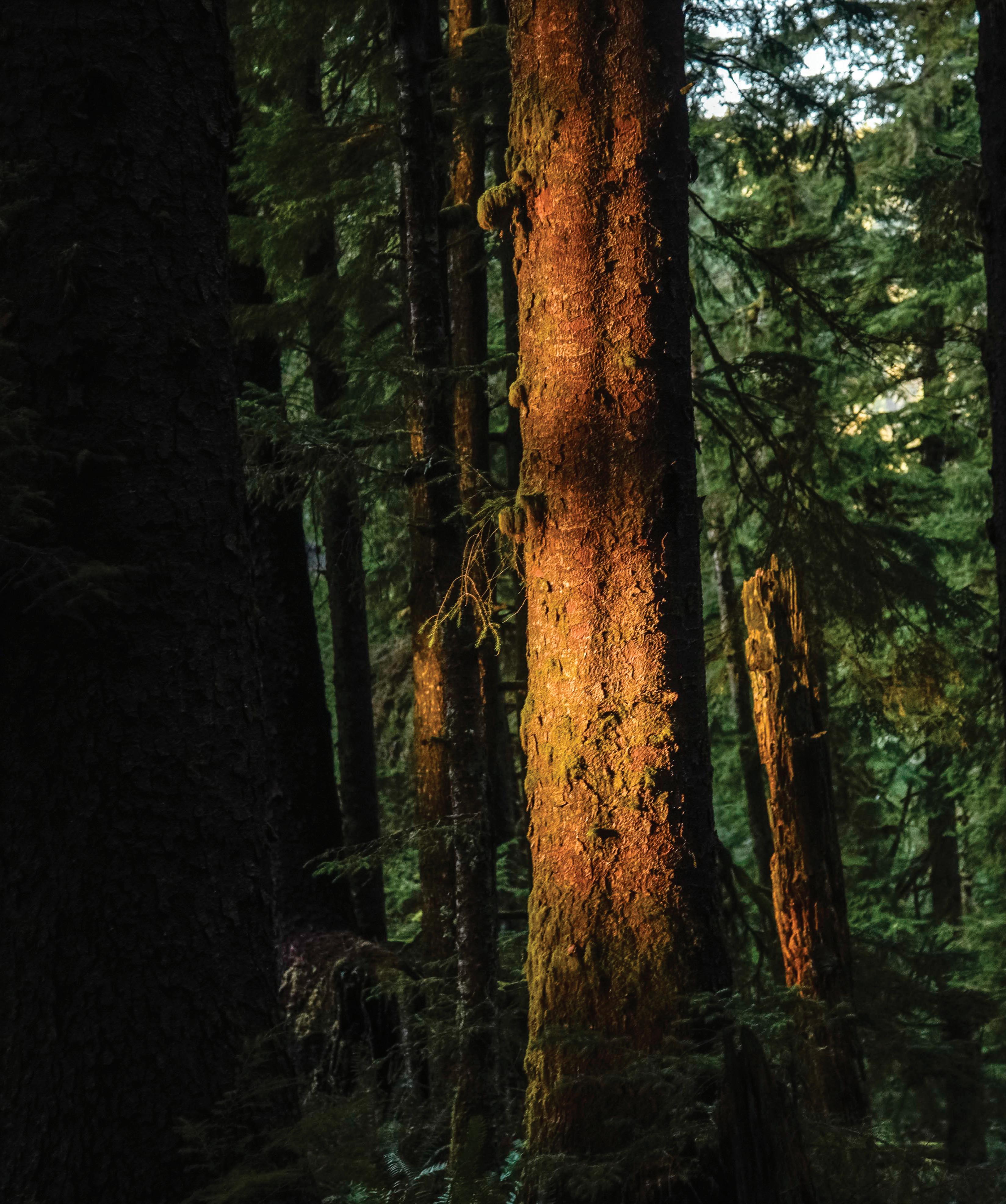
3:34 p.m.
Golden light shines through the forest at Ecola State Park in Cannon Beach.
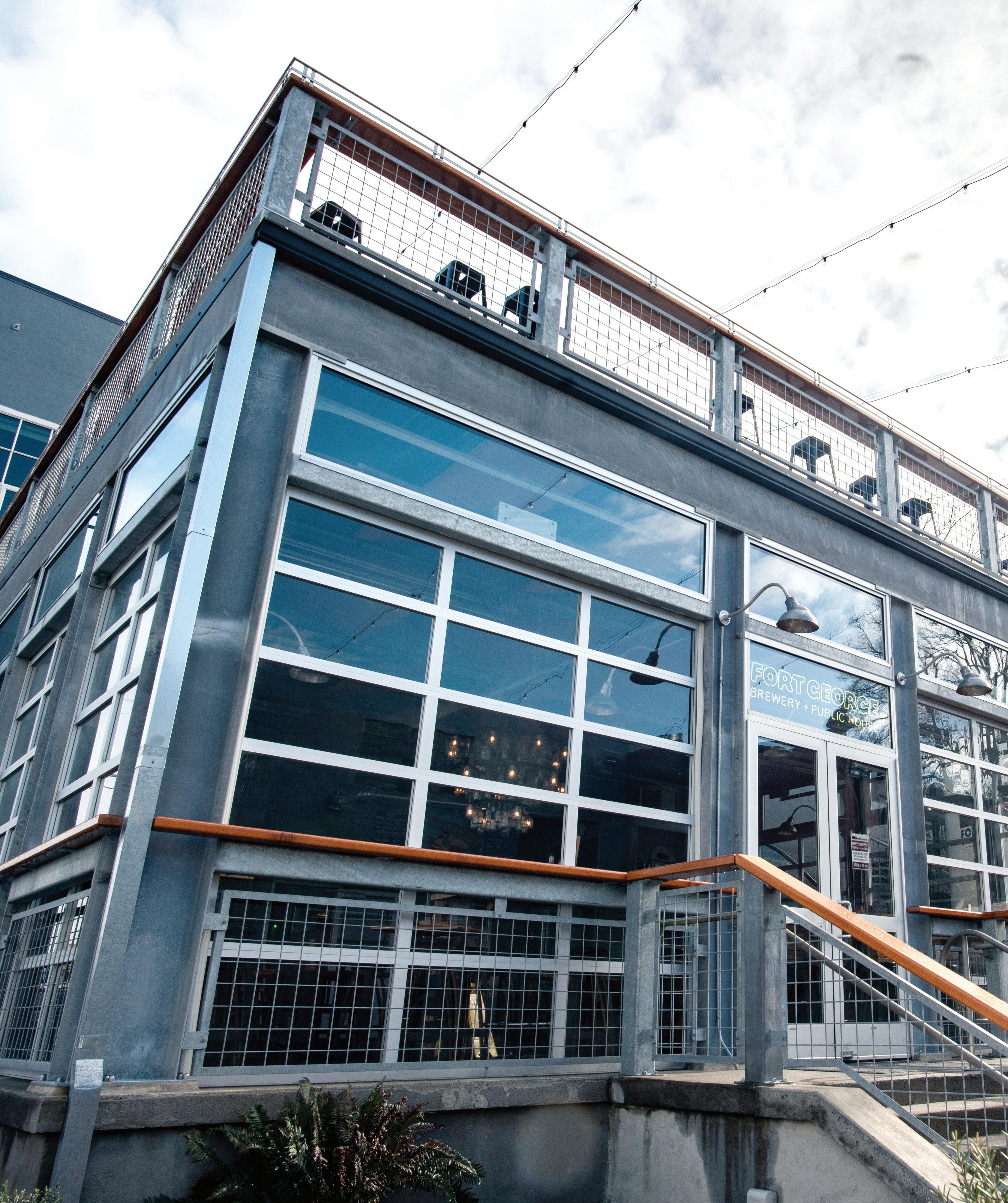
62 Our Coast Magazine 2024 Eat & Drink
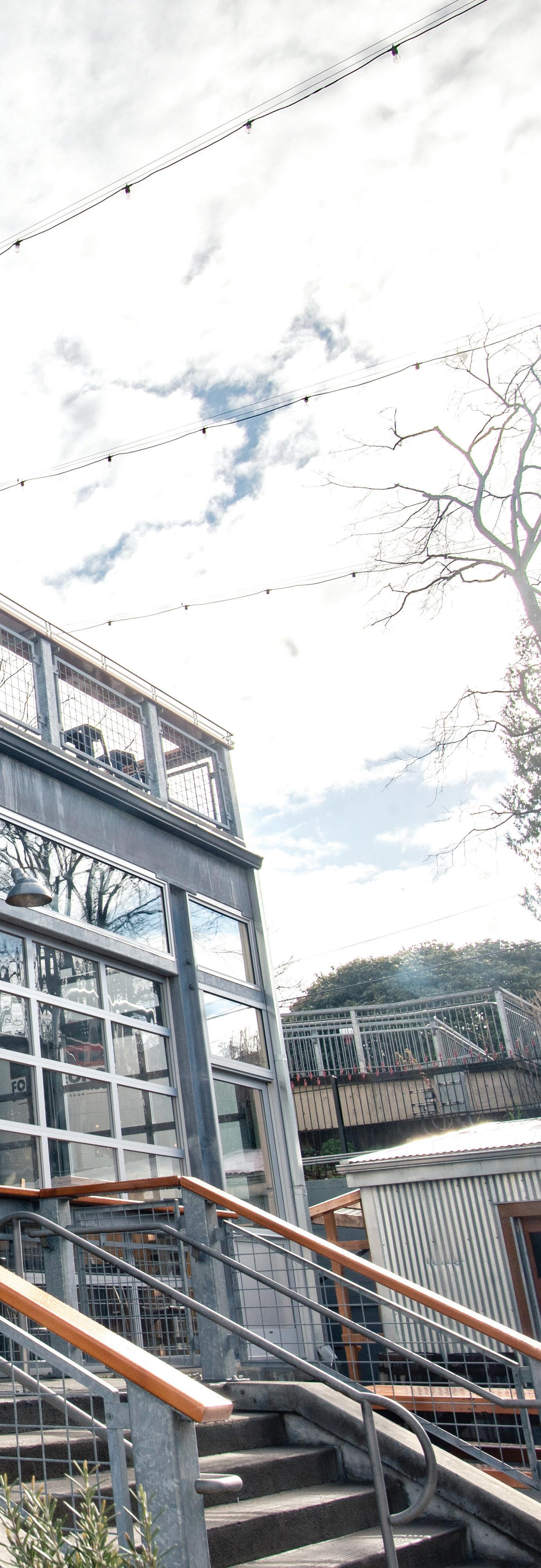
brewery Building a
Words: Lissa Brewer • Images: Shanna Madison
Chris Nemlowill began the summer of 2003 as a new graduate with degrees in marketing and computer science from Southern Oregon University in Ashland. He had an internship lined up at Intel and a likely path forward.
Afew days after graduating, Nemlowill volunteered to help his grandmother after he learned that she’d broken her hip. While she rested, he bought and read six books on how to home-brew beer.
“I called my mom about a week later and said, ‘Can I just move back into your basement this summer? I just, I want to brew a bunch of beer,’” Nemlowill recalled, arms folded over a table on the upstairs brewpub deck at Fort George Brewery in Astoria.
“I just couldn’t see myself working in a cubicle, or wearing a suit to work.”
That decision would lead him on a path to meeting Jack Harris, then head brewer at Bill’s Tavern & Brewhouse in Cannon Beach, and eventually to opening the doors of Fort George, taking a risk at a time when craft brewing was still relatively small.
“Coming out of the ‘70s and ‘80s, there were still only 30 breweries in the United States,” Nemlowill said. “When we opened Fort George, there were 1,400 breweries in the United States. Now, there’s about 10,000.”
The risk paid off. “In two years, we passed our 10-year business plan,” he said, “and that was the point where we needed more space.”
Now with three facilities that span a downtown block and a repurposed cannery along Astoria’s waterfront, Nemlowill estimated that last year, Fort George produced about 32,000 barrels — or just under 1 million gallons — of beer. The brewery now employs about 160 people.
Through it all, building out from the historic site of Fort Astoria, or Fort George, an early 19th-century fur trading post, has kept the brewery grounded in history.
I called my mom and said, ‘Can I just move back into your basement this summer? I just, I want to brew a bunch of beer.'
Chris Nemlowill President and co-founder of Fort George Brewery
“ “
Eat & Drink
‘ On the cusp ’
“This is me when I was in third grade here, growing up in Astoria,” Nemlowill said. He showed an image scanned from newsprint, from a page of The Astorian. In it, a young Nemlowill leaned over a classroom table, hovering near a cardboard model of the Astor Building. He recalled crafting the model from part of a refrigerator box and a set of toothpicks.
“We were all tasked with making our favorite building downtown,” he said, glancing at the eight-story tower across from the brewery.
Nemlowill’s family had moved to Astoria shortly after he was born in 1979. He remembers a year filled with showings of “The Goonies” at the Columbian Theater after its 1985 release and reflects on watching as new development brought changes to the city.
After graduating from Astoria High School in 1997, Nemlowill picked up an associate degree at Clatsop Community College before transferring to Southern Oregon University.
Between that time, a trip to Cologne, Germany, in his late teens offered a glimpse of a culture centered around beer, where Kölsch breweries offered gathering places for families and communities. That was something he didn’t see back home.
“It seemed like it was on the cusp at the time,” he said, adding that breweries had once been much more common in the U.S. before Prohibition.
At the end of that summer spent brewing in his parents’ basement, Nemlowill went back to Europe, this time to the Netherlands as part of a study abroad program. After that, his goal was to start a brewery.
“I just kind of had an epiphany, like, ‘If I could do anything, it’d be so cool to be able to brew beer and give it to my friends,’ or … if I could make beer good enough that somebody wanted to pay for it, I just thought there could not be a cooler job,” he said.
Returning home and looking to learn more about the craft, Nemlowill approached Harris in Cannon Beach, home brew sample in hand. Soon enough, he was hired.

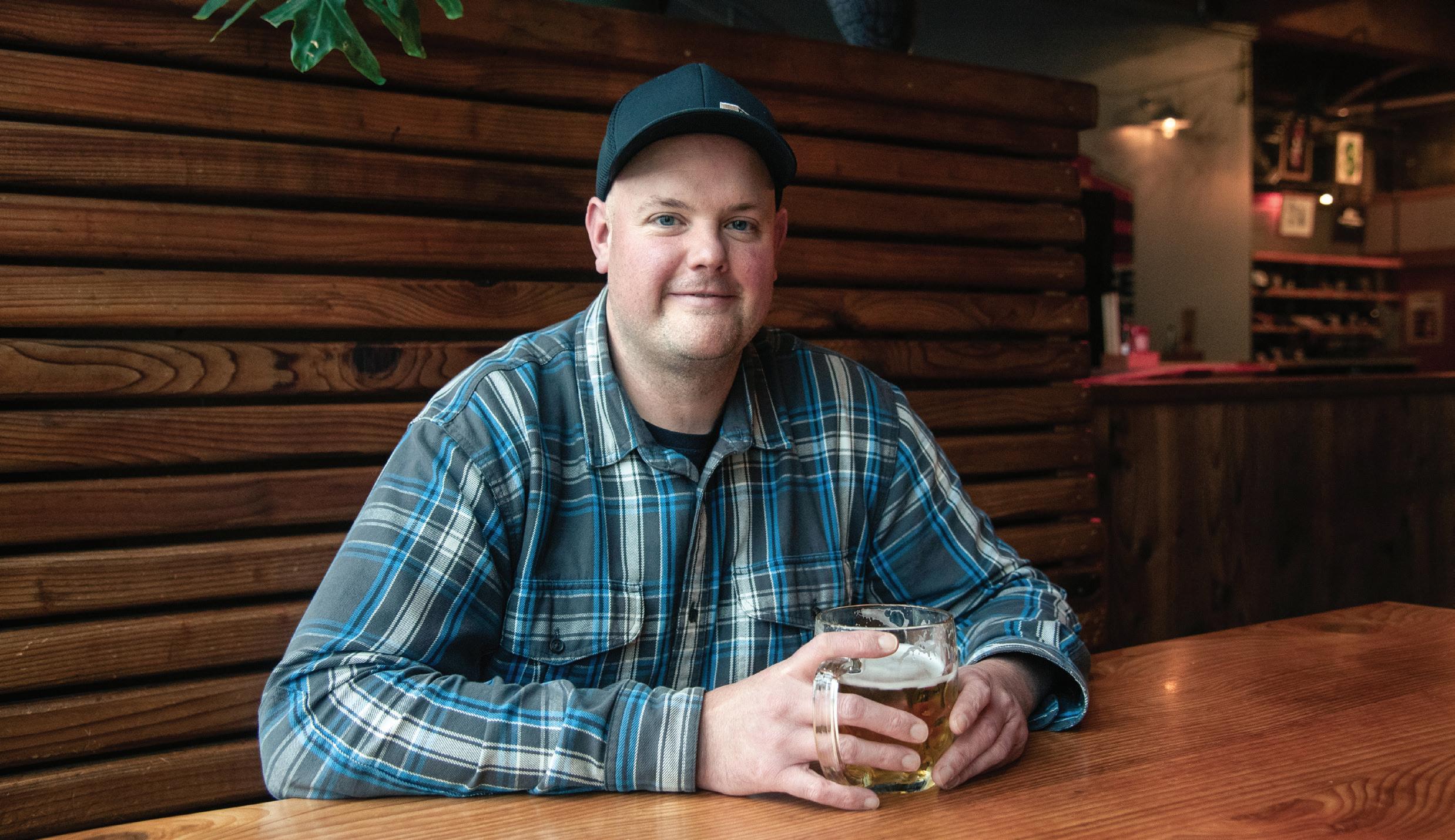
Chris Nemlowill
The president and co-founder of Fort George Brewery, sits at a taproom booth crafted from salvaged Alaskan yellow cedar.
As a third grader (top photo), Nemlowill leans over a replica of the Astor Building, made for an assignment that asked Astoria students to create their favorite downtown building.
64 Our Coast Magazine 2024
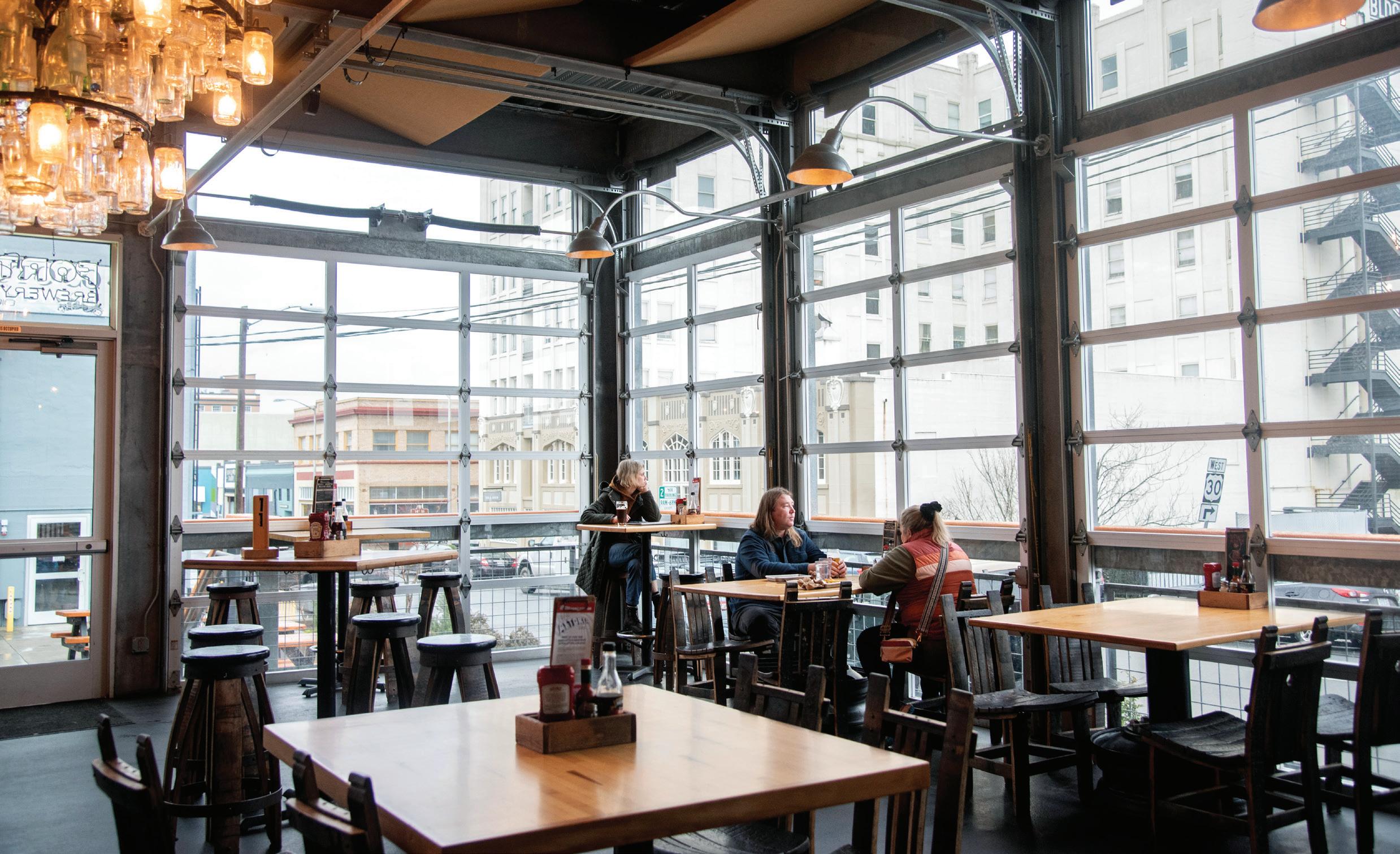
Douglas Fir Beams
In the fall of 2005, Nemlowill found the Fort George building in disrepair.
“It was in pretty rough shape, which a lot of Astoria was,” he said. “Half the windows were broken out. There were pigeons living in there, water coming through the walls.”
But on a walkthrough of the 1924 building with its owner, developer Robert Stricklin, Nemlowill was struck by the sight of old-growth Douglas fir ceiling beams. He also met the founders of the Blue Scorcher Bakery & Cafe, who would soon open up next door.
So Nemlowill called up Harris.
“He walked in, he’s like, ‘What do you want to show me?’ and I said, ‘I think we should start a brewery here. Wouldn’t that be really cool?’ And he’s like, ‘Man, you are nuts,’” Nemlowill recalled.
But it didn’t take long before Harris was interested.
Soon, the two had located an 8.5-barrel Saaz brewing system from a brewery in Virginia Beach, Virginia. “We flew out there, we dismantled it, we drove it back 3,100 miles,” Nemlowill said, “we had a tornado drop down on us in Nebraska.”
Fortunately, the damage was minimal. The tanks made it back to Fort George, and the tornado offered some unlikely inspiration for the name of what was to become one of the brewery’s signature beers: Vortex IPA.
Another brew, Cavatica Stout, took its name from a species of spider, in a nod to lore about the relationship between spiders and breweries.
Restoring the Fort George building brought challenges, but also a spirit of repurposing. Bars were created from windfallen, reclaimed wood. Booths were made from Alaskan yellow cedar that was found in a float shack near Brownsmead.
“We didn’t have a whole lot of money, so everything was very ‘us,’” Nemlowill recalled. “We pulled 25,000 pounds of concrete out of the building, ran a lot of the plumbing and just helped our friends, who were contractors at the time, do a lot of the work — and then we opened in March 2007.”
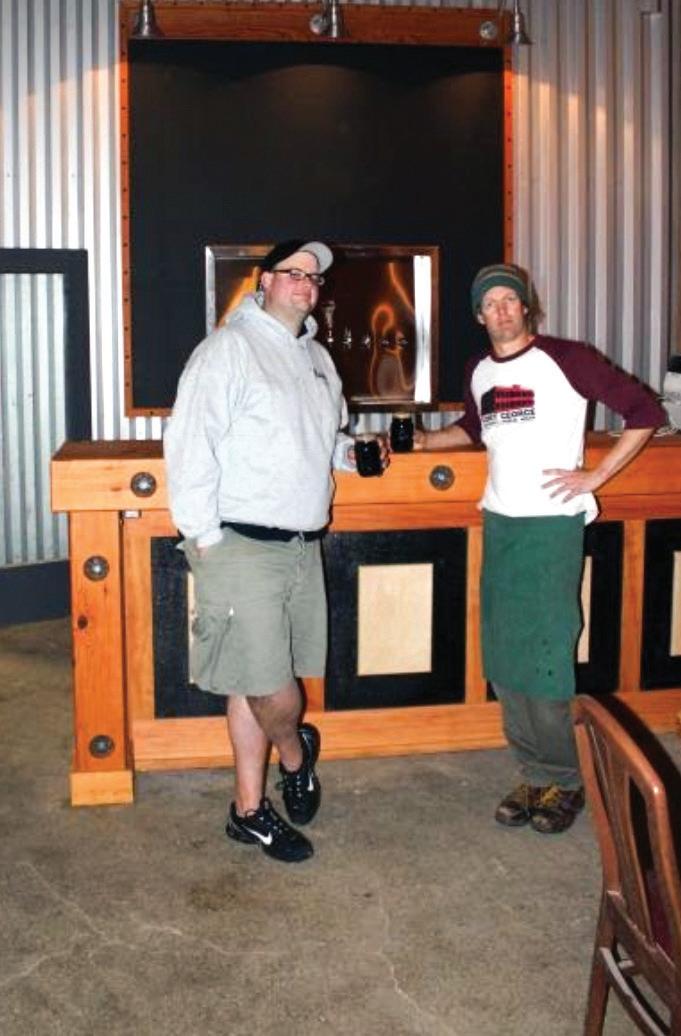
DiscoverOurCoast.com 65
Fort George Brewery founders Chris Nemlowill, left, and brewery co-founder Jack Harris in the then-new Fort George taproom.
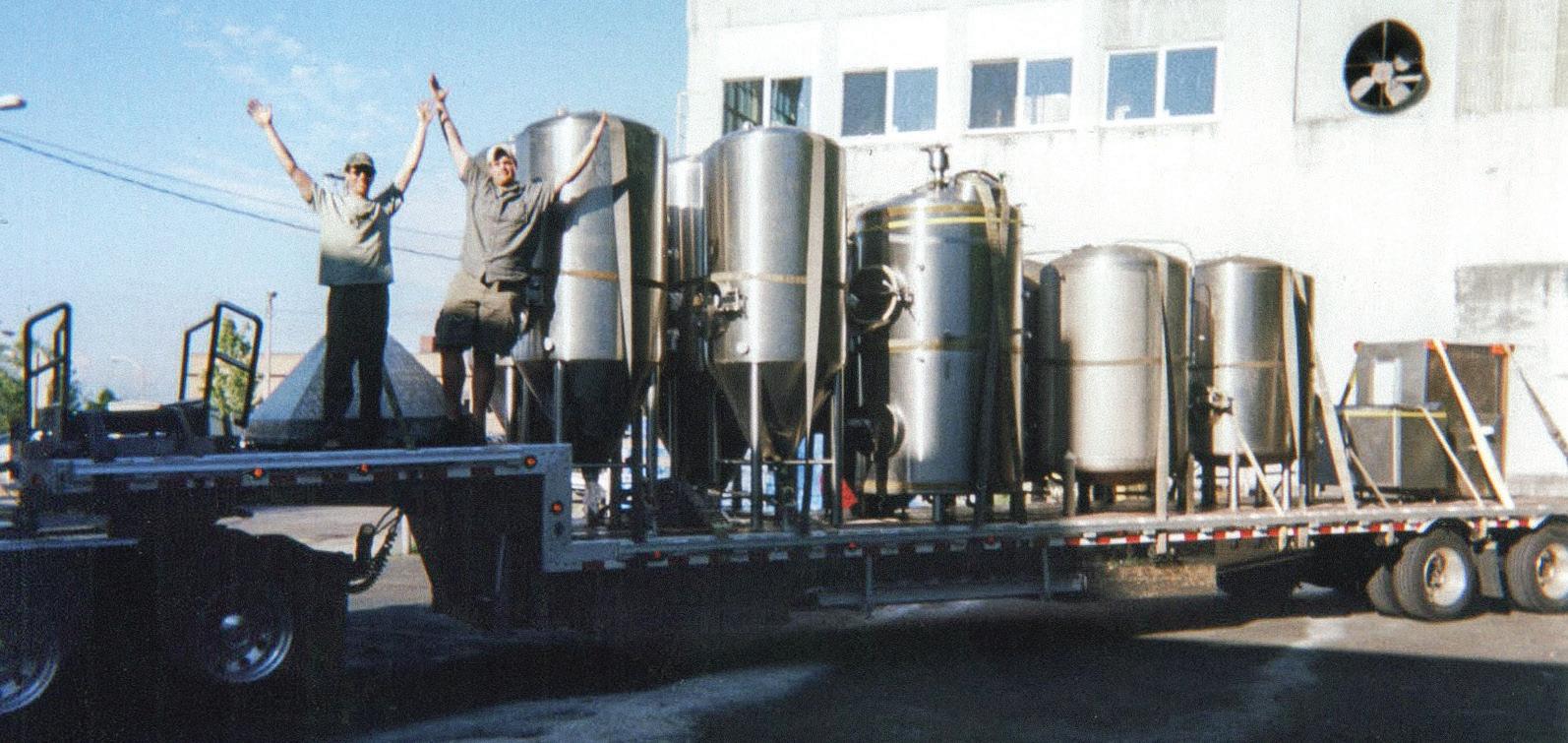
‘ a canning town’
Within a few years, the brewery had outgrown its space.
Nemlowill and Harris purchased the Fort George building, along with most of the surrounding block, for $1.65 million. That included the adjacent Lovell building, which had once housed an auto dealership, and provided space for a 30-barrel production brewery and a small canning line.
“We felt like Astoria was a canning town, and that we should can our beer,” Nemlowill said. One of those beers was the 1811 Lager, made in celebration of the city’s bicentennial.
Some years later, a further $8 million expansion into a former salmon canning facility saw most of Fort George’s production move to the Astoria waterfront.
“That building was built for just punching cans for the cannery that was out front, and the floors are extremely thick reinforced concrete, so in a lot of the areas, we were able to just drop our fermenters right on the ground without doing any reinforcement — and there’s loading docks,” he said.
Another legacy of the city’s canning past is its watershed, which Nemlowill credited as a benefit to craft breweries.
“The canneries on the waterfront used to use a whole bunch of water,” he said, “now we have this tremendous resource — it takes a lot of water to brew beer, it takes about 4 to 7 gallons of water per gallon of beer.”
As Fort George expanded, more local breweries opened their doors. Nemlowill welcomes the company, with an eye toward Astoria as a brewing destination, but the growth of the industry hasn’t come without challenges. The strain placed on the city’s wastewater system from brewing byproducts, for example, has prompted an ongoing search for solutions.
Nemlowill and Harris purchased the Fort George building, along with most of the surrounding block, for $1.65 million. That included the adjacent Lovell building, which had once housed an auto dealership.
But Nemlowill is looking forward, with new systems aimed at waste from the waterfront facility and plans for the addition of a roofmounted solar panel. That project could see more than two-thirds of the energy Fort George uses for brewing operations replaced by renewable electricity.
Those operations include the brewery’s distribution wing, with a portfolio that now includes dozens of craft beer, cider, wine and kombucha brands across the Northwest. Nemlowill said distribution has also recently expanded into the San Francisco Bay Area.
But when talking about further expansion, he’s quick to return to the brewery’s roots, to that sense of community he envisioned for his hometown.
finding a niche
That sense appears in nods to the local landscape, with beer names like Short Sands Lager and Cathedral Tree. It appears, too, in the crowd that lingers in the Lovell Showroom during the annual FisherPoets Gathering, and on the nights that locals share their work through makers markets and lectures.
“We decided having Sunday Night Music would be a lot of fun because, for people in the hospitality industry in Astoria, Sunday was their Friday,” Nemlowill said.
A sense of community is even found in the buildings themselves, whether in a repurposed cannery or a set of spiral stairs that once belonged to the Astoria Column.
And it begins with the brewery’s people.
“Almost everybody in management at Fort George started off either in the kitchen, behind the line, washing dishes or serving,” Nemlowill said. A few examples: Brian Bovenizer, the brewery’s marketing director, and Michal Frankowicz, the head brewer.
Eat & Drink 66 Our Coast Magazine 2024
Fort George’s first brewing system
Nicknamed Sweet Virginia, arrives in Astoria from the East Coast.
Then there’s Will Elias, Fort George’s in-house artist who designs labels for cans, and Kirsten Pierce, who started as a server before moving on to writing beer descriptions and crafting a witty newsletter.
“People see an opportunity. They see a niche that Fort George needs to fill, and quite often they will educate themselves in the way that is needed to be in that spot,” Nemlowill said.
When asked about his plans for the brewery’s future, he remained grounded.
“Most of the places that you’ll find our beer are within one day of driving,” he said. “It’s really better for the environment to ship out grain and hops to a region, use a regional water supply and make beer, and it’s fun to have it be different.”
He has no plans to distribute nationwide.
“What was so inspiring about starting a brewery is — beer was boring. It was all the same. It all looked the same, it all tasted the same. So it’s fun to have craft breweries have their own local flair,” he said.
The brewery’s next steps, according to Nemlowill, will be driven by the people who work there. But Fort George remains committed to a sense of place, to the history that it’s named for and to an idea.
“We believe in regional breweries,” Nemlowill said.
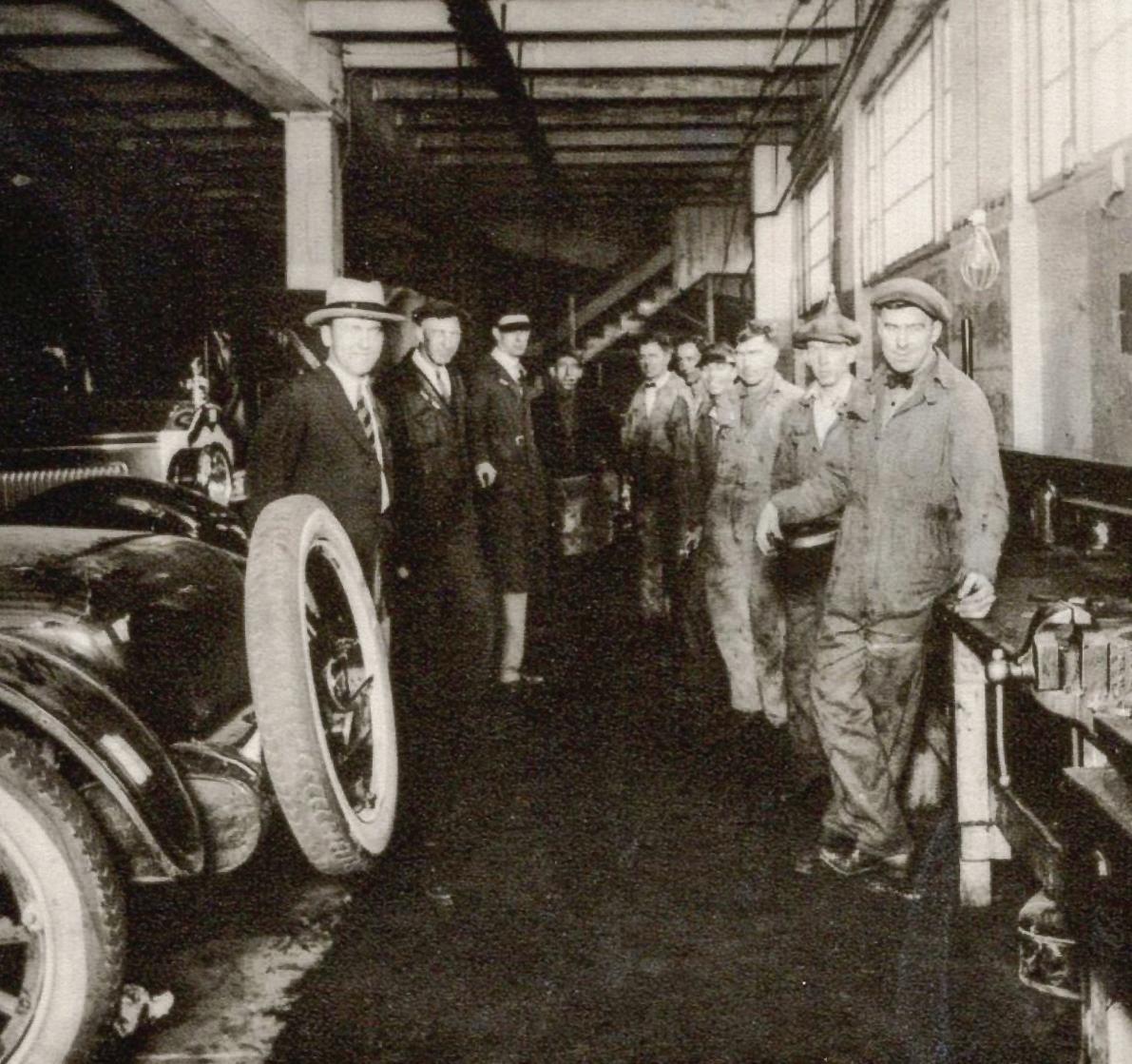
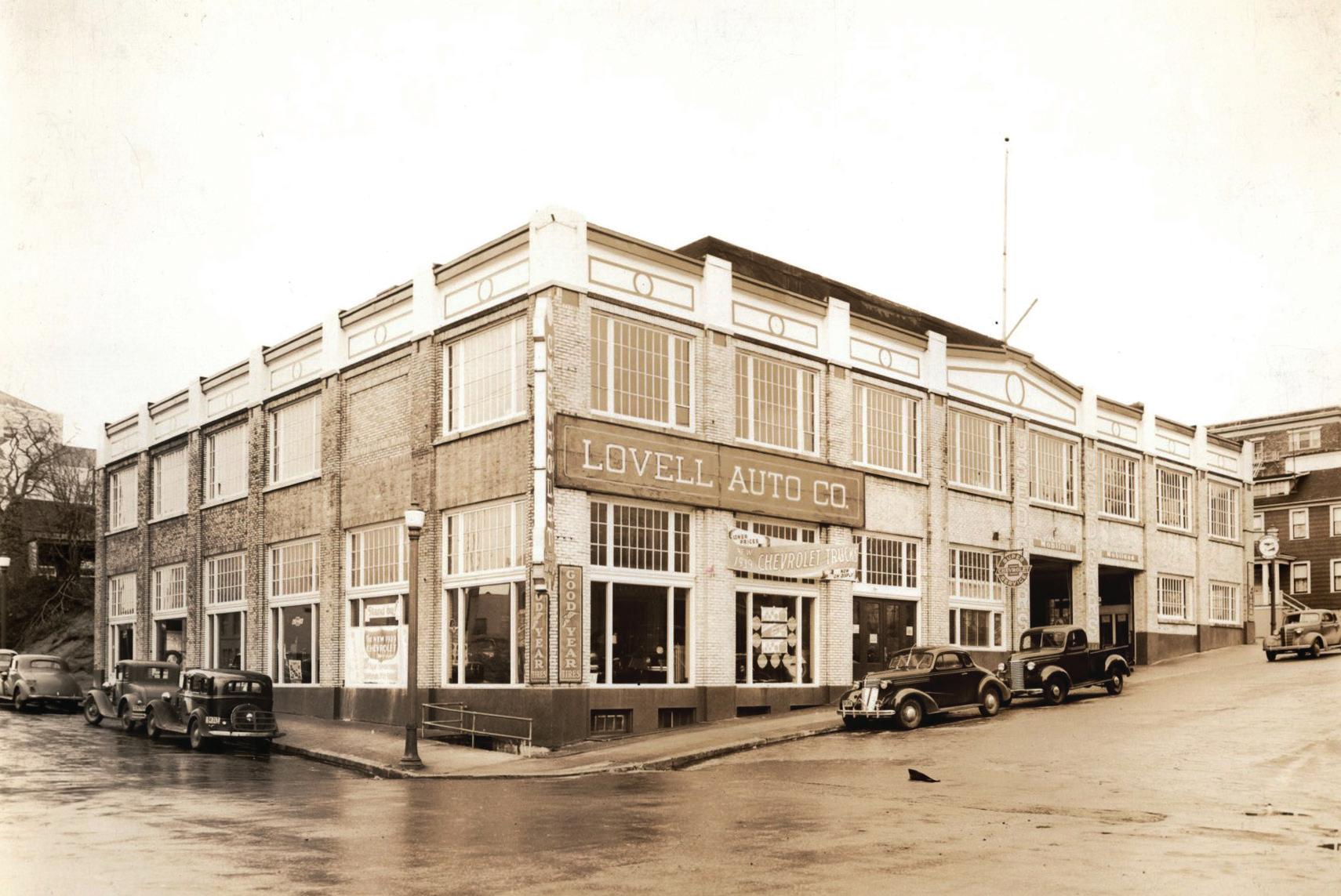
The Lovell Auto Co. building
Shown here in a photo from 1939, now houses a 30-barrel production brewery and a small canning line.
DiscoverOurCoast.com 67
Sweets BY THE SEA
Words: M.J. Cody • Images: Shanna Madison
On the North Coast, creative bakers and chefs are conjuring up all sorts of morsels to tempt and satisfy sweet cravings
For a real treat, wander the riverside in Nehalem to find Pacific Roots Coffee + Mini Donuts, a food truck serving donuts made on the spot. Closer to Manzanita, stock up on caramels and peanut brittle at Sarah Jo’s Candy. And who can resist made-from-scratch cookies and pastries from Dylan’s Cottage Bakery in Long Beach? Cannon Beach and Astoria are filled with treats, as is Seaside, where it wouldn’t seem like a true beachside adventure without homemade saltwater taffy or caramel corn from Phillips Candies.

Truffles
Eat
& Drink
Flavors, like hazelnut and raspberry, sit in a case at the Cannon Beach Chocolate Cafe.

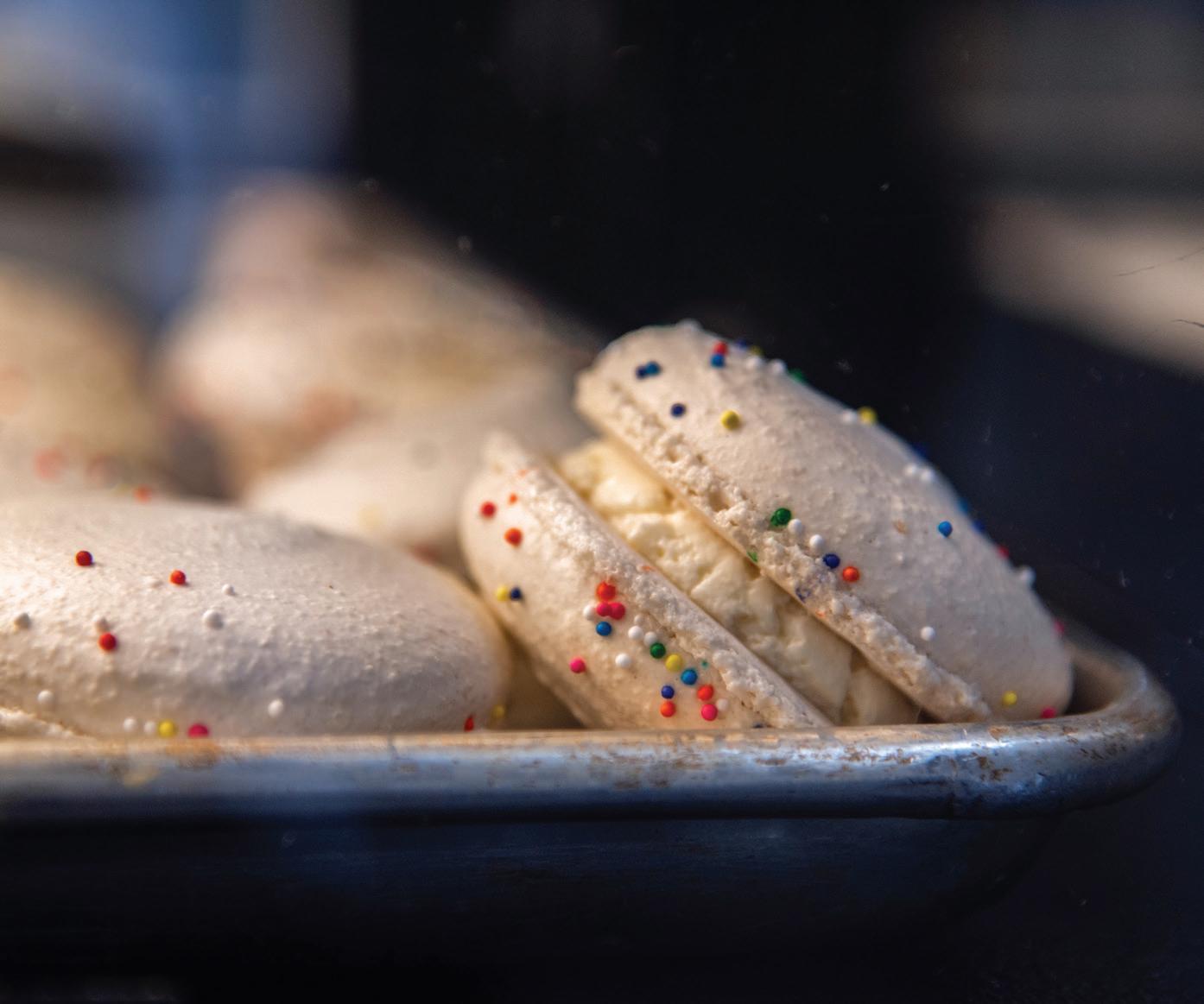
French macarons
Aleesha Serrita Nedd’s French macarons are a favorite at The Naked Lemon in Astoria.
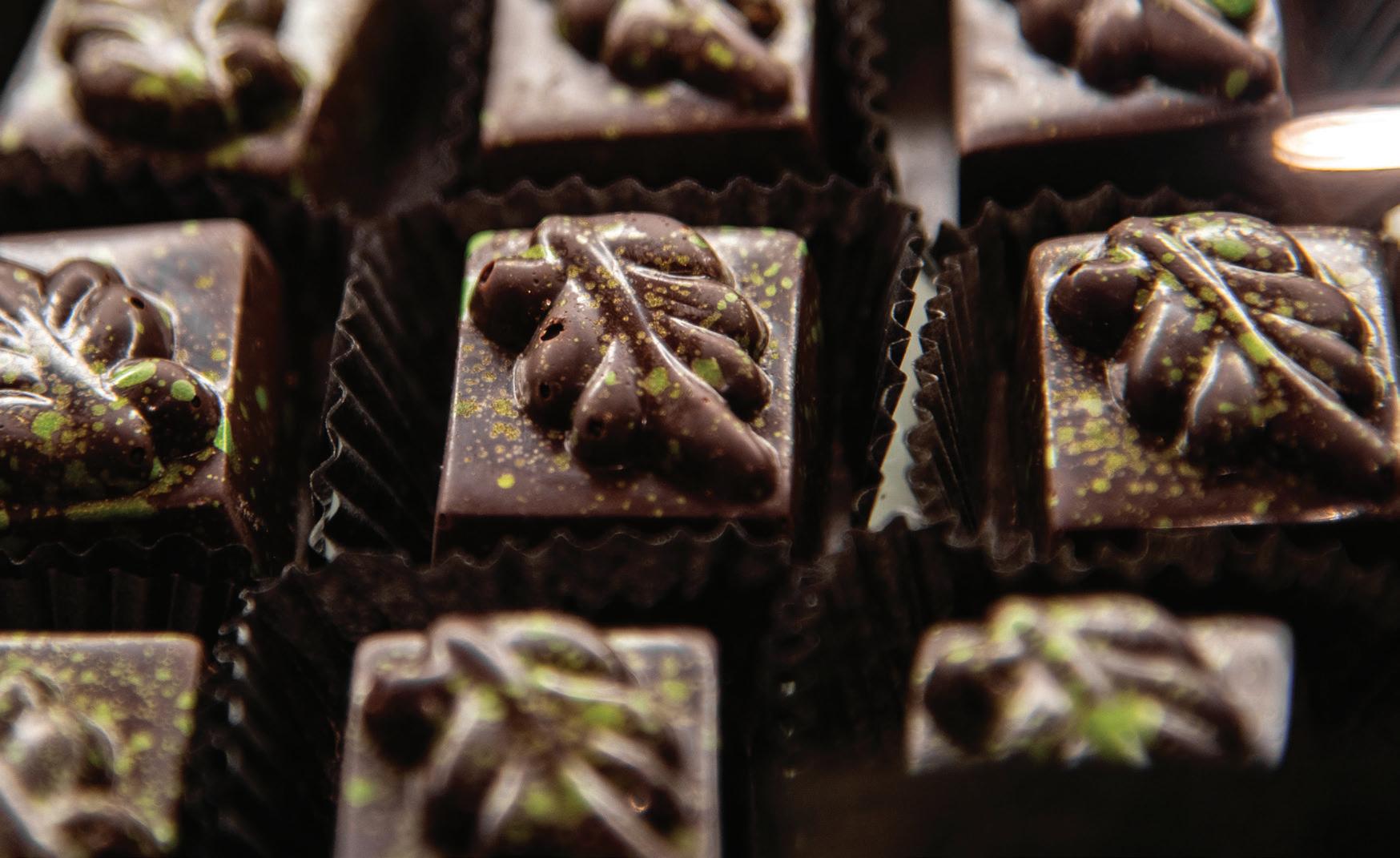
Chocolates
At the Cannon Beach Chocolate Cafe, founded by Tim and Dawn Krupa in 2011.

Cupcakes
At The Naked Lemon, which is located in the Astor Building on Commercial Street.
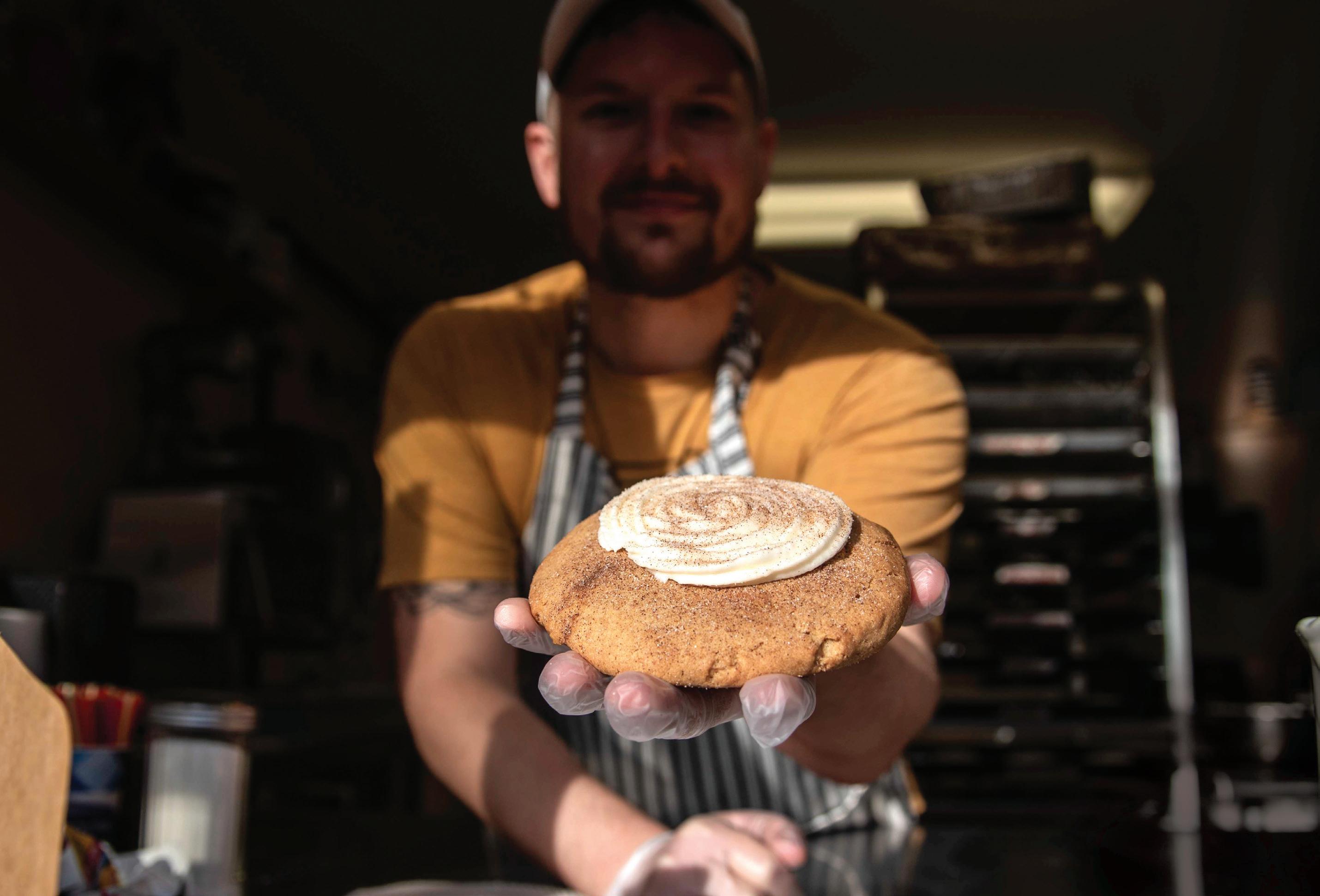
A chocolate cafe
After trips throughout Europe savoring fine chocolate, Tim Krupa and his wife, Dawn, lamented how artisanal varieties were not readily available at home on the Oregon Coast.
They then decided to offer chocolates from around the world, launching the Cannon Beach Chocolate Cafe. Featuring imported bars, truffles and other morsels, including a brilliant chocolate milkshake, the Krupas’ quirky shop soon flourished.
In 2020, when the couple considered retiring, one of their longtime staffers, Kelly Mauer, broached the idea that she might be interested in acquiring the cafe, only to find out that her coworker and friend, Danielle Shipp, had the same idea — so the two decided to join forces.
Mauer, the self-proclaimed people person, mans the front and oversees staff, while Shipp, who studied at the International Culinary School at the San Francisco Art Institute, gets creative behind the scenes.
“Danielle uses her fabulous baking skills to create new concoctions,” Mauer said. “Combined with everything she learned from Krupa as a chocolatier, she really can let loose and let her imagination take off.”
“Sometimes it gets me in trouble,” Shipp said. “It’s fun to try new flavors and new recipes like peaches and cream, seafoam, homemade marshmallow or infusing truffles with spirits like whiskey, tequila or bourbon.”
Shipp’s homemade pastries at the Cannon Beach Chocolate Cafe are favorites that pair well with the cafe’s teas and espresso. The beloved chocolate milkshake is still on the menu, created with 70% dark Colombian chocolate as a base.
“We were so excited, but nervous when we started,” Mauer said. Then the coronavirus pandemic hit, and sales went online.
“It was a humbling experience,” Mauer continued. “The community rallied around us and we partnered with hotels and other shops to get our chocolates out there. Honestly, we had a lot of extra love. Within a year, we had doubled our income.”
Besides the shop’s vast array of imported bars, chocolate-dipped items, bark and molded chocolate (check out the little critters), there’s a delectable Mayan spice version of hot cocoa, spiked with cinnamon, ancho and chipotle chilis.
Shipp’s homemade pastries are favorites that pair well with the cafe’s teas and espresso. The beloved chocolate milkshake is still on the menu, created with 70% dark Colombian chocolate as a base.
One of Shipp’s other not-to-miss items is her spoon chocolate — which lies somewhere between a sipping chocolate and a pot de crème. It’s so silky and thick, it’s best eaten with a spoon.
Eat & Drink
70 Our Coast Magazine 2024
The Cookie Jar is run by the Koczenasz-Runkle family.
Cookies and kids
“You can’t have a bad day if you have a cookie,” said Marcus Koczenasz-Runkle, co-owner of The Cookie Jar in Seaside.
It’s pretty much the philosophy of the new shop that was, “all the kid’s fault,” according to Anthony Koczenasz-Runkle, the other half of the ownership, referring to their 11-year-old twins, Jolene and Castiel, also known as JoJo and C.J.
“The kids saw how Marcus had his own business and thought they wanted their own business too,” Anthony said. “We all sat down and envisioned different ideas and they came up with an enthusiastic, ‘Cookies!’”
“JoJo and C.J. are the company CCOs — that’s the chief cookie officers,” Anthony said with a laugh. “They’re really invested in making the enterprise work and have become cookie connoisseurs. They are continually coming up with new concepts, then Marcus and I do the research to see if it’s a viable cookie, or if it’s only a temporary idea.”
Seven different cookies are offered on a weekly rotation at the shop, with three kinds always available: chocolate chip, vegan chocolate chip and snickerdoodle. The menu changes on Fridays, introducing four new varieties, keeping in mind seasonal tastes.
“The twins are the main reason the whole thing works,” Anthony said. “They man the shop, do sales, tidy up and interact with customers. They’re learning math, responsibility and people skills. I mean, who can resist these cute kids insisting you try their cookies?”
With the twins in middle school, Anthony noted that their enthusiasm has been contagious. Many of their friends, who helped out with the shop’s local farmers market booth during the summer, now seem to be developing inspired ideas of their own.
“I have a lot of hope for the future,” Anthony said. “Our kids have enriched our lives exponentially.”
“It’s a fun, family experience,” Marcus added. “It’s a challenge starting a new business, but we try to keep our sense of humor.”
“We like joyful things. Something as simple as lining our shelves with cookie jars,” Anthony said. “When people come in and say, ‘I remember that jar — my grandma had that one,’ I love that.”
“It’s nostalgia,” Marcus added. “Cookies are comfort. The whole enterprise is just the sweetest thing.”
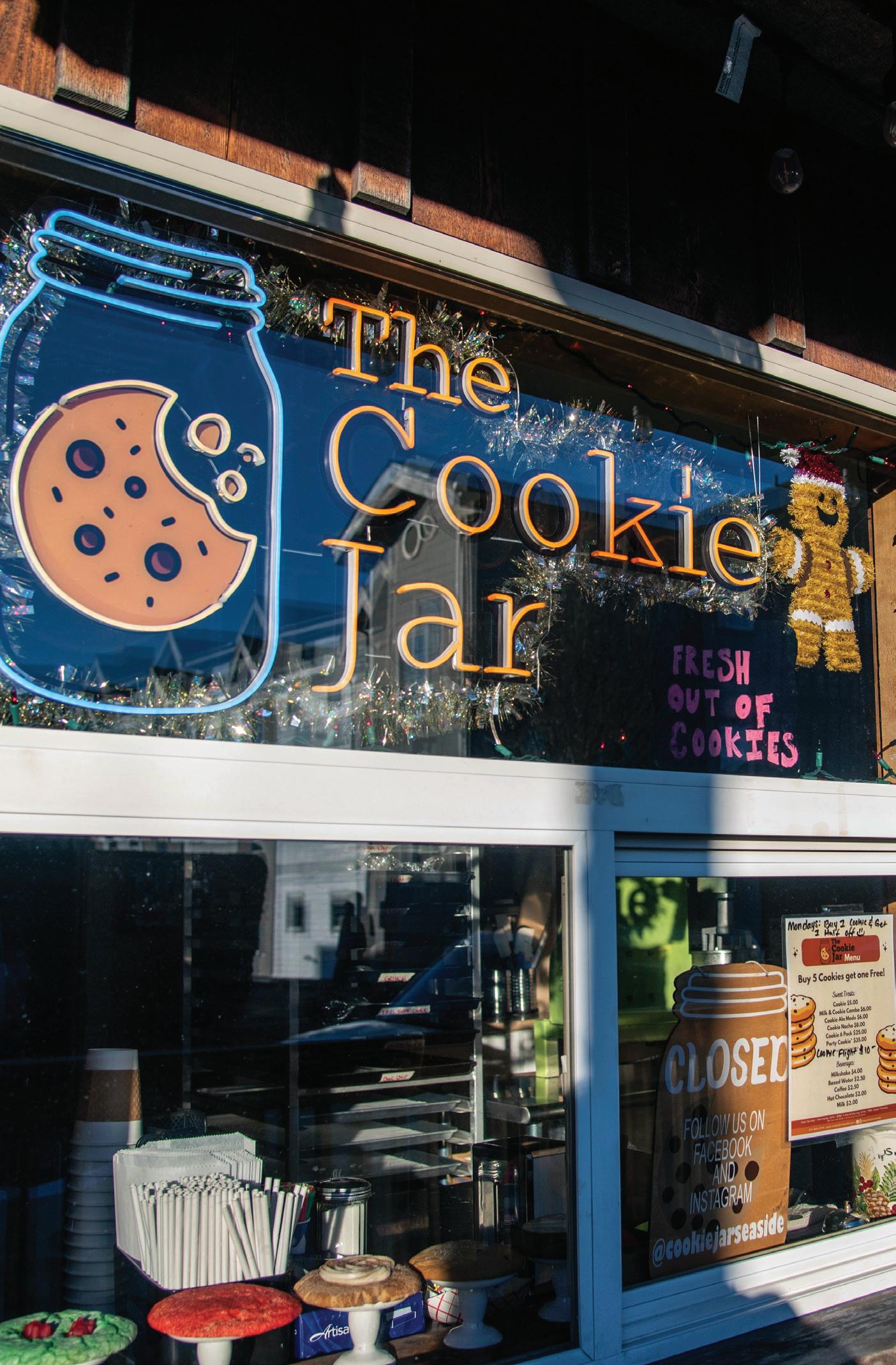
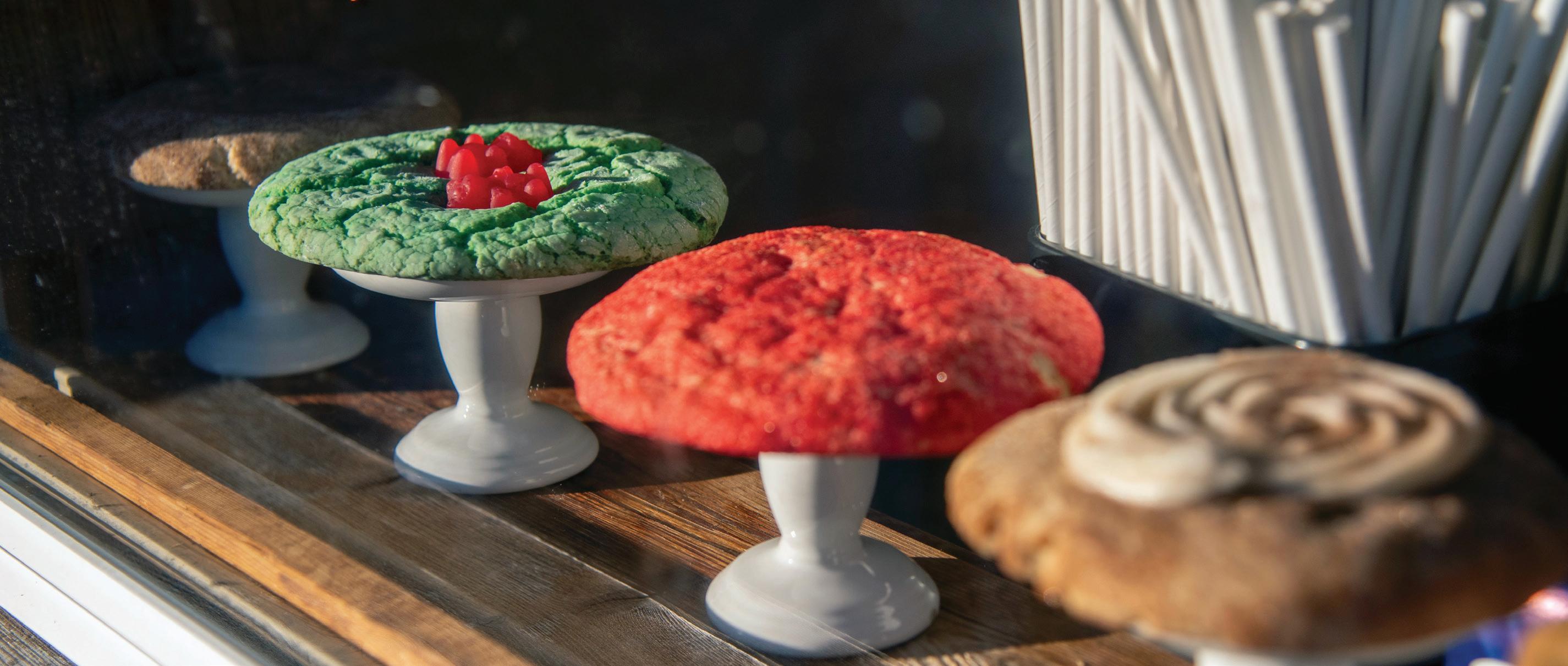 Sweet treats at The Cookie Jar in Seaside.
Sweet treats at The Cookie Jar in Seaside.
Eat & Drink
Full circle
“I didn’t see baking or anything to do with food as a career,” Aleesha Serrita Nedd said, amused at her career path in creating The Naked Lemon, an Astoria bakery.
After graduating from Portland State University with a degree in communication studies, Nedd moved back home to Astoria. To make ends meet, she took a few jobs in food service, all the while experimenting with baking.
“Baking was always a passion of mine growing up, mostly seeing my grandmother in the kitchen,” she said. “I sort of did it as a hobby. At the time I first started a pop-up bakery, I was still working at Coffee Girl. I was getting a feel for things and thinking, ‘Do I want to do this?’ I’m not sure, let me just try this. Let me just start doing a little bit here and there.”
Naming the baking venture was serendipitous. Nedd went to retrieve a lemon wedge at Coffee Girl, but when she opened the fridge there was only one lemon with no rind, having been zested by the chef. She recalled that the lone lemon looked naked and thought to herself that the name “naked lemon” was catchy — and so it was.
“I was doing more pop-ups in other local businesses and I started doing a little wholesale baking on the side too. Then it came to the point of, ‘Gosh, this is growing. I either have to run with this, drop it or keep it really small,’” she said.
A turning point came when Buoy Beer Co. hired her to create three custom celebration cakes for their third anniversary. After her working hours at Coffee Girl, she baked during the night in the commercial kitchen at the Astoria Senior Center, then had to get back to work early in the morning, only to rush back again to finish and deliver her cakes.
“I ended up being awake for something like 22 hours,” she recalled. Realizing it wasn’t sustainable to both bake and work full-time, she realized she’d have to find a place to set up permanently, then gradually transition to baking.
“It was a huge risk, but I had such a good support system with my mother, who said, ‘If this is what you want, then try it out and if it doesn’t work, it’ll show itself. You’ll know when you have to pay bills if you can do it or not,’” she said. “I was 26 and just didn’t know any better, which I guess was a blessing. I just boot-strapped the whole thing, and got going, chipping away at things.”
Even with her own space, Nedd was still renting the Astoria Senior Center’s kitchen, baking early in the morning and transferring goods to her store. She still did custom cake orders, but being alone was difficult and sharing a kitchen was limiting. She decided to seek another location with a commercial kitchen.
“It was a huge draw, having my own kitchen instead of sharing and transporting,” she said. “Finding that kitchen and building out at that location was wonderful.”
Now, Nedd’s French macarons are a favorite. The bakery’s space in the Astor Building on Commercial Street has a small team that includes two bakers, with plans in the works for another location with a production kitchen.
“It’s worked out wonderfully,” Nedd said. “My day-to-day is totally changed now. The shop can run itself and I’m able to do a few more things that I really enjoy doing. I know I had gone to college in communication but my focus and interest was in marketing and public relations and I kind of always saw myself in a role like that, or wanting to do that, but didn’t really know how that would look. And now that’s what I’m doing. It’s been a crazy ride, but I’ve kind of arrived full circle.”
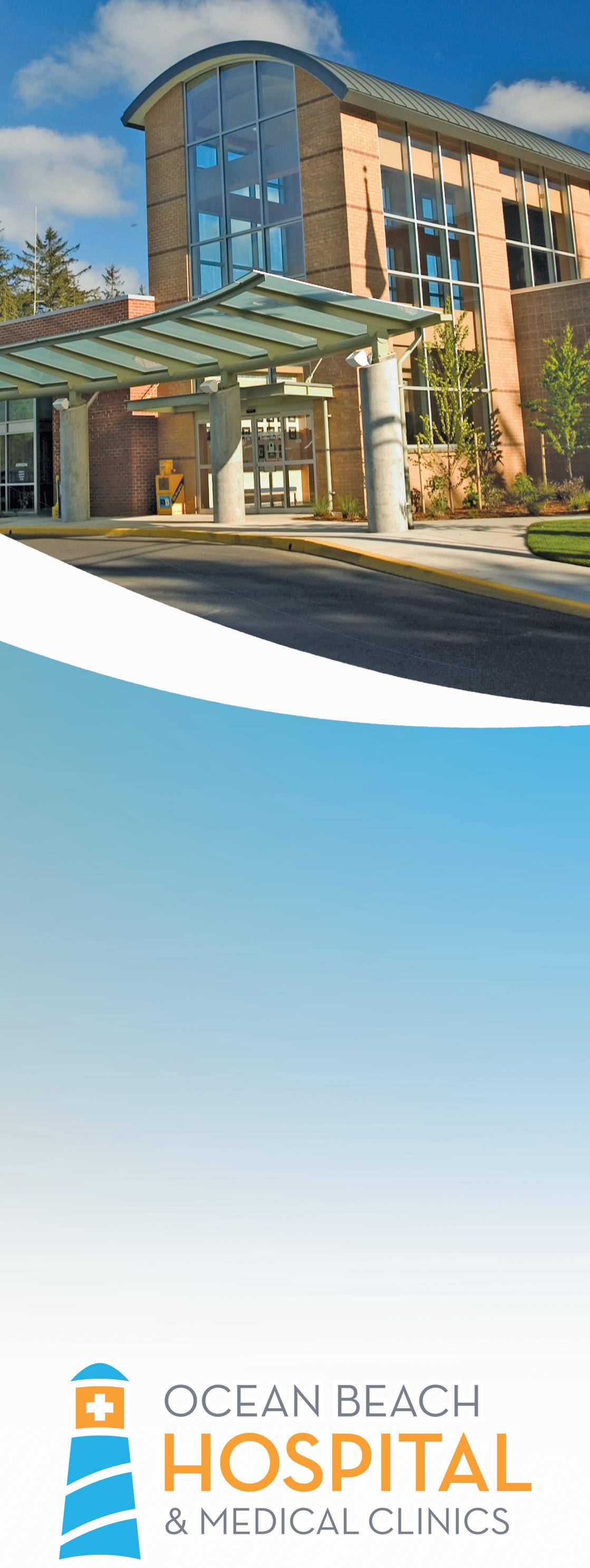
Quality Healthcare, Close to Home
Our compassionate and committed staff are proud to be of service by delivering high quality, patient-centered medical care to the community we live in. Thank you for choosing Ocean Beach Hospital and Medical Clinics to meet your healthcare needs, and for partnering with us to build a healthy community.
We’re here... with round the clock emergency care, diabetic services and family medicine.
We’re here... with a new walk-in clinic that provides non-emergency care, close to home.
We’re here to serve... our community and every day we reach out with excellence, partnership, integrity and compassion in order to care for those who need us most.
We’re here for you... offering programs, treatment, and the personal attention you’d expect from a community hospital. We deliver compassionate care when you need it most.
Our experienced practitioners are committed to providing high quality medical services, while helping patients feel cared for as individuals in their own hometown.
To find out more about what Ocean Beach Hospital and Medical Clinics has to offer you, visit us on the web at www.oceanbeachhospital.com.
Ocean Beach Hospital • 360-642-3181
Ocean Beach Medical • Clinic 360-642-3747
Naselle Clinic • 360-484-7161
Ocean Park Clinic • 360-642-6387
Ocean Beach Wellness & Rehabilitation Center • 360-642-6328
www.oceanbeachhospital.com
72 Our Coast Magazine 2024
3:52 p.m.
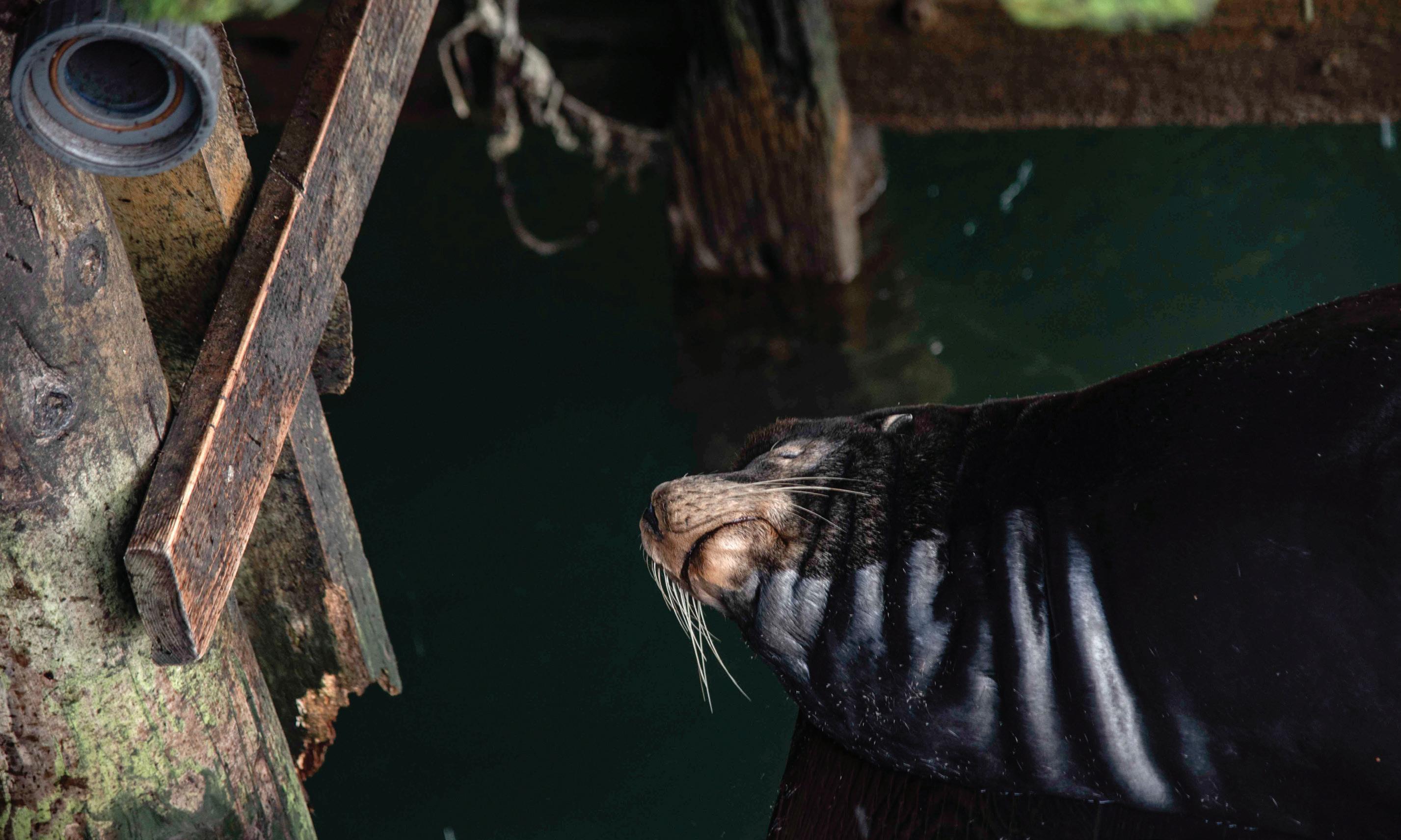
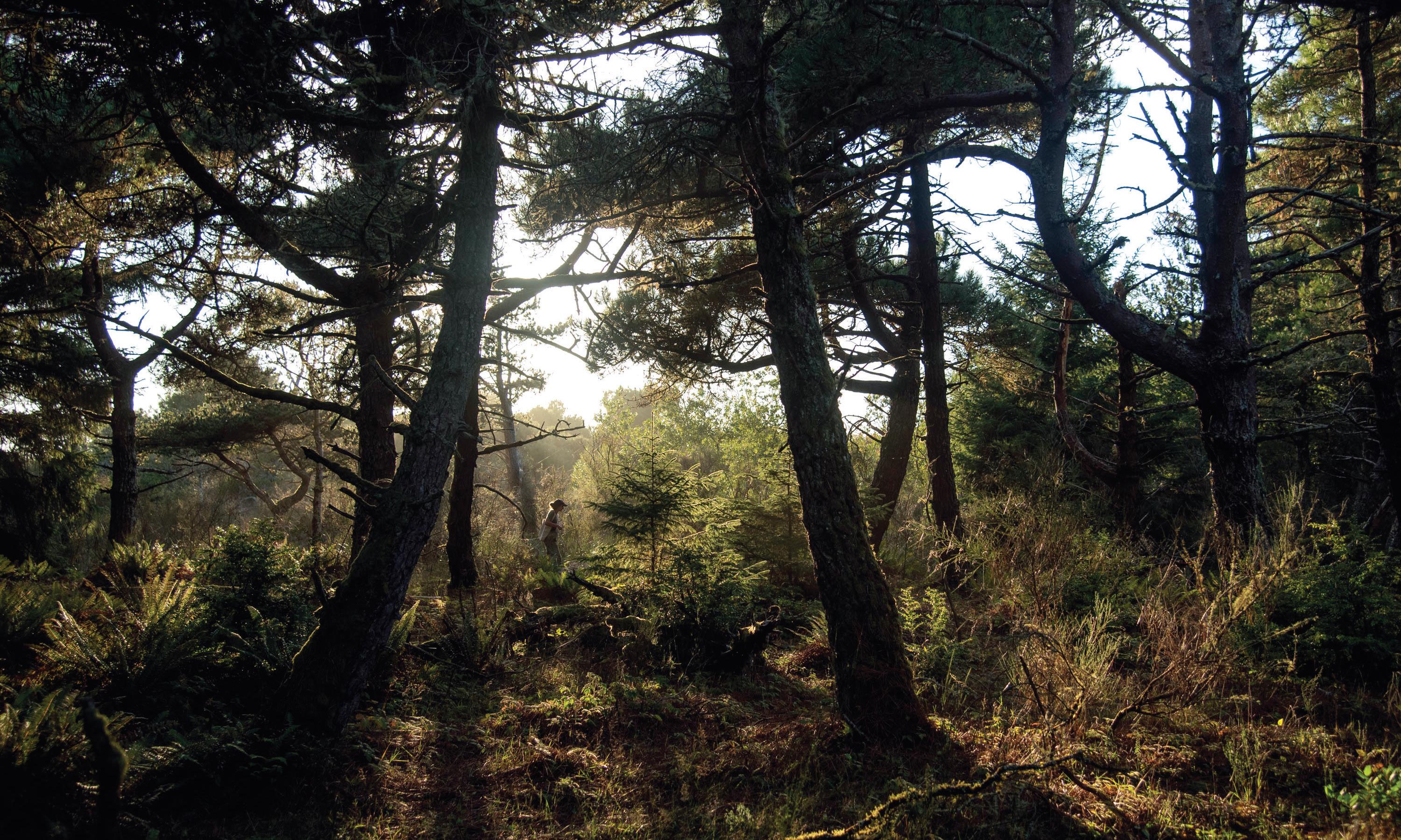
5:49 p.m.
A sea lion sleeps along the Astoria Riverwalk.
A mushroom forager at Nehalem Bay State Park.
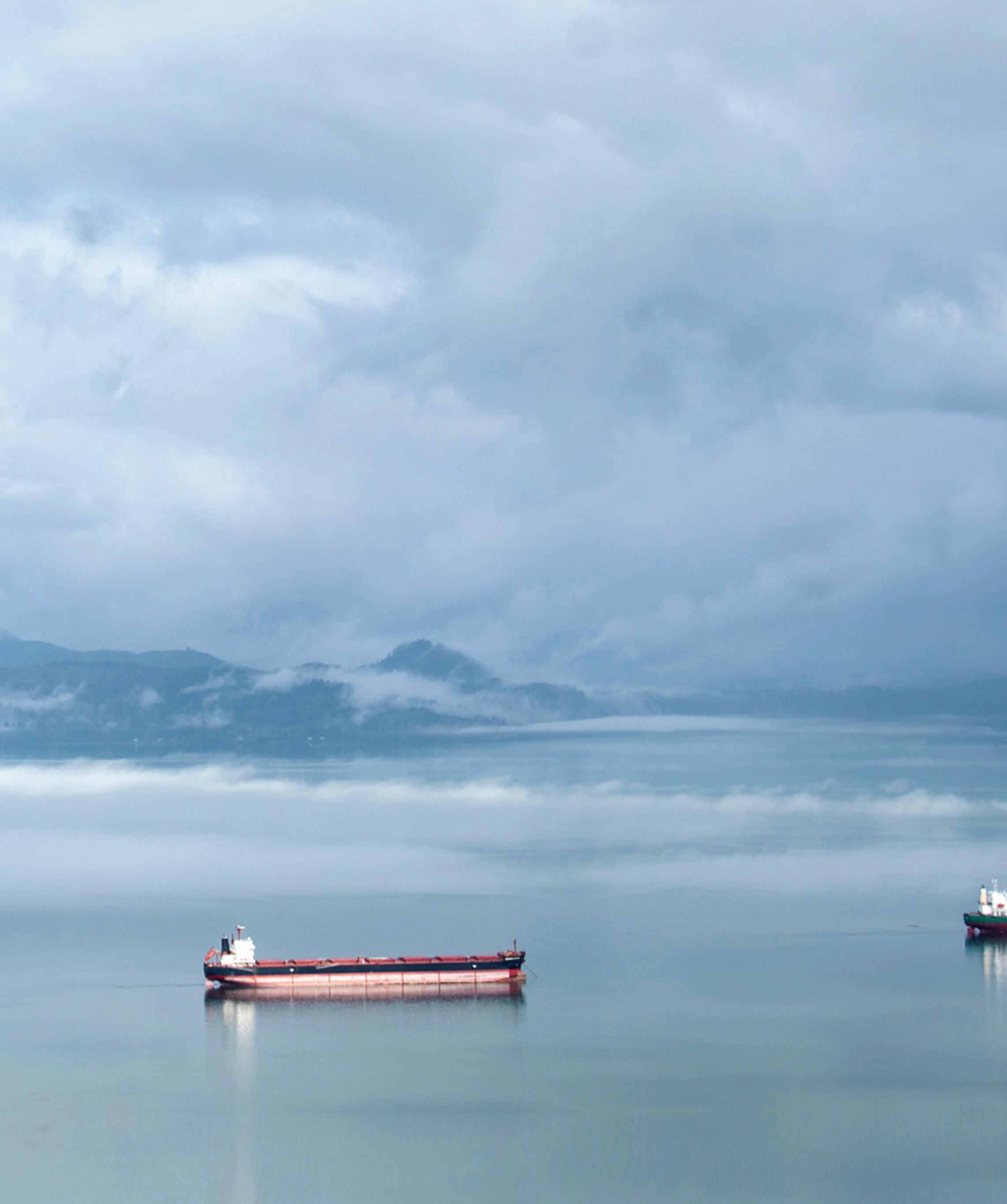
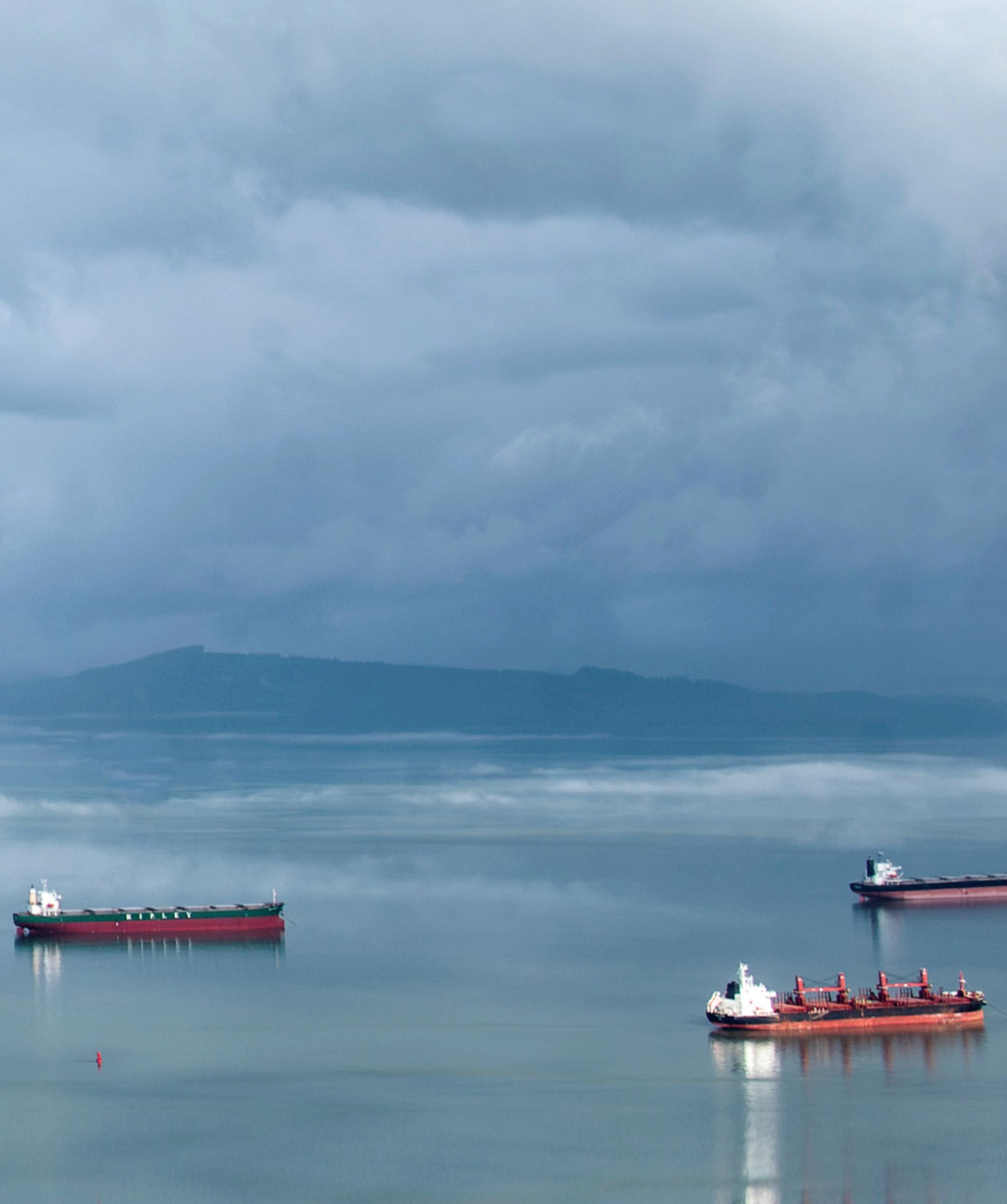
Live & Stay
Sound on the river
Columbia River ships
Residential architecture
U.S. Coast Guard voices
Live & Stay Our Picks
Where to spend a day on Our Coast

Long Beach
Peninsula Saddle Club
By David Plechl
Peninsula Saddle Club may have a folksy, countryside feel, but this equinefriendly camping destination on the Long Beach Peninsula is easy to find.
Just a short distance from expansive miles of trails and ocean beaches, it’s located amidst 16 tree-rimmed acres on Sandridge Road, close to the Willapa National Wildlife Refuge.
The location hosts spacious pens for horses and plenty of meadow ground for recreational vehicles, trailers and tents as a base for exploring the peninsula.
For most of the year, things are calm and quiet here. However, on the last weekend of July, birdsong and soft, rustling winds give way to hooting and hollering, bronco riding and the brisket of the annual Long Beach Rodeo, a longtime local tradition.
But aside from organizing its signature rodeo and the occasional pop-up barrel race, Peninsula Saddle Club simply holds space as a venue for riders and offers a welcoming campground area.
The club also supports local youth groups, such as 4-H clubs. Its members clop through the peninsula’s Fourth of July parade, too.
Club membership is available for an annual fee and includes unlimited access to the facilities. Members don’t have to own a horse to join but will be expected to attend meetings and pitch in.
Overnight horse camping rates at the club start at $25 a night. There are also additional fees for pen use.
The grounds are open year-round, but bathrooms and water aren’t accessible from October through March, so plan accordingly. Horse camping is also unavailable during the annual rodeo and during the junior rodeo in August.
The club is also open to volunteers, especially come rodeo time. So if you’re good with a shovel, can run stock or push cows, or just want to learn how, don’t hesitate to get involved.

Cannon Beach
Stephanie Inn
By Marianne Monson
A short distance from Haystack Rock, the cobalt blue balconies of Stephanie Inn overlook shifting sands.
Established by Jan and Steve Martin in 1993 and named after their daughter, Stephanie, the Martins’ goal was to create an intimate inn that feels like a beach house.
That goal continues, now under the ownership of Stephanie Snyder.
Throughout the more than 40-room inn, a sense of community is fostered by warm color schemes, exposed rough-hewn timbers and nightly receptions with wine and appetizers, served beside the fireplace.
Daily discovery experiences might include a visit to the local market with the inn’s chef or a crackling beach bonfire.
Snyder described the inn as “a love letter to Cannon Beach,” and ties to the region are felt throughout. Most of the fare in its restaurant is sourced from the family-owned 40-acre farm.
At one of two evening seatings, Executive Chef Aaron Bedard often welcomes guests personally and explains the evening’s menu highlights. Breakfast, included for overnight guests, might include waffles, smoothies or eggs benedict.
Dinner, available for overnight visitors and by reservation, is a five-course, prix fixe menu with two entree options. Those might feature wild-caught Chinook salmon, Dungeness crab cakes or pepper-encrusted filet mignon. Gluten-free, vegetarian and vegan options are available, as are local wine pairings for each course.
Connections to Cannon Beach’s vibrant arts scene are evident throughout the inn, with a collection of work commissioned for the space by area artists.
Behind the check-in desk, an acrylic painting by Donald Masterson uses projection technology to shimmer and move with the tides. Luminous coastal monoprints by Stirling Gorsuch and Duncan Berry’s prints in the Japanese style of Gyotaku enhance the main floor.
The inn’s spa is also open to overnight guests and visitors. Its walls are graced with water features and a living moss wall. Many of the inn’s spa treatments integrate herbal products grown at the Public Coast Farm.
76 Our Coast Magazine 2024
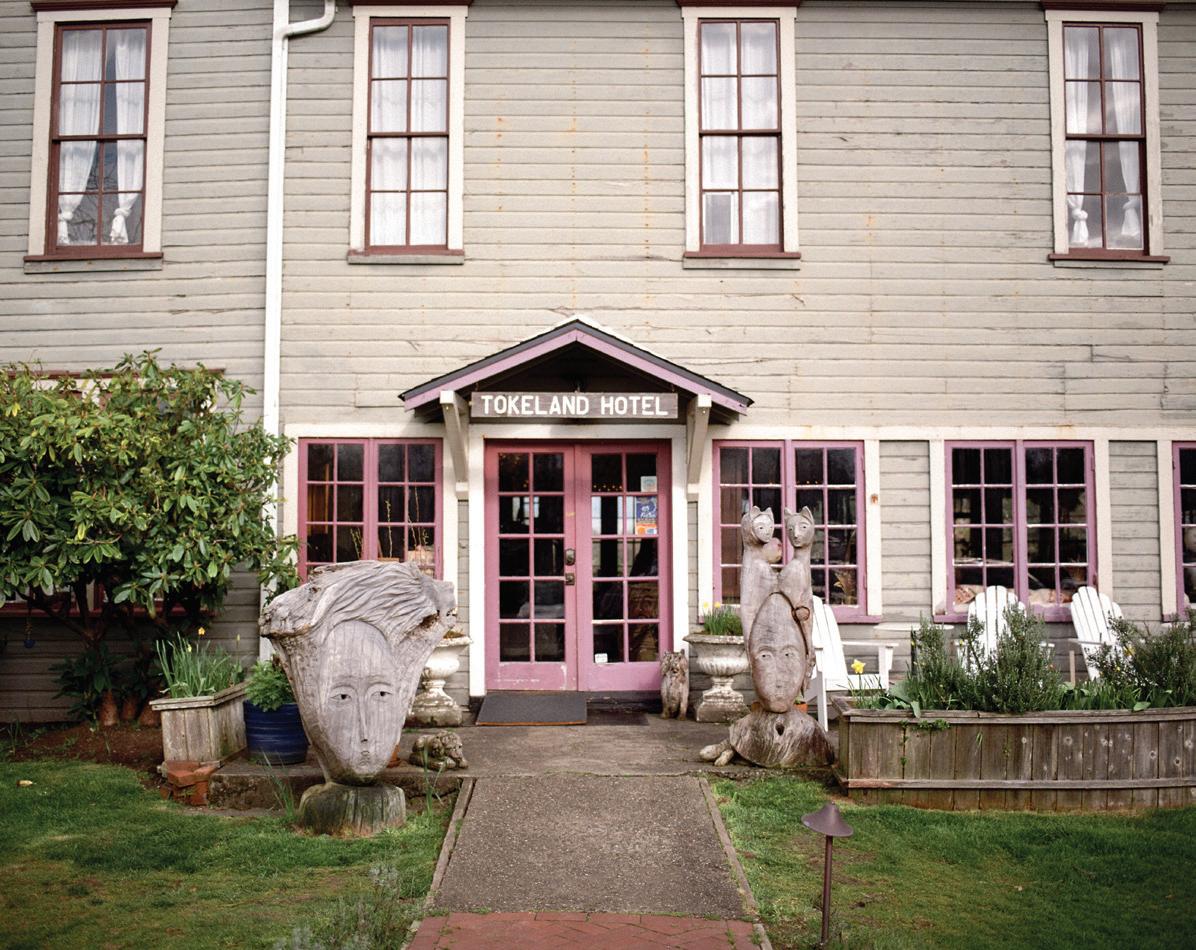
Tokeland
Tokeland Hotel
By David Campiche
Indigenous people came first to Willapa Bay and established a village at Tokeland. In Pacific County, there were once more than 40 cedar-planked villages, all with water access. Toke Point was a favorite gathering place.
Historically, four runs of salmon returned to the bay and up the numerous rivers, streams and creeks that dot the 30-mile waterway. The tradition lives on, aided by a cornucopia of clams and oysters.
Chief Toke summered on this piece of land in the late 1700s, a village passed down over eons. Capt. John Meares was greeted in 1788 as he entered the mouth of Willapa Bay. Tokeland is named for the Shoalwater Bay Tribe chief.
The first white settler, J.F. Barrows, settled here in 1854 but left a few years later. George and Charlotte Brown settled in 1858.
In 1885, the Browns’ daughter, Elizabeth, and her husband built a farmhouse and expanded the building into the present Tokeland Hotel. It quickly became a popular destination for travelers through the next century and beyond.
Today, the hotel features 18 bedrooms and a restaurant owned by Heather Earnhardt and Zac Young, The Wandering Goose. The restaurant’s chef serves three meals a day to hungry travelers.
The oldest hotel in Washington state, it stands three stories high and proud. Charming does not begin to describe this lovely Victorian structure.
The Tokeland Hotel claims a stunning view of Willapa Bay. The ocean rests just a short distance to the west and boat traffic enhances a visitors’ view of the scenic seascape. The bay is famous for the Willapa Bay oyster, and the succulent bivalve is served faithfully in the hotel’s wood-lined dining room.
Boat traffic — dugout cedar canoes and clinker-built sailing boats — were once the favored travel across the shallow bay.
The hotel stands as a living monument. Be sure to say hello to the ghost cat, a rumored resident, but watch out for the ghost chef, who many claim walks the hallowed halls at night.
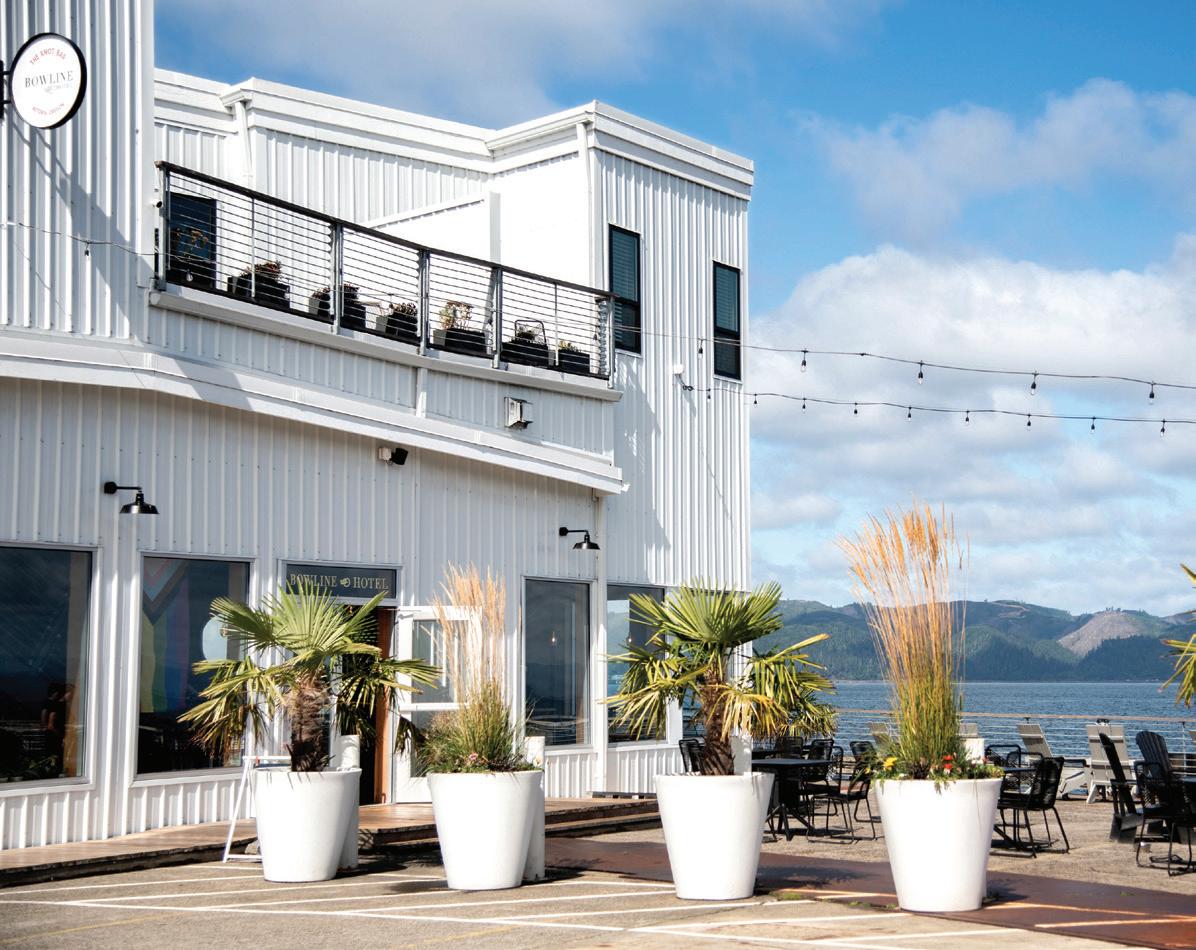
Astoria
Bowline Hotel
By Rebecca Norden-Bright
Perched on the Columbia River in a converted sardine cannery, Astoria’s Bowline Hotel offers simple, understated luxury dotted with Scandinavian influences.
The hotel takes full advantage of its locale on the river. With exposed beams, large windows and circular mirrors that bear a charming resemblance to portholes, its lobby will immediately make you feel like you’re on a boat — perhaps a particularly elegant fishing boat.
The hotel’s decor is sleek and modern but incorporates elements from the original cannery in a graceful meeting of past and present that feels much like Astoria itself.
Guests can choose from rooms facing the river or the Astoria Riverfront Trolley, or stay in the Ice House, a standalone building with two suites just adjacent to the main hotel.
In every room, the river is never far away — guests can relax or enjoy a drink on the hotel patio, adorned with delicate string lights, an overlook to watch barking sea lions and an unobstructed view of the Columbia River.
The hotel’s bar, The Knot, boasts Scandinavian-inspired, locally sourced food and elegant cocktails.
The menu offers standard old fashioneds and margaritas, but also specialty cocktails like the tamarind martinez, with tamarind-infused gin, or the good health, a concoction of scotch, chamomile infused blanc vermouth and citrus flavors. Complete the aquatic experience with local seafood like rockfish and albacore.
Other amenities include barrel saunas and in-room fireplaces, so warmth isn’t hard to come by even if the weather on the coast isn’t perfect. Located right in the heart of downtown Astoria, guests at the Bowline Hotel are just a short walk from all the town has to offer.
DiscoverOurCoast.com 77 Homes. Rentals. Hotels. Campgrounds.
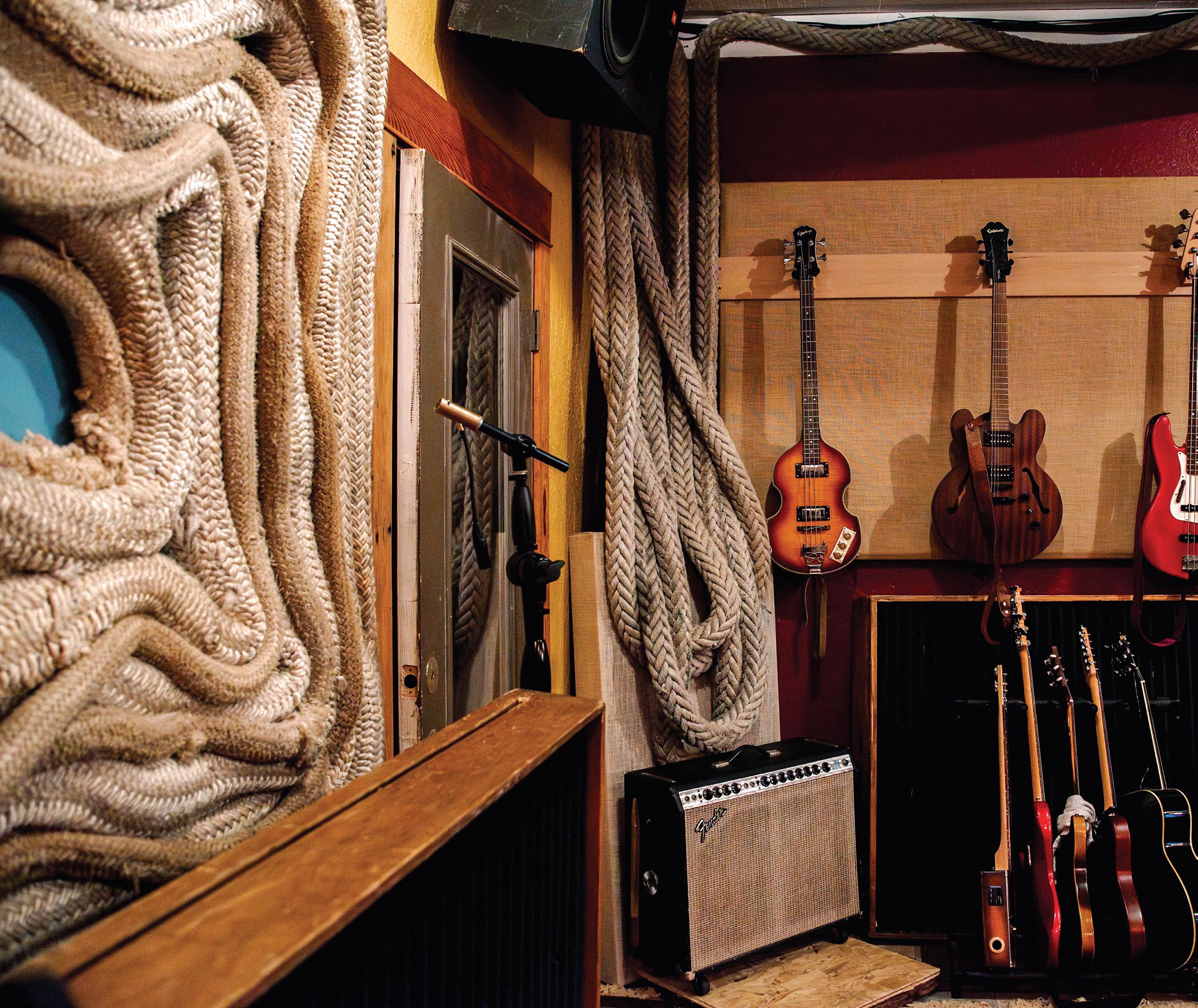
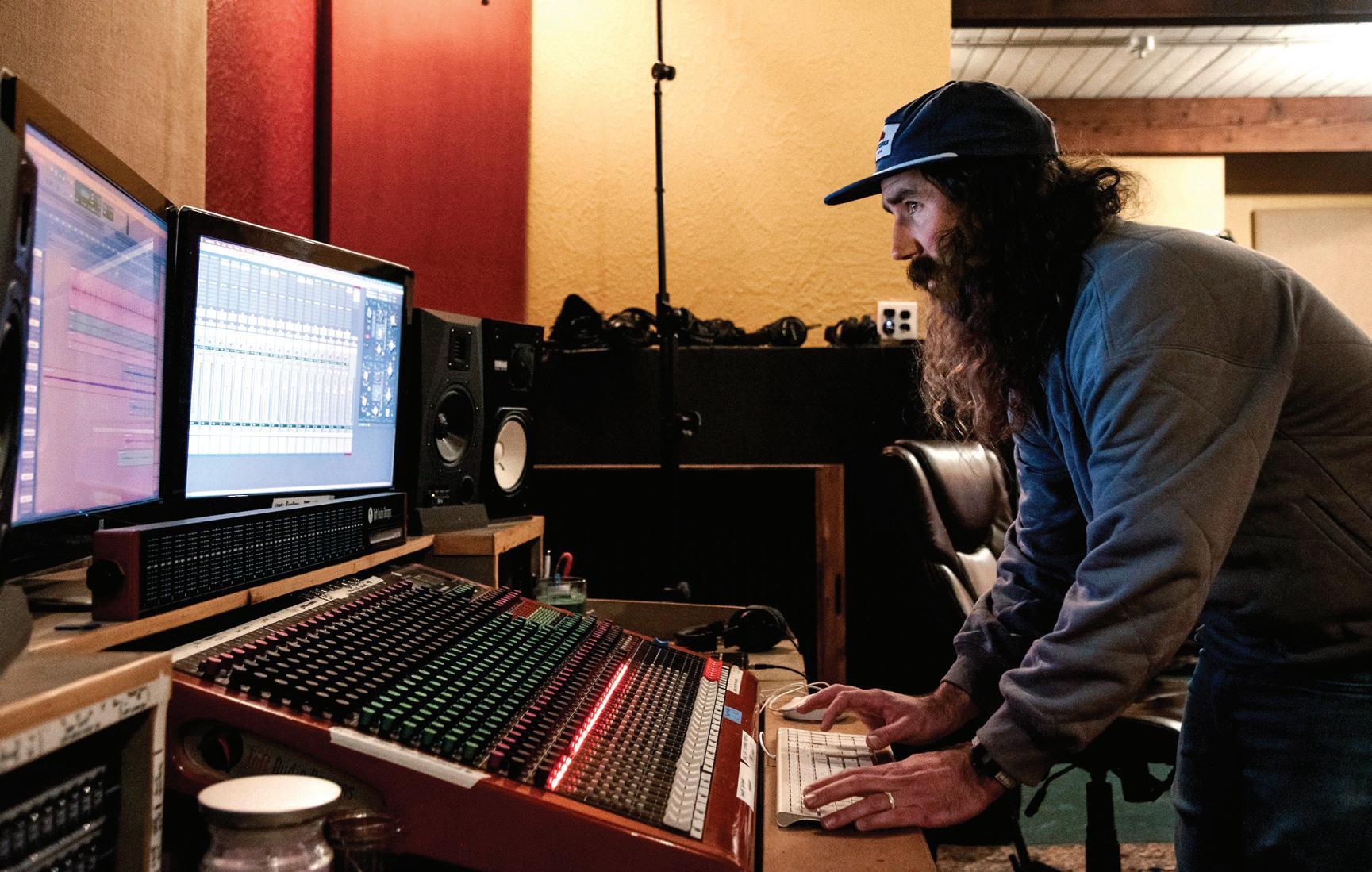
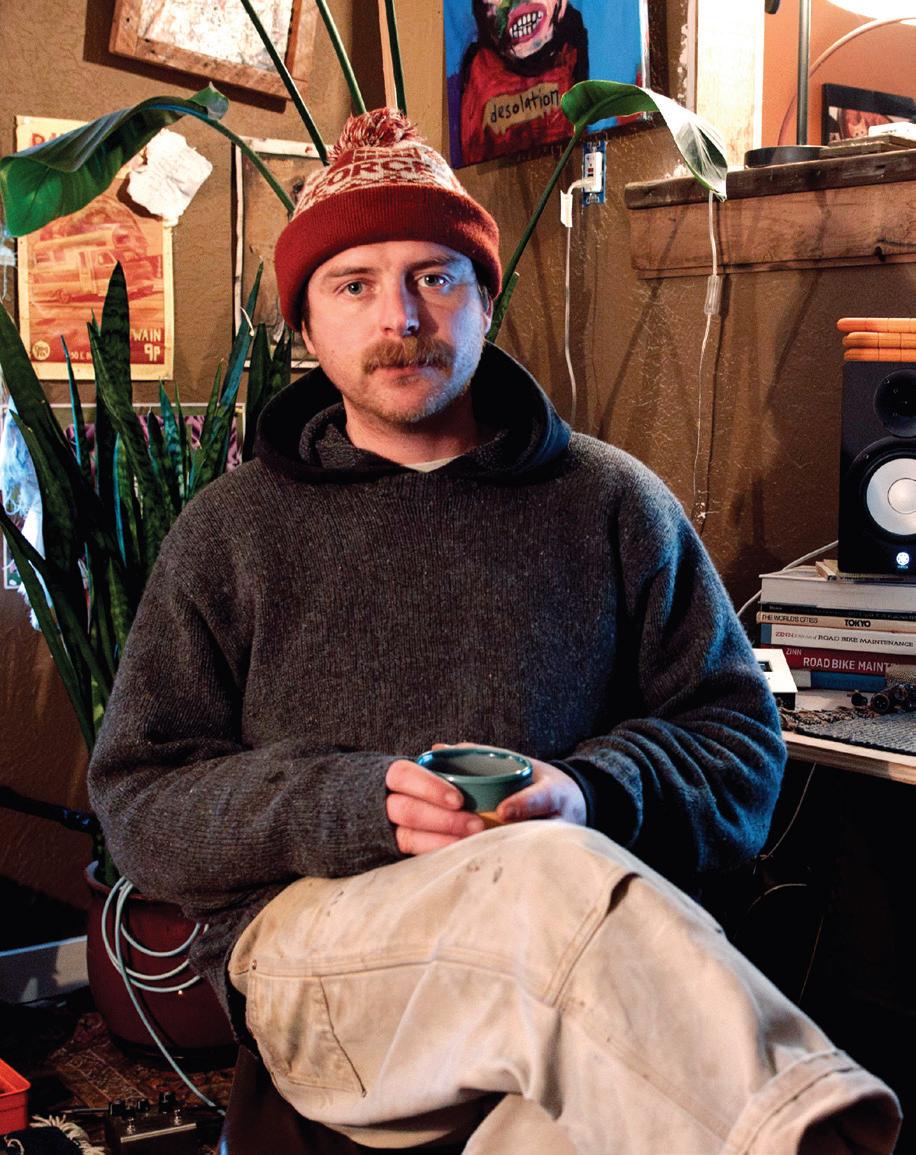
 The Rope Room
Dock line rope is weaved onto the studio walls of the Rope Room for sound absorption.
The Rope Room
Dock line rope is weaved onto the studio walls of the Rope Room for sound absorption.
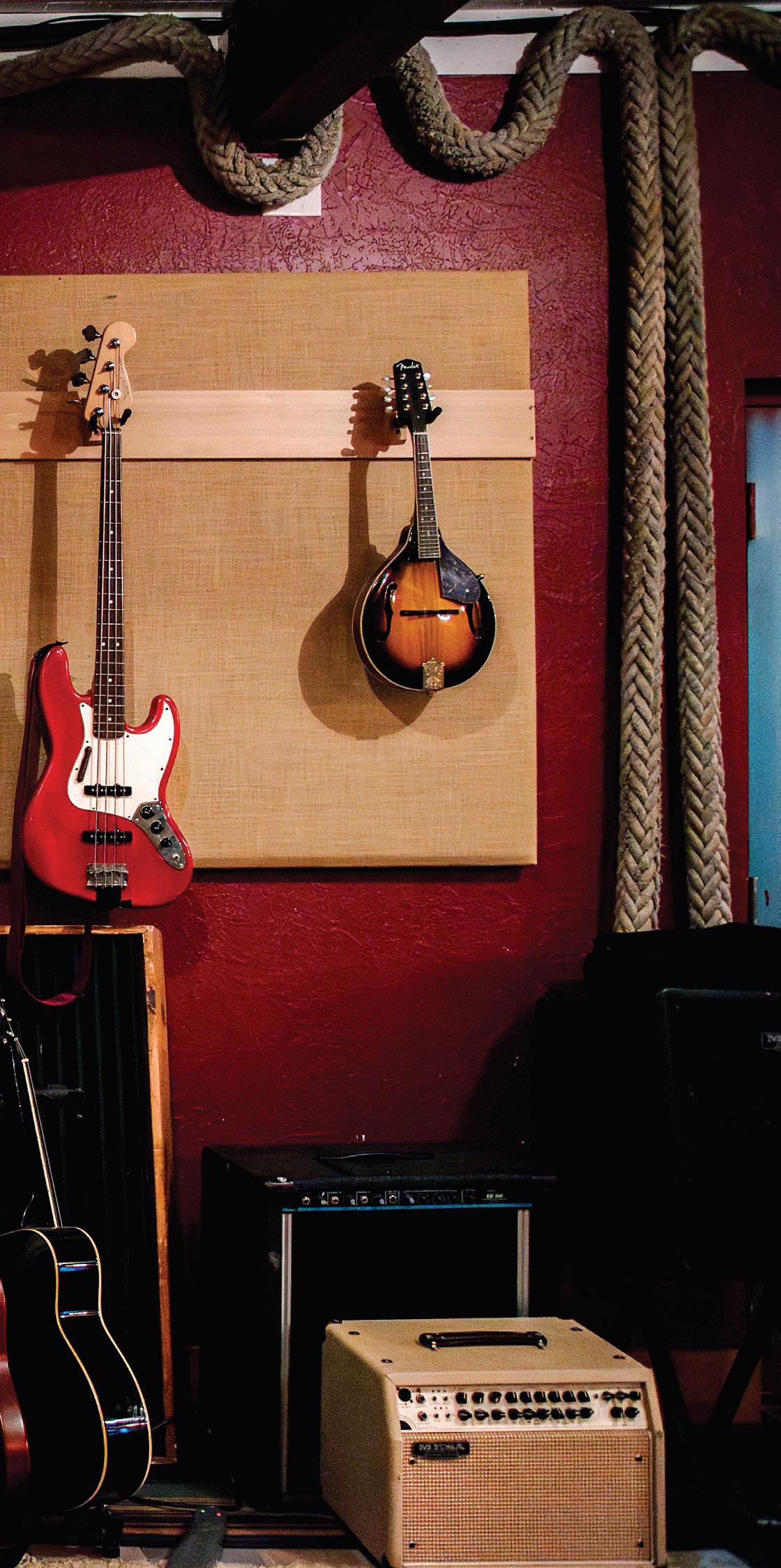
ON THE RIVER SOUND
BWords: Emily Lindblom • Images: Shanna Madison
rian Bovenizer, one of the owners of the Rope Room, a recording studio in Astoria, described the space as comfortable and open, with a fireplace as its centerpiece.
“The rope, which is the namesake, was a happy accident,” Bovenizer said. “It’s an old locker room, and we went in there and did the clap test, and it sounded really good. We noticed there was a big pile of dock lines of 3-inch rope in the room and we thought that was pretty cool.”
When the rope was taken out, he said, the clap test did not sound as good. So the studio owners worked to weave in the dock line and place it on the wall for sound absorption.
“That’s what sets it apart,” Bovenizer said. “It’s a really good sounding room.”
The Rope Room is an independent entity, but coordinated with Fort George and KMUN at its start. The brewery provided seed money and cross promotions, and the station produced a co-branded series of videos called the Rope Room Sessions.


Live & Stay
Live & Stay

Olaf Ydstie
Created a studio space at his home in Astoria, which has been used by several regional folk groups.
Originally from the Midwest, Bovenizer trained in audio engineering and production at Western Michigan University. He had friends who had moved to Astoria, so he decided to make the move himself and started waiting tables at Fort George Brewery.
He became friends with Luke Ydstie and Kati Claborn and played as a member of an early version of their band, The Hackles. He also joined The Holiday Friends, another local group, for a few years while working on his music separately.
He later started booking music events for Fort George and began sound engineering. Bovenizer has also volunteered at KMUN and worked as the station’s operations manager.
Through that, he met Graham Nystrom, who made custom gear for music studios, and another mutual friend, Nathan Crockett, who became a bandmate with the local group Horse Feathers.
The three of them started constructing the Rope Room in 2017, and the studio opened on Exchange Street just before the coronavirus pandemic.
“Now it’s kicking it into higher gear,” Bovenizer said.
Ydstie and Claborn, known as members of the folk bands Blind Pilot and The Hackles, soon bought into the studio.

There’s an undercurrent of creatives living here and there’s a lot of support from the community and the city.
Nevada Sowle
Astoria-based musician and sound engineer
“ “
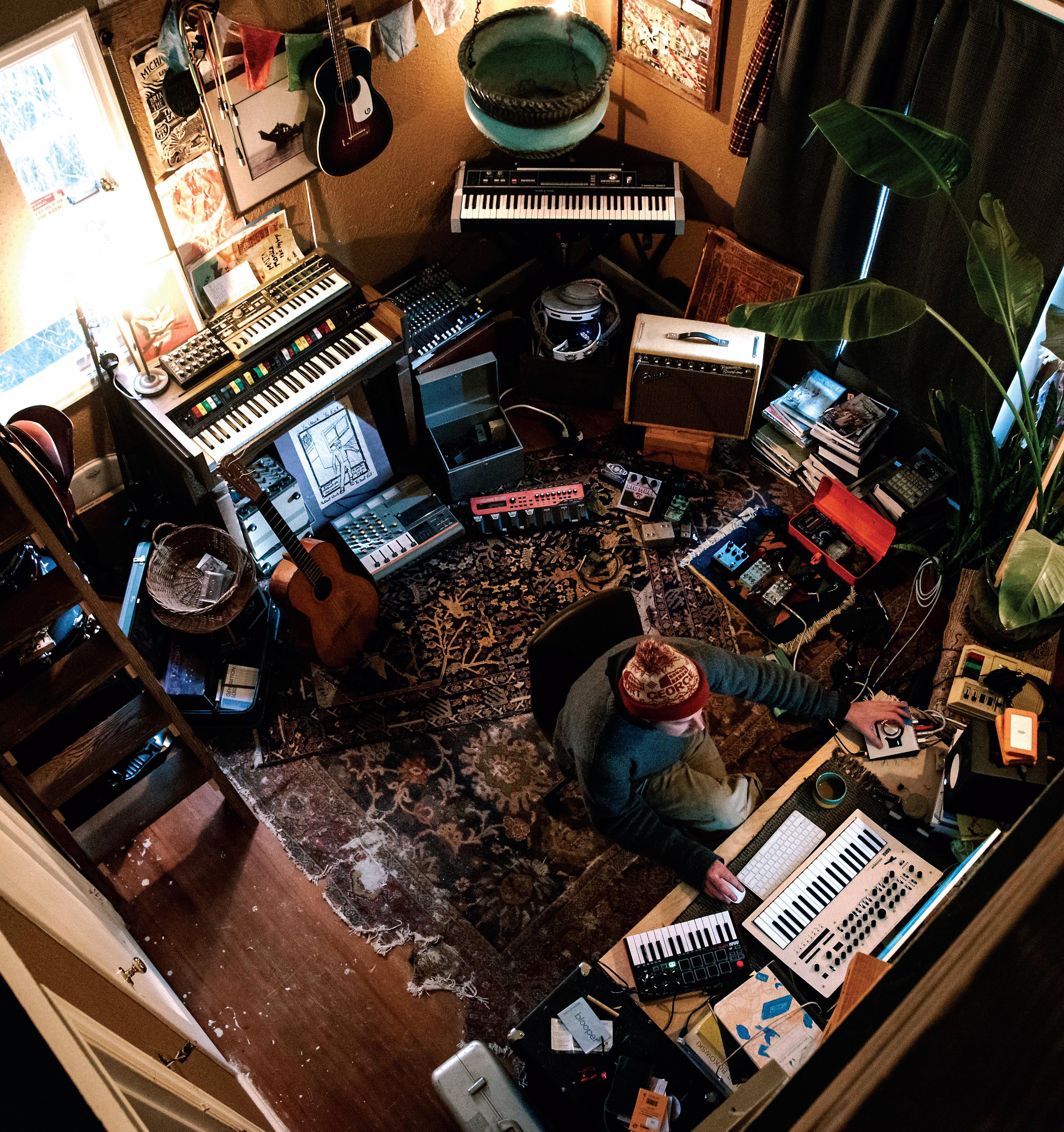

Live & Stay
The Rope Room is an independent entity, but coordinated with Fort George and KMUN at its start. The brewery provided seed money and cross promotions, and the station produced a co-branded series of videos called the Rope Room Sessions.
Nevada Sowle, an Astoria-based musician and sound engineer, became the studio’s house engineer.
Sowle had started performing music in Moscow, Idaho. When he met audio engineer Bart Budwig, he was intrigued by what goes on behind the scenes.
“I gravitated toward all that goes into recording and how great an experience that can be, and how many directions you can take a song or album,” Sowle said. He attended the Conservatory of Recording Arts and Sciences in Arizona and got into recording professionally.
He said working at the Rope Room has been an incredible experience.
“It’s a cool, quaint studio and all the clients I bring in there have a fantastic sound,” Sowle said.
In 2021, he got to work on an analog record using tape machines, called “Gleaner’s Joy,” for his friend Forrest VanTuyl. Another highlight was recording Desolation Horse’s 2023 album, “Biff.”
“We’re really proud of how that collection came out and it was a cool experience,” Sowle said.
Another spot for recording locally, Olaf Ydstie’s home studio began from an early interest in recording.
Olaf started making music as a teenager, and after a music recording program, he returned to Astoria and bought a house, where he decided to build a recording studio.
“I’ve done a few records with my buddies,” he said. “It’s usually free for my friends and it’s just my space so I get to curate it with the gear I want.”
One record that stands out is “Talk Soon,” by Carolina Chauffe, who makes folk music under the name Hemlock. Olaf also recorded the first Desolation Horse record at his home studio. The album’s cover art features him on a motorcycle.
Budwig also engineered a record for the band Taco Tapes at the studio.
Olaf has often played drums for other bands, including with his brother, Luke. He has also drummed for records at the Rope Room, including “The Time of the Foxgloves,” a 2021 release by folk singer-songwriter Michael Hurley, who has been performing since the 1960s and lives in the region.
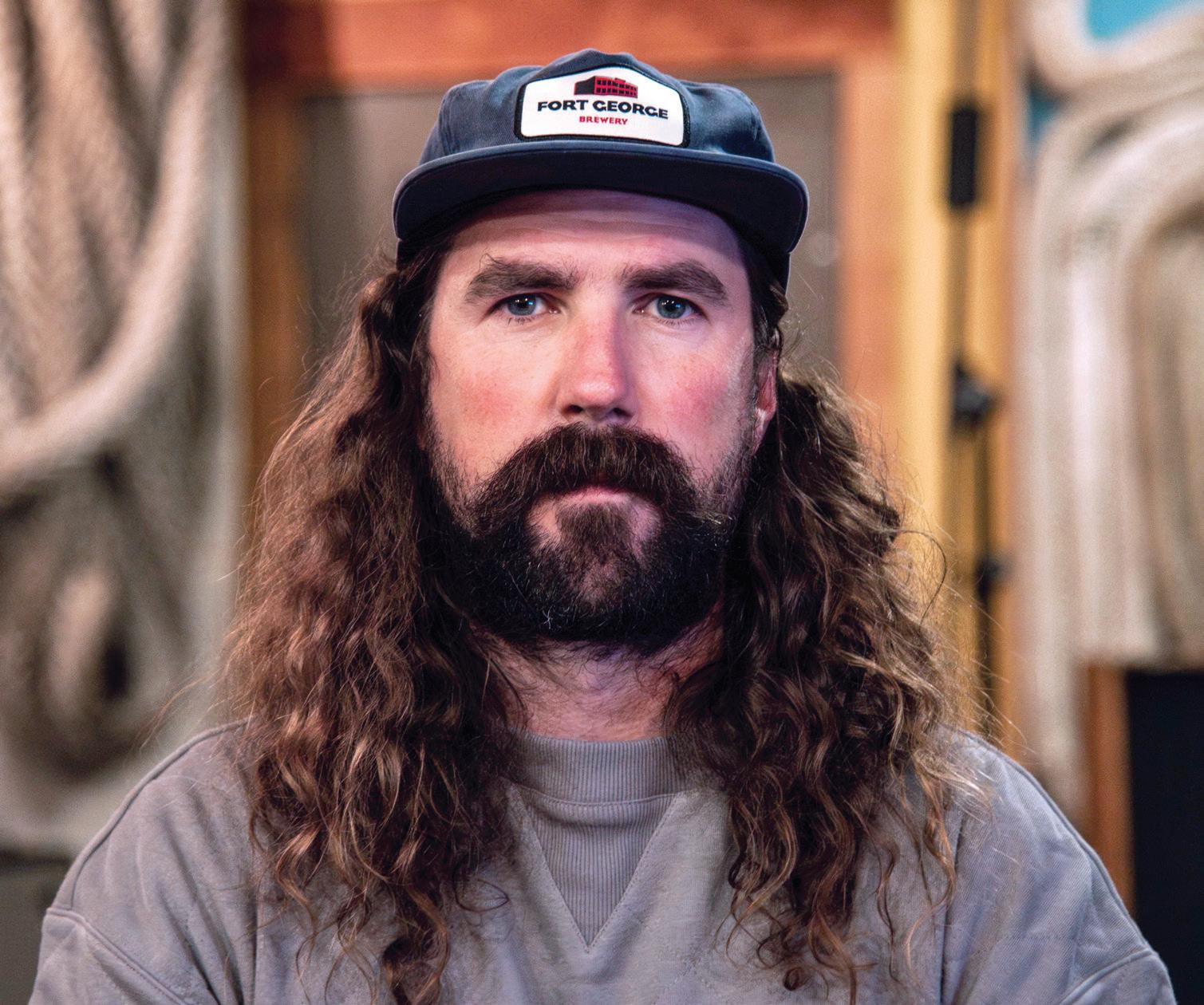
Brian Bovenizer
Brian, a marketing director at Fort George Brewery, co-founded the Rope Room, a recording studio in Astoria.

Bovenizer said working with Hurley at the Rope Room was a memorable experience.
“He’s one of the greatest Americana acts of all time in the ’70s,” Bovenizer said. “It was really awesome to have this artist who had not done a proper studio album in 15 years come out on his 80th birthday and do ‘The Time of the Foxgloves.’”
Another acclaimed singer-songwriter, Alela Diane, also recently came out to Astoria to make a Christmas album with The Hackles at the Rope Room.
For Bovenizer, a dad of two kids, recording at the studio is much more convenient than recording in a rented space in Portland or Seattle. He can go to the Rope Room whenever inspiration strikes and take time on his projects.
Sowle said the studio is less than a mile away from his house.
“I can walk down there, and if clients are not from Astoria, I get to show them the town,” he said. “Artists gravitate toward an introspective experience of getting out of the city, and Astoria being quiet, rainy and dark lends itself to creativity and making art.”
Sowle added that the community in Astoria is supportive of the arts.
“There’s an undercurrent of creatives living here and there’s a lot of support from the community and the city,” Sowle said.
He said the local recording studios offer places for these artists to collaborate and bounce ideas off of each other.
Bovenizer said the Rope Room is affordable — and he wants to keep it that way. “We’re not trying to make money, just keep the resource available and make records,” he said.
There are no prerequisites to recording. “Come with an idea and we will do our best to make that happen,” Sowle said.

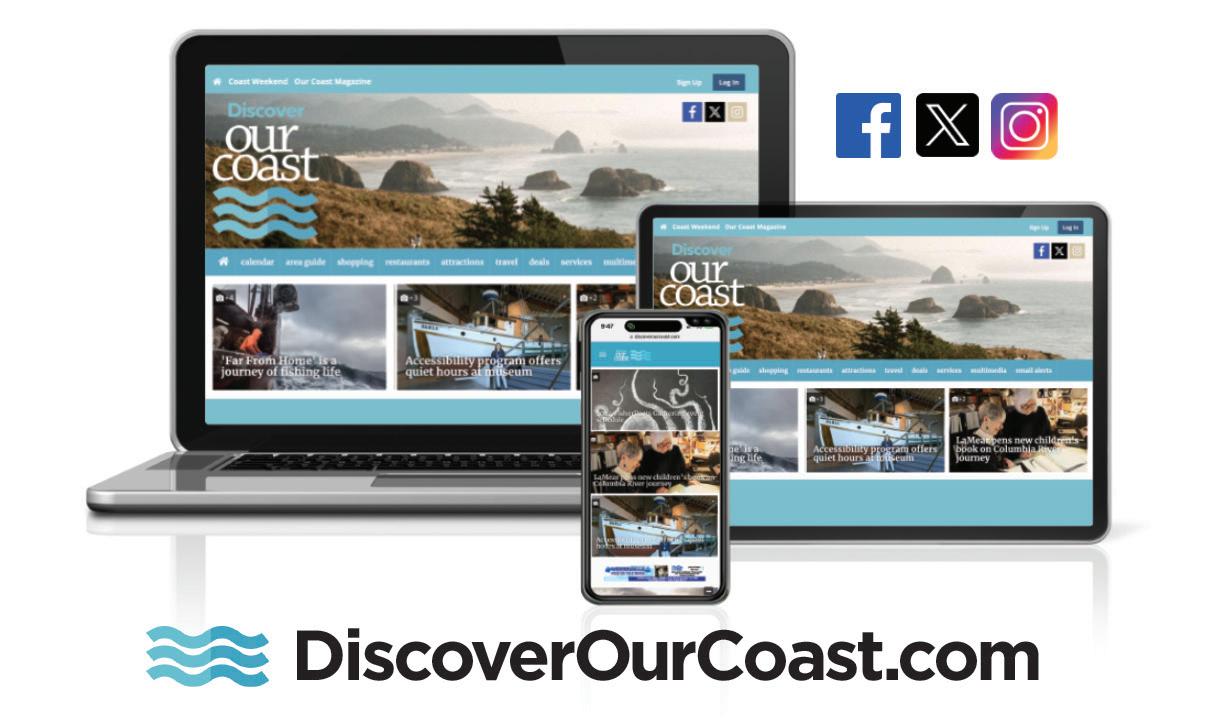








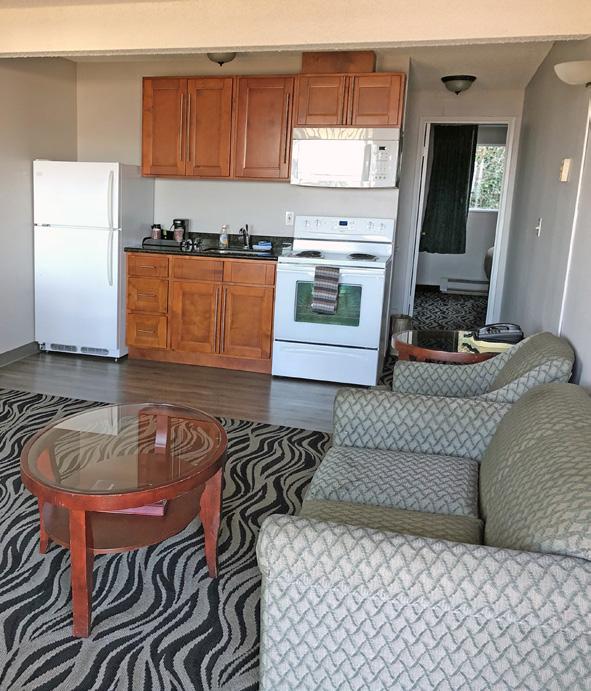




DiscoverOurCoast.com 83
Commercial St. Astoria• northcoastrunners.com
959
Minutes from Downtown & Astoria Attractions 42 Rooms • 14 Deluxe Kitchens • Cable with HBO Columbia River View • Free Wireless Internet Fridge, Microwave & Coffee in Every Room (503) 325-2921 • 59 W Marine Dr., Astoria www.rivershoremotel.com Toll-free Reservations (866) 322-8047
Photo
Credit: Joni Kabana
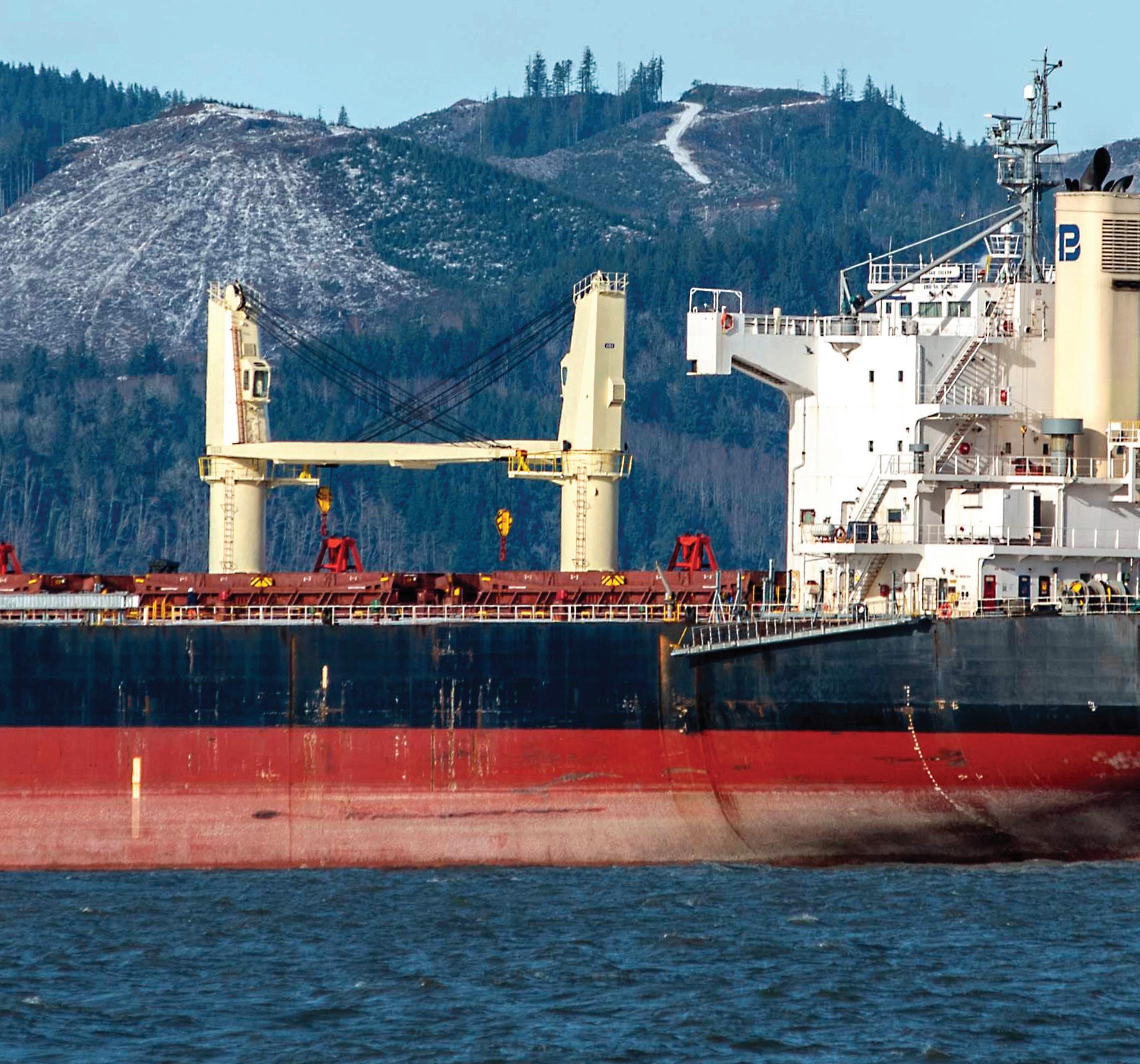
84 Our Coast Magazine 2024 Live & Stay
Disko Island
A bulk carrier transporting wheat waits at anchor in the Columbia River.
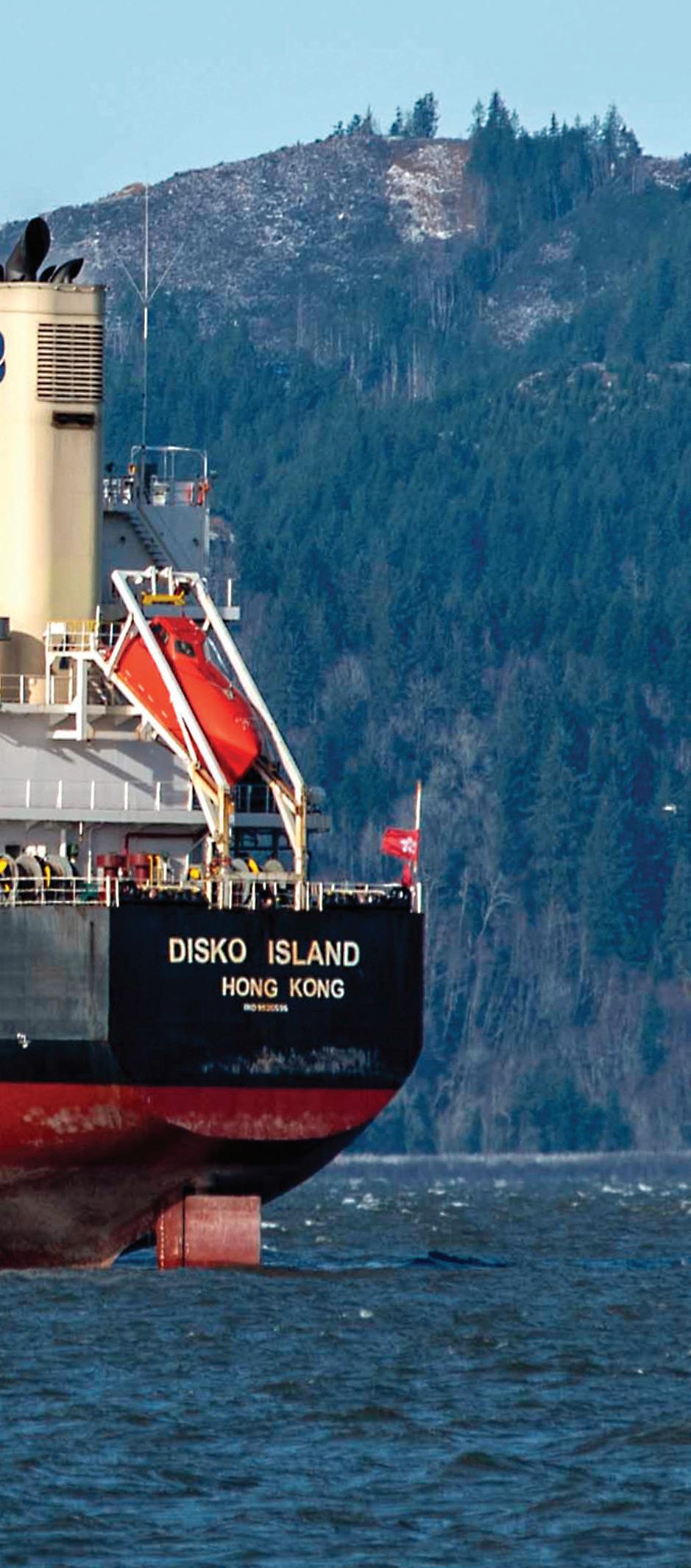
WHO’S ON BOARD?
The human side of Columbia River shipping
Words: Joanne Rideout • Images: Shanna Madison
Each day on the Columbia River, curious residents and visitors see ships from around the world passing by.
These silent behemoths glide along the river corridor, making the journey from the Columbia River Bar, at the mouth of the river, to various upriver ports.
In practical terms, these guests fuel a multibillion-dollar economic engine in the Pacific Northwest.
The Columbia River Steamship Operators' Association is an industry trade group based in Portland that represents maritime interests and ports in the region. According to their records, the Columbia River trade corridor supports 56 million tons of foreign trade, worth over $21 billion annually.
The Columbia River is the nation’s No. 1 wheat export gateway, and second in corn and soybean exports. It’s the third-largest grain export region in the world and leads the West Coast in bulk cargoes, wood exports and auto imports and exports. That’s a lot of cargo coming and going.
Add to that the influx of containerships that Portland welcomed during the coronavirus pandemic, and river trade now includes a good percentage of our “90% of everything.”
That includes food, clothing, furnishings and other products bought in stores and ordered from vendors — things we count on in our lives. If you look around your home, your car or your workplace, you’d be hard-pressed to find something that did not arrive by ship, either as a finished product or as raw materials.
But despite the vital economic nature of shipping, that’s not what’s on most people’s minds when they see a ship go by.
In the 20 years that I’ve been doing the Ship Report, a podcast and radio show that airs weekday mornings on KMUN in Astoria, by far the most common questions I have heard over the years are about the ships themselves and the people on them. People want to know: where are ships coming from, where are they going and who’s on board?
DiscoverOurCoast.com 85
Riverwalk view
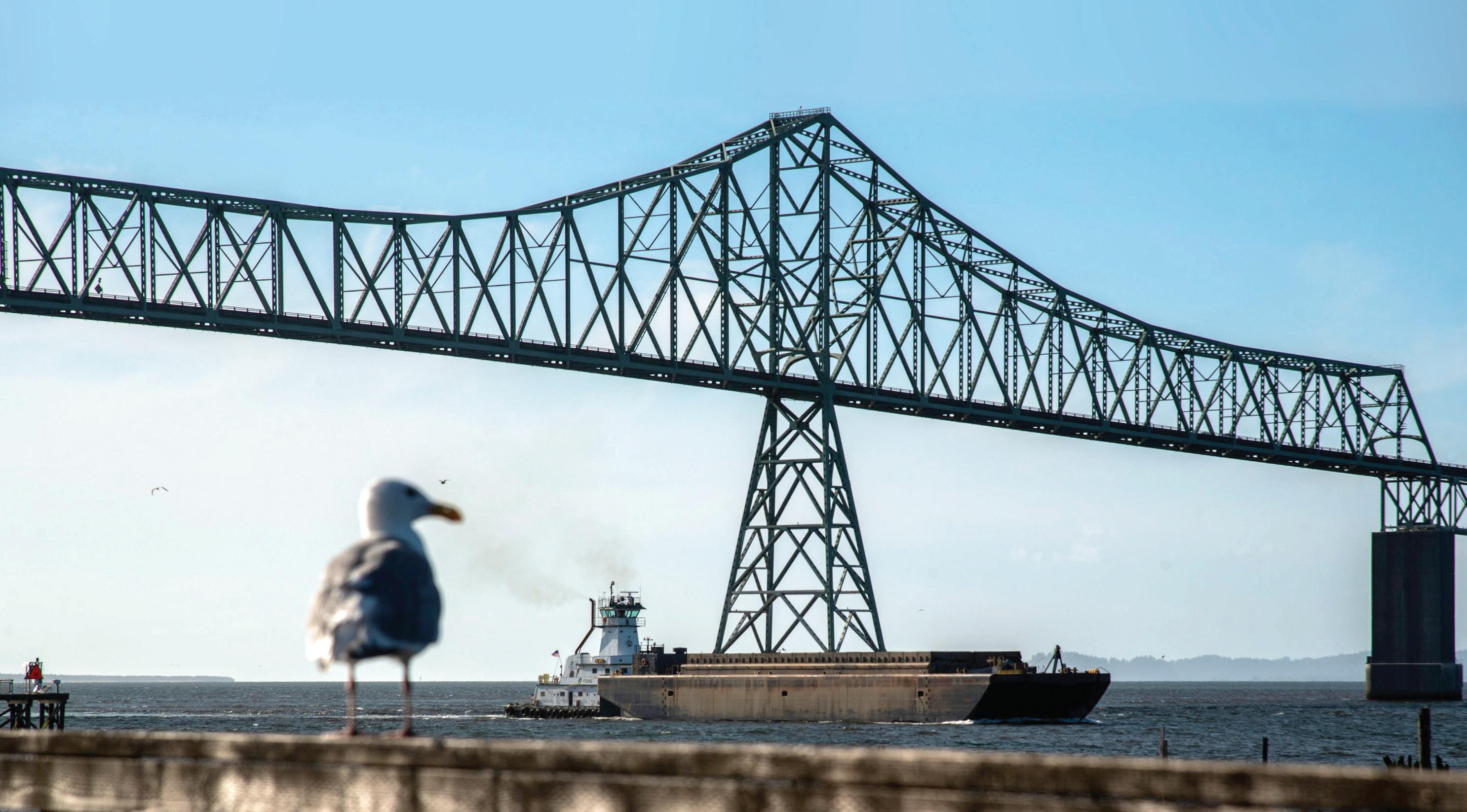
Inbound and outbound
On the Columbia, ships head inbound on the river from the ocean to either anchor in designated anchorage areas or dock at berths in a variety of ports. Most are coming in to pick up cargo — the Columbia is a heavy export region.
The most commonly seen ship is the bulk carrier. Such ships have discrete cargo holds (gigantic open bins below decks) that allow them to take on what are called bulk cargoes.
Ships arrive here to pick up agricultural cargoes like corn, soy and wheat for export. Other bulkers pick up dry mineral cargoes like soda ash, copper concentrate and bentonite clay. Most ships enter the river without cargo inbound and leave loaded outbound.
Other ships come here bearing cargo to deliver: car carriers with brand new vehicles, container ships with a variety of goods, and some bulk carriers bringing cargoes like steel, cement and gypsum.
Where are they from?
Many of the ships we see arrive from Asia. China sends many vessels here, like containerships to deliver manufactured goods and bulk carriers to pick up raw materials.
Often vessels arrive from Japan and South Korea, some delivering vehicles and others picking up cargoes like wheat. We also see a complement of vessels arriving from other regions, some transiting from the Atlantic Ocean to the Pacific Ocean through the Panama Canal.
Some ships come here directly from ports in Asia. Others make a run along the West Coast, delivering some of their cargo to places like Portland, Seattle and Vancouver, British Columbia.
Others continue south to ports in San Francisco and Los Angeles. Ships tend to return to where they started once they’ve delivered all their cargo, or have loaded a cargo to take back. They’re like semitrucks of the sea, but much larger and more efficient.
The Columbia also sees a regular complement of domestic vessels delivering refined petroleum products like gasoline, jet fuel and biodiesel.
Ship registration and flags
Most ships calling here are foreign-flagged, which means that they are registered in, and flying the flag of, a country other than the United States.
Ships are mostly registered under what are called “flags of convenience,” like Panama, Liberia or the Marshall Islands. These flag states, whose names you see along with the ship’s name on the stern, or rear area, of a passing ship may have little to do with where the ship operates, its owners or where they live.
It’s an inexpensive way to register the ship with less stringent regulations than might apply were it to be registered in the home country of the ship owners.
Other ships are registered in their countries of origin, like Norway, Denmark and others. But regardless of what country’s name is on the stern of the ship, that may bear little relevance to where the officers and crew on board are from.
The human beings that are on board these ships are from all over the world. “ “
Christi Lee Dunham, vessel agent working on the Columbia River
86 Our Coast Magazine 2024 Live & Stay
A gull is perched near the Astoria Riverwalk as a Foss Maritime Co. tug trails a barge in the Columbia River.
‘All over the world’
According to Kate Mickelson, the executive director of the Columbia River Steamship Operators' Association, many crews on arriving ships are citizens of the Philippines.
Ships also have crews from Russia, Ukraine, India, Japan, China and other nations — and while it might make sense that a given ship would have people all from the same country on board, that’s not always the case.
“It can be both or either. It’s not uncommon to have the crew and officers from two different nationalities,” Mickelson said.
On U.S.-flagged domestic ships, the crews are American citizens or permanent residents. That’s a requirement by law under the Jones Act, a ruling designed to protect the U.S. merchant fleet.
Jones Act vessels are built and registered in the U.S. and manned by U.S. crews, and they alone are allowed to take cargo solely between domestic ports.
Christi Lee Dunham is a vessel agent working on the Columbia River with ships arriving daily from overseas.
Vessel agents are essential maritime professionals who act as liaisons between arriving ships and all the resources they need to interact with when they are on the river and engaging in business at a port.
She enjoys working with the masters of each vessel in her capacity as a vessel agent and said meeting officers and crew is one of the best parts of her job.
“The human beings that are on board these ships are from all over the world,” Dunham said.
She enjoys the cultural differences she encounters in her work.
“Sometimes, depending on where they’re from, there’s more formality. The crew will be in full uniform with epaulets on their sleeves. Other vessels are more relaxed. I really like that diversity. It’s interesting to see the different cultures from a maritime aspect,” she said.
At anchor
Ships head inbound on the Columbia River from the ocean to anchor in designated anchorage areas or dock at a variety of ports..

Cargo ship
Short turnaround times and strict precautions often keep officers and crews from coming ashore.
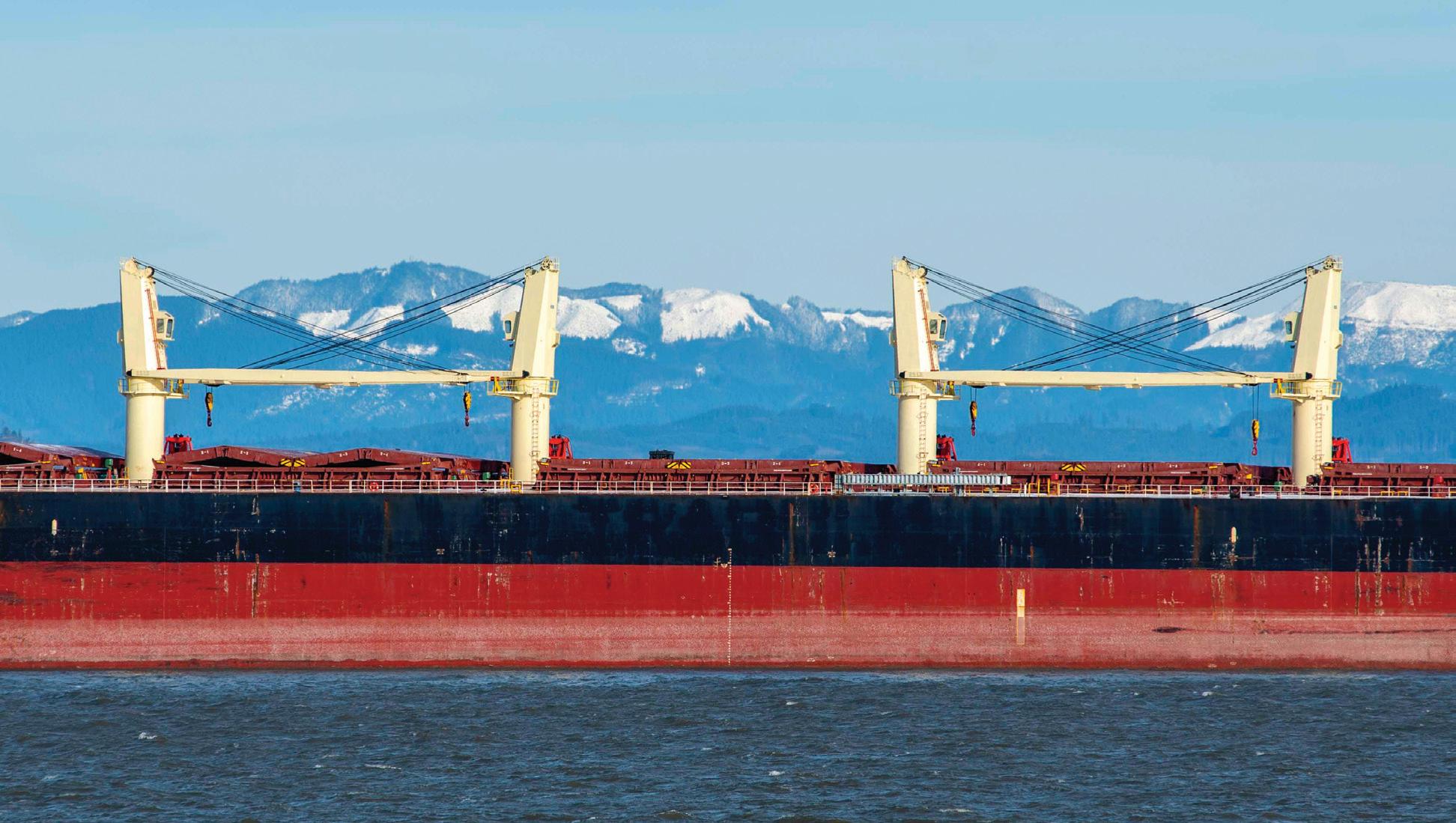
Foreign trade
The Columbia River trade corridor supports 56 million tons of foreign trade, worth over $21 billion each year.
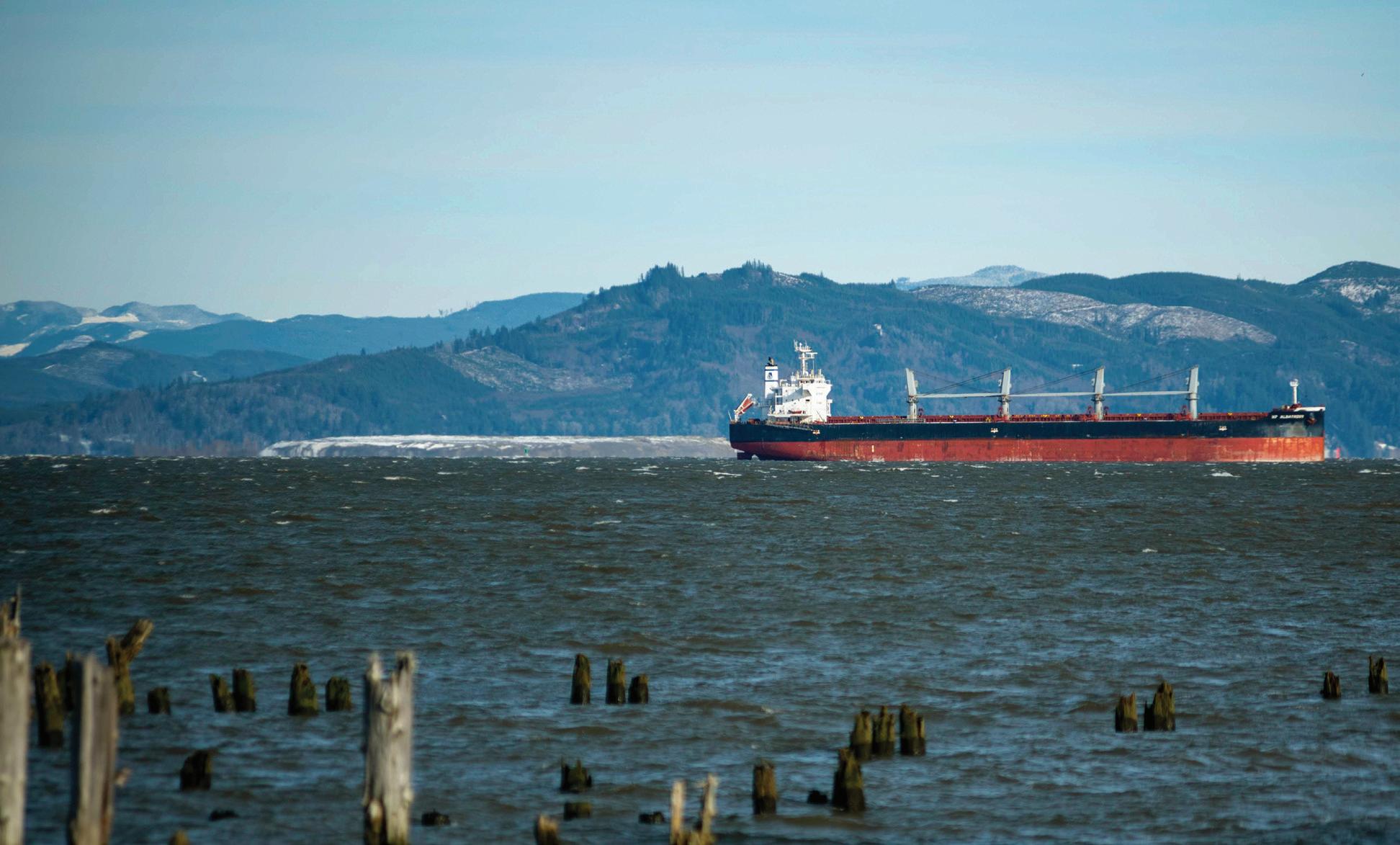
Live & Stay
Quick turnaround
Sometimes, Dunham is offered the opportunity to have a meal on board, which is a real treat. And many of the ships are regulars. “I’ve come to know some of the different captains. It’s a friendly face for them, to see someone they know after being at sea for 14 or 15 days,” she said.
Quick turnaround times in port nowadays mean that officers and crews don’t get the opportunity to go ashore often, even if they do have the required visas and customs clearance to disembark. Dunham said most just want to go shopping.
“They want to get an iPhone, or they want to buy some Nike tennis shoes. They’re just like anybody else,” she said. “They just want to have that opportunity to go out and buy American things. Just like if we go abroad somewhere, we want to be tourists as well.”
Dunham said the pandemic changed things quite a bit.
“Some of the countries still have very strict guidelines on their end,” she said. Some employers want crews to stay on board to avoid exposure, although that has eased in recent months.
Mostly what stops crews from leaving the ship are the short turnaround times in port. “It’s amazing to me how quickly ... they’ll spend eight hours transiting up the river, discharge (their cargo) and then turn around and head back out,” Dunham said.
As a result, many ships are here for 24 to 48 hours, and that’s after 14 days or more at sea.
“Sometimes I really feel for the crews, because it’s really hard work,” she said. “Many of them are on a contract for three to four months away from their families. It’s a huge commitment.”
Pizza and doughnuts
On a recent ship, Dunham coordinated things so the crew could get 14 pizzas.
“They really wanted pizza, and I said, ‘I can get you pizza,’” Dunham said, smiling. “They wanted good pizza, so I got them really good, custom pizza. They were so thrilled.”
Portland-based Voodoo Doughnut was a crew-pleaser on another ship.
“They googled this phenomenon of doughnuts here for our area, you know, just like a tourist. And they’ll say, ‘Can you get us this doughnut?’ And I say, sure, if I can, I will. I try to make it happen because I know they have so little time, and it’s such a challenging thing being at sea for so long.”
Dunham said some crew resources at ports have not reopened since the pandemic, and so options for transportation to get seafarers to places like a local mall aren’t currently available.
“They are limited right now in terms of what they can do to get off a ship,” she said.
Each ship that passes Astoria’s downtown waterfront has between 20 and 30 crew members on board, including the master (captain) and other officers. Typically, most are working employment contracts that keep them on board for months at a time, a long stretch to be away from home.
For these career mariners, a little hospitality — and sometimes pizza and doughnuts — from kind agents like Dunham make the long trips and separation from loved ones a little more bearable.



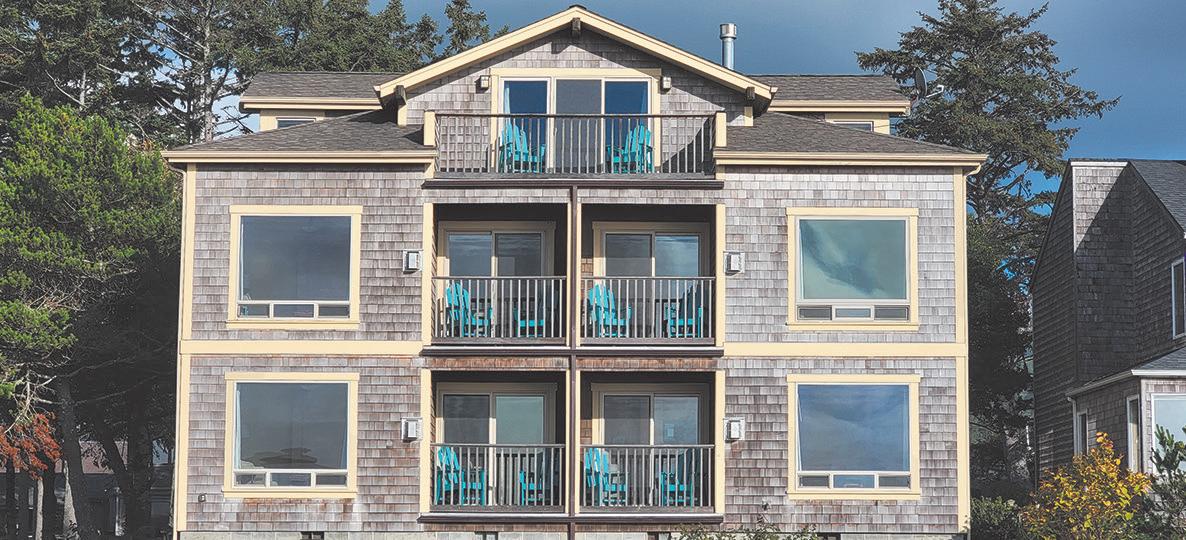

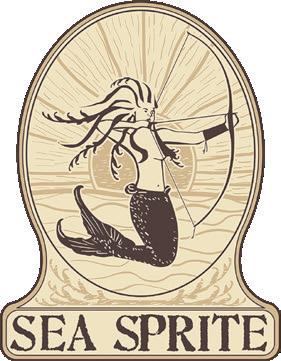
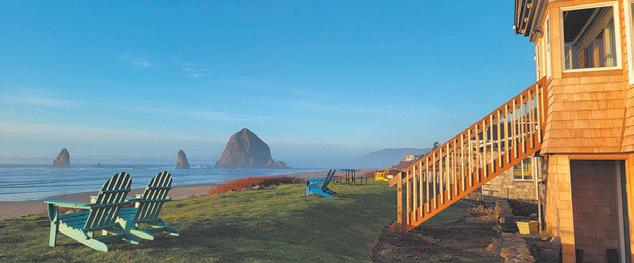

88 Our Coast Magazine 2024
Enjoy a beach front getaway at Sea Sprite Guest Lodging. We have two excellent properties to accommodate your needs. Our Haystack location offers a secluded, cozy, and intimate atmosphere with breathtaking views of Haystack Rock. Our Estuary location is a more contemporary getaway located near the heart of downtown Cannon Beach overlooking Ecola Creek and the Pacific Ocean. Call us at 866-828-1050 or 503-436-2266 to book your next stay! www.seasprite.com
The Ship Report is also broadcast weekdays at 8:49 a.m. on KMUN 91.9 FM in Astoria. www.shipreport.net or visit our website at www.lewisandbark.dog 753 1st Avenue, Seaside Call 503-739-7347 Pet Food • Collars & Leash Pet Beach Gear • Other Pet Supplies Full Service Pet Grooming People Trust us, Pets Love Us
The Ship Report
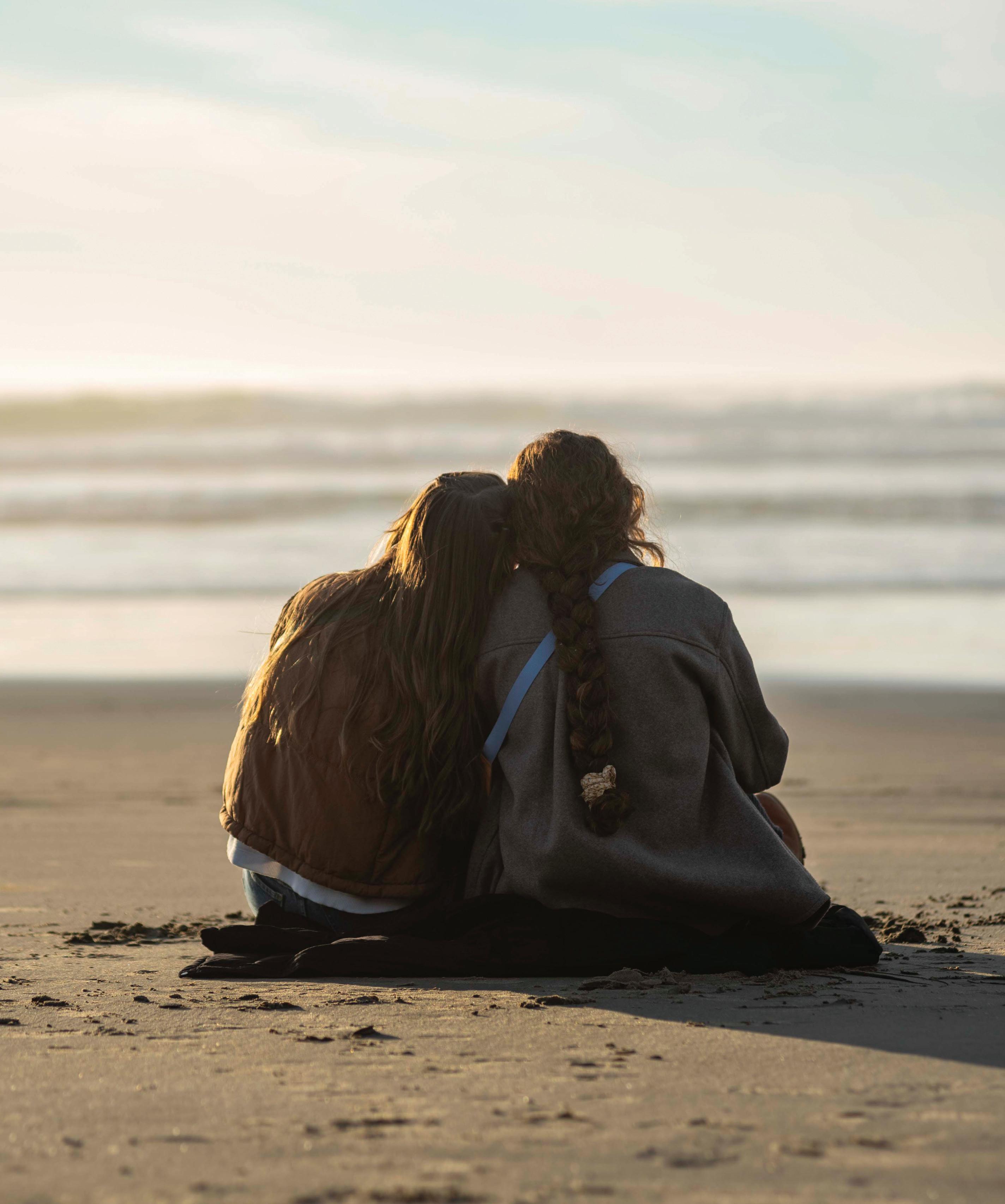
6:34 p.m.
Makayla Kribs and McKenzie Kent watch the sunset from Cannon Beach.
Astoria’s residential architecture
The stories building styles tell about a city’s past
Words: Jaime Lump • Illustrations: Lissa Brewer
One of Astoria’s greatest allures is its abundance of historic architecture. This is a city where one could spend hours hiking through hillsides peppered with homes ranging in styles from the late Romantic and Victorian eras to the Arts and Crafts movement.
Homes built prior to 1939 account for a significant percentage of the city’s housing stock. In recognition of this, Astoria has three historic districts and multiple historically inventoried areas recognized by the National Register of Historic Places.
The 1840s marked the beginning of residential European settlement in the region, when multiple areas were platted by landowners. However, most of the city’s earliest houses no longer remain.
Residential construction escalated during the second half of the century, with the foot of the hill claimed by businessmen and captains. The flanking areas, Uppertown and Uniontown, were developed by industry workers.
The late 1880s saw a shift in architectural design when pattern books began to change the way houses were built. Architectural fashion moved away from the formalities of Classical styles and into Gothic Revival and Italianate styles, influenced by the picturesque art movement in England.
Astoria later adopted eclectic English period designs at the turn of the century, which were eventually exchanged with more modern styles. Though the city is about as far west as one can go, it was never too far from changing trends across the country.
Live & Stay
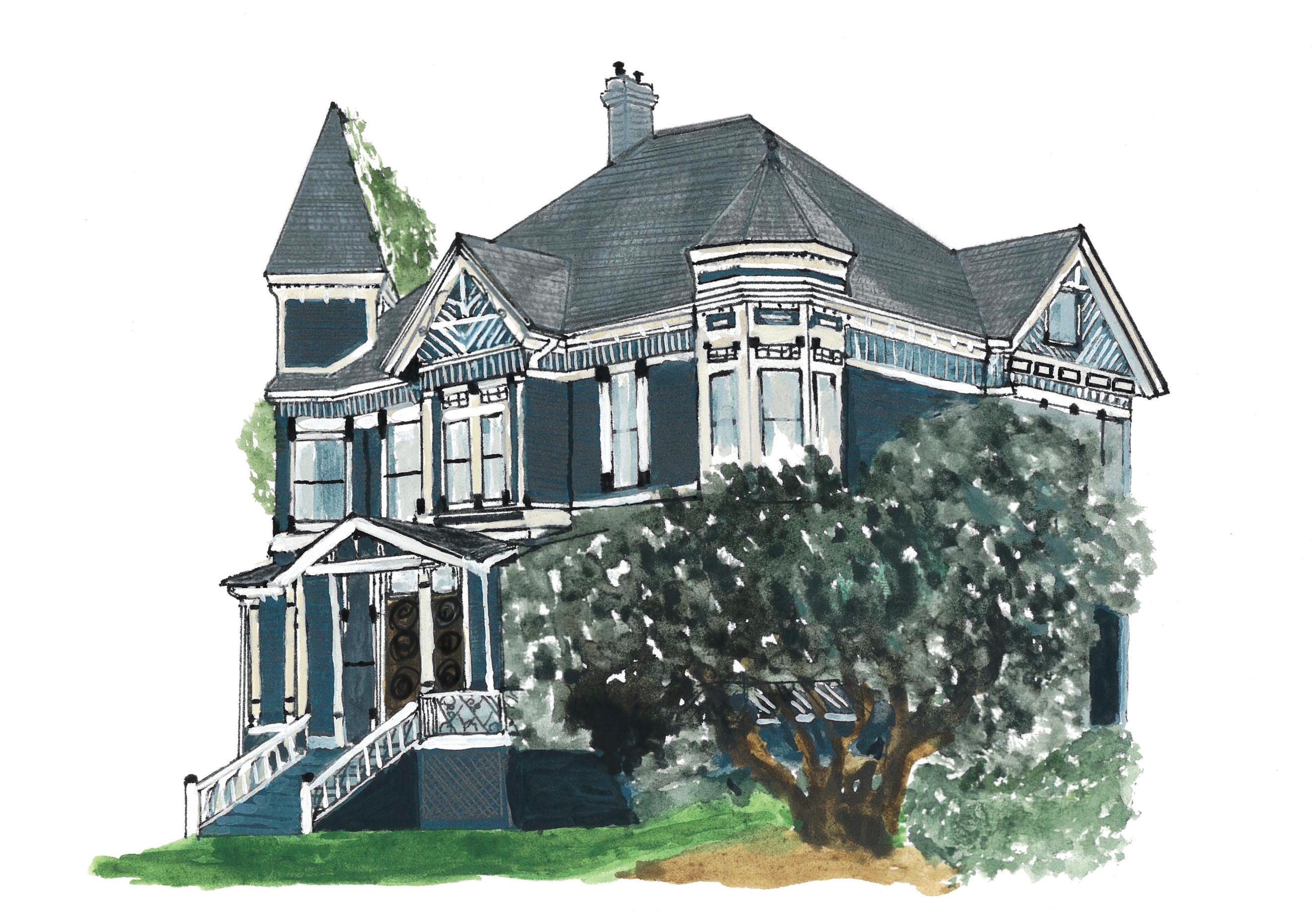
Queen Anne
Victorian architecture emerged from the end of the 19th century during the reign of Queen Victoria. Widespread industrialization in America led to advances in transportation and mass production, as well as progressive construction techniques that allowed for more variation and ornamentation in housing design.
The Queen Anne style, which is dominant among Victorian homes in Astoria, can be identified by a greater complexity of shape and decorative detailing compared to earlier movements.
Shapes are elaborated with varied rooflines, bay windows and sometimes towers. Decorations diminish flat wall surfaces through the use of patterned wood shingles, colored glass panes in the windows, and spindlework, which was an American addition to the style.
Between 1880 and 1900, Astorians in every corner of the city adopted the Queen Anne style, from quaint cottages in Uniontown to elaborate mansions in the Shively-McClure Historic District.
High-style Queen Anne homes were often further embellished with three-dimensional geometric wood patterns and beaded spindles that took a cue from the Eastlake movement, a trend in English furniture that emphasized the art of craftsmanship.
Near downtown, the Martin Foard house (690 17th St., 1892) was built for Martin Foard and his family in the highly desirable Grand Avenue location. During the early 1880s, Foard partnered with Frank Stokes to establish the Foard & Stokes grocery store, which went on to become one of the city’s most reputable businesses.
The home exemplifies the distinct characteristics of the Queen Anne style and is embellished with diamond and scalloped wood shingles, floral and checkerboard motifs, complete with a sunburst pattern in the gable.
Though houses were not typically painted with such striking colors in the 1890s, Queen Anne homes nowadays are often associated with the use of complementing colors to emphasize their intricate details.
Those visiting the Goonies House, technically a Queen Anne, in Astoria’s Uppertown, may also wish to view the Benjamin Young Inn (3652 Duane St., 1888) another high-style Queen Anne embellished with Eastlake details as well as the Gustavus Holmes residence (682 34th St., 1892).
Live & Stay
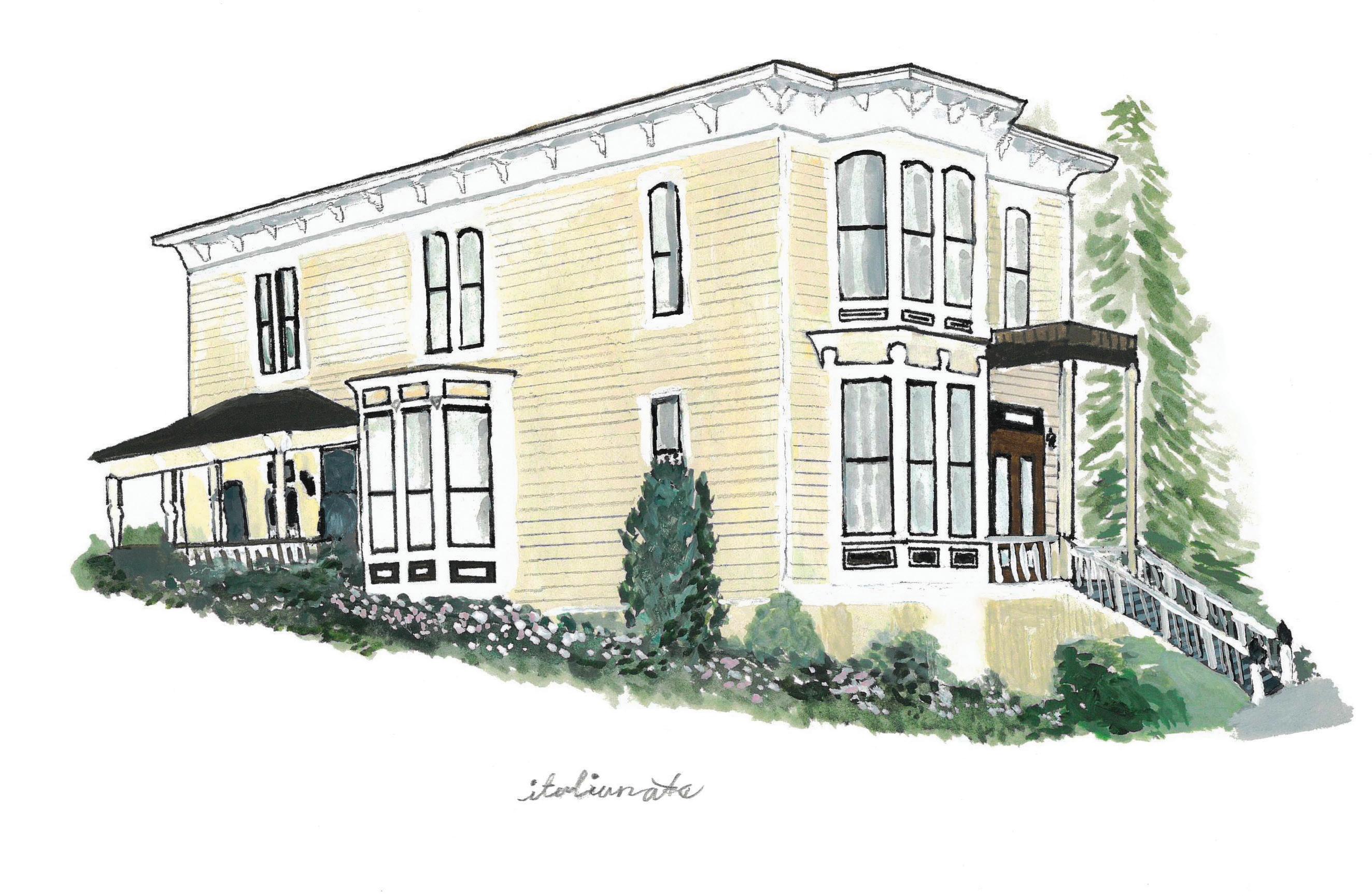
Italianate
Some of Astoria’s oldest houses, built between the 1860s and 1890s, were designed in the Italianate style.
Identified by their low-pitched roofs, overhanging cornice-lined eaves ornamented with decorative brackets and tall, narrow and often curved windows topped with heavy window surrounds, these houses were modeled after Italian-style villa architecture.
Early Italianate houses in Astoria were generally built with modesty — box in shape with subtle adornment, as seen in the Conrad Boelling house (765 Exchange St., 1862) and the Charles Heilborn residence (1546 Franklin Ave., 1876).
Others, built in the following decades by captains and wealthy businessmen, began to play with shape, asymmetry and ornament by implementing projected bay windows and entryway porches.
The Page-Houston residence (1393 Franklin Ave., 1879) was constructed as a wedding gift for the daughter of Capt. Hiram Brown, Annie and her new husband, C.H. Page. The large, corner lot building uses its two-story slanted bay windows to emphasize verticality.
Carved brackets and hooded crowns over segmental arched windows play a distinctive role in the style. Although it was enlarged in the 1890s to accommodate more space as a boardinghouse, the rear third of the building was detached in 1903 and moved 17 feet south.
The matching windows and brackets offer clues to its story. Around that time, the main structure was adorned with a Queen Annestyle porch on the 14th Street facade, to keep up with the ever-evolving fashion in the growing city.
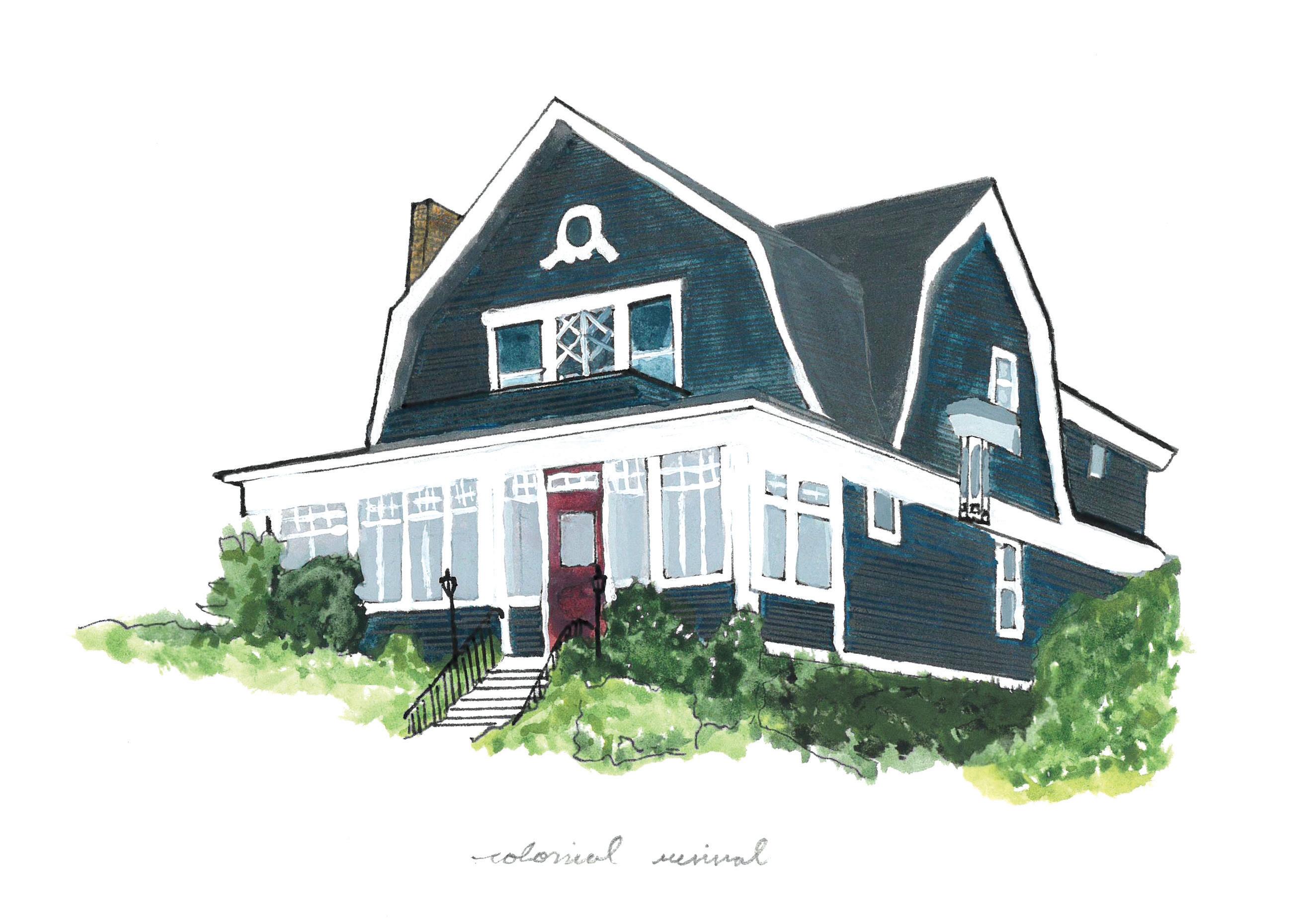
Colonial Revival
In 1893, the Chicago World’s Fair initiated a rebirth of the classics. Columns, pilasters and pediments drawn from Greek and Roman architecture were coming back into vogue amid America’s post-centennial era and a renewed sense of the traditional.
Using Georgian and Federal styles of America’s yesteryear as prototypes, Colonial Revival homes initiated the return of symmetry and rectilinear shapes. In Astoria, the style gained popularity right around the turn of the 20th century, presenting in the form of twostory rectangular shapes with a side-gabled roof or, more often, as the American Foursquare.
Astoria architect John Wicks helped to popularize the Colonial Revival in the area, primarily using the style as a base coupled with neoclassical detailing. Several examples of his designs can be seen along Jerome Avenue between 10th and 17th streets.
In 1914, architect Andrew D. Gendron used Colonial Revival to style the First Presbyterian Church manse for Rev. William S. Gilbert (725 11th St., 1914). The home, which dramatically rejected the irregularities of the Queen Anne style, is presented in three sections.
Three semicircular dormers align with the second-story windows, adding to the balance of the home’s symmetry. At the center, its portico features a segmented arch supported by four Tuscan columns and paralleled by a false fanlight over the entrance.
Though rare in this area, a well-preserved Dutch Colonial Revival can be seen on Grand Avenue between 16th and 17th streets.
Live & Stay
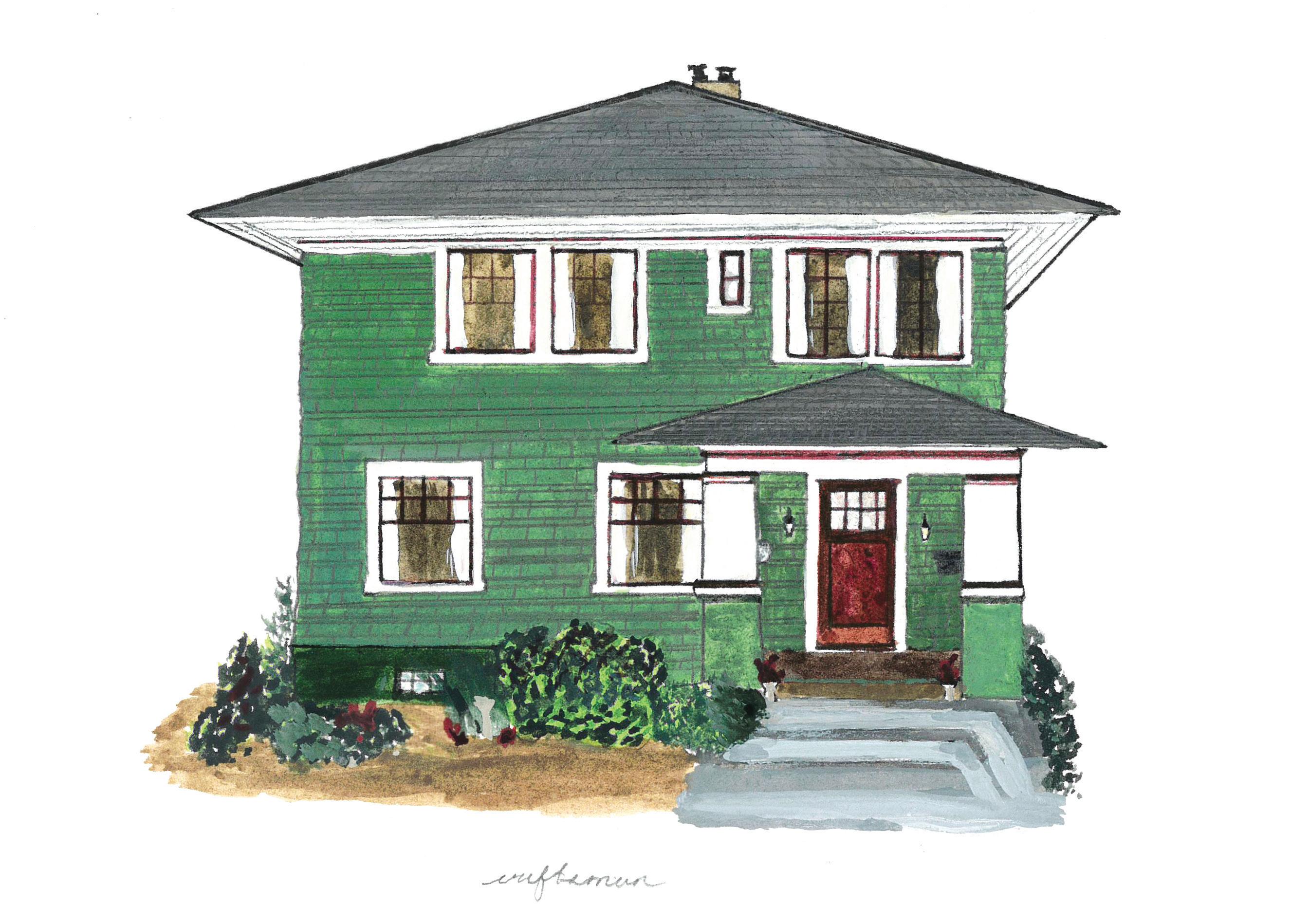

Craftsman and Prairie
Although the 1893 Chicago World’s Fair was intended to revive historic architectural achievements, not every American architect was convinced.
The U.S. still lacked its architectural identity and new designers were determined to break the cycle. In Chicago, during the world’s fair, a group of architects, including Frank Lloyd Wright, got to work developing a style that explored vastness, invoked nature and blurred boundaries between interior and exterior: the Prairie style.
This new style, with its emphasis on horizontal lines, was distinguished by low-pitched roofs with wide, overhanging eaves. While its popularity was central to the Midwest, pattern books spread its reach to the West Coast.
Around that same time, California brothers Charles Sumner Greene and Henry Mather Greene were developing their new style: The Craftsman.
Influenced by the English Arts and Crafts movement, Craftsman homes stripped away ornamentation and replaced it with the honesty of the craft. With this style, beams and rafters remain exposed, and regional materials like river rock elaborate porch supports or chimneys.
Several details of the two American styles overlap including their open floor plans where one room flows to the next as well as multipaned windows. Overall, the Prairie presents itself as a bit more sleek, while the Craftsman reveals its bones.
Astoria businessman Norris Staples, best known for his partnership with the Lovell Auto Co., was one of the first in the area to diverge from the Victorian trend. His home (1031 14th St., 1908), designed by John Wicks, exhibits several features of the Craftsman style.
The roof’s flaring eaves expose bird’s mouth rafter ends supported by boxed columns lining the wraparound porch. Compare this home to the Sherman residence (946 16th St., 1914), one of the few Prairie style homes in Astoria.
Typically built for smaller, working-class families, several Craftsman homes can be seen around Astoria’s Uppertown neighborhoods, where many Scandinavian fishermen and cannery workers built their homes.

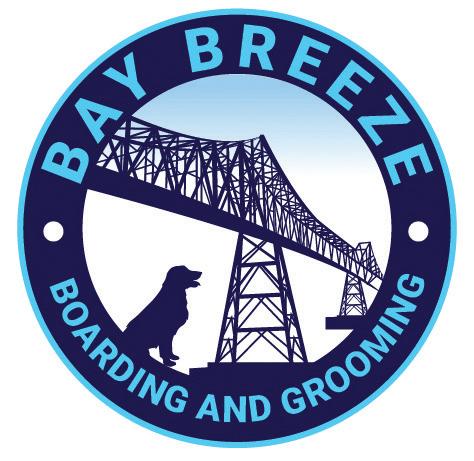
•
•
•
•
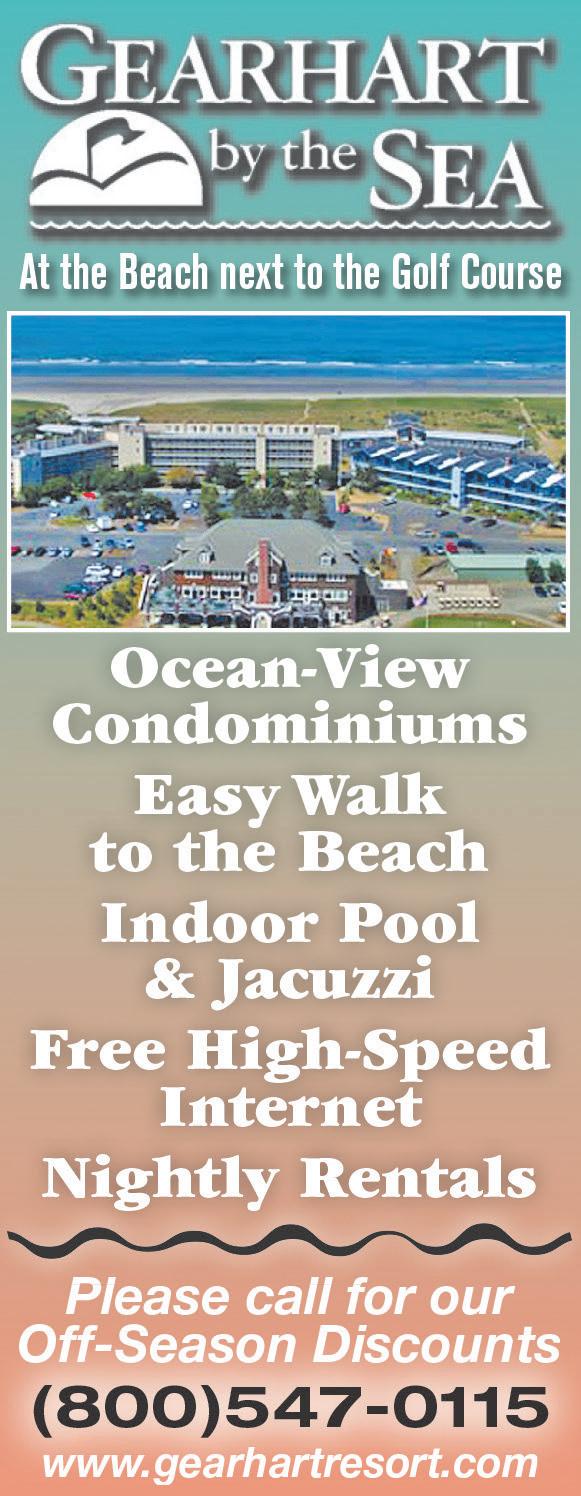
Come
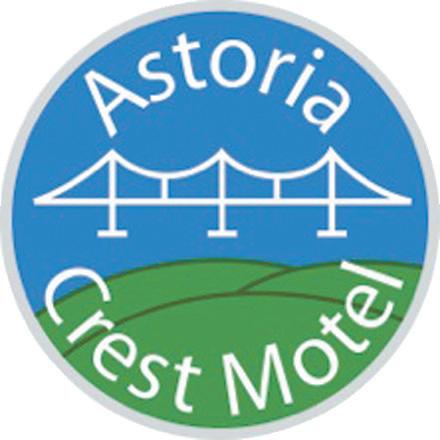
Astoria
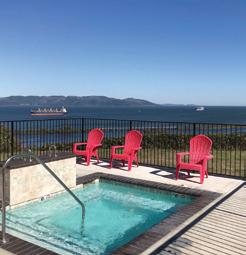
5366 Leif
Astoria, OR 97103 503-325-3141 • 800-421-3141 www.astoriacrestmotel.com reservations@astoriacrestmotel.com

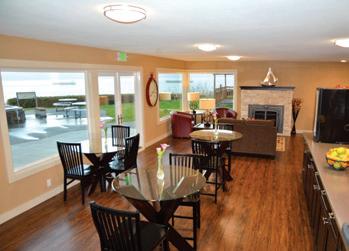
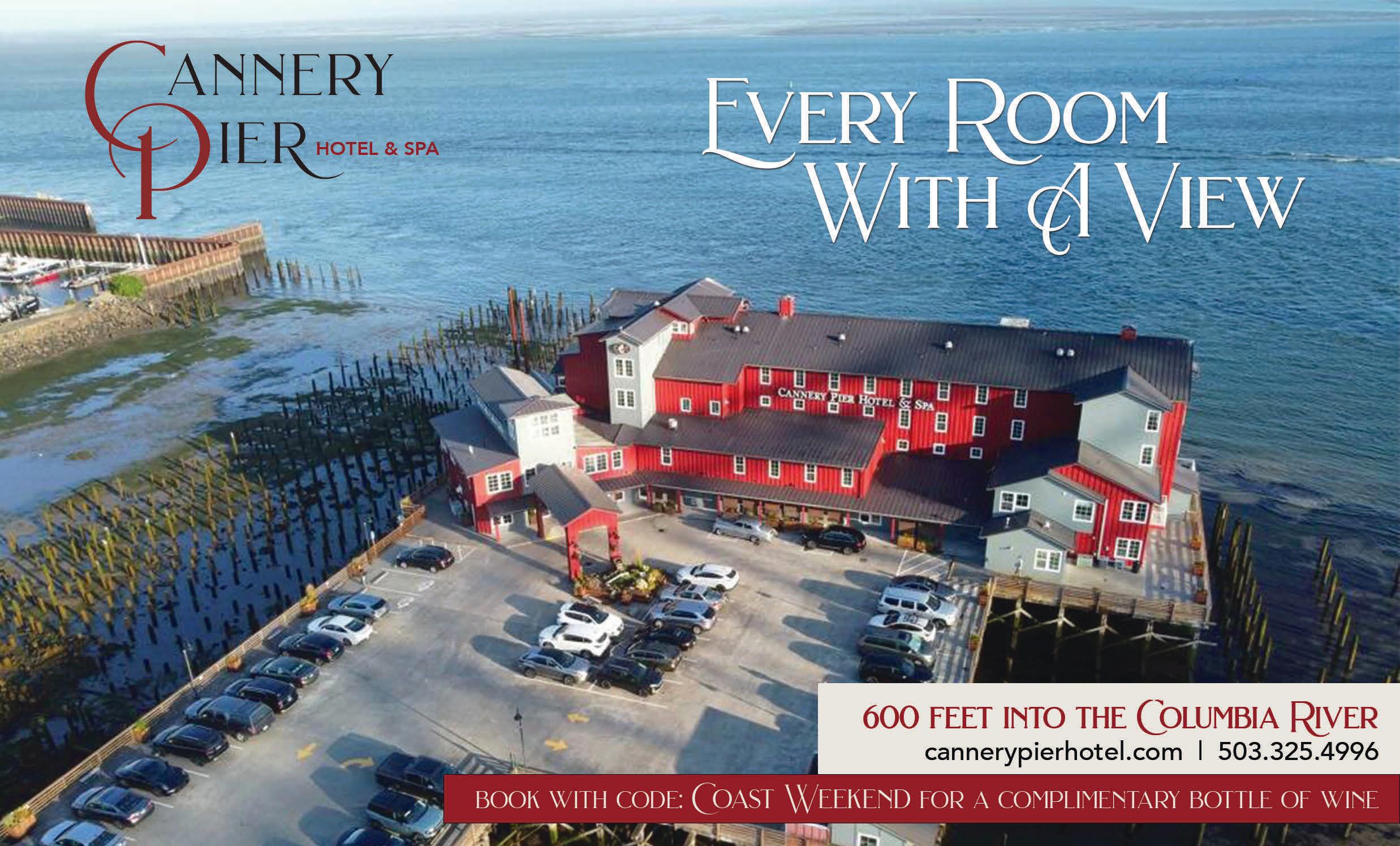
DiscoverOurCoast.com 95
Overnight Boarding Suites
Doggie Daycare (featuring the areas only Pet Splash Zone)
Full Service Pet Grooming
Full Line of Pet Supplies
861-9817
TRUE FAMILY VACATION
1480 SE 9th StrEEt, WarrEnton (503)
WWW.baybrEEzE.dog MAKE IT A
Crest Motel
sits on nearly three acres, overlooking the Mighty Columbia River. We feature “Epic” views, continental breakfast, meeting space for events up to 50, meal functions to 32 and outdoor space that can expand to even larger groups.
Erikson Drive
and experience reasonable prices with epic views
Voices of the
U.S. COAST GUARD
Families recount their experiences
Words:
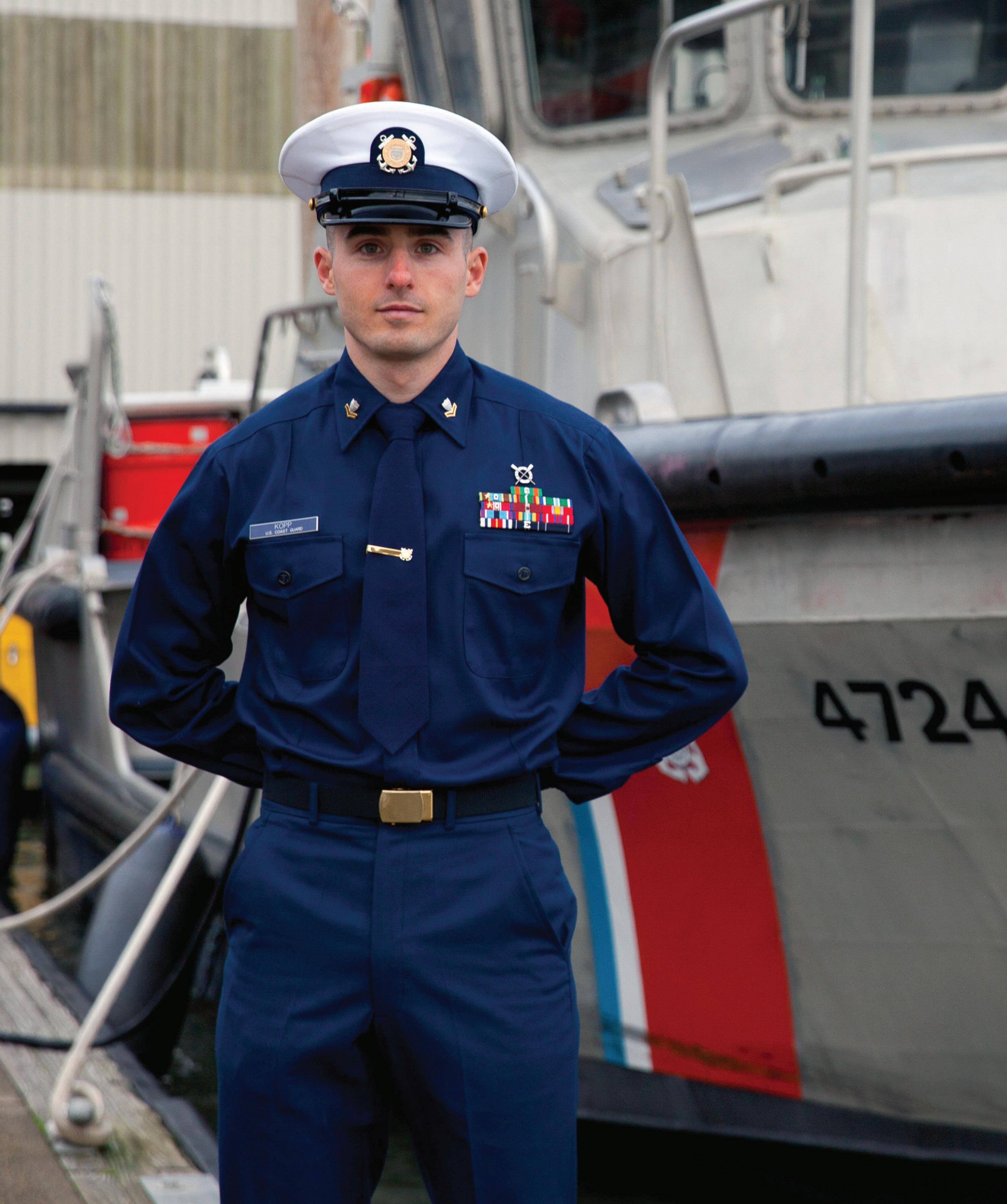
Live & Stay
96 Our Coast Magazine 2024
Jenna Dennison • Images: Shanna Madison
John Kopp Kopp was stationed at Cape Disappointment between 2015 and 2019. More recently, he authored the book “CG 41332,” about a tragic 1977 training accident.

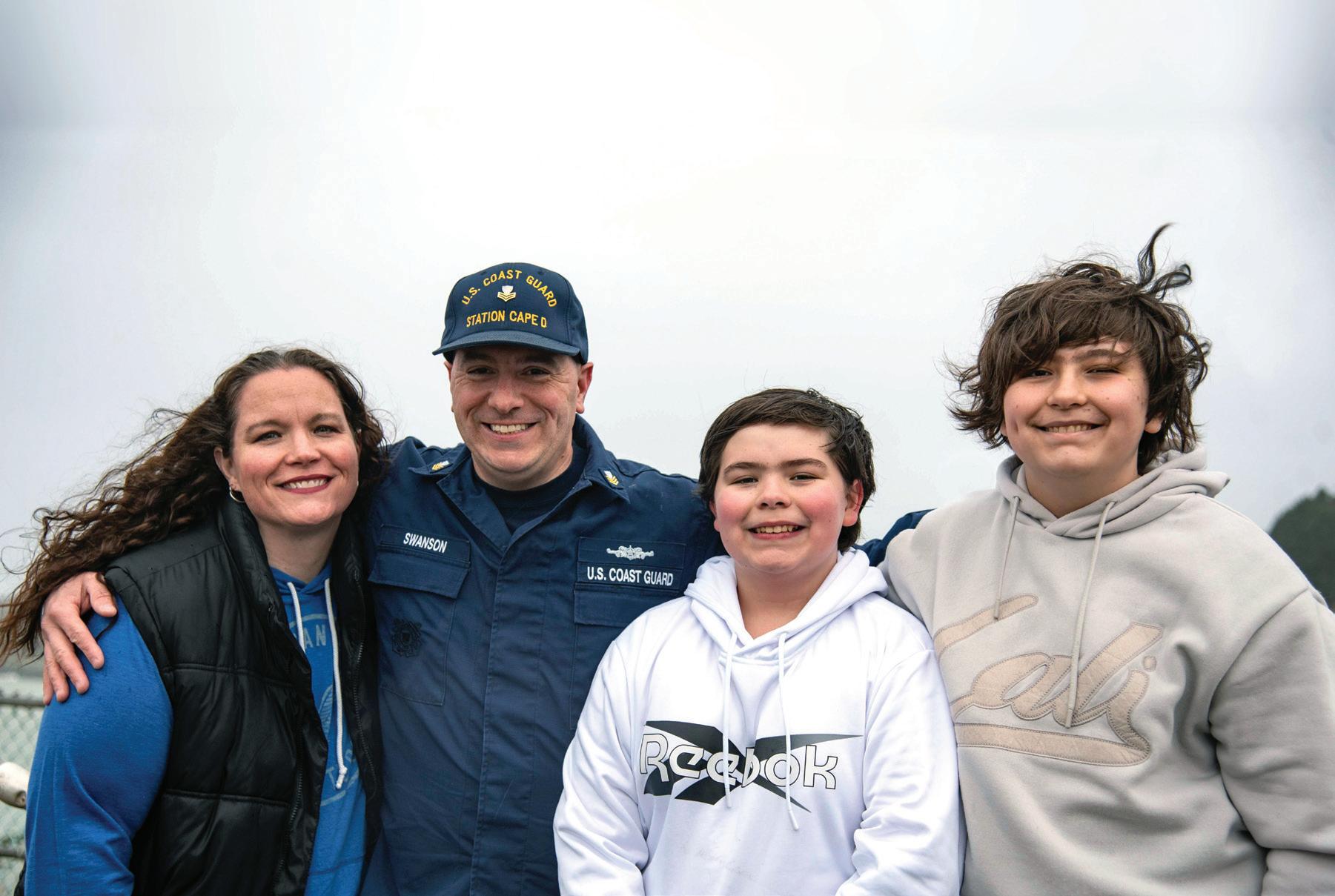
The Swanson Family
Station Cape Disappointment
Petty Officer 1st Class Jon Swanson and his family have been stationed across the country as part of his service in the U.S. Coast Guard.
Swanson, an electrician’s mate first class, has been in the Coast Guard for 19 years. Currently based at Station Cape Disappointment in Ilwaco, Washington, Swanson supports 13 buildings on base, 47-foot motor lifeboats, 29-foot response boats and facilities.
“The boats are high demand. They’re older,” Swanson said. “They’re 30 years old now, some of them. They just require a lot of maintenance and I take on a lot of extra projects.”
Swanson lives on base with his wife of 16 years, Sara, and their two sons, 11-year-old Blake and 15-yearold Blaine.
Jon describes the family’s lives as being busy. Sara’s days begin at 2 a.m., when she works at the Safeway deli in Astoria. While her schedule allows for her to be home in time to see her sons after school and to their activities, she may not see her husband for the whole week at times.
“
The boats are high demand. They’re older. They’re 30 years old now, some of them. They just require a lot of maintenance and I take on a lot of extra projects.
Jon Swanson, Petty Officer 1st Class, U.S. Coast Guard
However, due to their opposite schedules, Jon mostly sees his wife during the weekends. During that time, he said, the two of them enjoy going on drives throughout the region — previous trips have included spots like the Tillamook Cheese Factory, Newport and Ocean Shores, Washington. He also added the weekends are when he’s able to thrift shop — a favorite activity of his.
The Swansons met while they were both working at Firgrove Veterinary Clinic in Puyallup, Washington, prior to Jon enlisting. While working at the veterinary hospital, Jon met a retired Coast Guard master chief, who was the clinic’s maintenance man and introduced him to the idea of serving.
Jon had other influences who had served in the Coast Guard and other branches of the military. His grandfather served in the U.S. Navy, one of his uncles served in the U.S. Army and another uncle served in the Coast Guard for six years.
“I wanted to make sure that was the path I wanted to take,” he said. “ ... Having the stability and paycheck and the retirement and the dental and all that was huge.”
Upon his initial enlistment, Jon intended to serve 20 years in the Coast Guard. His goal now is to make the rank of chief prior to his retirement from the military.
His Coast Guard career began on the cutter Alert, based out of Astoria.
“
Photo courtesy John Kopp
Swanson family
DiscoverOurCoast.com 97
Jon Swanson, second from left, lives at Station Cape Disappointment with his wife, Sara, and their two sons, Blake and Blaine.
Live & Stay
Over the course of 19 years, Jon has been in numerous places throughout the U.S. He’s been stationed on the cutter Fir, based in New Haven, Connecticut, spent time at the Air Station in Port Angeles, Washington, and most recently was in Alaska aboard the cutter Hickory. Normally, these moves take place every three to four years. A boat assignment will last three years, while a land assignment lasts four.
“They like to spread you out a little bit, so you can learn some new things,” Jon said. “And I think it’s been beneficial for me to, you know, learn land side, boat side, facilities, hangars, all that kind of stuff. That’s pretty cool.”
When the Swansons do transfer between Coast Guard stations, they’ll typically put in “picks” for their next station in November. However, the family won’t find out where they’ll be moving until around March. Then, they’ll pack up and move to their new location around May or June.
“Then it’s like, engage the wheels, start moving, start prepping, get rid of stuff and then load up and go,” Jon said. “That’s the worst thing too, is that when you meet great people, you have to leave them.”
Housing has also been a challenge during the Swansons’ time in the Coast Guard. The branch’s basic allowance for housing, Jon said, sometimes doesn’t match pricing in the areas Coast Guardsmen are based.
While being based in Port Angeles, the Swansons were paying $300 to $400 out of pocket per paycheck to cover rent and utilities. Not every unit will have housing available, and Jon said there is difficulty finding housing that will match a Coast Guardsman’s housing allowance at his rank or lower in places like Long Beach or Astoria.
Jon Swanson
Petty Officer
1st Class Jon Swanson supports 13 buildings on base, 47-foot motor lifeboats, 29-foot response boats and facilities.
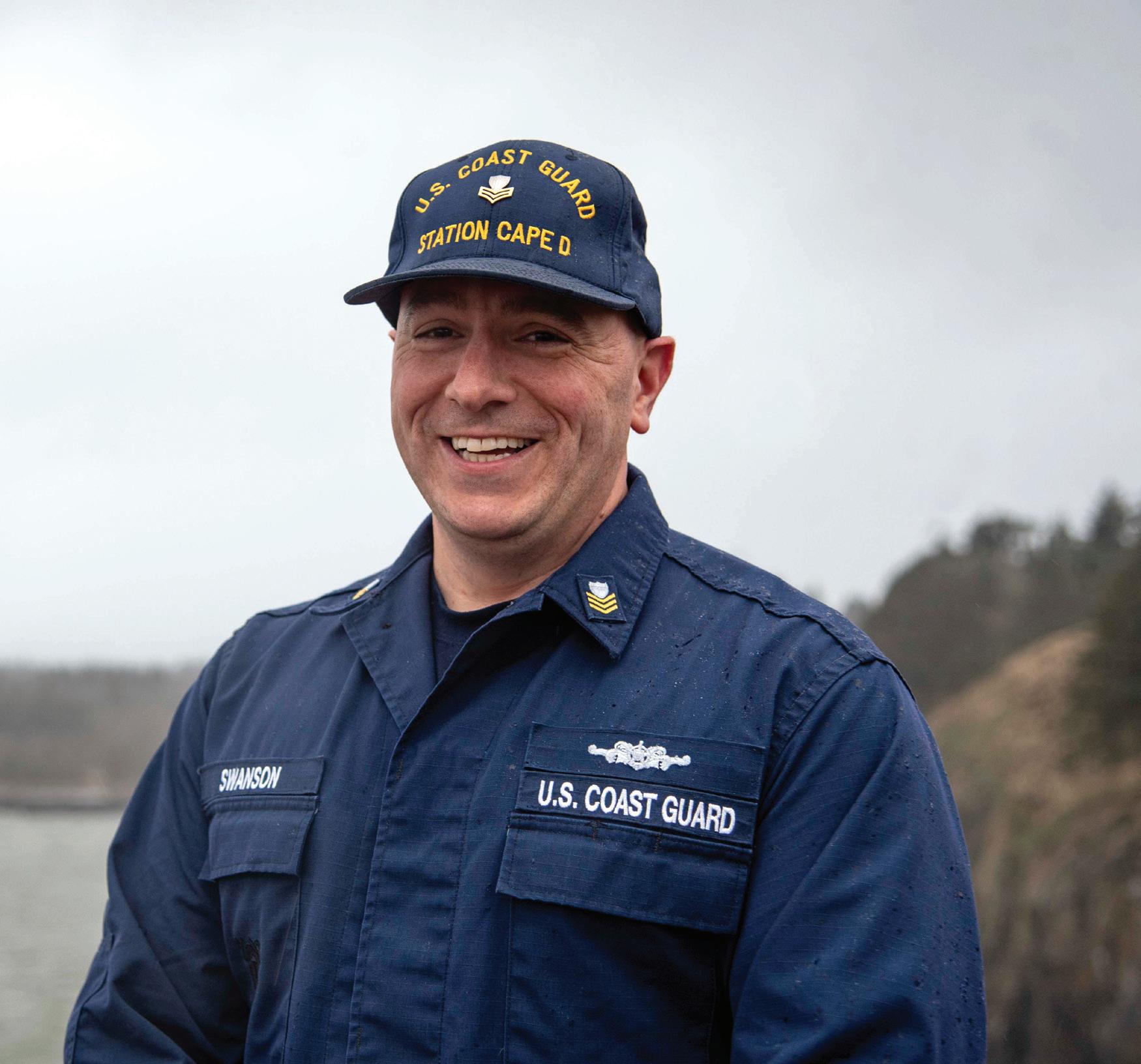
For Sara, being a Coast Guard spouse requires independence.
She moved down to Astoria as Jon spent his first enlistment on the Alert. During the entire summer, she was alone.
“We were talking about getting married and I thought, ‘Is this what I want to deal with for the next 20 years?’ So, I had a good three months to really think about it, you know, but I kind of thought, you know, I’m pretty independent,” Sara said. “I was working. I thought, ‘I don’t really need a man.’ But I figured, I would rather, you know, have this, some of this off time without him and underway then than not have him in my life.”
She describes her time as a Coast Guard spouse as enjoyable — such as allowing for the opportunity to see Alaska, something she described as being on her bucket list.
“It’s been a fun ride,” she added.
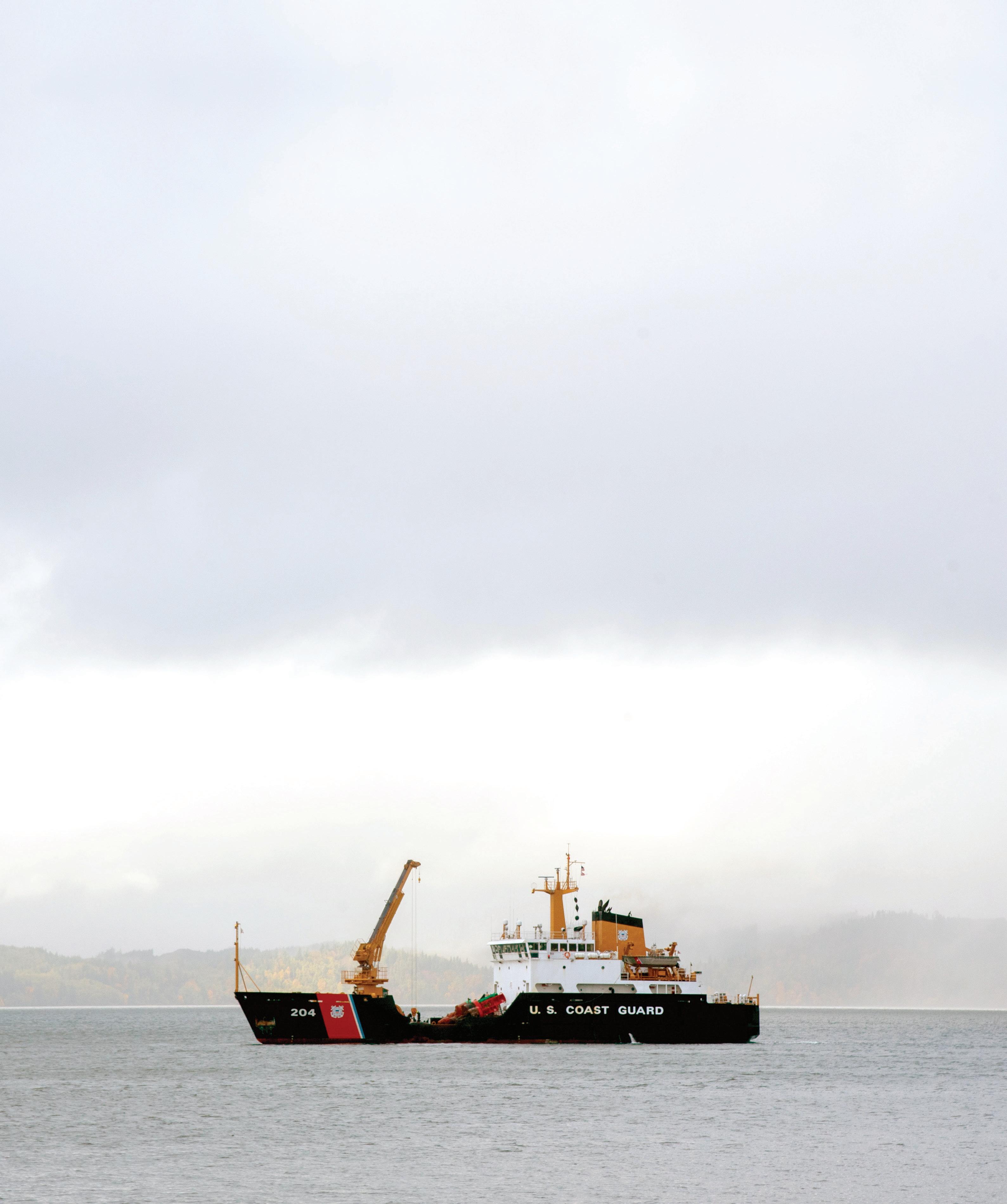
USCGC Elm (WLB-204) A U.S. Coast Guard buoy tender in the Columbia River.
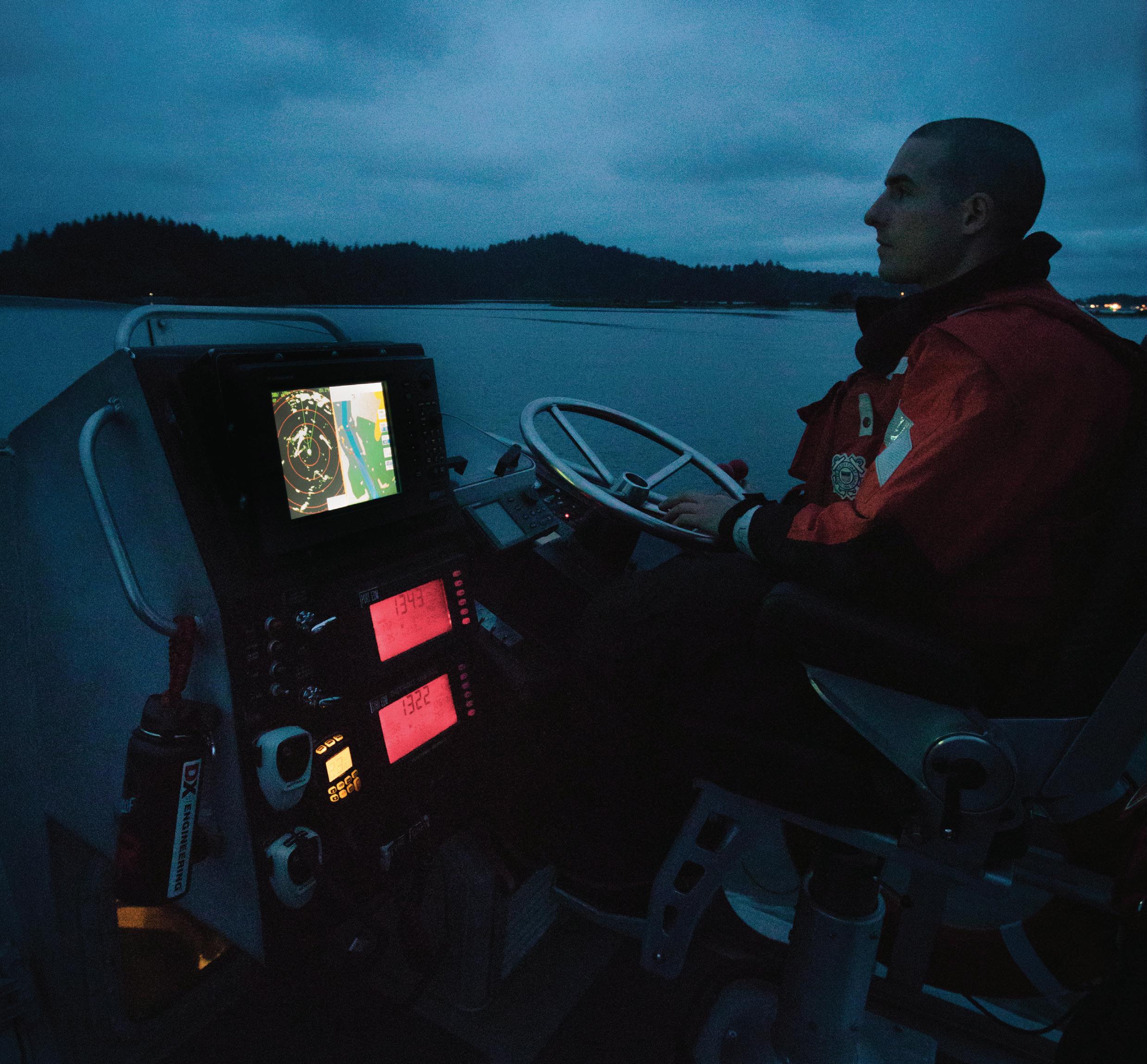
Nighttime assignment
“I had Coast Guard dreams every night,” said Kopp, a former Petty Officer 1st Class, of the two years after he left Station Cape Disappointment.
John Kopp
Station Cape Disappointment • 2015-2019
For former Petty Officer 1st Class John Kopp, his passion for the Coast Guard was kindled during a family trip to Long Beach, Washington, when he was about six or seven years old.
Kopp remembers that, prior to 9/11, he was able to walk on to Station Cape Disappointment. The trip was his first exposure to the Coast Guard, and Kopp’s fascination with the military branch didn’t fade with time.
“Once high school was over, I was obsessed with the Coast Guard and with the motor lifeboat, Cape Disappointment kind
of theme,” he said. “So it just seemed really natural to enlist.”
Kopp was initially stationed out of Seattle aboard the Coast Guard 378-foot cutter Midgett. However, he’d always hoped to be based at Station Cape Disappointment. At the time, the only other surf station with motor lifeboats that had openings was Station Barnegat Light in New Jersey.
So, Kopp made his way to New Jersey and, in 2015, was able to come to Station Cape Disappointment, where he spent four years.
Kopp’s occupational specialty was as a boatswain’s mate first class. While based out of Station Cape Disappointment, he managed training for the unit and worked as a boat operator during missions, ranging from search and rescue operations, training and law enforcement.
“I really, really enjoyed learning how to operate boats and being on the water,” Kopp said. “And I don’t see ever really being a recreational boater. So it’s kind of like a chapter of life that’s closed.”
DiscoverOurCoast.com 99
Photo courtesy John Kopp
Live & Stay
He left the Coast Guard in 2019, transitioning into a new career in counseling psychology, and completed a master’s degree in counseling psychology in June 2023. But the Coast Guard wasn’t far out of Kopp’s mind, even after leaving.
“For like two years after getting out, I had Coast Guard dreams every night,” he remembered. He wondered if he should reenlist and come back to Cape Disappointment, yet that choice didn’t sit well with him.
Kopp recounted a memorial that was held each January at Station Cape Disappointment to commemorate incidents that have ended tragically. In that first year stationed at the base, Kopp learned about a training boat accident that had occurred in 1977.
“My experience in just being at the station for four years was that nobody really knew about it,” Kopp said. “People who were getting assigned there weren’t really being told about it, because people had forgotten long ago.”
The training accident was one he hadn’t heard of previously — he had maintained an interest in the Coast Guard’s history, even seeking out additional information from the National Archives in Seattle.
He would also later learn that the next door neighbors of family friends in Long Beach had lost a son in the 1977 accident.
“That’s when the pieces came together, like, ‘Okay, I’m still really interested in this history, I’ve been out of the Coast Guard for a while, there’s this accident that hasn’t really been told or recounted,’” Kopp said. “And I have a number of connections with people from that era or from past eras who could kind of maybe help me find out more.”
He decided to write a book, “CG 41332,” about the training accident, which involved about 18 months of in-depth research, drawing from previous background research he’d done prior to beginning the writing process. The book was published in January 2023.
Kopp now lives in Port Angeles, Washington, with his wife, Sydney Heath. When reflecting back on his time spent in the Coast Guard, he describes there being so much “passion and aliveness” during his time serving.
“I got to collaborate with a lot of really great, dedicated people, interesting people, people from all over the country I wouldn’t have met (and) got to do really cool work,” Kopp said.
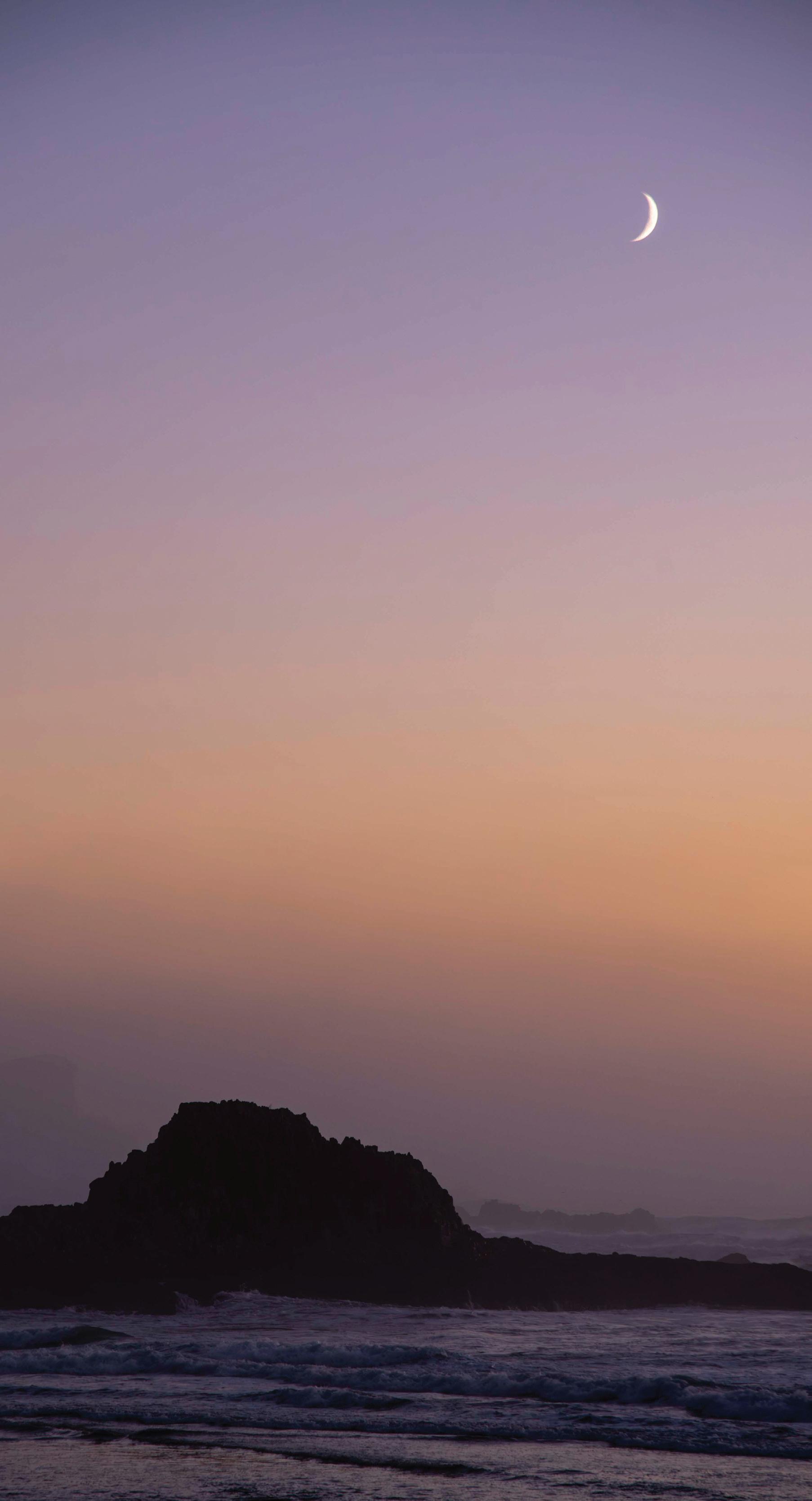
7:25 p.m.
The
100 Our Coast Magazine 2024
setting sun paints the sky over Ecola State Park.
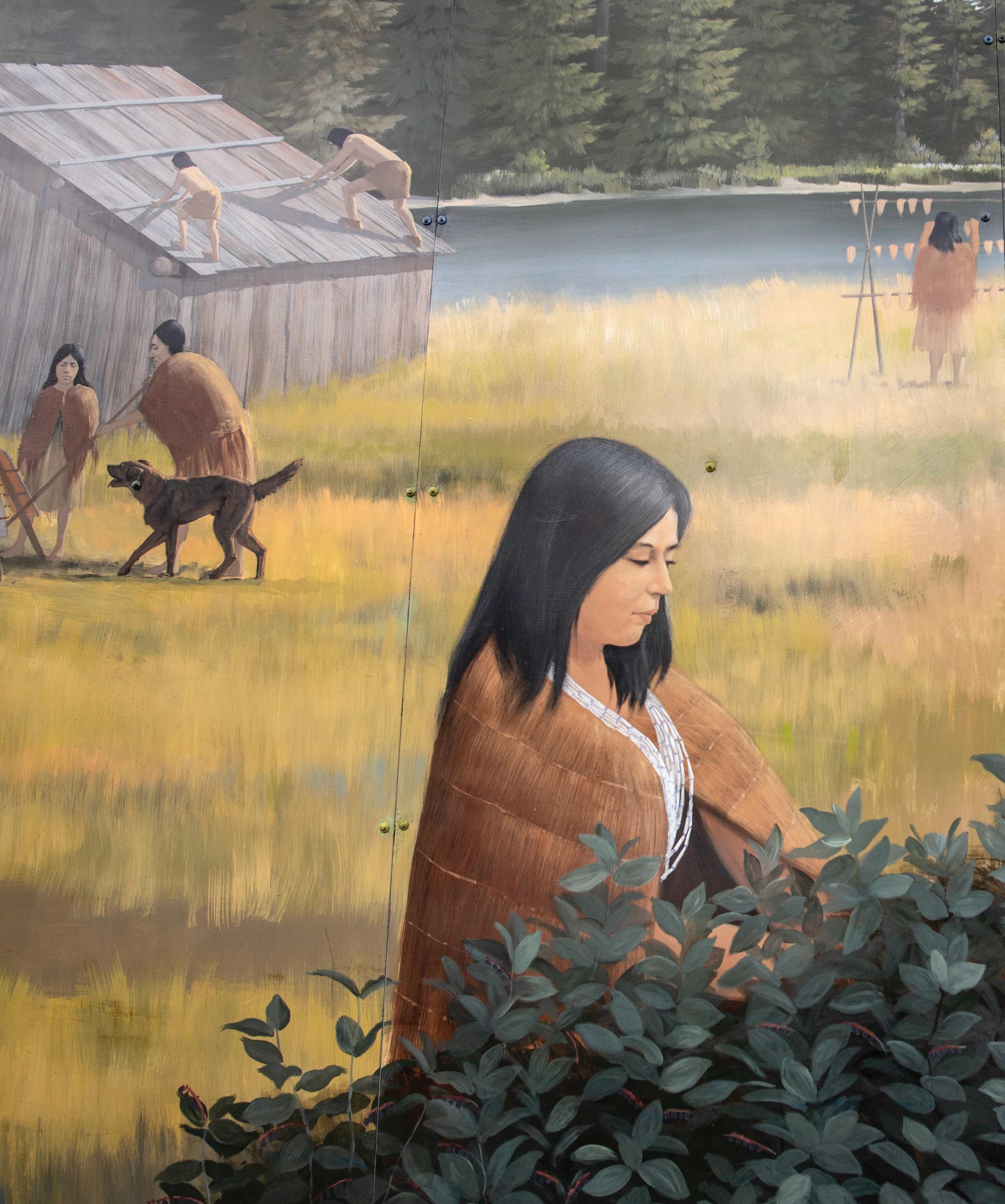
History & Heritage
A step out of time: Pier 39
Telling maritime stories
Historic local women
History & Heritage Our Picks
Where to spend a day on Our Coast
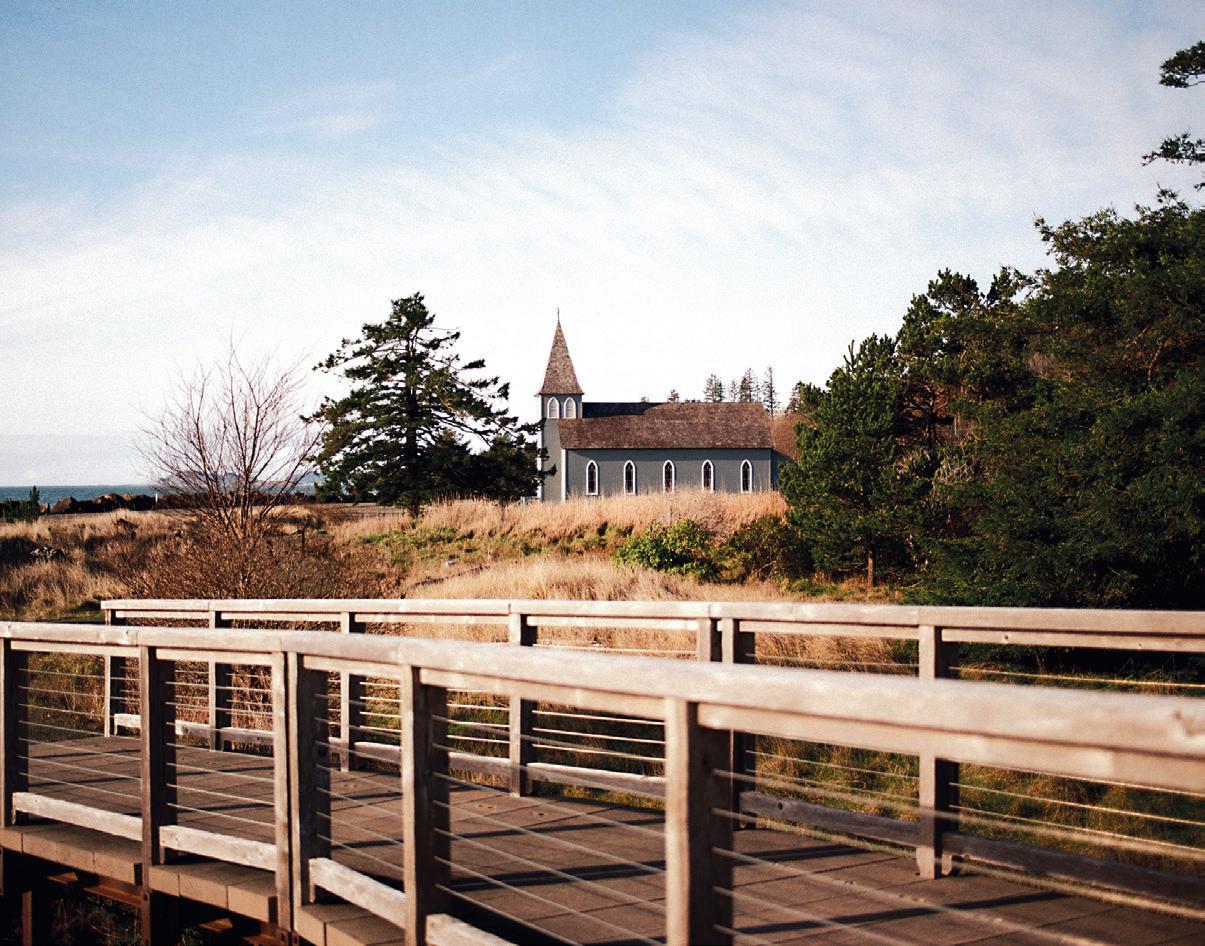
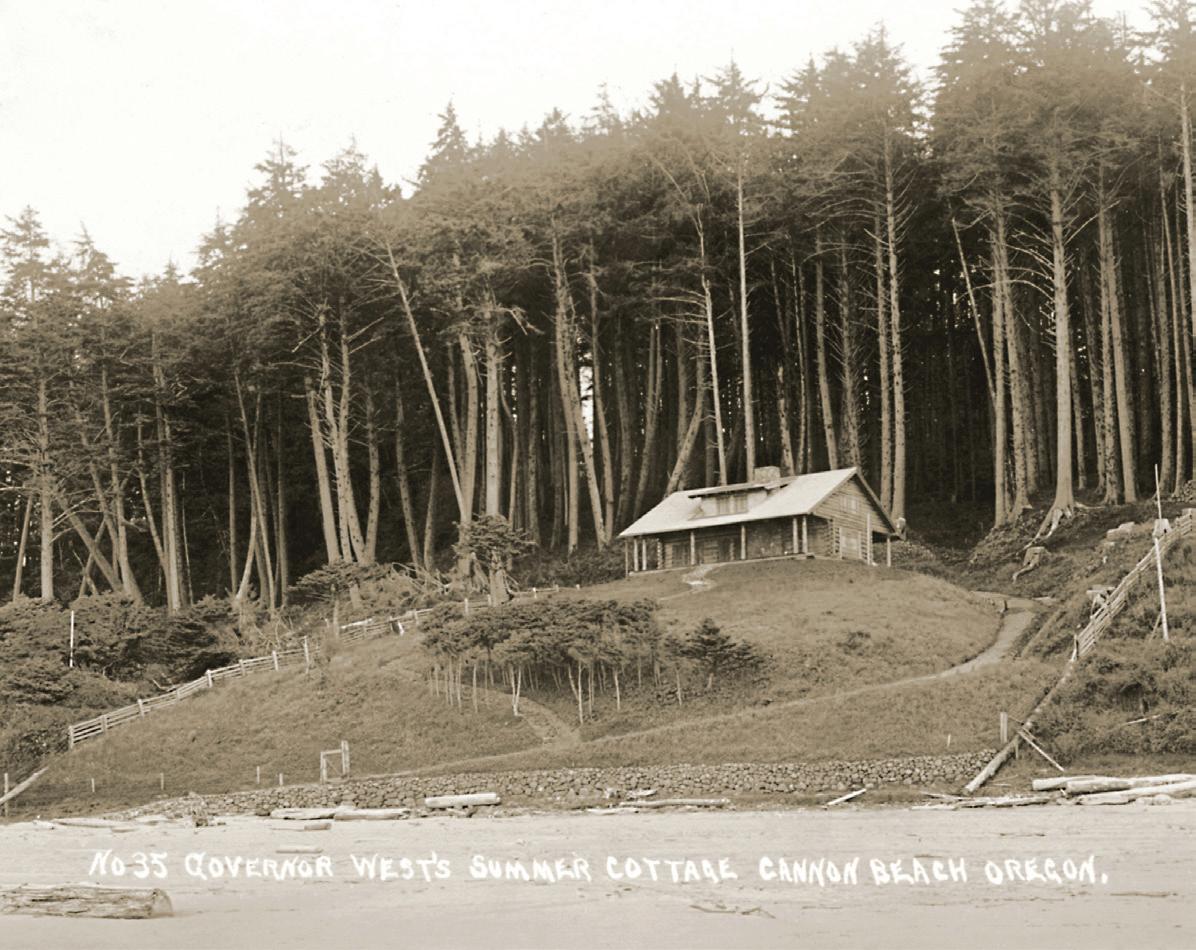
Chinook
Middle Village Station Camp
By Rebecca Lexa
Since time immemorial, the Chinook people have lived along the lower Columbia River.
Chinook tribes in the Columbia-Pacific region include the Lower Chinook, Willapa, Wahkiakum, Kathlamet and Clatsop, and their summer villages along the river allowed them to maintain the center of trade in this region.
Middle Village, located along U.S. Highway 101 in Chinook, Washington, just west of the Astoria Bridge, is the site of Qiqaiaqilxam, one of three important Chinook villages on the Washington side of the Columbia River.
Capt. William Clark used this point, dubbed “Station Camp” by historians, as a base camp for mapping this area on foot in 1805.
European diseases arrived before the explorers and the Chinook were decimated by malaria and smallpox in the early 19th century. Survivors along the Columbia River retreated north up Willapa Bay, and only a few years later white settlers took the land and founded the town of McGowan.
This became a center of salmon fishing and canning, an industry that quickly depleted the burgeoning salmon populations to dangerous lows. Today, only St. Mary’s Church and a few rotting piers mark where McGowan once stood.
Lewis and Clark National Historical Park has preserved the Middle VillageStation Camp site for visitors to explore and learn about. An accessible, paved path winds its way through a grassy field east of the church, with a total distance of less than 1/4 mile.
Interpretive signs and other outdoor exhibits highlight three main historical phases of this land: the Chinook villages, the 10 days spent here by Lewis and Clark and McGowan and its salmon industry.
Photos bring to life these historical moments. Visitors may also marvel at the sculptural reproductions of traditional Chinook canoes and walk around the restored church.
The site is open from dawn until dusk year-round, and visitors may park in the paved lot. Keep dogs on a leash and stay on the established trails.
Cannon Beach
West-Bouvy Cabin
By Jaime Lump
If weekend getaways draw you toward the cool coastal forests and mighty waves of the Pacific, you are part of a long tradition of visitors ditching the city life for crisp air, tall trees and ocean cacophony.
During the turn of the 20th century, beach cottages, which were mostly built by professionals as family vacation homes, began cropping up all along the Washington and Oregon coasts.
Former Oregon Gov. Oswald West, who was best known for his dedication to ensuring the protection and accessibility of the state’s beaches, constructed his beach cottage in 1913 atop an 80-foot bluff overlooking the monolithic Haystack Rock emerging from the sandy shoreline.
The Oswald West coastal retreat was built in the Adirondack style, which dresses up the rustic log cabin with English Arts and Crafts features and decoration. This style utilizes site materials, such as timber and boulders, and emphasizes the artistry of craft and elegance.
In 1991, the cabin was destroyed in a fire. The Bouvy family, who had owned and cared for it for over 50 years, immediately resolved to build a dignified reconstruction of the original home on its exact site.
Extensive field documentation of dimensions, details and materials was conducted by Portland-based architectural firm FFA Architecture and Interiors. Similar materials were used, including Sitka spruce logs that were sourced locally from Tillamook, then hand peeled, saddle notched on the corners and finished to the original quality.
When the project was completed, the reconstructed cabin was placed in the National Register of Historic Places, using the description: “The cabin speaks in the same voice as before the fire. It appears to belong to its site and to have been there for many years.”
The retreat remains a private residence but was recently featured as a stop on the 20th anniversary of the Cannon Beach History Center and Museum’s annual Cannon Beach Cottage and Garden Tour.
102 Our Coast Magazine 2024
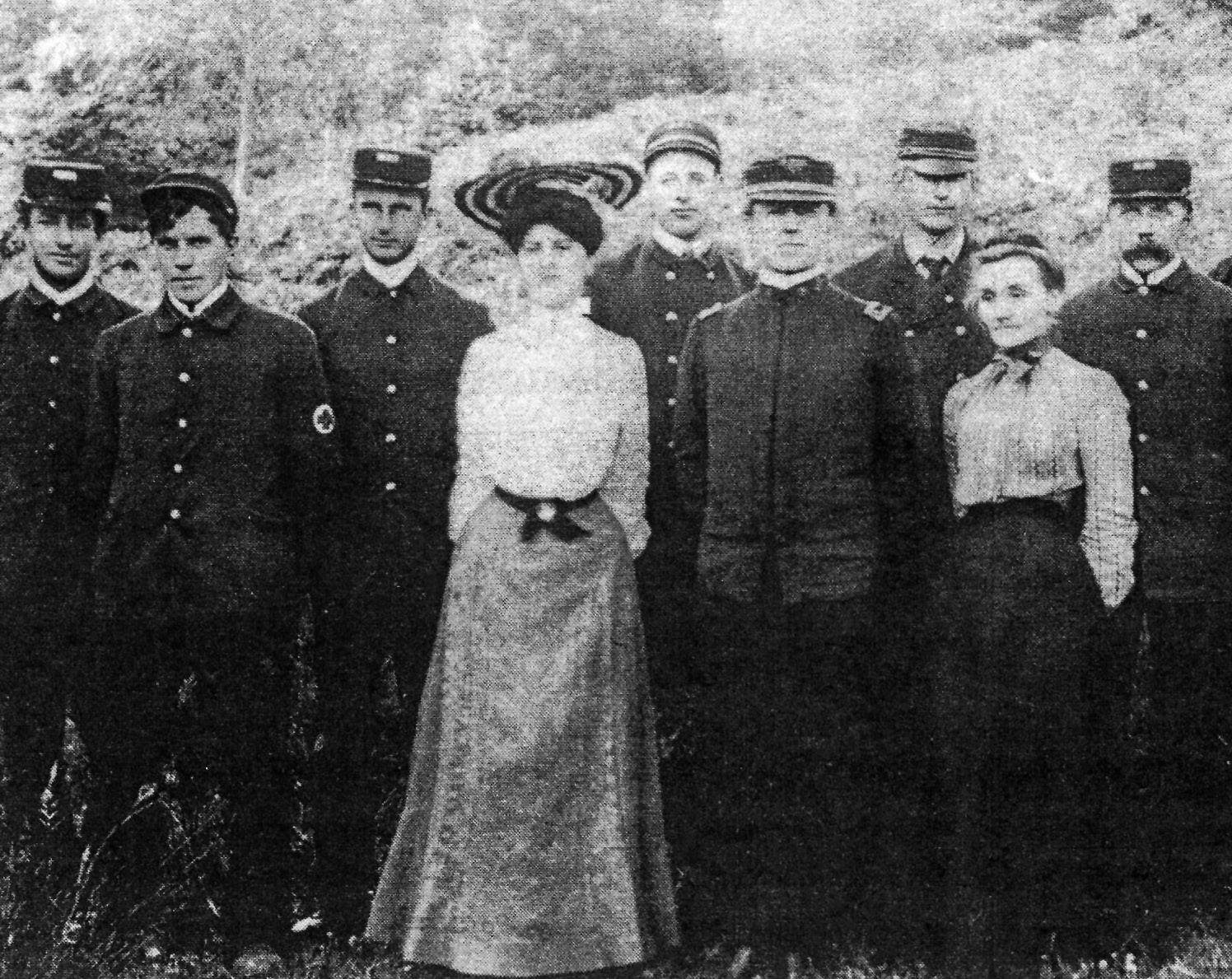
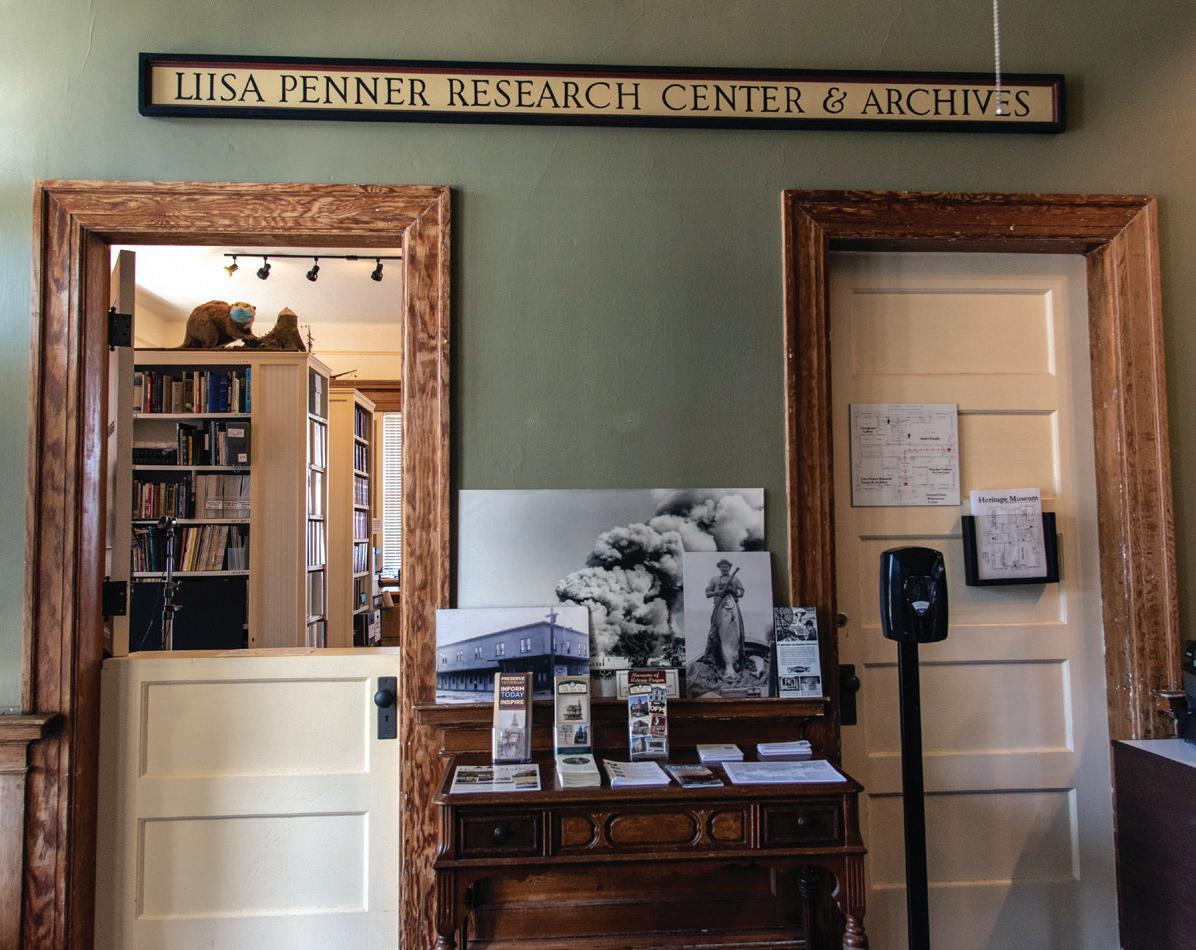
Astoria
Knappton Cove Heritage Center
By Julia Triezenberg
The small community of Knappton once welcomed thousands of immigrants and ship crews to the United States from along the banks of the Columbia River.
Today, the Knappton Cove Heritage Center keeps this history alive by preserving and educating visitors about the Columbia River Quarantine Station, once known as the “Ellis Island of the Columbia.”
The quarantine station’s story starts in the 1870s, as salmon canneries boomed along the river and immigrants from across Europe and Asia arrived in search of work.
The Eureka & Epicure Packing Co. functioned in Knappton from 1876 until the late 1890s. Eventually, the company was sold to the U.S. government and converted into a quarantine station due to concerns about ship-borne infectious diseases.
The mouth of the Columbia River became one of just a few points of entry on the West Coast, operating from 1899 to 1938.
After 1891, all ships from foreign ports went through a mandated health inspection at anchor before landing on American soil. The station was immigrants’ first point of contact upon arrival to the U.S. After inspection, they were often offered treatment for communicable diseases or conditions.
When the quarantine station closed in the late 1930s, various groups took over the facility until it was sold at auction in 1950. Upon purchasing the property, Clarence and Katharine Bell founded Knappton Cove Camp, a place for recreational fishing and camping.
Their daughter, Nancy Bell Anderson, and her daughter, Heather Bell Henry, as well as a dedicated group of volunteers and board members, now preserve Knappton Cove’s history at the station.
The center is housed in the quarantine station’s former lazaretto, or pest house, where patients were treated for various illnesses. Displays highlight the many phases the property has undergone, including its Columbia River canning history, early 20th century quarantine practices and camp mementos.
Visiting the center is free during regular hours on Saturday afternoons in July and August. Guests may visit the station by appointment during the rest of the year.
Liisa Penner Research Center &
Archives
By Peter Korchnak
The Liisa Penner Research Center & Archives at the Clatsop County Heritage Museum contains an ever-growing trove of materials, documents and images that tell stories of the people and history of Astoria, Warrenton and surrounding areas of the county.
Named for longtime archivist Liisa Penner, the center is an invaluable resource for beginning researchers and professional scholars alike who are interested in learning about people and groups of the region — including Indigenous families and Finnish immigrants.
The archives house primary documents sourced from personal collections, including personal diaries, journals and letters by early settlers.
There are also clues to properties, events and social life — city directories dating back to the 1890s, school yearbooks, maps, police ledgers, audio and video recordings, voter rolls and census files, as well as cemetery, church and death records.
The center also boasts a collection of more than 45,000 historic photographs and materials on the Port of Astoria, the Astoria Regatta and local schools.
Books on area history, scrapbooks, biographies, genealogies, house and building histories, indices, almanacs and periodicals, including Clatsop County’s and Oregon Historical Society’s journals, round out the collection.
As Penner said, “You can find just about anything here.”
Since 2019, the center has undertaken a significant project in converting much of its material into a searchable digital collection.
For researchers looking to go beyond what’s available online, the center offers the opportunity to peruse the physical, often original materials.
Knowledgeable staff are on hand — by phone appointment only, on a limited basis during regular business hours — to assist researchers, assemble requested documents or obtain materials from partner archives and historical societies.
DiscoverOurCoast.com 103 Traditions. Cultures. Artifacts. Icons.
Knappton
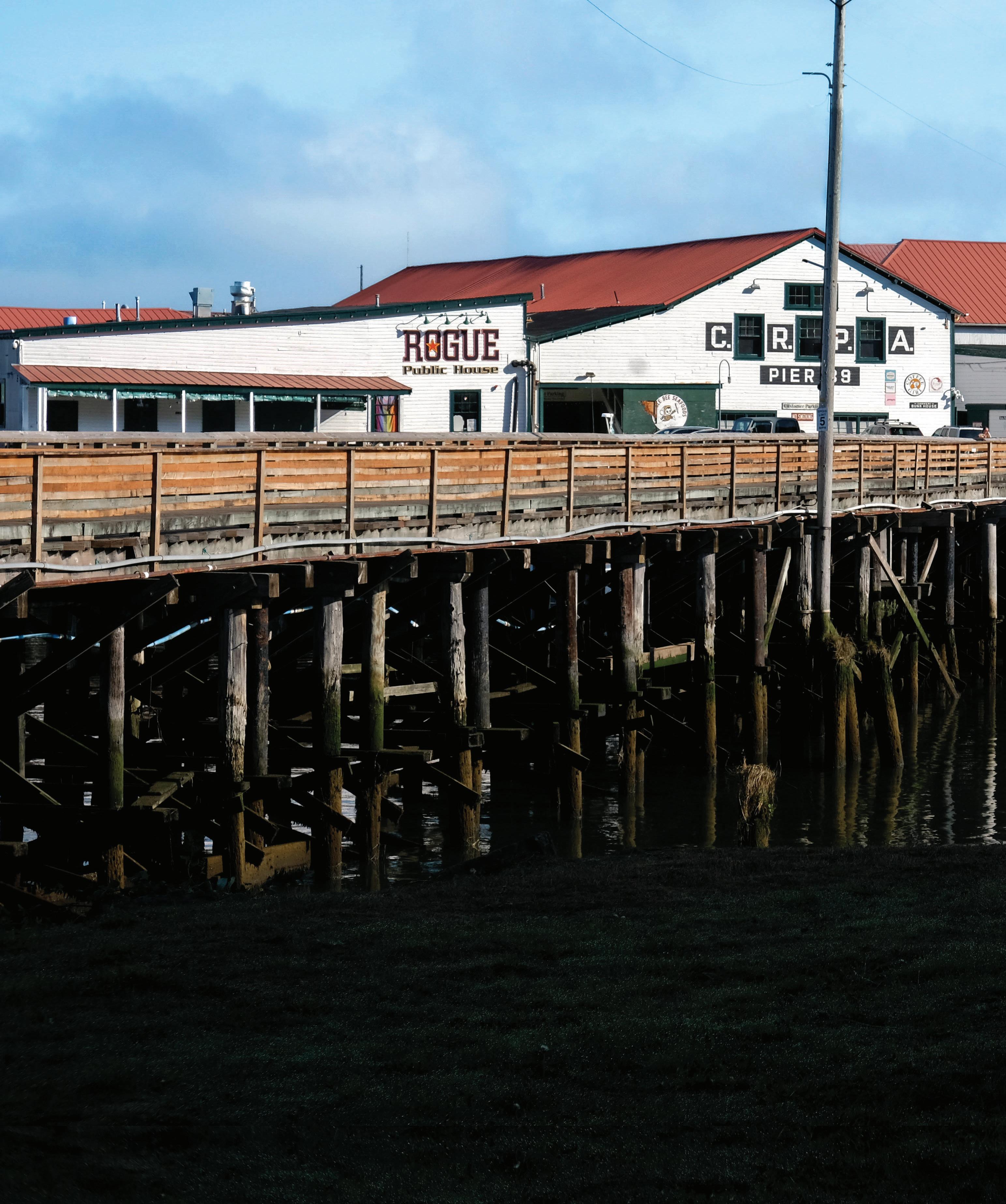
Step out of time
Pier 39 recalls a century and a half of river life
Words & Images: David Plechl
Pier 39 shouldn’t even exist. Almost every other building like it — and many once lined Astoria’s waterfront — have collapsed, caught fire or otherwise crumbled.
History & Heritage

Historic connection
Pier 39 endures as a connection to Astoria’s canning and seafood industries.
At a quarter to eight on a clear Sunday morning, it’s cool near the water. The distant barking of sea lions echoes through the labyrinthine structures that make up the pier.
The wide waters of the Columbia River lazily loll beneath and around the old cannery building. Some parts of the building are nearly 150 years old.
A few early risers stagger slowly across the pier, lurching toward their first cup of coffee. The scent of freshly baked scones wafts beneath a still-locked door of Coffee Girl, a cafe with sweeping views of the river.
The pier at this hour is still largely empty of human occupants, but that will change. For now, a few cormorants drift through the water — deep blue and purple in the light of the early sun. A heron takes flight from a shoreline boulder, only to land a moment later atop an old wooden pile — the remnant of a train trestle that once connected the bustling Hanthorn Cannery to the rest of the country.
Aside from a small structure or two and the decommissioned trestle, the old cannery and cold storage depot look much as they did when operations were in full swing. The clanking machinery, army of white-clad filleters and vast freezers stuffed with tuna are now gone, but there is new life in the old building.
When the door finally swings open to Coffee Girl, the line that had formed pours itself inward. The sounds of grinding coffee and hushed voices fill the space. Ships at anchor appear like decorations framed through the old mullioned windows. The mood is vibrant yet calm, much like the river in the morning.
The pier is just a trolley ride from Astoria’s downtown, but a world unto itself.
In truth, there are precious few places where you could have your torn sail repaired, grab a latte, stock up on scuba gear, gawk at sea lions, scarf a burger, down a pint, monitor the shipping lane, adopt a live crab, get a lesson in history and go home with a haircut. All in a day, or even a few hours.
Relishing in a challenge
Betsy Wentworth is the owner and operator of Coffee Girl. In the 1970s, she worked downtown at J.C. Penney, where she remembers the women from the plant coming in to shop after their long shifts filleting salmon, and how they “reeked of fish.”
She laughed, recalling that “no one seemed startled” by the fish odor.
Steps from where the original lunch counter served cannery workers for over a century, Coffee Girl is in many ways the living room of the pier, where even U.S. Coast Guard boats feel welcome to pull up for a quick cup of joe.
Wentworth purchased the shop from its owner and founder, Zetty McKay, almost a decade ago. Little has changed, or needed to. The food and the coffee are still warm, fresh and familiar.
And, with panoramic views and access to the river, it’s a place to pause. “You can go out there and just sit and watch the sea lions,” Wentworth said.
She praised building owner Floyd Holcom for continuously fighting against the ravages of wind, rain and time that take their daily toll on the old structures.
“It’s the passion he has to keep this alive,” Wentworth said. “It’s just so much work.”
On this day, Holcom was nowhere to be seen. A former U.S. Army special operations officer, president and chief operating officer of the Salvage Chief and expert diver, his personal story is about as improbable as an old wooden cannery built above a tempestuous river surviving well into the 21st century.
One person thought he was on a dive. Another suggested he was training special forces. Maybe he was on a dive training special forces, opined yet another.
None of it would be out of the question. Long retired from the military, Holcom still supports the work of the special forces through dive training and as president of Pacific Defense Supply, a veteran-owned logistics group that provides equipment to federal and state agencies.
Holcom bought the pier and historic Hanthorn Cannery in 2002, and it’s been a labor love ever since. Not long after buying the property, he opened Astoria Scuba and Adventure Sports, the result of a lifelong passion.
The Columbia can be a harrowing dive spot, but Holcom relishes in a challenge.
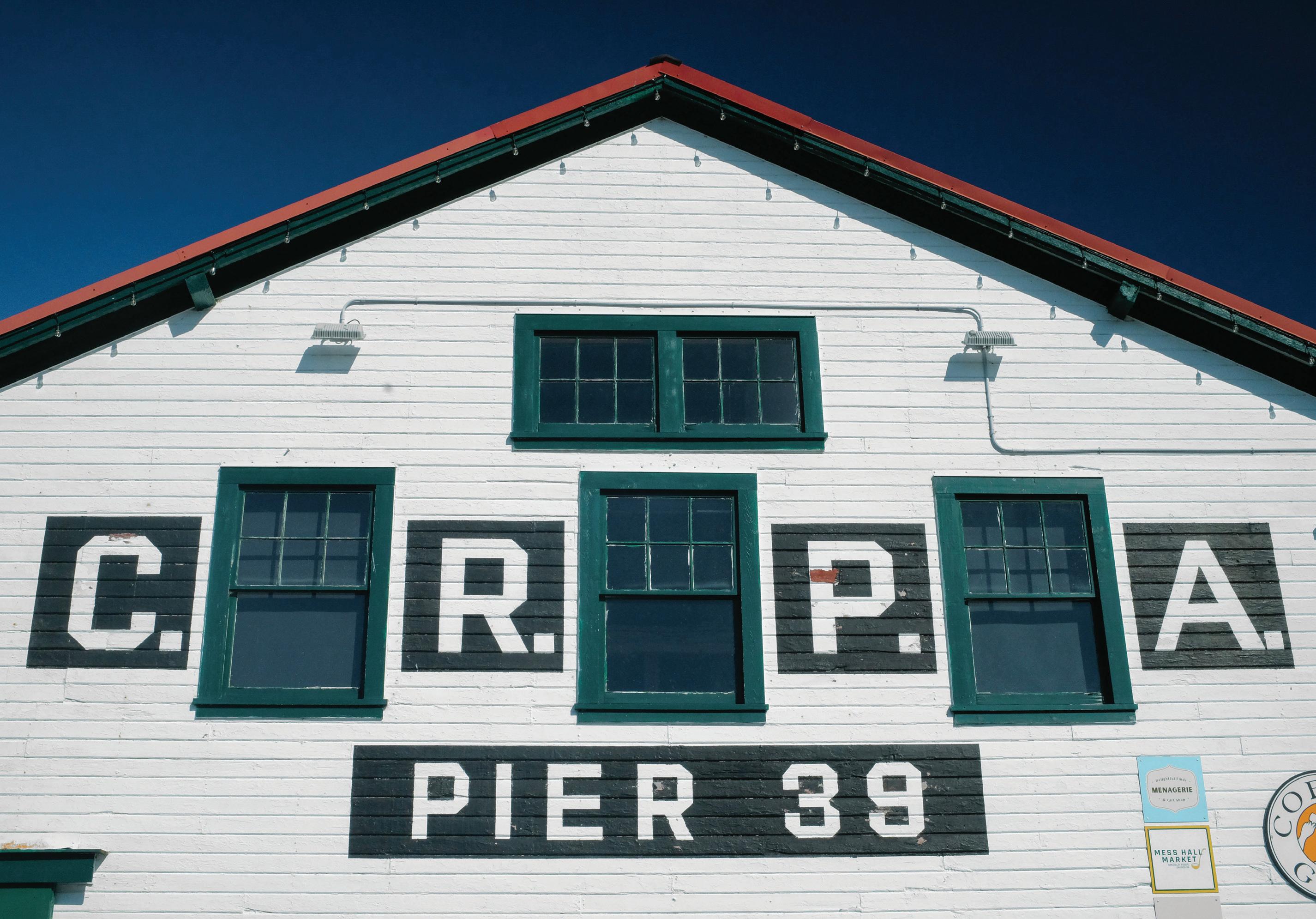
‘Then it’s second nature’
Christie Davis took over the shop from Holcom in 2022.
Astoria Scuba and Adventure Sports now distinguishes itself as the only dive shop directly on the Oregon and Washington state coasts.
The breadth of their work extends far beyond recreation, too. The shop supports and supplies operations by the Astoria Fire Department and the Coast Guard.
Davis and her team are also guides for the certification process that tightly regulates scuba diving. Becoming a diver can be a daunting prospect, but Davis said it’s a stepby-step process designed to make people feel comfortable in an uncomfortable environment.
“You have a good instructor that works you through it,” Davis explained. “Then it’s second nature.”
Training takes place online and at a local pool. Once certified, divers can even join one of Davis’ dive tours in the Puget Sound or
Hood Canal, places much better suited than the Columbia for novice-level divers.
“I wish we could dive right here,” Davis said. “But you can’t see your hand in front of your face and the currents are outrageous.”
She noted that Holcom has dove right here. He even found an old shipwreck that hit a rock and sank just a stone’s throw from the dock of the pier.
Davis is also effusive about how hard Holcom fights for the survival and future of not just the old buildings, but the pier’s tenants.
“Floyd is very much about promoting people’s small businesses,” Davis said, noting that many of those businesses are womenowned.
It’s little wonder that Davis flows seamlessly between serving recreational divers and turning to the highly specified needs of rescue divers the next. Retired from the U.S. Navy, Davis used to spend her days tracking submarines as an ocean systems technician. Now, she’s happy to be
providing a different kind of service.
There are multiple levels of dive certification, and Davis notes local instructors are well equipped at any level, seeing as they are retired Army combat divers. “We do what we can to support our special forces,” she said.
While there are much warmer, more favorable places to learn to dive, Davis said becoming certified in the Northwest environment will set you up for success almost anywhere.
“If you learn to dive in the Pacific Northwest, you’re going to be a good diver,” Davis said. “This is one of the most challenging places to dive in the world. We take a little bit of pride in that.”
Historical treasures
Wander down the way from Davis’ dive shop to encounter a bevy of wooden boats and other maritime artifacts from the time of the cannery’s heyday.
106 Our Coast Magazine 2024 History & Heritage
The Hanthorn Cannery Museum, while largely self-interpreting, is a stockpile of historical treasures, imagery and stories from those heady days of massive hauls of salmon and mountains of tuna.
The museum tells the story of the pier, built in 1875 as the Hanthorn Cannery, eventually morphing into the Columbia River Packers Association and finally to Bumble Bee Seafoods, once Astoria’s largest employer.
For creator and curator Peter Marsh, the museum was an accident — an unintentional collection of items diverted from the dump or flea market. It has become a reflection of his affection for all things maritime, especially the faded, forgotten and lost.
Displayed here is the scale of what was at stake — a decades long harvest that would create livelihoods for many and fortunes for few. The wealth captured from the river funded Astoria’s growth, and while this pier was but a piece of that, it is one of few buildings like it left.
Marsh grew up on the outskirts of London. Fascinated by boats at an early age, he only saw the inside of his first proper sailboat while on a cycling tour at 16 years old.
But boats were more than physical things, he remembered. They were a measure of one’s bravery and skill.
“If you hadn’t sailed to France in a small boat, you were a chicken,” Marsh recalled.
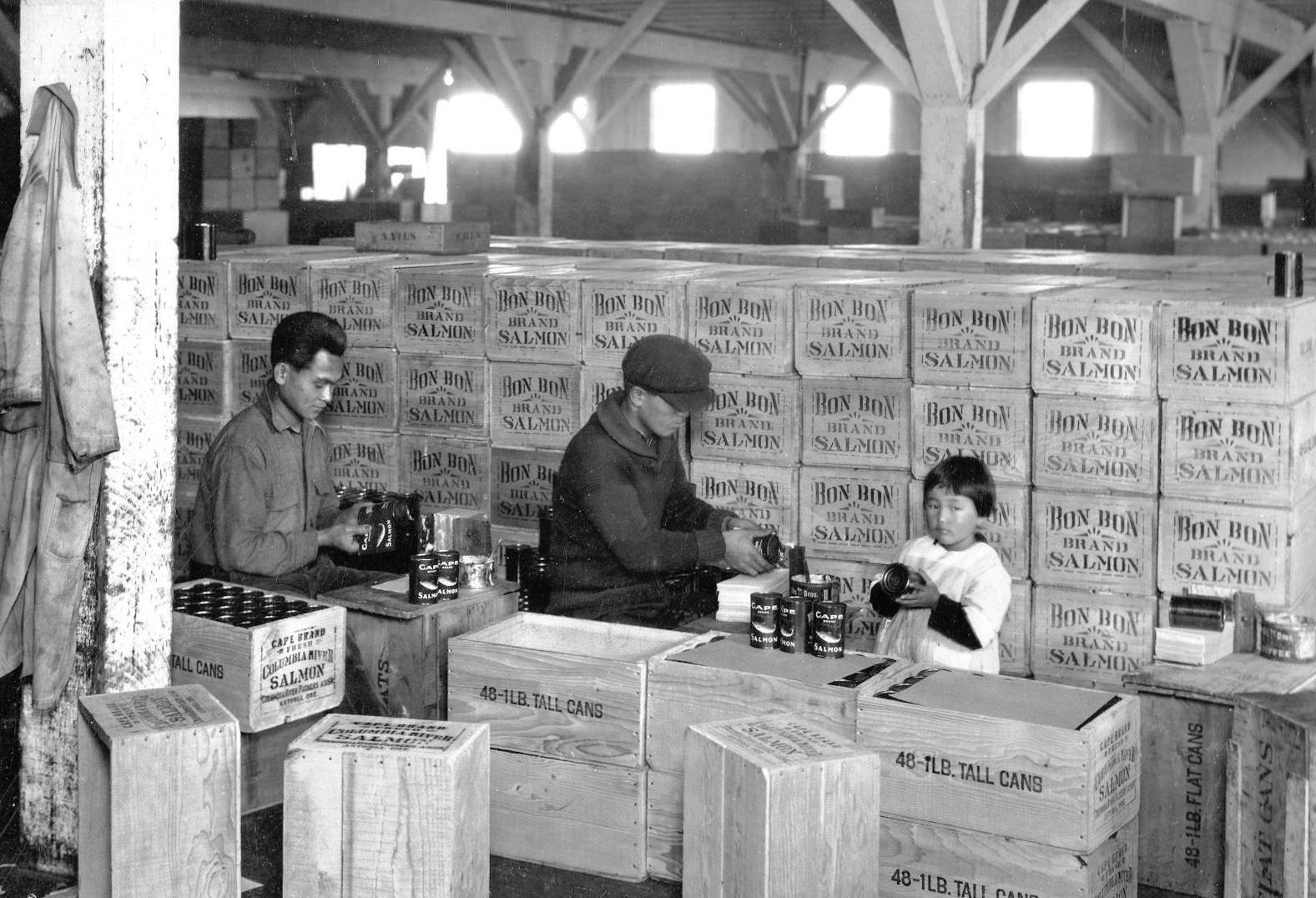
Cannery workers
Many workers in Astoria canneries during the late 19th century were Chinese immigrants.
Marsh would come to travel almost exclusively by sailboat or bike. And it was on another bike ride, this time from Mexico to San Francisco, that he came upon a spark of inspiration in the form of a maritime museum.
“It was just a museum dedicated to fish and maritime. I never dreamed you could have a museum of just pictures of fishing,” Marsh said.
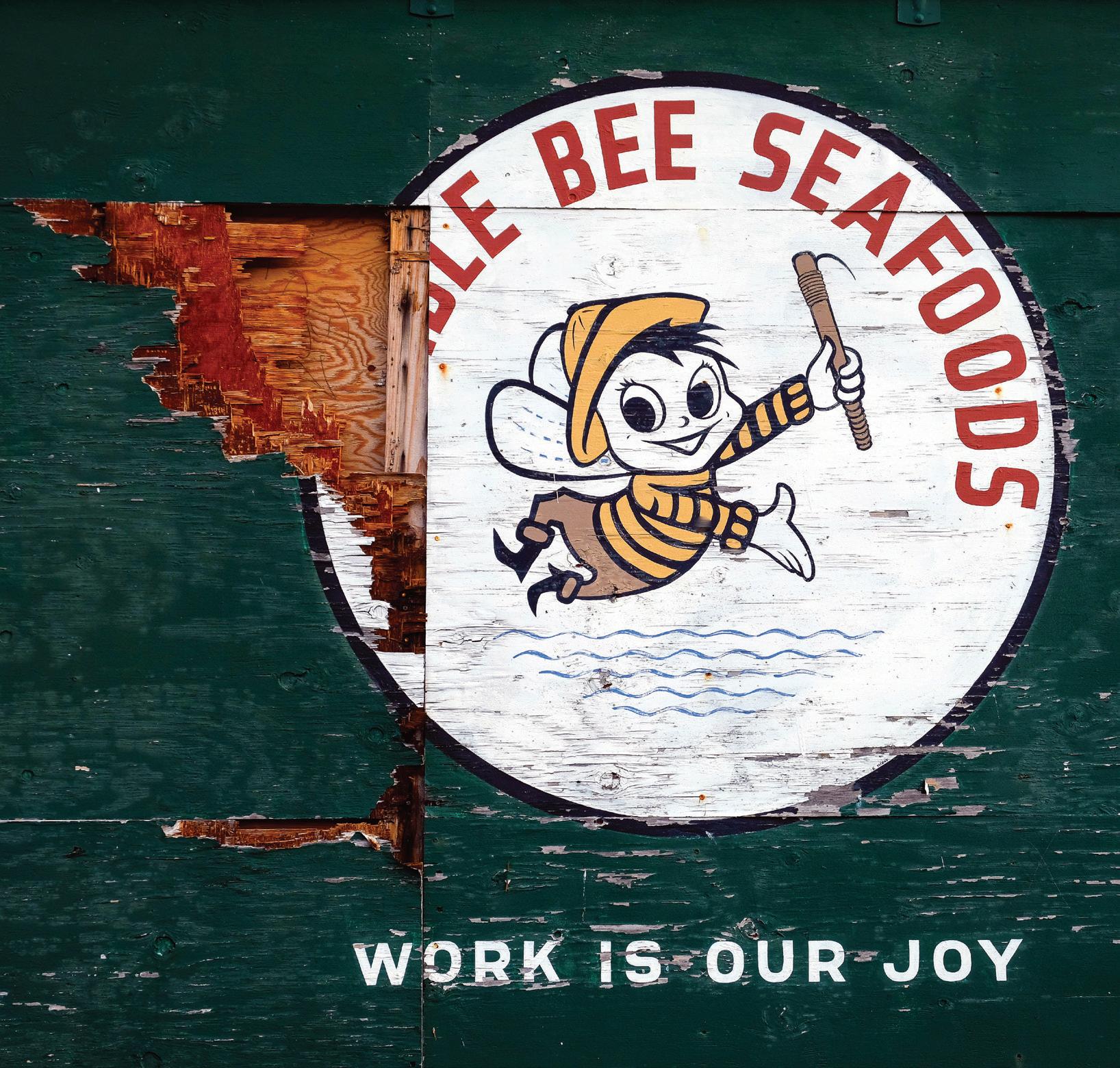
When asked about the first time he stepped foot on a boat. He mentioned perplexingly that he’d never set foot on a boat. He then said in passing that he’s not been up to much, only to plop down his freshly published, hefty tome of a book, “Liberty Factory” — a story of merchant vessels built in Oregon during World War II.
Marsh seems to follow the wind, or maybe the light. He appears to navigate by a small constellation of interests — boats, bikes, history and language. Traveling light means few possessions, and Marsh instead has concentrated his efforts on saving things that tell a story, even if it’s not his.
Most of the artifacts in the Hanthorn Cannery Museum’s collection were donated (an old wooden gillnetter), diverted from their path to the dump (antique canning equipment) or dusted off from some obscure storage closet (vintage Bumble Bee Seafoods signage.)
In one room, a film from the 1960s plays on a loop, a trip back in time to the cannery’s boom days. Quirky as they may be, the displays pay particular attention to the workforce of individuals that were the lifeblood of the cannery’s success — an old locker with a hand-stenciled name, notes of the day’s catch tallied on a piece of scrap paper. Photographs of immaculately dressed workers tending to menial tasks with a striking dignity and poise.
Taking in the rich jumble of history displayed here, its waves of hopeful immigrants, and the innovations and ingenuity indicative of this gritty time gone by, Marsh seems newly inspired.
“It was a hollow place,” he reflected. Thanks to Marsh, it isn’t anymore.
DiscoverOurCoast.com 107
History & Heritage
A cauldron of crab
Across the breezeway from the museum, Bill Hagerup, owner and proprietor of OleBob’s Seafood Market, is boiling a cauldron full of crab. They go for about $20 a piece and he estimates he’ll sell about 15 to 20 Dungeness a day.
Originally from Astoria, Hagerup labored for years as an electrical engineer in Portland.
“After I retired, this opportunity came up,” he said.
Hagerup has been at it for a little over a year and simply feels at home on the pier. His live crab tank can hold up to 1,500 gallons and 350 crab. Once crab season is up, he’ll shift his focus toward salmon, oysters and clam chowder.
Fishing in his family goes back three or four generations. His dad was a teacher and would fish in the summer.
Running a seafood business at Pier 39 is a kind of homecoming for Hagerup. He spent most of his childhood here but hadn’t lived in Astoria since 1981.
“Astoria has just changed so dramatically,” he said. “But it still has that working-class feel I love. And it’s just spectacularly beautiful.”
Hagerup had run a few other seafood businesses around the Columbia-Pacific region, but Pier 39 has been the best fit for him.
“I like being part of the small business community here,” Hagerup said. “We help each other out.”
‘Full of stories’
Helping each other out is the name of the game for Stacey Stahl, owner of Menagerie on Pier 39 as well as the Mess Hall Market.
She is a self-ordained promoter of all things Pier 39, but sees the pier’s people as its greatest resource. Here, Stahl has found a sense of camaraderie.
“You can feel the history when you walk on the pier,” Stahl said. “This place is full of stories.”
Ghost stories, too. More than one person has reported encounters. But don’t worry, these specters are said to be less of the spooky type and more of the prankster.
That hasn’t stopped Stahl from running her shops. Wander through to find regional foods, handmade jewelry, ceramics, soaps, fine art and even Bumble Bee Seafoods. “That’s why she calls it Menagerie,” suggested Stahl’s righthand woman, Claudia Price.
“She’s such a dynamic person,” Price said about Stahl. “Her brain is always working.”
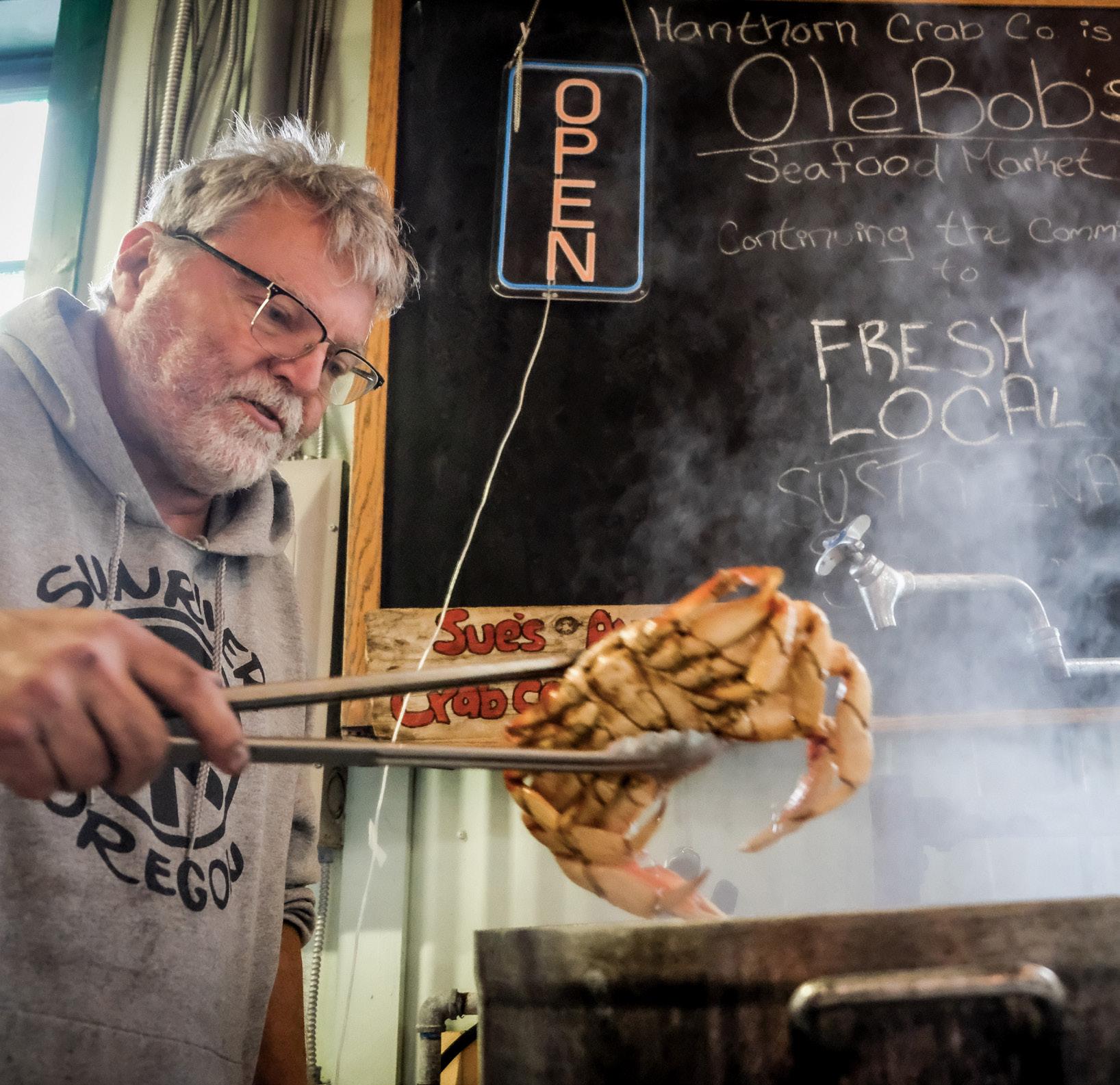
A new canvas
Just about 17 years ago, Susan Schroeder was semi-retired and looking for a new opportunity. Holcom was looking for someone, anyone who might be interested in doing custom canvas and fabrication work on the pier.
That was the start of Four Winds Canvas Works. Housed in what was once the ammoniafilled heart of the old cannery’s cooling system, a maze of piping still crisscrosses overhead.
“It sounded like a great idea,” Schroeder said, “and no one else was doing it.”
Not long after opening her doors, The Great Coastal Gale of 2007 tore up the Columbia, through the docks and mooring basins, with devastating results.
Schroeder spent the next year repairing sails, canvas covers and upholstery damaged by the storm. If she was learning when she started, she was an expert by that year’s end. And the work kept flowing in.
But every job is different, and with customization the standard, Schroeder is never sure exactly what’s coming next. Like the day a young woman came knocking at her door, looking distressed and trying to communicate in broken English. It wasn’t going well until the woman started pointing to a photo of a sail, and Schroeder soon gathered what was needed — another sail repair.
Turns out the woman was on a roundthe-world sailing adventure from China, with a sizable crew that was stranded. Schroeder called Holcom for help, which was fortunate as he turned out to be fluent in Mandarin.
“We got the sail repaired and Floyd ended up hanging out with them, and they just gabbed, gabbed, gabbed,” Schroeder said.
Everything Schroeder makes or repairs is done with marine fabric and UV thread, so it’s meant to last. And nothing goes to waste. Decommissioned sails have been made into duffels, clam bags and even growler totes for a local craft brewery.
“We don’t throw anything away,” Schroeder said.
Across the way from Schroeder’s shop is the Rogue Public House. The lunch rush is fading, but Renee Stich is still busy at the bar, pouring pints and making drinks.
Above her head hangs a framed photo of a little old lady in a bathtub. Stich is happy to explain that that’s Mo, of Mo’s Chowder, who rented Rouge Public House their first spot in Newport. In exchange, every bar had to hang a picture of her in a tub.
But Mo also required they feed and take care of fishermen. Rogue is still doing that, with a full menu and over 30 rotating taps. Burgers are recommended, as are the cheese curds.
108 Our Coast Magazine 2024
Seen from the river
Bobbing serenely, just below Rogue, is one of the cutest little boats you ever did see, and an agile one at that.
“On paper, this is the dumbest thing in the world,” said Mark Schacher about the business he has run since 2020, giving rides aboard his retired pilot boat, Arrow No. 2.
Self-employed, Schacher ranks himself among an exclusive group he describes as, “the only people working 70 hours a week, so they don’t have to work 40.”
As a kid growing up in Astoria, he remembered playing on the log rafts and waving at the passing log tug drivers. He then grew up to be one.
But times and methods changed, and Schacher was laid off from his job in the 1990s when the use of logging tugs was largely abandoned.
“I towed the very last log raft out of the Lewis and Clark River,” he said.
Schacher moved on from driving boats. Got into construction. Ran a water district. Built houses. But along the way he always had some kind of boat, but nothing quite like Arrow No. 2.
Since relocating Arrow No. 2 to Pier 39 from a dock downtown, he estimated he’s seen three to four times as much business. No surprise, the retired pilot boat — with its smooth curves and simple wood-framed windows — doesn’t look a step out of time in front of the old cannery.
And on this particular day, Schacher prepared to launch another group out into the vastness of the river, while admiring the seven coats of fresh varnish Job Corps cadets had applied to the deck the day before.
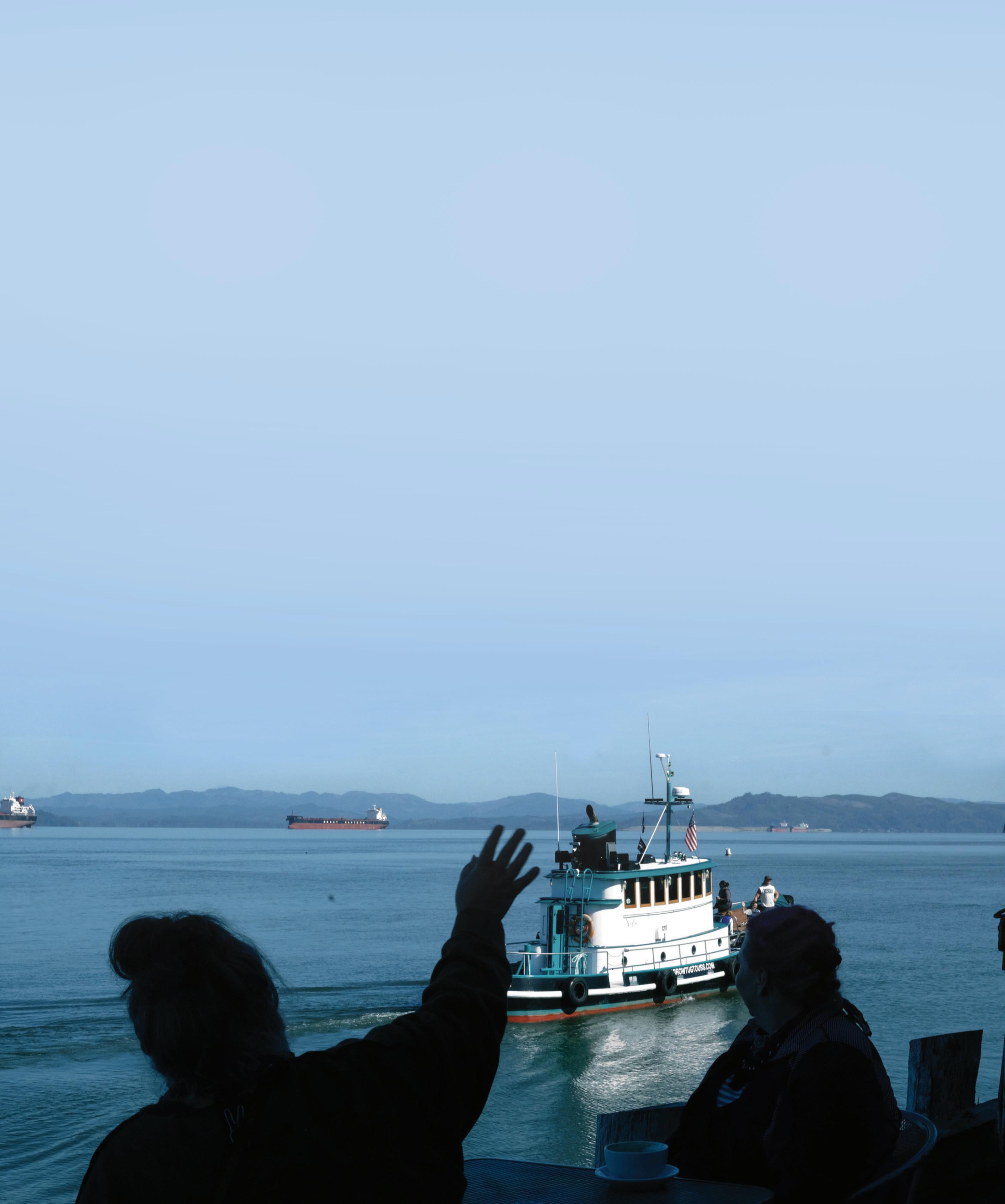
The Arrow No. 2’s relatively diminutive size belies a turbo-powered diesel heart and a 48-inch propeller that can swing a ship at anchorage.
Maneuverability has to be the hallmark of a boat whose core duty involves performing that heart-stopping approach upon towering tankers — something like a bird landing on the back of a running rhinoceros.
Arrow No. 2’s service as a pilot boat spanned 50 years, beginning in 1962, shuttling tens of thousands of pilot transfers. Schacher thinks that because of its long lineage (and its good looks) Arrow No. 2 may be one of the region’s most photographed boats.
He made one change after taking ownership — adding 10 feet to the back of the house for a bathroom. Oh, and he added a few old iron steps that were once used inside the Astoria Column.
“I just saw ‘em out in the blackberry bushes,” he said.
And just four years before the boat was retired, it got that new engine. With a lot of miles left to burn, and a lot of space between now and then, Schacher is filling the hours the best he knows how, by running the boat and working the river.
On this mild evening, his wife, Jennette, and son, Paul, were along for the ride. Jennette was eager to try out a new camera, but by the end of the boat ride it was Paul who had caught the shutterbug.
And there was plenty to photograph as the boat wiggled its way from Pier 39 down through the West Mooring Basin — serenaded on both sides by barking and braying sea lions.
As Arrow No. 2 slipped down the shoreline, past the old net shed, Big Red, beyond pilings and abandoned docks, Astoria’s connection to
the river became clearer, that without it the town couldn’t exist, wouldn’t have existed.
Pier 39 is a relic of that bustling waterfront, where dozens of canneries once thrived. As Arrow No. 2 approached the Astoria Bridge, Schacher pointed out where Bumble Bee Seafoods’ main processing plant once stretched proudly along the shoreline.
All that remains are pilings and a cement foundation where one of the old cannery’s furnaces once glowed hot, and possibly where the fire started that claimed the cannery in the late 1990s.
The tour moved on toward Astoria’s last remaining seafood processing plants, near Clatsop Spit. But on Sunday night, the fishing boats that sometimes gather by the dozens were nowhere to be seen.
No problem, Schacher’s guests were still wide-eyed and beaming as the boat glided back beneath the arching Astoria Bridge as the saturated shades of the day’s waning light played among the river and sky.
After that, sailing between the behemoth ships anchored off the channel and rounding the rugged and densely forested Tongue Point, the sky darkened, and Arrow No. 2 floated back toward Pier 39, where it was soon tied up and tucked in. The evening’s first stars had appeared. Amidst fading chatter and fleeting hugs, the tour had ended.
As the winter months drew near, Schacher knew he’d be getting fewer calls. On paper, he may be right. This might be the dumbest thing in the world. Like trying to sustain life and myth in an old building that a huge river and hungry winds are always trying to swallow.
But still, Schacher insisted — it’s somehow worth trying.
History & Heritage
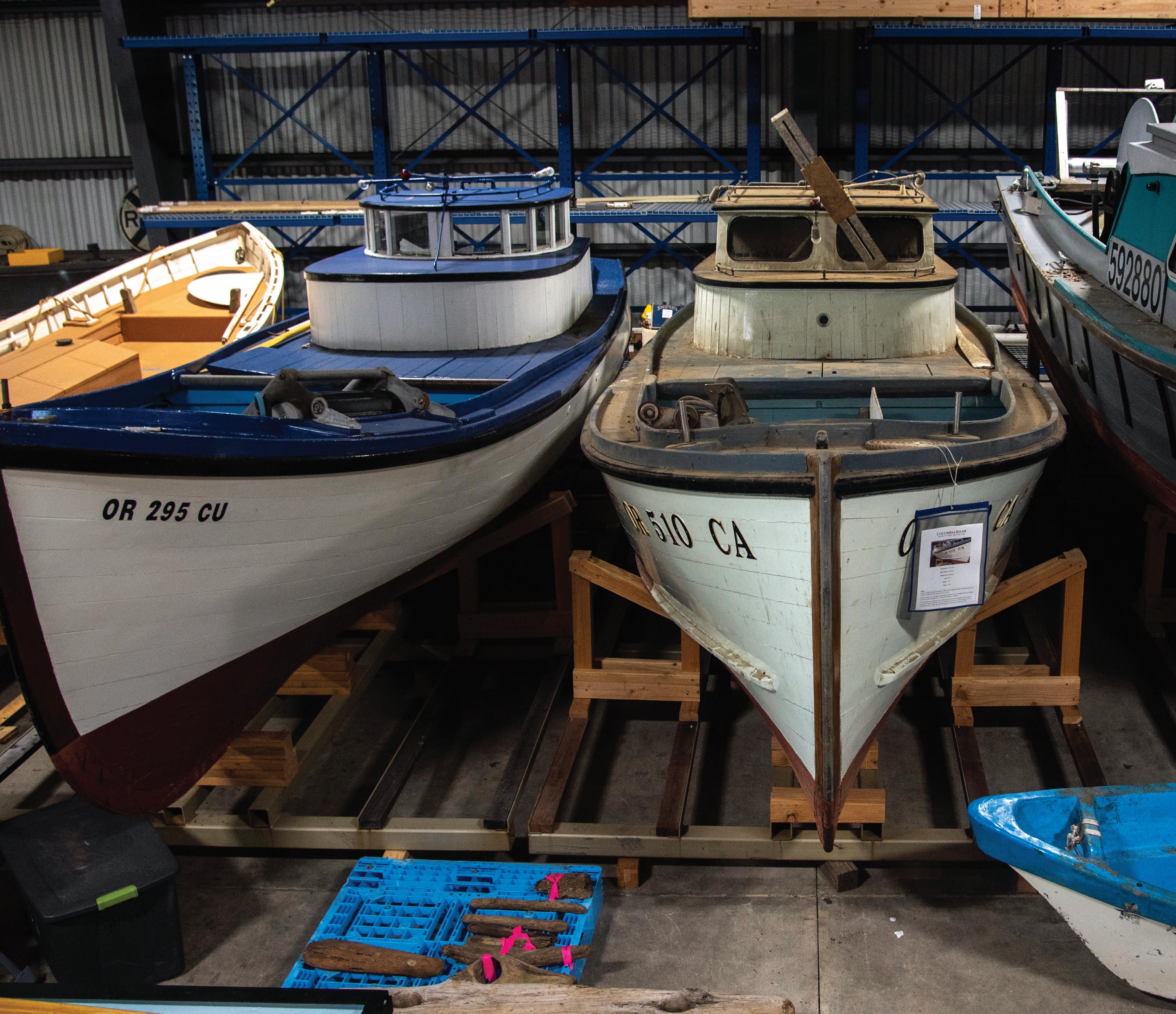
Future displays
Dozens of vessels now in storage at the Columbia River Maritime Museum's warehouse are slated for Mariners Hall, including a 60-foot racer shell.
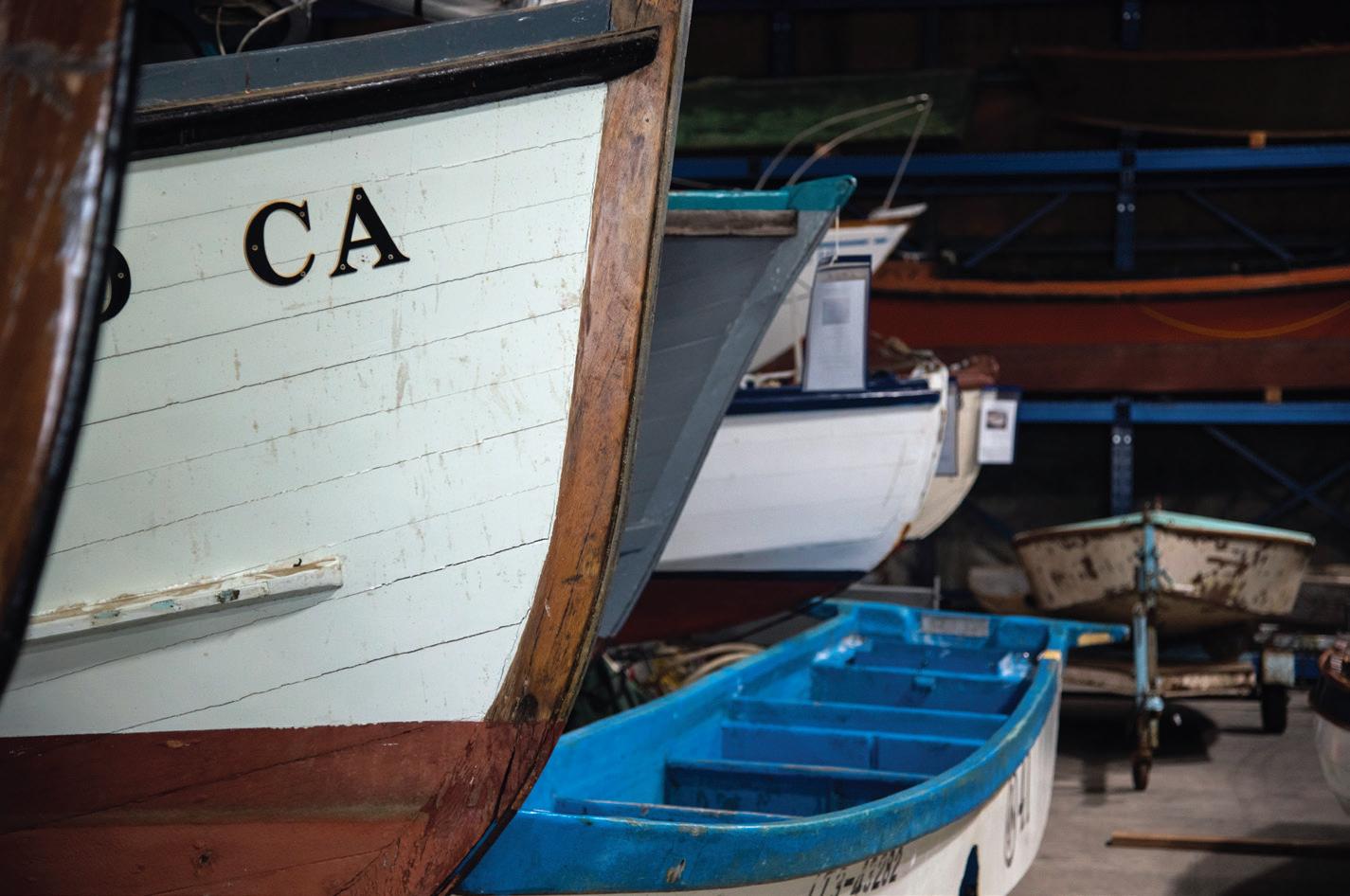
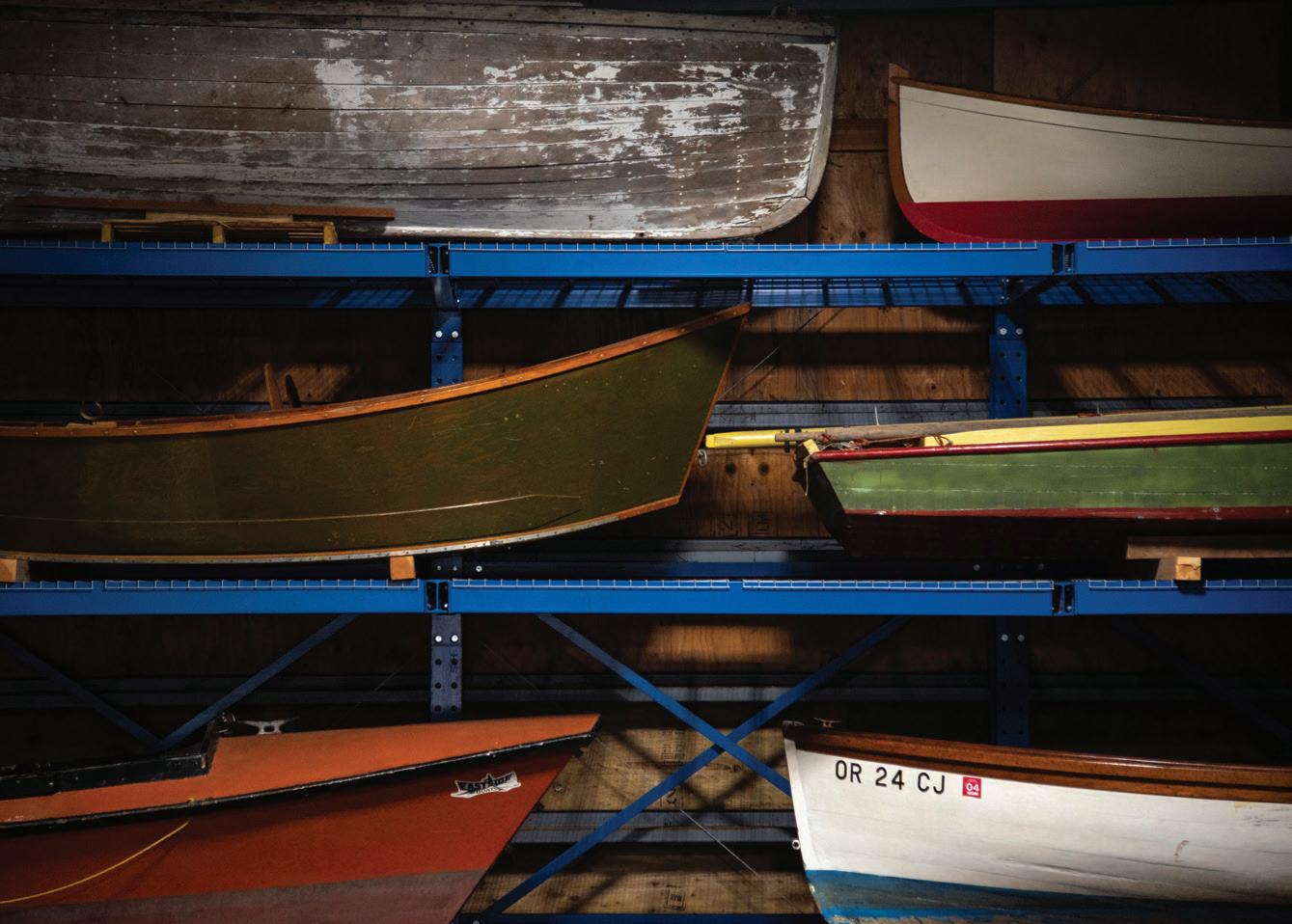
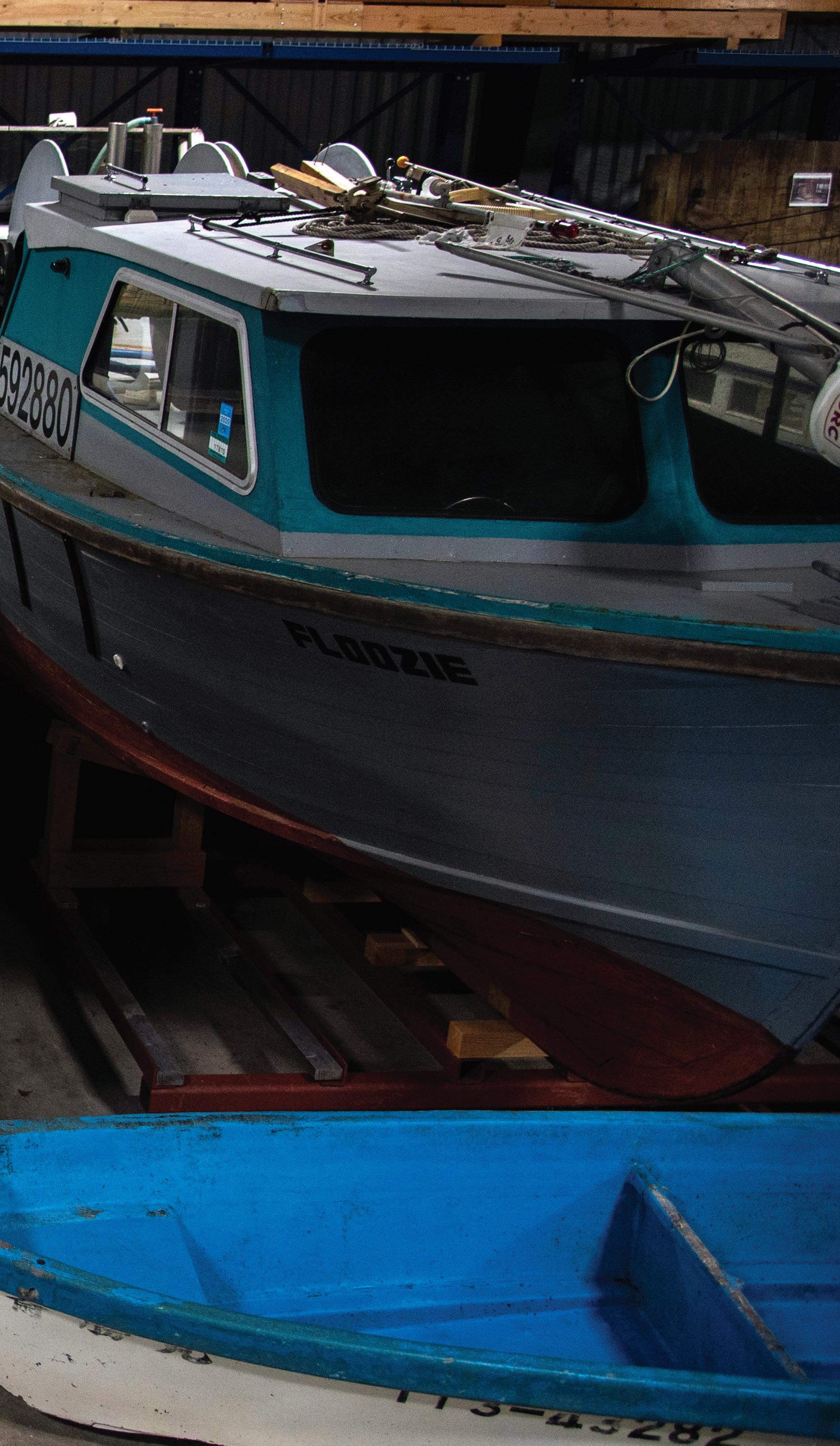
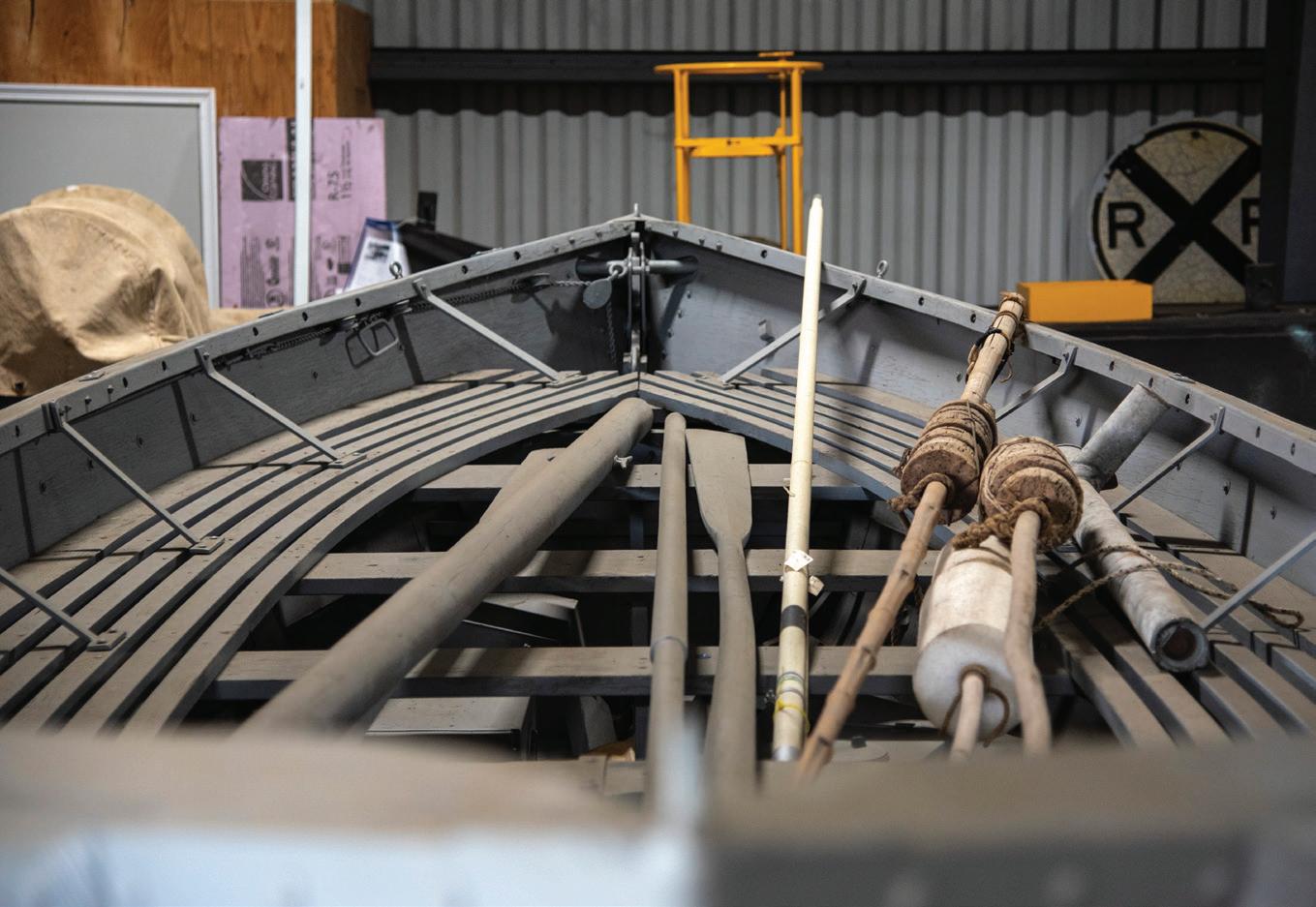
Seafaring stories
Museum looks to include more perspectives
Words: Lissa Brewer • Images: Shanna Madison
Jeff Smith answers many calls from owners of historic boats interested in adding to the Columbia River Maritime Museum’s collection. But as the museum’s curator, he knows only a few will make it into exhibit halls.
He’s looking forward to seeing more on display in the next few years.
Many vessels are now in storage, like the Merrimac, a wooden yacht constructed in 1938 by Astoria Marine Construction Co., which will undergo further restoration before moving into Mariners Hall, a new addition to the museum set to break ground in September and open in the summer of 2026.
The new building will add more than 24,000 square feet of exhibit and education space to the museum. That means dozens of boats and other artifacts will move from storage onto public display.
“ It’s about the human experience, the mariner, hence the name Mariners Hall, just to show we’re really focused on the people that built these boats and other craft, that operated them, that maintained them, how it impacted our community. “
Bruce Jones
Columbia River Maritime Museum executive director
History & Heritage
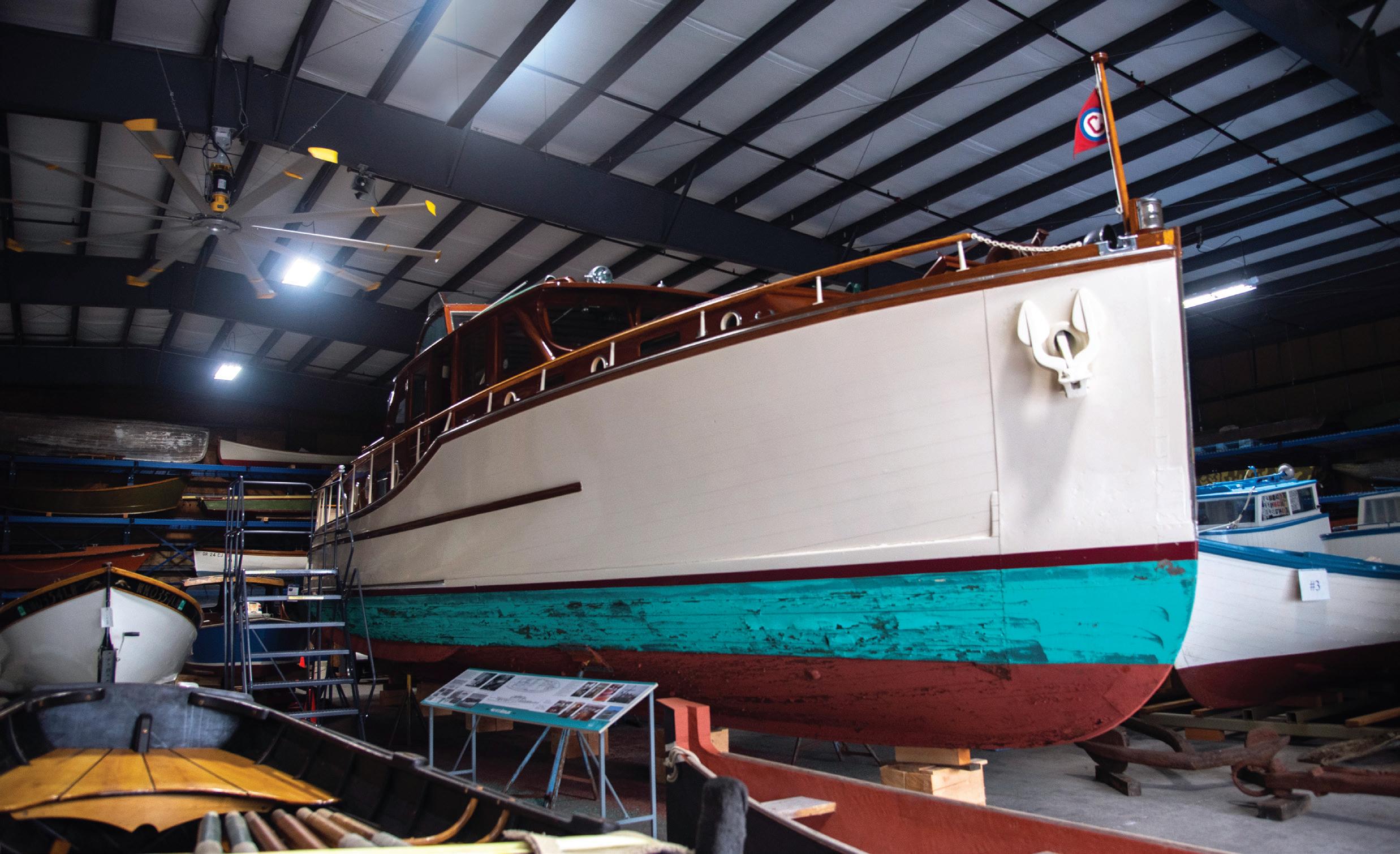
Merrimac
'It’s about the human experience'
Museum leaders see the expansion as a chance to broaden their focus on the human side of the Columbia River’s maritime culture.
“It’s about the human experience, the mariner, hence the name Mariners Hall, just to show we’re really focused on the people that built these boats and other craft, that operated them, that maintained them, how it impacted our community,” said Bruce Jones, the museum’s executive director.
Jones, a former commander of U.S. Coast Guard Sector Columbia River and a former Astoria mayor, stepped into the position last year after serving as deputy director. He’s the sixth to hold the title since the museum was founded by illustrator and collector Rolf Klep in 1962.
With Mariners Hall, Jones sees an opportunity to build on a long-standing vision, to add to storytelling in place and touch on more elements of maritime life, like recreation, logging and aviation.
Exhibits planned for the wood-framed structure include a 60-foot racing shell built by George Pocock, a salmon tender built by Wilson
Brothers in Astoria and a log bronc, which was used to corral lumber for transport along the river.
Another area of focus will be aviation, with plans to suspend a Coast Guard search and rescue helicopter 15 feet above the ground floor.
“Aviation is a huge part of the maritime world,” Jones said. “During World War II, the Navy had a seaplane base at Tongue Point. Of course, the Coast Guard came here with helicopters in 1962 and has been here ever since, and now the bar pilots operate a helicopter.”
Visitors will get an eye-level view of the helicopter from a mezzanine deck, where they’ll also get an aerial view of boats on the ground level.
“When you’re on the mezzanine, you’ll be able to look right into the cabin of the helicopter. You’ll see the pilot, and see the hoist operator and the rescue swimmer. They’ll all be sculpted figures,” Jones said.
A similar concept is planned for the boathouse, an area at the southwest corner of Mariners Hall that will fit floating docks on two levels. Those will be arranged for views above and below the waterline.
“You can look up and see the bottoms of the boats from the ground floor, and then when you get up on the second floor, you’ll be looking at them straight on,” Jones said.
Some exhibits will be interactive, like the 52-foot motor lifeboat Triumph II, which was a lifeline for fishermen at Point Adams and Cape Disappointment for more than 60 years.
“We’re going to let people get on the back of the Triumph, on the stern, and when they look behind the boat, they’re going to see a big wraparound monitor with a video of towing a disabled boat in heavy seas, so you’ll get a sense of motion,” Jones said.
Another restoration project underway is on a first-order Fresnel lens that once beamed from Cape Mendocino Lighthouse in Humboldt County, California. In recent years, the lens was placed in storage by the Coast Guard after it spent decades housed in a replica at the county fairgrounds in Ferndale, California.
“It’ll be restored in pieces in the warehouse and eventually put back together, reassembled one piece at a time,” Jones said. “The few places you can go to see a first-order Fresnel lens on display, they’re really breathtaking.”
112 Our Coast Magazine 2024
The Merrimac, a 45-foot wooden yacht, will be a centerpiece of Mariners Hall.

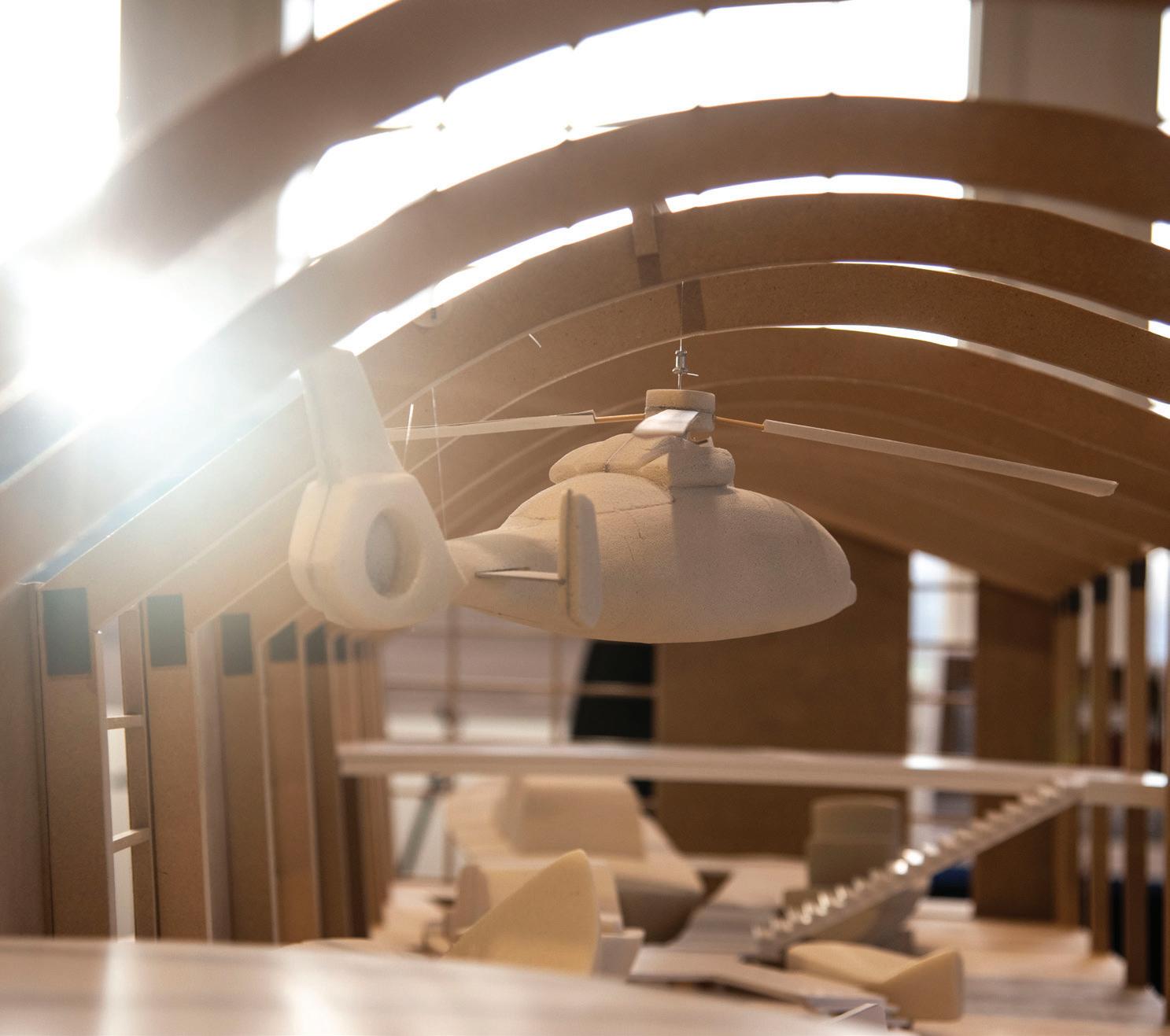
More stories to tell
In addition to the exhibits, plans for the second exhibit hall include space for indoor and outdoor education programs.
“This has been a long-awaited opportunity to actually build a classroom,” Jones said. The museum’s education programming, he added, reaches more than 20,000 people each year, including thousands of local students who are learning about the Columbia River.
It’s a subject so vast that even with a new building, Jones said, “there’s still lots of stories we won’t be telling.”
Some of those could appear sooner as temporary and semipermanent displays.
In September, the museum will close two exhibits along the south wall of the main building to open the Gallery of Opportunity, a corridor that will eventually connect the main museum with Mariners Hall.
The gallery could provide space to rotate exhibits and stand-alone artifacts.
“The wall separating this gallery from the other galleries is about 3 feet deep, and we’ll have built-in casework, so we’ll be able to feature isolated items along that wall and tell more specific stories about specific objects,” Smith said. “Sometimes you have an object that has got a terrific story, and it’s just one object.”
A permanent exhibit in the gallery, created in collaboration with the Chinook Indian Nation, will welcome visitors to Chinook land and acknowledge other Indigenous tribes represented in the museum.
DiscoverOurCoast.com 113
Mariners Hall
A model of the new building shows a Coast Guard search and rescue helicopter suspended above the ground floor.
History & Heritage
Places of cedar and sea
Much of that representation will appear in Cedar and Sea, a permanent exhibit that will open in September.
Smith described the exhibit’s scope, which focuses on the maritime culture of Indigenous groups ranging from Alaska to southern Oregon, as reaching “the Northwest Coast wherever the cedar grew.”
The cedar tree has traditionally been used to construct canoes, longhouses and tools. “It provided clothing, it provided housing and transportation,” Smith said. “That developed in this specific region because that’s where these trees grew.”
The exhibit begins with a forest scene and moves through creations made from cedar.
“There’ll be sounds and a panoramic photo that shows the forest and a simulated tree that you walk past and it talks about the significance of the cedar tree to Indigenous cultures,” Smith explained.
From there, three walls will be dedicated to showing materials like shells, bones, bark and plants often harvested near the coast.
Displays of early tools and handcrafted items will illustrate ways of working with cedar and how methods have adapted over time. A half-dozen monitors will introduce contemporary artisans, including a woman harvesting cedar bark.
“We talk about the wherefores and whys and the material and how it’s done, and then there’s a contemporary story that features a contemporary living artist who is practicing those traditions today,” Smith said.
One of those artists is Joe Martin, a Tofino, British Columbia, carver whose Nuu-chah-nulth-style canoe is planned as a centerpiece of Cedar and Sea.
“There’s two large cases in the middle, flanking the canoe, that will feature all these different art forms and cultural materials,” Smith said.
Other displays will feature weaving, knife-making and carving processes. One will introduce David Boxley, a Tsimshian carver living in Seattle, who makes traditional cedar bentwood boxes together with his son.
The conclusion of the exhibit will show historic and contemporary Indigenous methods of fishing.
By doing so, it’s filling in a gap, one that the museum hopes to continue to close as it works with the Chinook Indian Nation on an exhibit for Mariners Hall, which could feature an oceangoing canoe.
“We tell a good story about the immigrants that came here and fished the river and the oceans, but we really haven’t done justice to the subject of the Indigenous people who were here and developed a lot of these things long before Europeans came,” Smith said.
“We’re hoping that our visitors will gain some insights.”
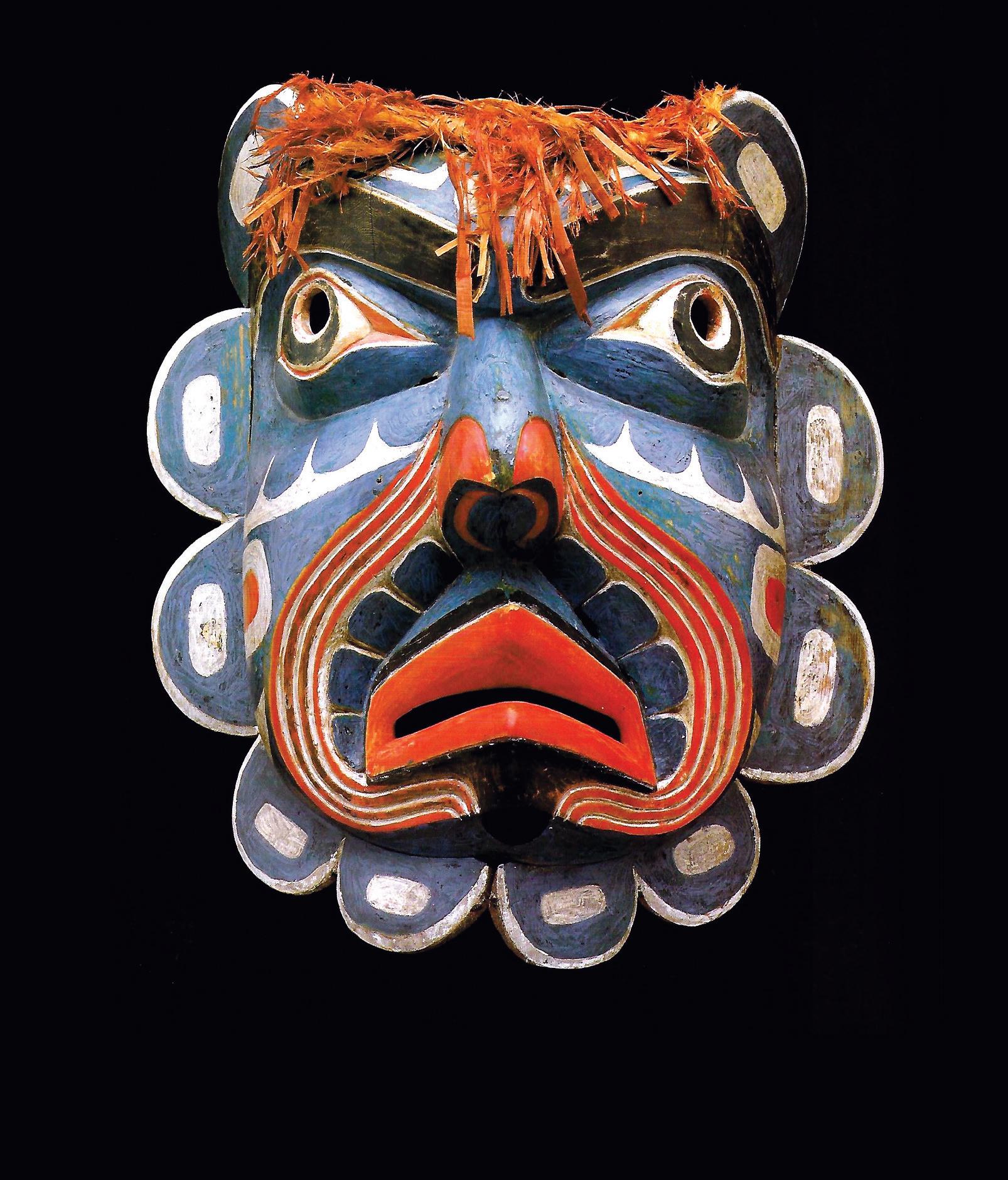
Cedar and Sea
In September, the museum will open an exhibit on Indigenous maritime culture of the Northwest. Images courtesy Seattle Art Museum
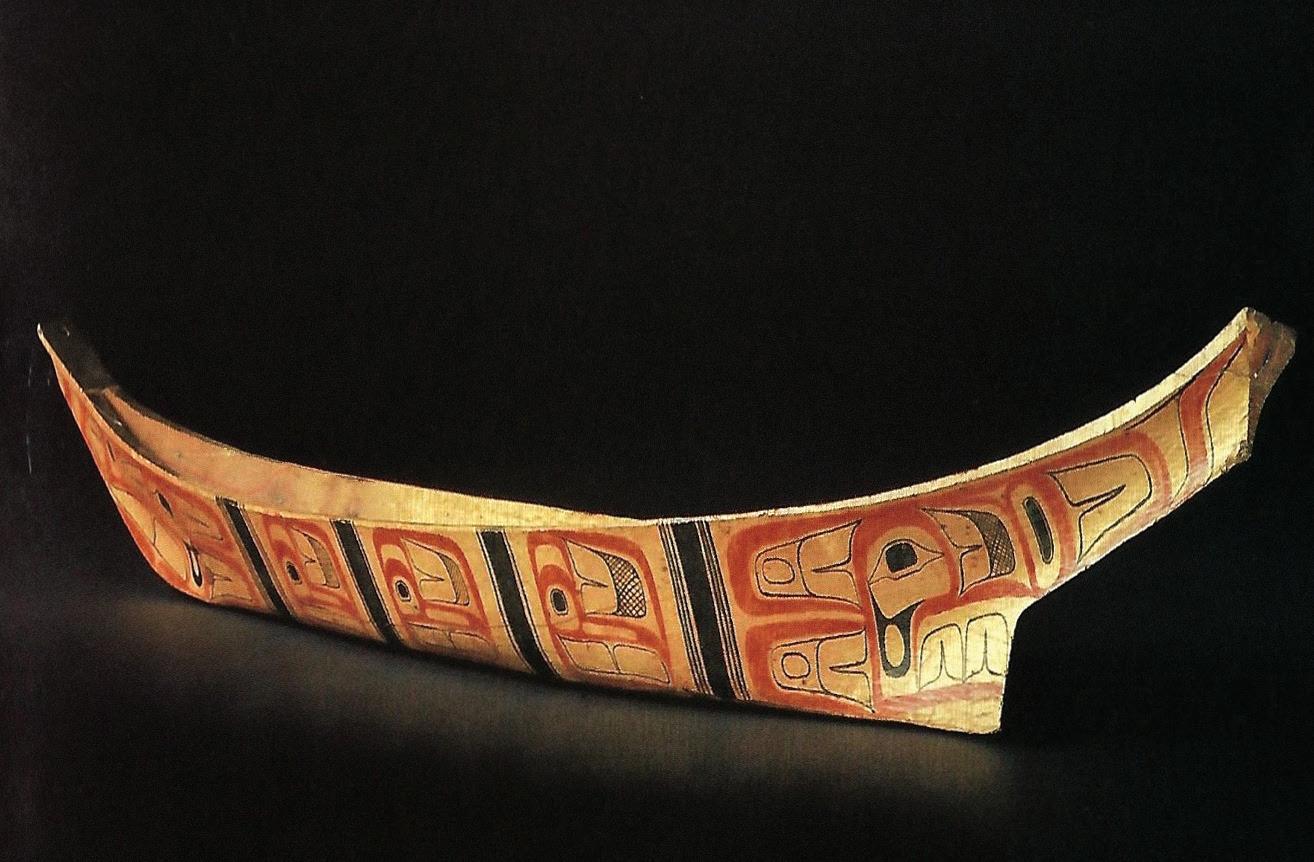
114 Our Coast Magazine 2024
Stories from the past
Three women who shaped local history on the North Coast
Words: Marianne Monson
What was life like for women living on the North Coast centuries ago?
In pictures that wind up the sides of the Astoria Column are many men who have inhabited and shaped the ColumbiaPacific region — familiar names like Capt. Robert Gray and explorers of the Corps of Discovery.
But the stories of women who have made their homes here and impacted historic events, though often more difficult to reconstruct, are also essential pieces of the region’s heritage. Here are a few of their stories.
Mary Edwards Gerritse
Born in 1872, Mary Edwards, later Mary Gerritse, moved west with her family as a child to settle in the Willamette Valley before homesteading near Manzanita.
The family rented a small house with a cookstove while building a cabin. Settlers depended on supplies that came from Portland by river to Astoria, then to Nehalem. During bad weather, the supply boat couldn’t travel, so neighbors shared necessities until new supplies arrived.
As a teenager, Gerritse was fond of reading. Her favorite authors included Charles Dickens and Charlotte Bronte. When the family ran short on coal oil, she cut kindling into small pieces to make a hearth light to read by.
Her father built a one-room cabin that would later receive additional bedrooms and a second story. To finance the homestead, he often had to work additional jobs. When he kept Cape Meares Lighthouse for some months, Gerritse went too, and when he worked at a dairy farm, she milked cows and made butter.
She walked for miles to reach a log schoolhouse, crossing dunes covered with manzanitas and huckleberries. Like most children at the school, Gerritse finished her studies after seventh grade.
She met a sailor from Holland named John Gerritse, who had sailed around the world but, having decided he wanted to stay in the U.S., jumped ship in Astoria.
John took on a mail route from Seaside to Tillamook, a trip that took him a week by horseback. The couple married in November 1888. Mary wore a dark green velveteen dress she made for the occasion.
On a land claim near the Nehalem River, the couple built a cabin. When it caught fire, they returned to Mary’s parents’ home, where their first daughter was born a few months later.
When the baby was a month old, they returned to the claim, but John had to leave for days at a time to deliver the mail. They got two dogs to protect Mary, who was alone with the baby, and a mile away from their closest neighbor.
At first, she was terrified to be in the woods alone, but grew to love it.
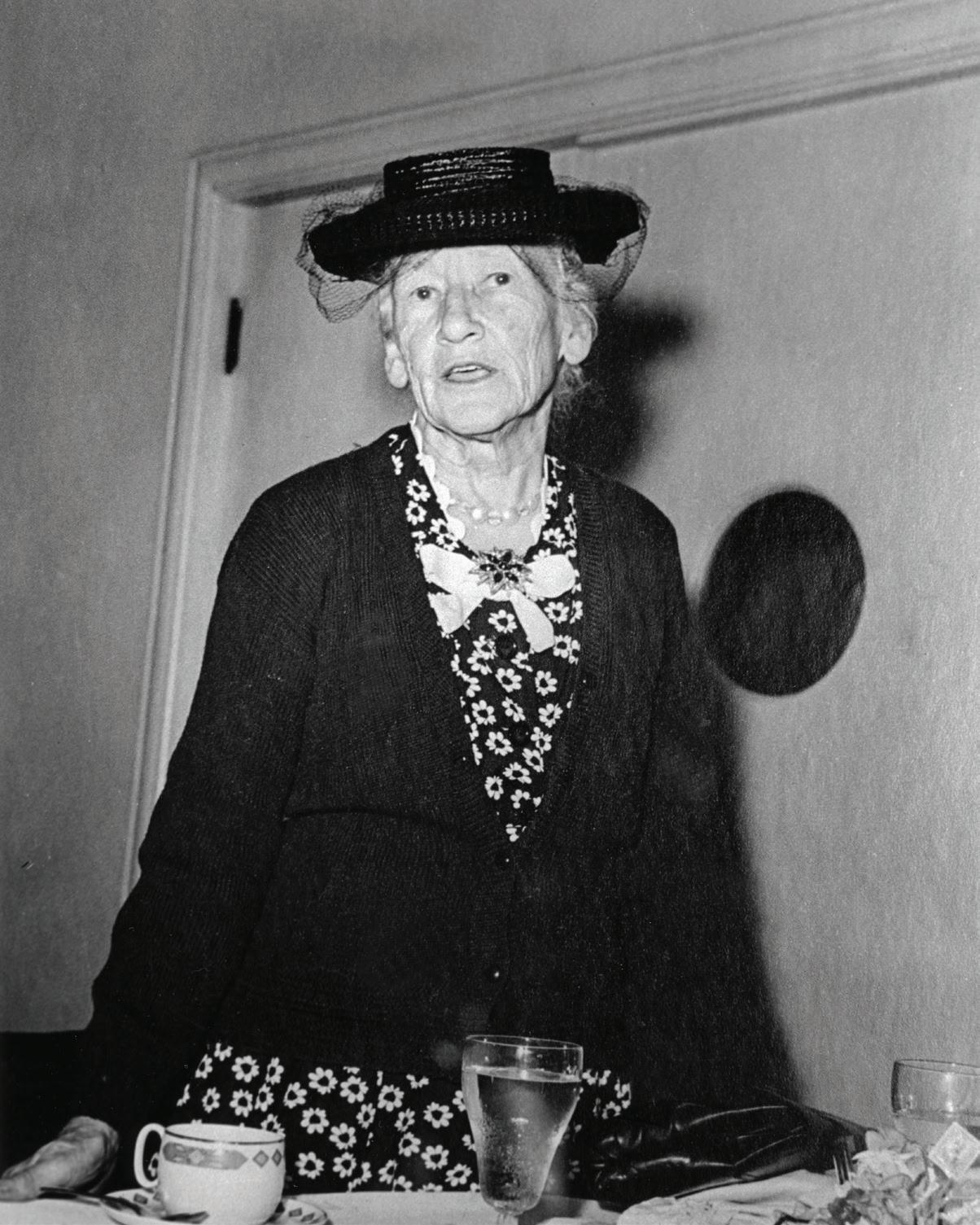
An encounter with a wildcat prompted her to learn how to shoot a gun. Though the first time she closed her eyes before pulling the trigger, eventually she became an excellent shot.
The family grew, and the Gerritses eventually moved to another homestead near Manzanita so that their children could attend school. As John became busy with farm work, he considered hiring a man to take over his mail route. Though there were few female postal carriers at the time, Mary wanted to try it.
Though the treacherous route involved scaling Neah-Kah-Nie Mountain, Mary handled the service regularly between 1897 and 1902. In some places, the side of the trail fell 400 feet down to the ocean. She traveled it on horseback in all weather.
In 1904, she began carrying mail between Seaside and Cannon Beach, where she and John eventually moved. There, the couple ran a small dairy and Mary helped to found the Cannon Beach Library. Mary died in 1956.
DiscoverOurCoast.com 115
Mary Edwards Gerritse
Image courtesy of Cannon Beach History Center & Museum
Inez Eugenia Adams Parker
Born in 1845 in Illinois, Inez Eugenia Adams, later Parker, was a young child when her family crossed the plains by covered wagon. Her family settled in Oregon City, where her father began publishing the Oregon Argus.
By age 11, she began setting type for the paper, a laborious job that involved selecting each letter and arranging it backward and upside down in a type stick. Typesetting was a male-dominated industry, and as a child, she was among the first female typesetters.
The newspaper had subscribers all over the country, and Abraham Lincoln enjoyed the Oregon Argus’ editorials long before he ran for office. The two began corresponding, and President Lincoln later appointed Parker’s father a position as a customs official in Astoria, where the family moved in 1861.
One of her father’s employees at the customs office was a man named Wilder Parker. The two courted and formed a marriage that allowed an unusual amount of autonomy for norms at the time.
Wilder Parker was a well-educated man from Vermont, who was an early participant in California’s gold rush before heading north with three of his brothers. He started a sawmill in Astoria and became deeply involved in civic affairs.
After their marriage, Inez and Wilder Parker partnered in several business ventures that listed both of their names on the deeds. They ran a sawmill in Astoria and built several buildings in town.
The couple also took over the publication of the Astoria Marine Gazette for two years, which notably argued in favor of Black suffrage in 1865.
As the town of Astoria grew, water access became a challenge. Early settlers had drawn water from many small creeks running down from the hills, but as the population increased, residents at the highest points had more access to clean water.
The idea of diverting springs into a water reservoir gained hold, and in 1876, Inez and Wilder helped design and finish the project. They helped to form the Astoria Water Works, which would later be sold to the city.
Honored as a pioneer in creating the Astoria water system, Wilder’s name can still be seen engraved in the stone building at the entrance of the water reservoir.
He served as postmaster, oversaw the building of a railroad between Astoria and Seaside, and became Astoria’s fifth mayor.
In 1873, the couple built a three-story brick hotel with 80 rooms, a dining room, parlors and baths named The Parker House Hotel, which remained family-owned until the 1930s.
The couple was passionate about education and helped found McClure School in Astoria. They both served on the school board, with Inez serving as the first female school board member.
Though the couple didn’t have children of their own, Inez’s cousin, Harriet Inez Dunning, was orphaned in 1870 in Montana Territory, and the couple adopted her and brought her to Astoria.
Abigail Scott Duniway, a central driver in the fight for Oregon suffrage, began publishing The New Northwest, a pro-suffrage newspaper, in the 1870s, and many of her editorials were reprinted locally.
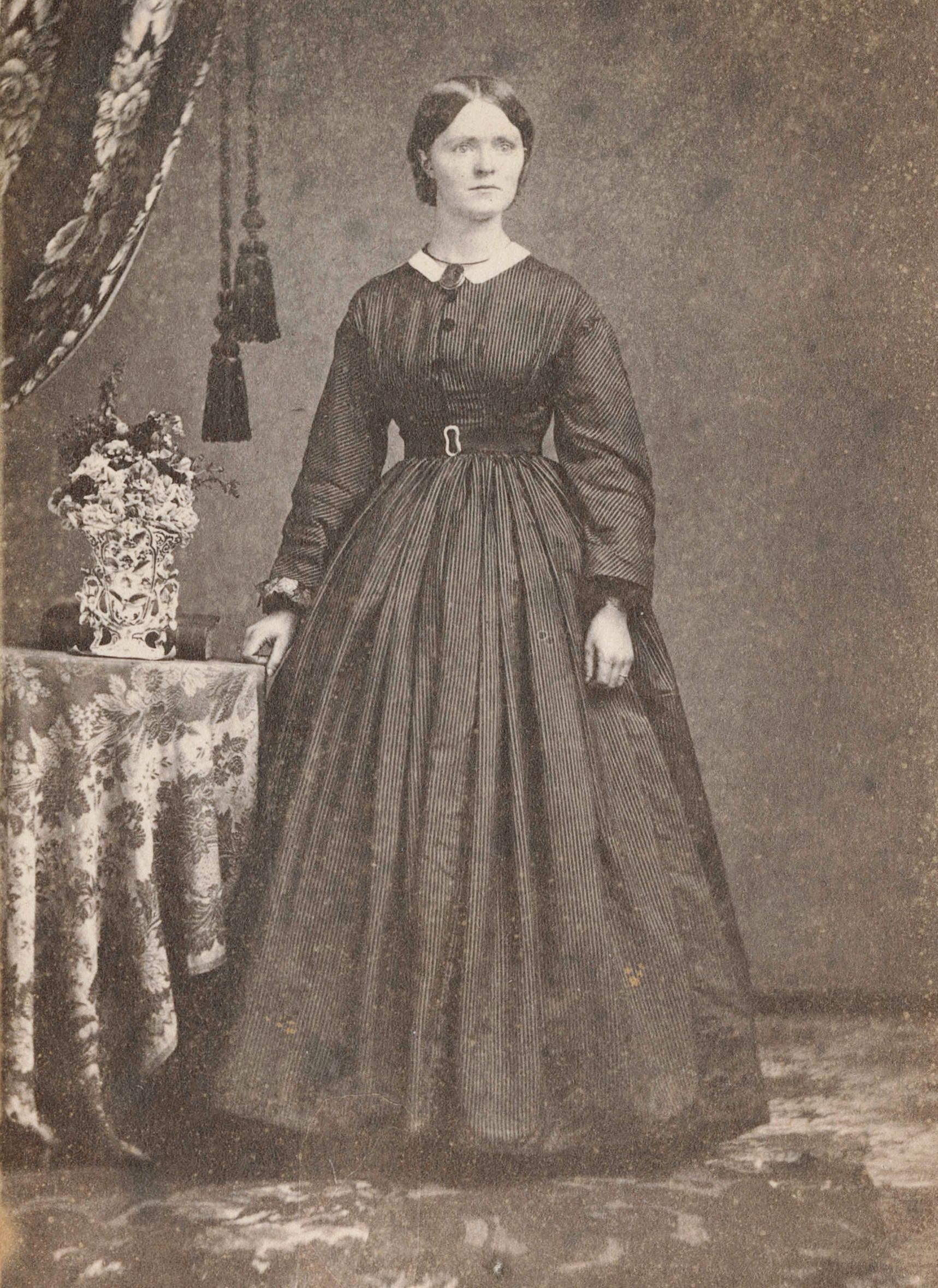
Inez and Wilder were supporters of the suffrage movement and led early efforts in Astoria. The first meeting of the Clatsop County Equal Rights Association was held at the Astoria Courthouse in May of 1874, with both in attendance.
In 1896, Scott Duniway invited Parker’s close Astorian friend, Dr. Bethenia Owens-Adair — one of Oregon’s first women doctors with a medical degree — to speak alongside Susan B. Anthony at the First Oregon Congress of Women.
Despite determined efforts, Clatsop County and the state faced staunch opposition to women’s suffrage. The state voted six times on the issue, more than any other state, before it finally passed in 1912.
Inez was one of the few founders of the Clatsop County Equal Rights Association who would live to see women receive the right to vote in Oregon in 1912 and the adoption of the 19th Amendment in 1920.
After Wilder died, Inez spent a few years in California. In 1907, she lived with her sister in Portland. Years later, before she died in 1933, she came back to Seaside to live her last years with her daughter and granddaughter.
116 Our Coast Magazine 2024 History & Heritage
Inez Adams Parker
Image courtesy of Oregon Historical Society
Celiast Coboway Smith
Growing up on the ancestral homeland of the Clatsop people, Celiast Coboway, later Celiast Smith, lived with her family in a cedar plank house, wore clothing made from cedar bark and learned myths and spiritual stories.
In 1805, the Corps of Discovery arrived. Chief Coboway, Smith’s father, visited Fort Clatsop and traded with the expedition members.
The next spring, the Corps departed in a stolen Clatsop canoe, and the fort and its furnishings were left to Chief Coboway, who used it for winter hunting. His daughter and her sisters played in the fort as children, hardly imagining how much the arrival of the explorers would change the way of life for their people.
In 1811, employees of John Jacob Astor’s Pacific Fur Co. arrived on the ship Tonquin and built Fort Astoria. In their teenage years, Smith and her sisters each married men stationed there. They resettled around Fort Vancouver and in the Willamette Valley, where they raised their children.
Smith remained close to her two sisters throughout her life. Her nephew attended school at Fort Vancouver, where he excelled at languages, including Clatsop, Tillamook, Kalapuya and Spokane.
Smith, who also used the Anglicized name Helen, married a baker. When she discovered her husband had another wife living in Canada, she left him for a schoolteacher at the fort named Solomon Smith.
Outbreaks of illnesses at Fort Vancouver caused the sisters to leave, and the couple decided to move to a farm. There, they opened a schoolhouse and later established a waterpowered sawmill.
In 1840, they returned to the Oregon Coast, where the Clatsop people welcomed them home with a ceremony.
Being a white American, Solomon was eligible to receive a land claim, so the family settled near Seaside. He participated in the vote to form the Provisional Government of Oregon and later represented the North Coast in the Oregon legislature.
The years Celiast had been gone were devastating for the Clatsop people. They had suffered smallpox epidemics and seen a village burned.
Protected to some extent because of her marriage to a white man, Celiast continued to operate a store and sawmill with her husband along the Lewis and Clark River. She also ran a subscription school for a time. She died in 1891 and was buried with her husband in Warrenton.
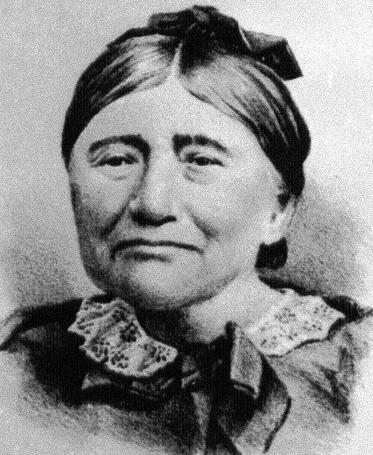
Celiast Coboway Smith operated a store and sawmill along the Lewis and Clark River and also ran a subscription school.
Their son, Silas Bryant Smith, became a lawyer and the first Native member of the Oregon Historical Society. He conducted oral interviews with Clatsop elders that were essential to the preservation of sites within Lewis and Clark National Historical Park and fought for the preservation of local tribal heritage. His descendants continue that legacy.
One descendant, Charlotte Basch, now lives in Washington state and was instrumental in remaking a Fort Clatsop Visitor Center video to more accurately portray the Clatsop-Nehalem tribes’ story.
Basch portrayed her ancestor in the film and has also served as a model for a 60-footlong mural in Seaside that depicts scenes of Native life.
DiscoverOurCoast.com 117
Celiast Coboway Smith
Image courtesy of Seaside Museum & Historical Society
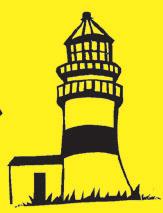


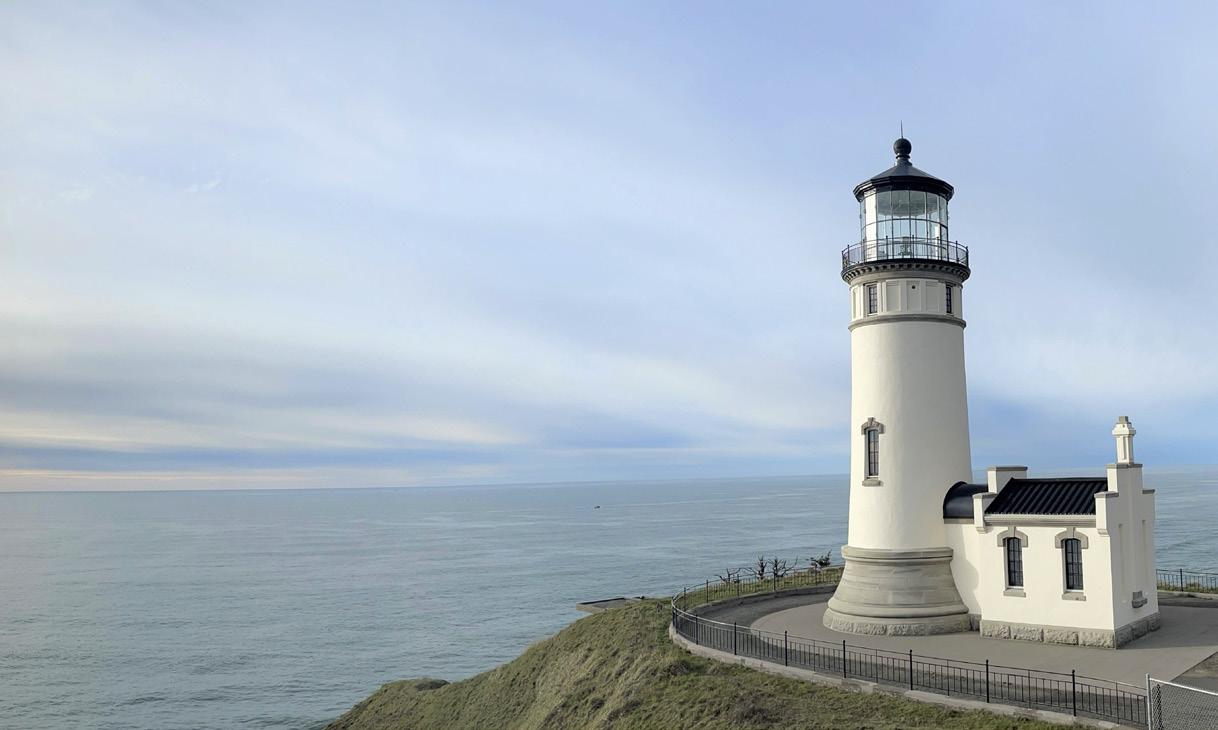


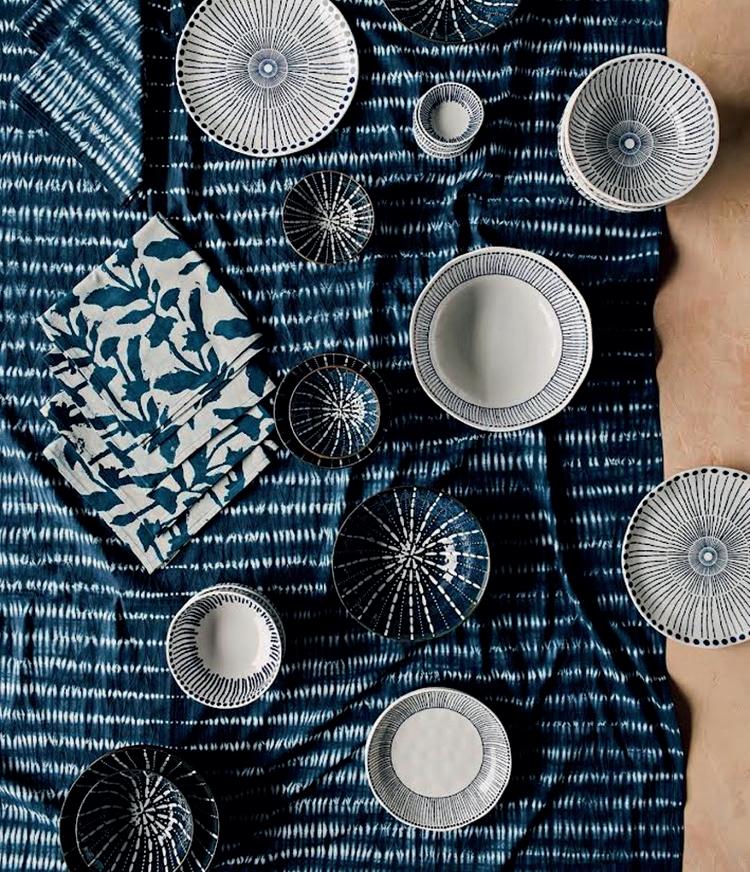
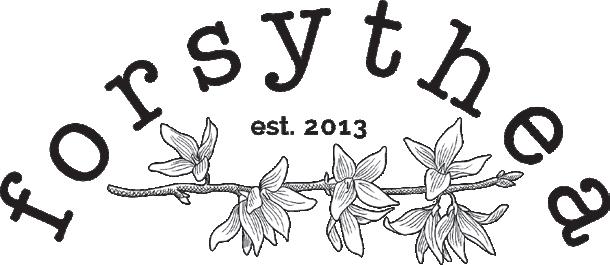
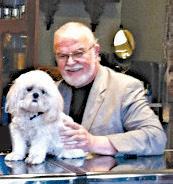

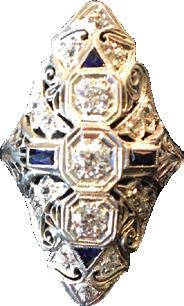


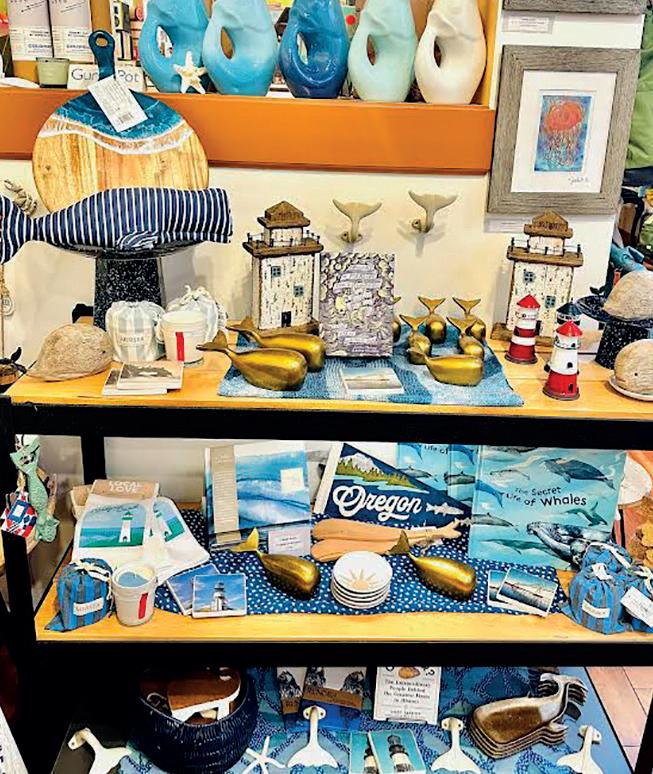
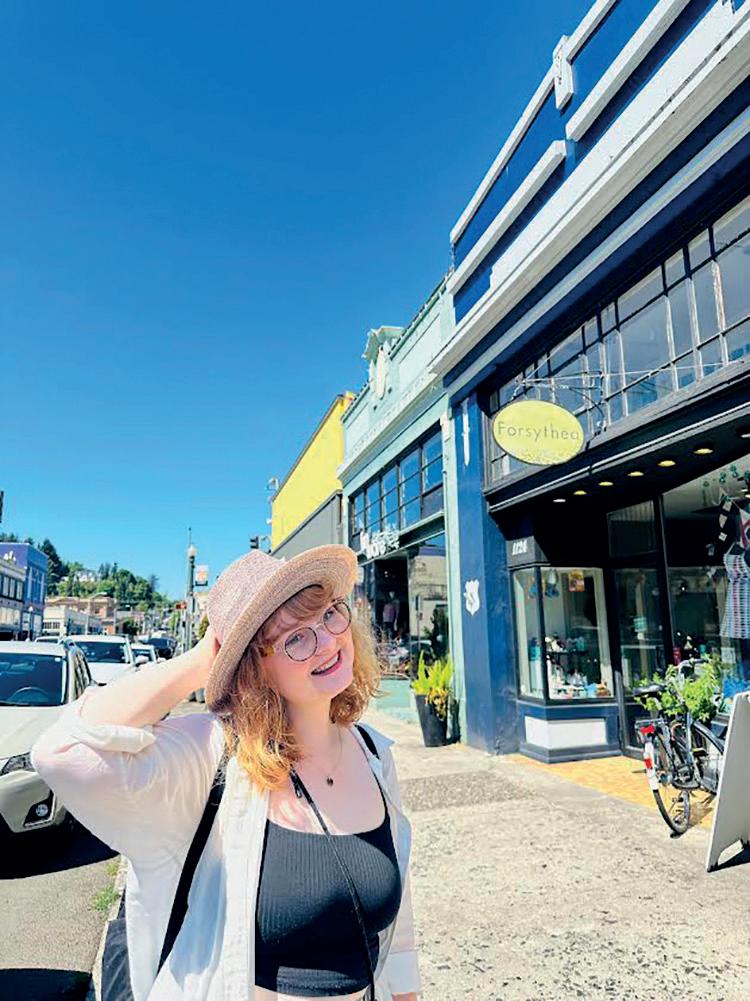

118 Our Coast Magazine 2024 Long Beach • Raymond • Aberdeen • Elma • Montesano www.DENNISCOMPANY.com Beach Gear | Apparel & Footwear | Sporting Goods Grills & BBQ Supplies | Tools | Pet Food & Supplies YOUR HOME & VACATION CONVENIENCE STORE Curated goods featuring local & PNW artisans Fun items for your trip to the Oregon Coast Gifts • Home • Kids • Jewelry • Bags 1124 Commercial St. Astoria • Open every day INVEST IN YOUR DREAMS www.lighthouseproperty.com LIGHTHOUSE REALTY Top Prices for Gold & Silver Downtown Astoria on 12th St. 503-325-7600 Wed-Sun A Value Seeker’s Paradise FREE APPRAISALS -no appointment necessary Estate Jewelry, Diamonds,Art & Antiques
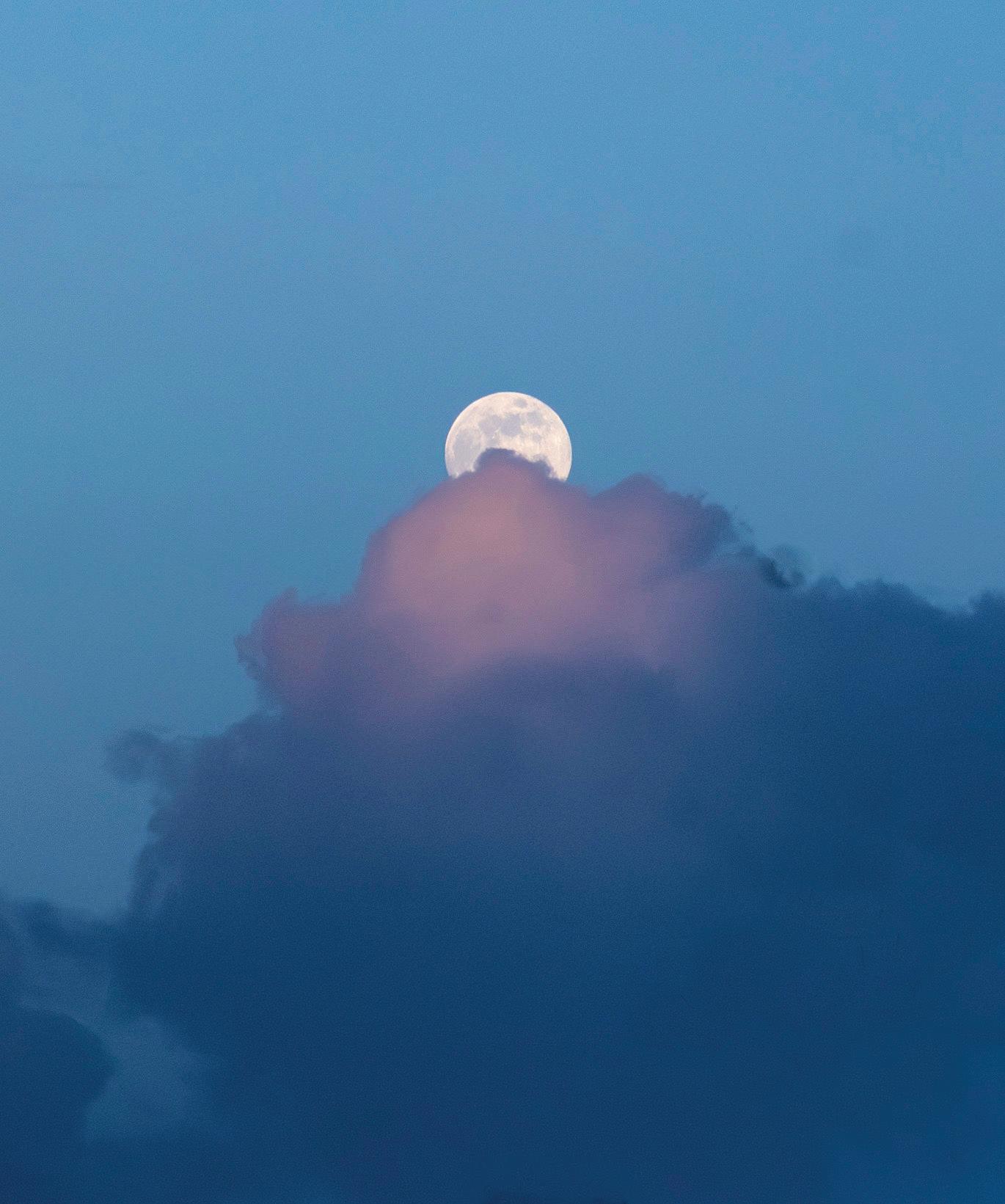
8:05 p.m.
The moon rises over Astoria.
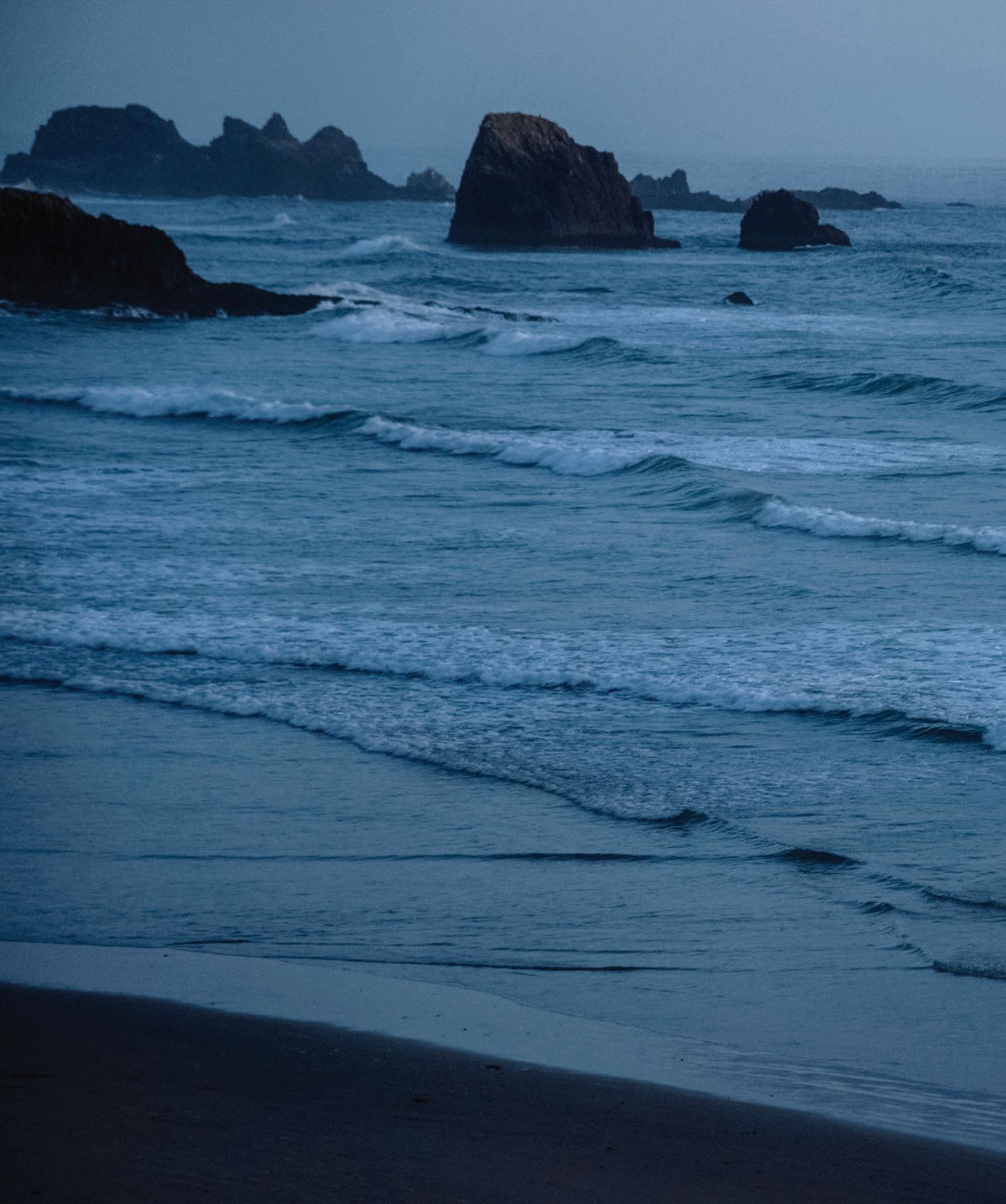
8:15 p.m.
Two surfers exit the water at dusk near Cannon Beach.

Coastal Life
Photo essay: Birds of Our Coast My Coast
My Coast
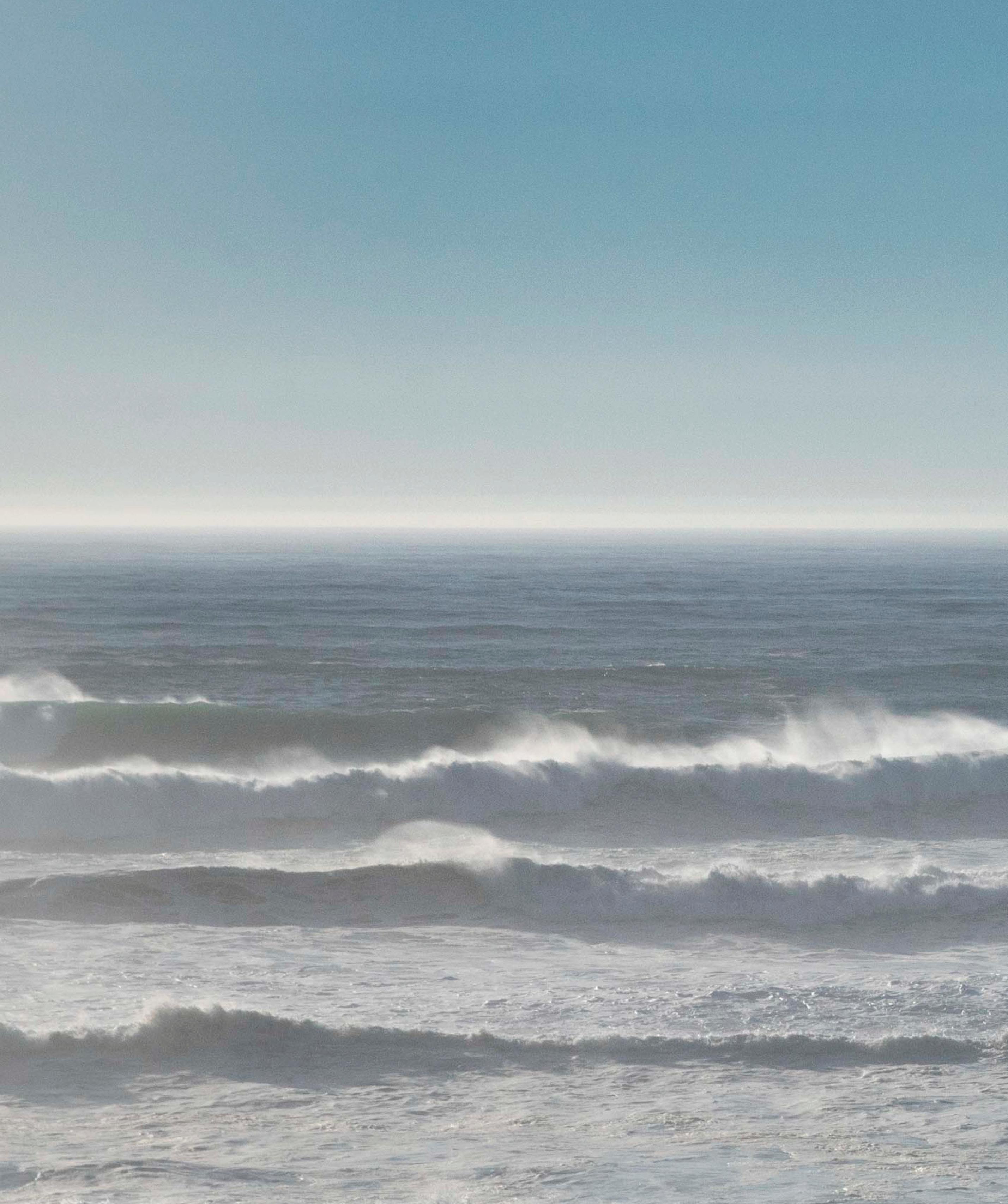
Interviews: Jenna Dennison
Images: Shanna Madison
Marla Johnson
Office store manager, World Kite Museum • Long Beach
How long have you been working here at the museum?
I personally have been here a little over three years. … It’s fun, because everybody that comes in, they’re happy. They’re not grumpy. They’re (on) vacation, or you know, looking for a kite or just having a good time.
What’s the best part about interacting with the visitors?
I’m a people person. So it’s just fun to visit with them, find out where they’re from, how long they’ve been here, what their interests are.
How would you describe the museum to someone who hasn’t been before?
So this is the World Kite Museum. We are the only one on the North American continent. The founder of the museum felt that kites were historic, scientific and artistic. And it’s an endeavor, function … that (the) entire family can participate in. So it’s a family activity. And it promotes people being together and being outside in the fresh air.
If you had to pick an exhibit or an item that’s in the museum, what would be your personal favorite?
The military room. So in the military room, it’s primarily about World War II, and two of the kites in there are replicas of the target practice kites, the German version and the Japanese version. The largest kite in that room is called the barrage kite, and it was used as a weapon. And if you read the information in that room, it’s amazing what all kites were used for during World War II.
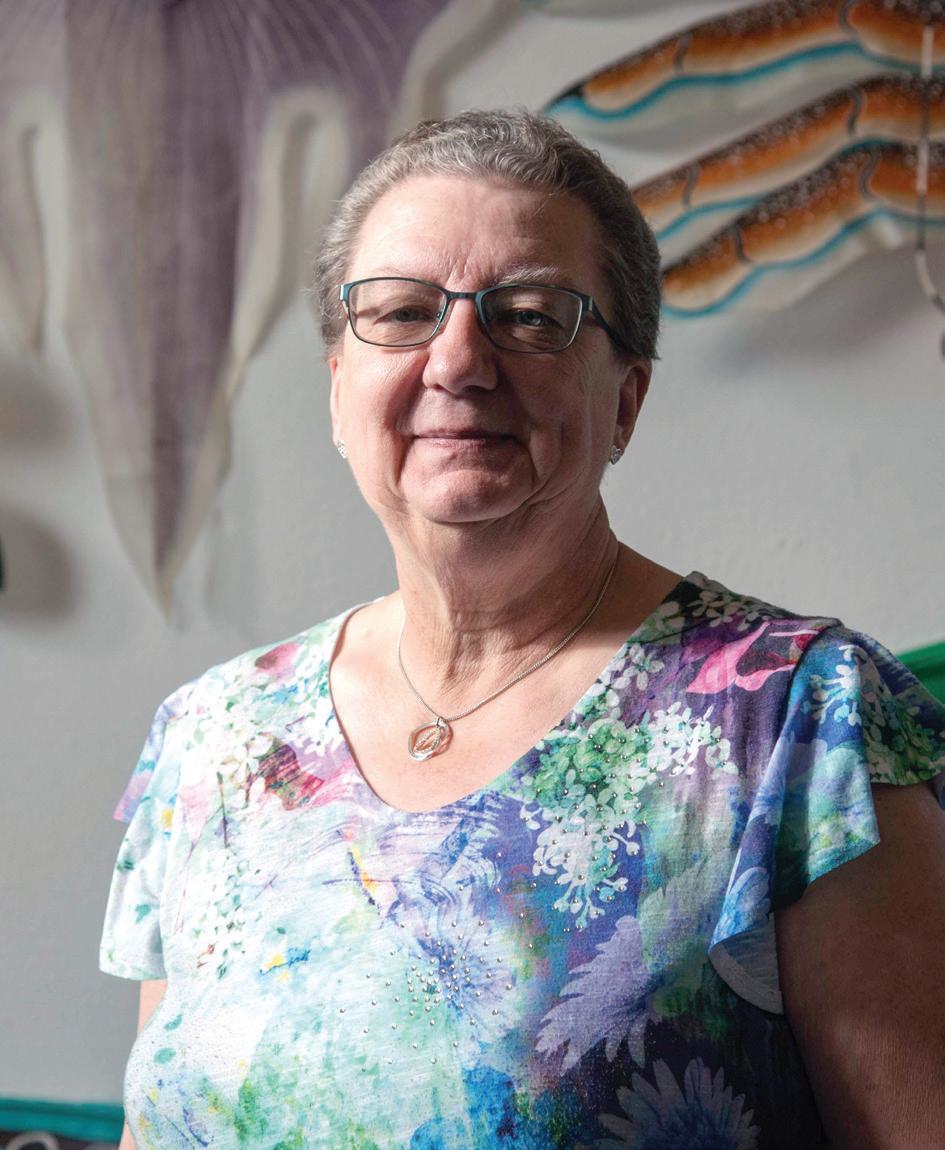

Bill Ham
Co-owner, Time Enough Books • Ilwaco
What would you describe as your favorite part of the day here at the bookstore?
I’d say the whole day, pretty much. … Honestly, I still get a little thrill just walking in the door. Oly (the dog) is with me, she is the only full-time employee that the store has. She’s here seven days and she’s on the leash with me and we come in. And just the, you know, that book smell … you get used to it after a while, but you come back in after being away from it and you know, just get that, you know, little pulpy, papery smell, you know? … It’s always exciting to me. I was always a fan of books as obviously a means of communication, but also as a physical object.
What do you like most about connecting with the people who come into Time Enough?
We get a lot of tourists trade here in the tourist season, and it’s always great to hear where they’re coming from. And often they are people who are, you know, big independent bookstore fans like ourselves, and so they will tell us about the stores they frequent where, you know, close to where they live, or, you know, where they vacation ... has always been fascinating to me, just the personalities. What brings people to a place like this as well.
Is there a book you’ve enjoyed recently, and why?
This book here (“We Had a Little Real Estate Problem” by Kliph Nesteroff). I’m a big fan of comedy and also (have) been very fascinated with people who are fascinated with Indigenous culture. So it’s a book about ... First Nations comedians. People which you don’t hear very much about, but there is a pretty substantial crowd of them now. So that’s an excellent book and really good writer.
Coastal Life
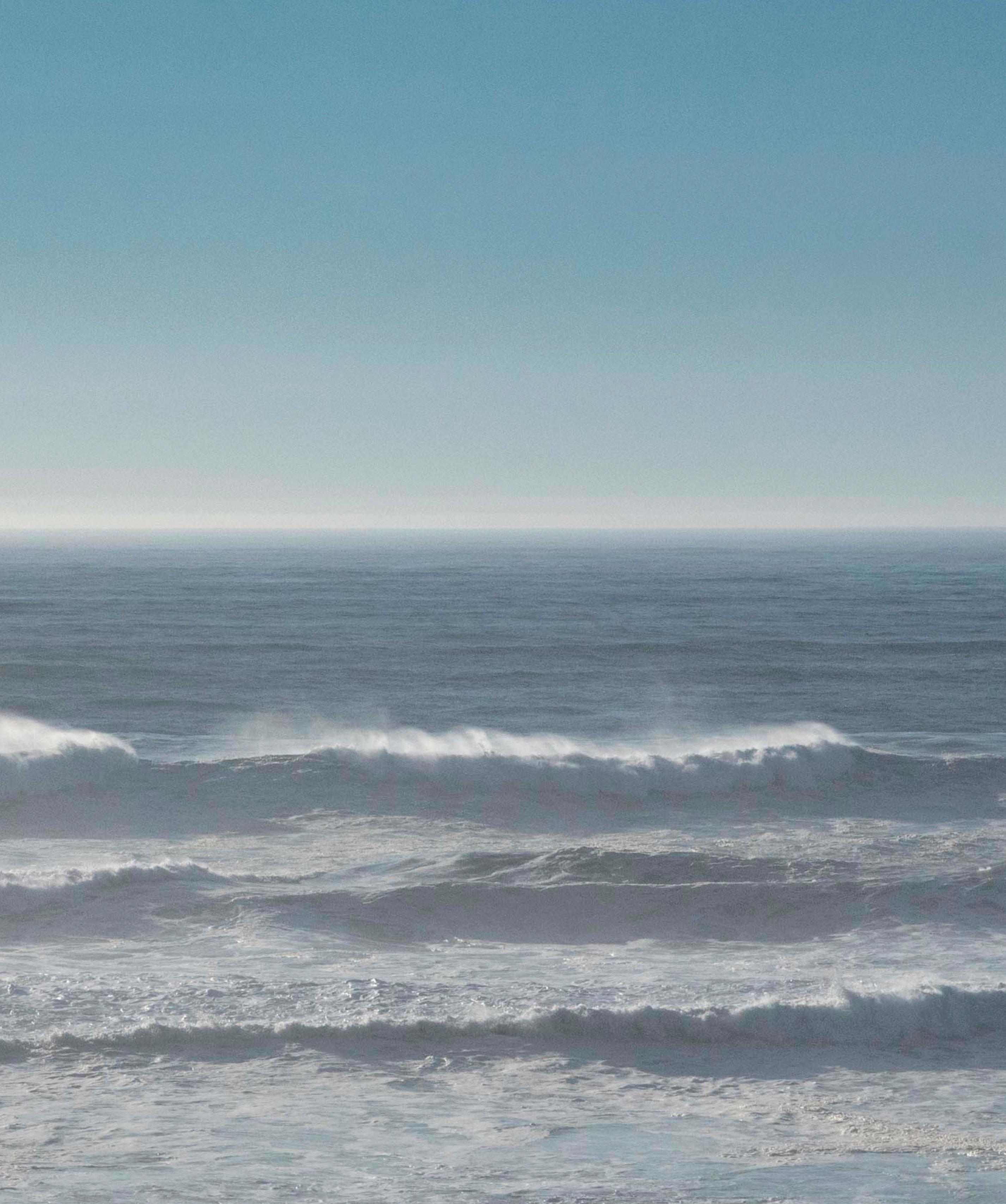 Katy Menne
Katy Menne
Education director, Columbia River Maritime Museum • Astoria
Tell me about the visitors you work with at the museum.
Our education department reaches a variety of ages and abilities. So some of the educators focus more on elementary school-aged children, and some focus on adult learners and senior living facilities. So we really range from kindergarten to 101.
How would you describe the variety of education programs offered?
There are seven of us in the education department, and we do kind of split it up with on-site versus off-site and kind of age demographics. So, for instance, this summer, we had programming in the museum or on the museum campus six days a week. And then, in addition to that, we were welcoming summer campers into the museum, we were going to like the Sunday market, and Bald Eagle Festival, and to the local libraries, as well as running two adult program options every month. ... It’s important to know where the Columbia River starts, where it ends, the peoples that it travels past, all the different cultures and communities, and also kind of tying the cultural maritime history with environmental maritime history.
Do you have a favorite exhibit or program at the museum?
The shipwrecks exhibit that opened last summer is really incredible. I love the life-saving service. The early formation of the Coast Guard is something I’m especially interested in long before I moved here. … As far as programming, I am exceptionally proud of all my staff. But one of the new pushes we’ve done in 2023 is our adult programming offerings. So one of the educators is in charge of adult education, with the assistance of one of our part-time educators.
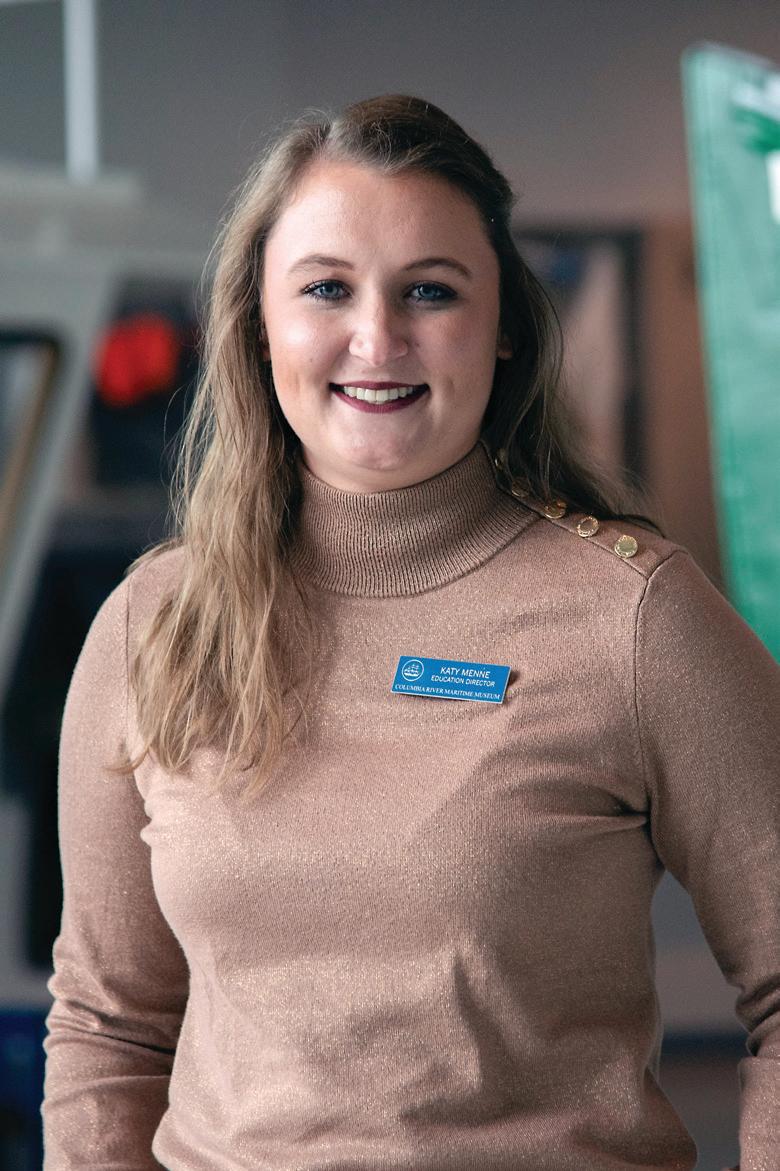

Jarom Bowles
CTE-Construction-Woodshop teacher, Seaside High School • Seaside
How would you describe a day in the classroom?
I always tell people that I have the best job possible for me. I get to work with young people. Teach them some wonderful skills, hopefully help them improve their lives. And we get a shop full of tools, and we get to build stuff. And so that’s what my day is. Typical day is: students come in, we do roll call, we make announcements and we get to work. If they’re in the basic … woodshop classes, they’re coming in and learning measurement, they’re going to learn all the safety for the tools, how to use the tools and then be able to go out and start building specific woodshop projects.
What sort of projects do you work on with your students?
I actually have two different programs: my woodshop program, and then I have my CTE construction program. So the woodshop program, again, is teaching them how to use hand tools, power tools, do it safely, and then how to just make basic woodshop projects. So they start with step stools, boxes, cutting boards, things like that. … We focus on not just throwing stuff together, but really learning craftsmanship. … Then I have my CTE construction class, and that is really focused on teaching them basic construction skills. Students that are going to enter that program are still going to learn how to use hand tools and power tools safely, then they’re gonna do blueprint reading. They’re going to learn how to frame walls, run electrical circuits, do communication wiring for like phone and network cabling, telephones, CATV. They’re going to learn basic roof framing, plumbing, HVAC, tile setting, concrete work. So basically, they’re going to go through the steps of building a house on a smaller scale.
Hear
locals
Coast home.
why the
call Our

Great blue heron
A common large heron, found at the water’s edge. Great blue herons are usually seen alone, moving slowly and deliberately. They nest in colonies in trees near water and appear in large groups flying to nearby feeding areas.
124 Our Coast Magazine 2024
Coastal Life

Black oystercatcher
Birds of our coast
A photo essay by Pat Welle
In coastal forests and along shorelines, birding opportunities are almost always nearby.
Take a walk on a local beach to see gulls, terns and small shorebirds busy feeding, each applying their individual scavenging, diving or pecking methods.
Hike one of the many trails of the Willapa National Wildlife Refuge, Cape Disappointment State Park or Fort Stevens State Park. Through the forest, listen for the songs of the Pacific wren and varied thrush. Along sloughs and wetland edges, hear the sewing machine song of the marsh wren or the call of a red-tailed hawk.
As we traverse through the seasons, the cast of characters (and who takes center stage) changes, and occasionally a surprise visit occurs, like an American kestrel, uncommon in the area.
Enjoy large flocks of ducks through the winter, look for the arrival of warblers and swallows in the spring, and watch the many pelicans and turkey vultures in the summer. By fall, catch a breath and wonder at the short but intense gathering of shorebirds as they stop to fuel on their way south.
Here are a few images of the birds found on Our Coast through the seasons.
The long, red bill, yellow eyes and pink legs easily identify these otherwise dark shorebirds. Black oystercatchers are often found probing mussel and barnacle-covered rocks along the ocean shoreline.
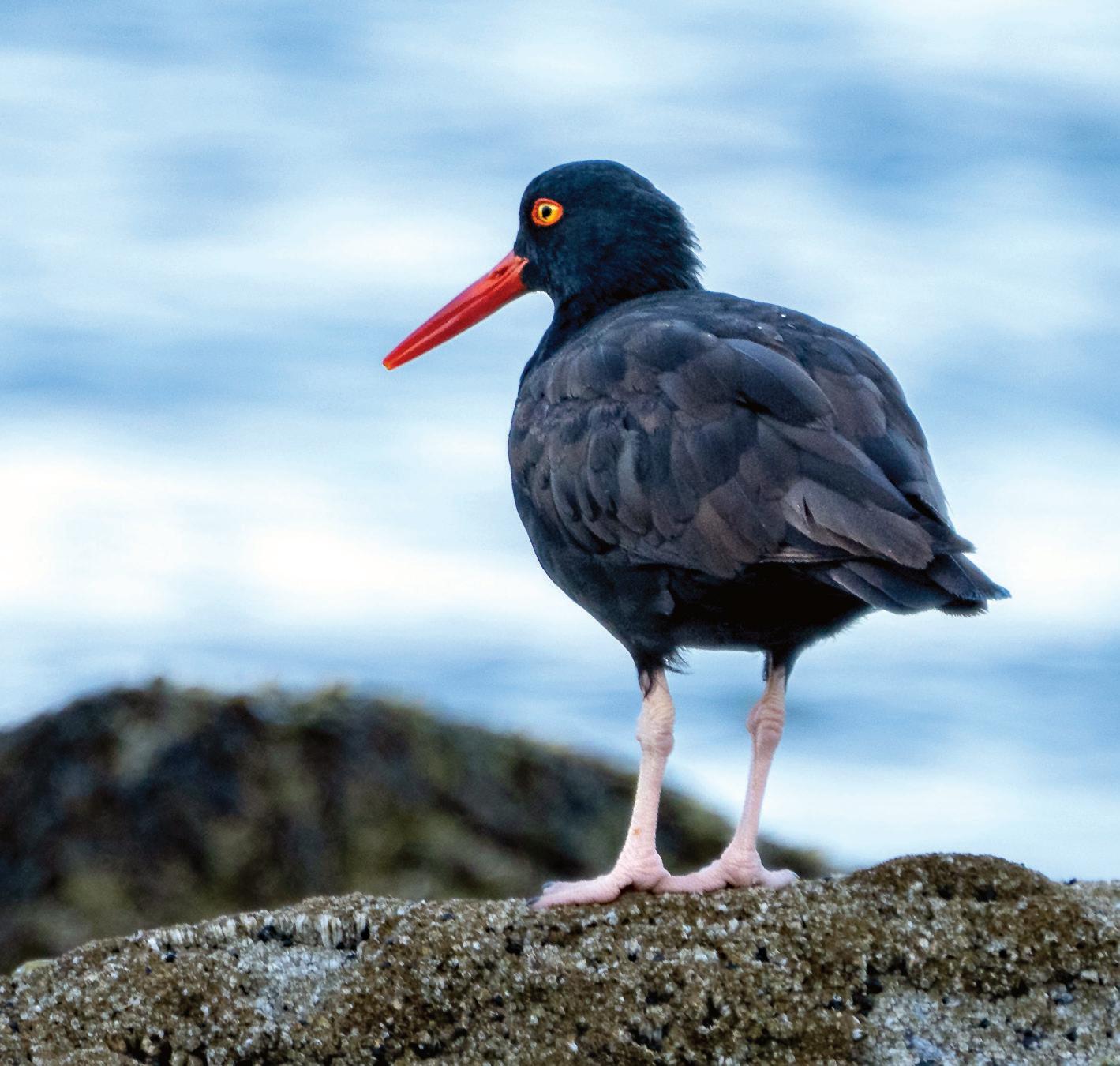
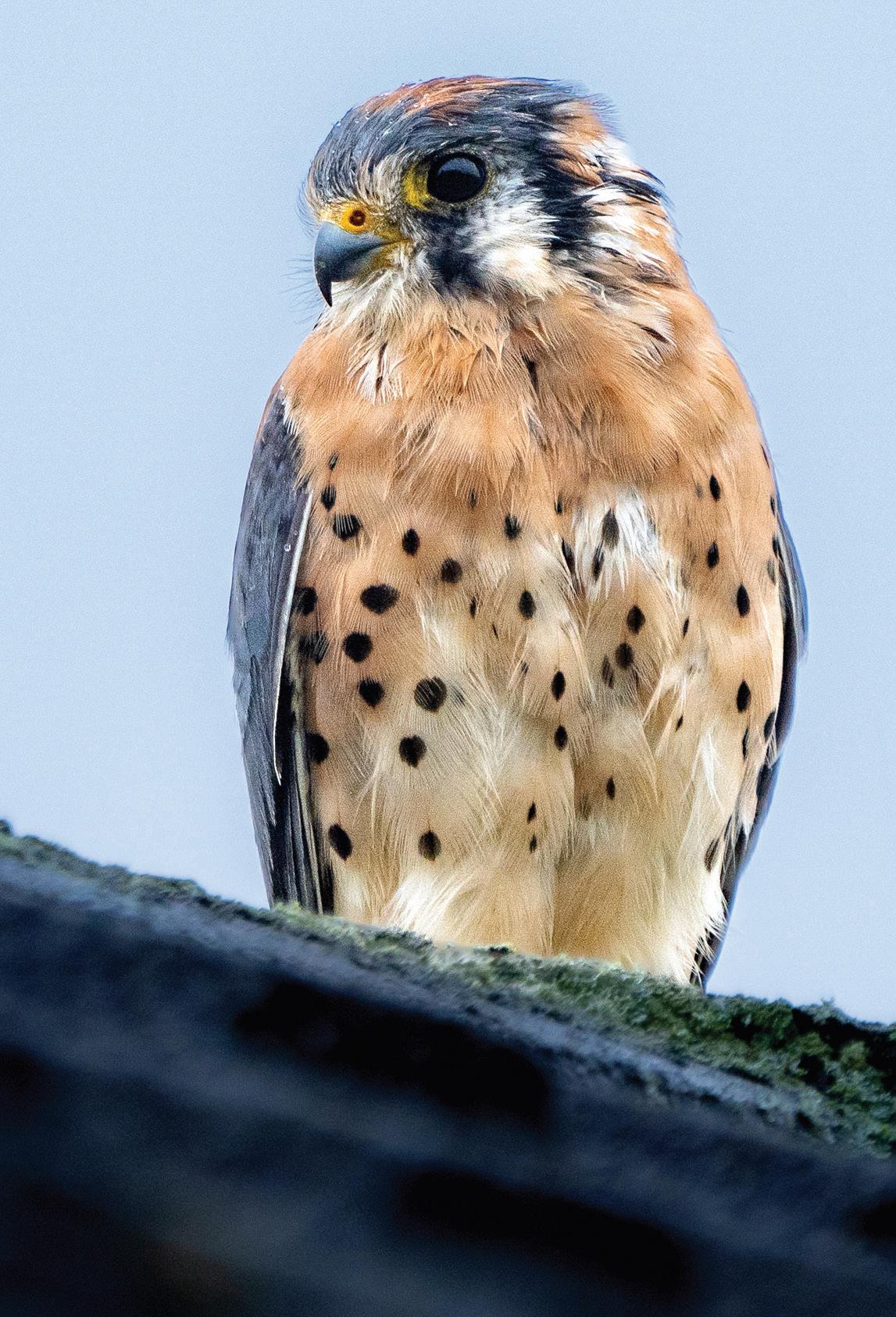
American kestrel
This small but distinctive falcon is found in open areas such as fields and grasslands. Their coloring is distinctive, with two black vertical face stripes, plus males have bright blue and rufous coloring.
Coastal Life
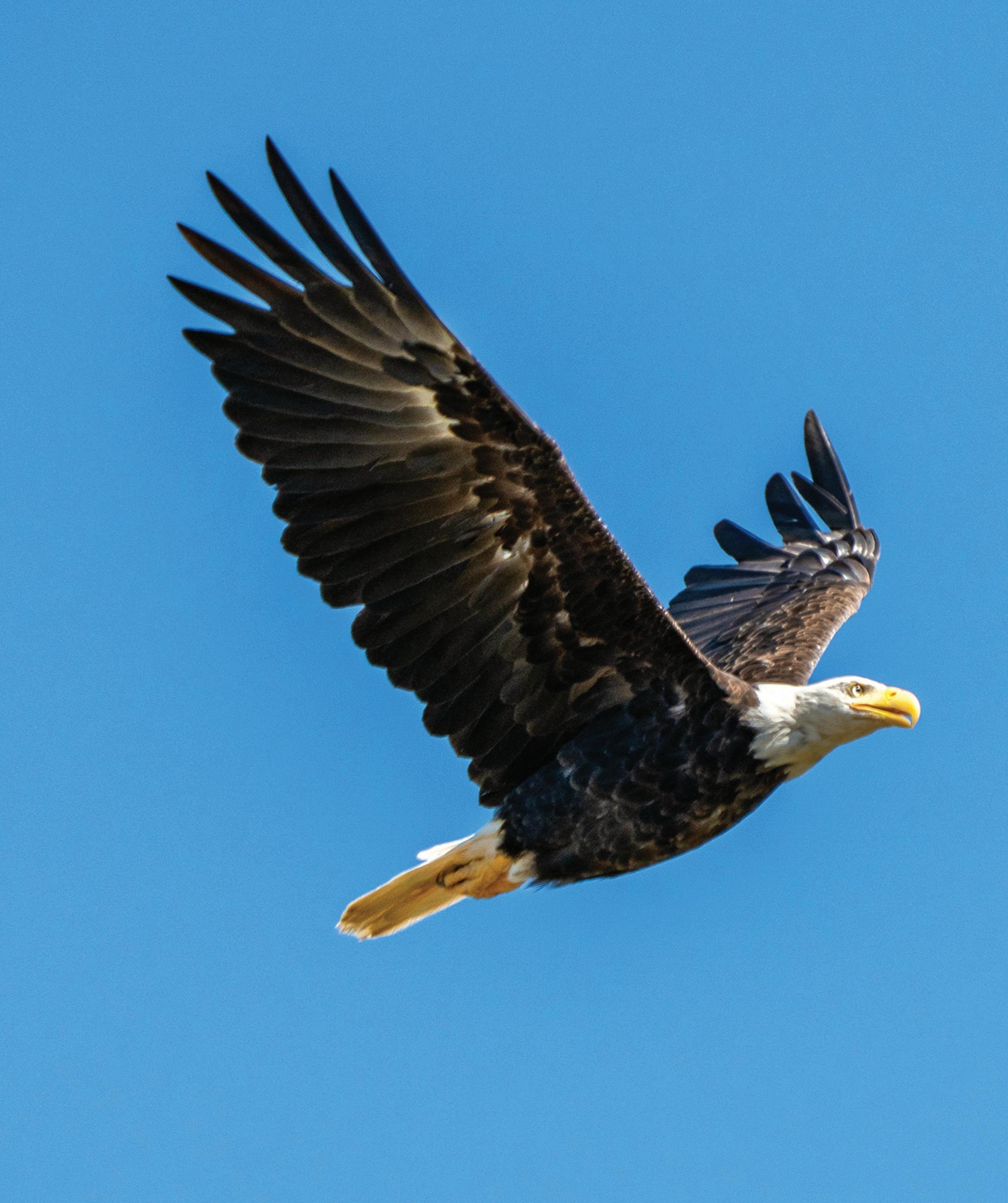
Bald eagle
With their white heads and tails, plus large bodies, bald eagles are easily recognizable. They are commonly seen year-round, except for some who move north in late summer and fall to exploit food sources, such as returning salmon.

Greater yellowlegs
Widespread migrants throughout the Northwest, these birds can be seen foraging along the mudflats of Willapa Bay and other wetlands and estuaries. Look for their long, yellow legs and listen for a distinctive, loud-whistled “tew-tew-tew” call.
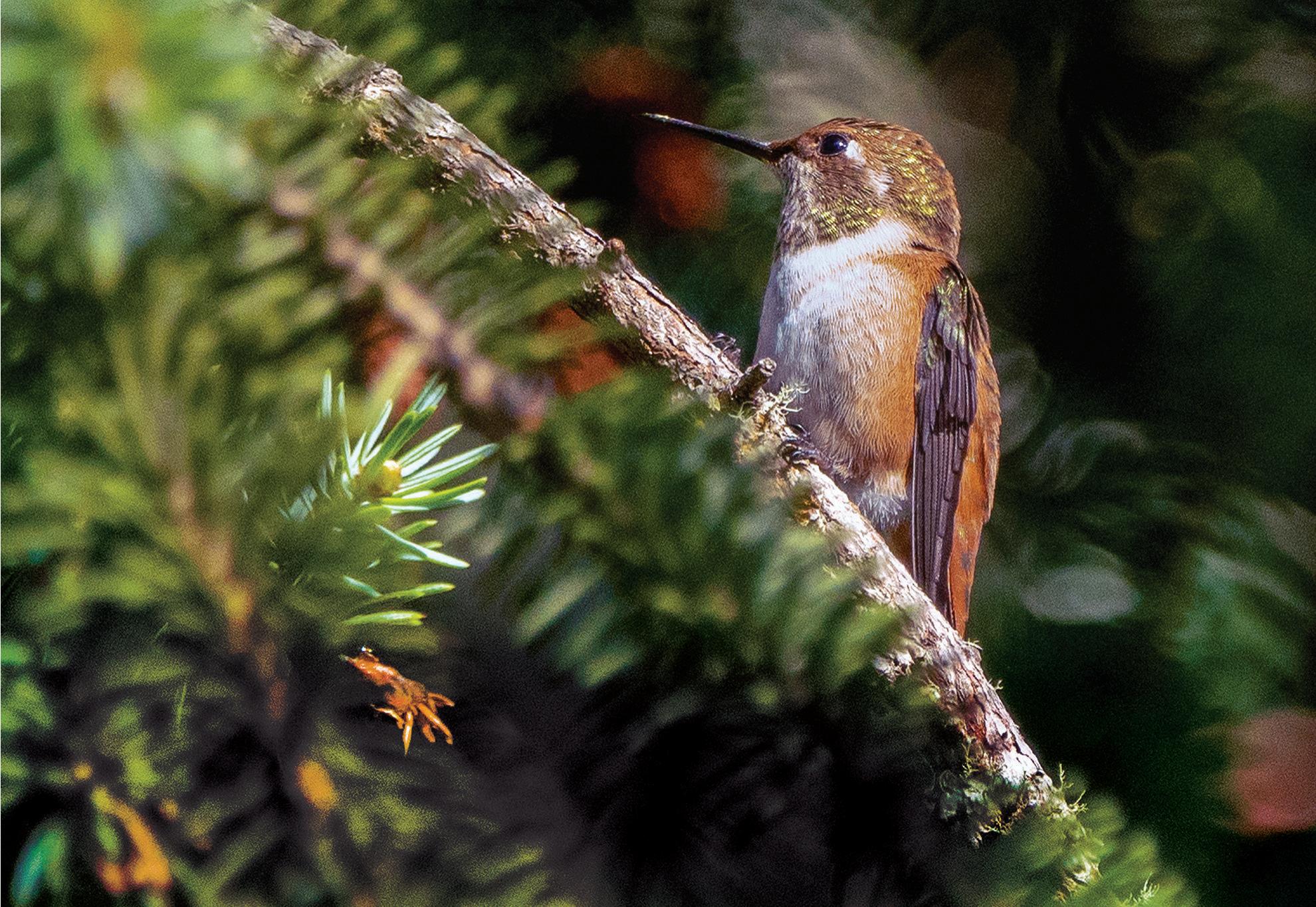
Rufous hummingbird
A long-distance migrant, the rufous hummingbird is generally seen along the coast between March and August. Find it in conifer and mixed forests, especially near meadows. Look for an orange hummer with a thick neck and big head.
Coastal Life
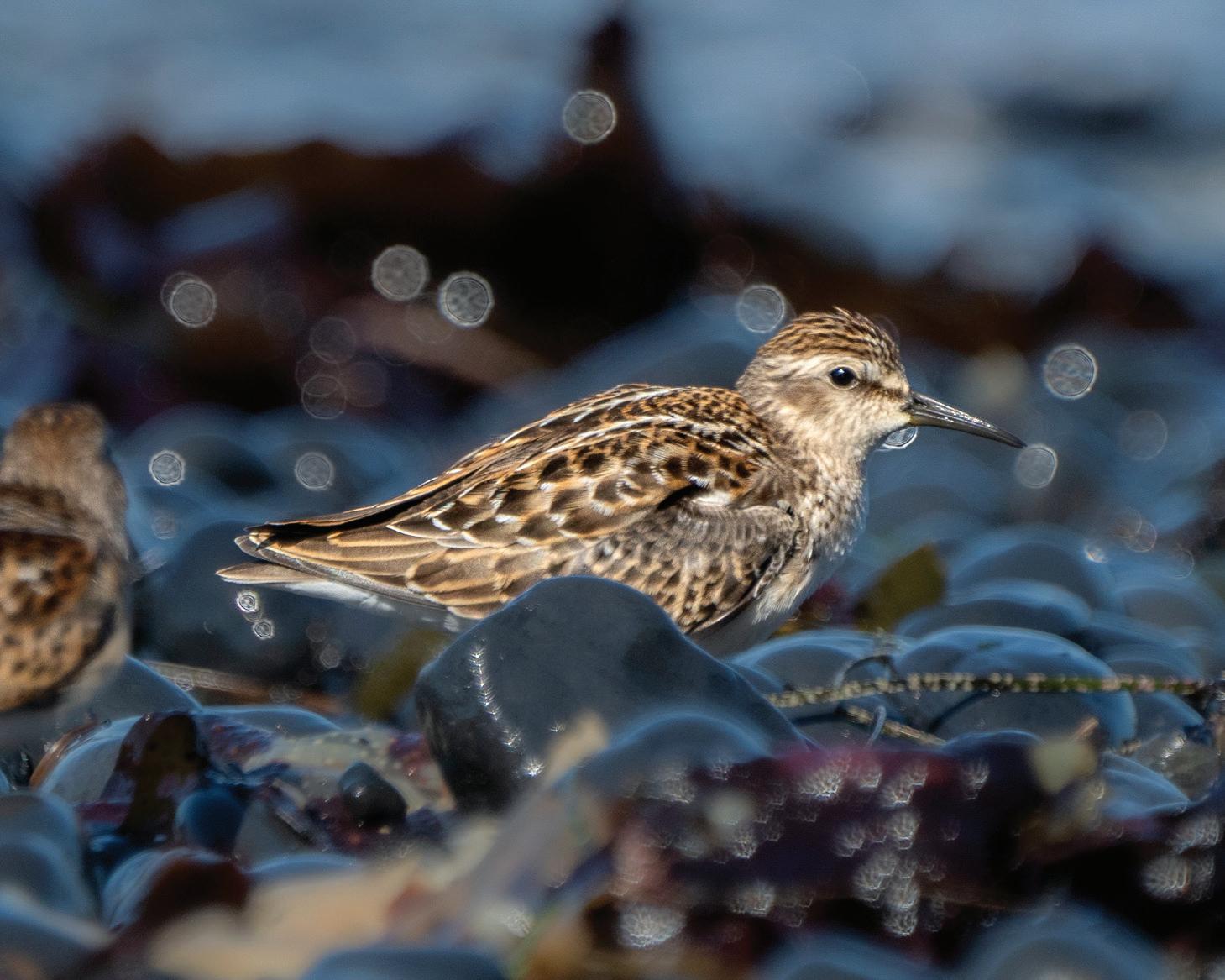
Least sandpiper
A common migrant and winter visitor, the least sandpiper prefers muddy and marshy areas, often near vegetation. One of the smaller peeps, they are distinctly short and fat, with a small head.
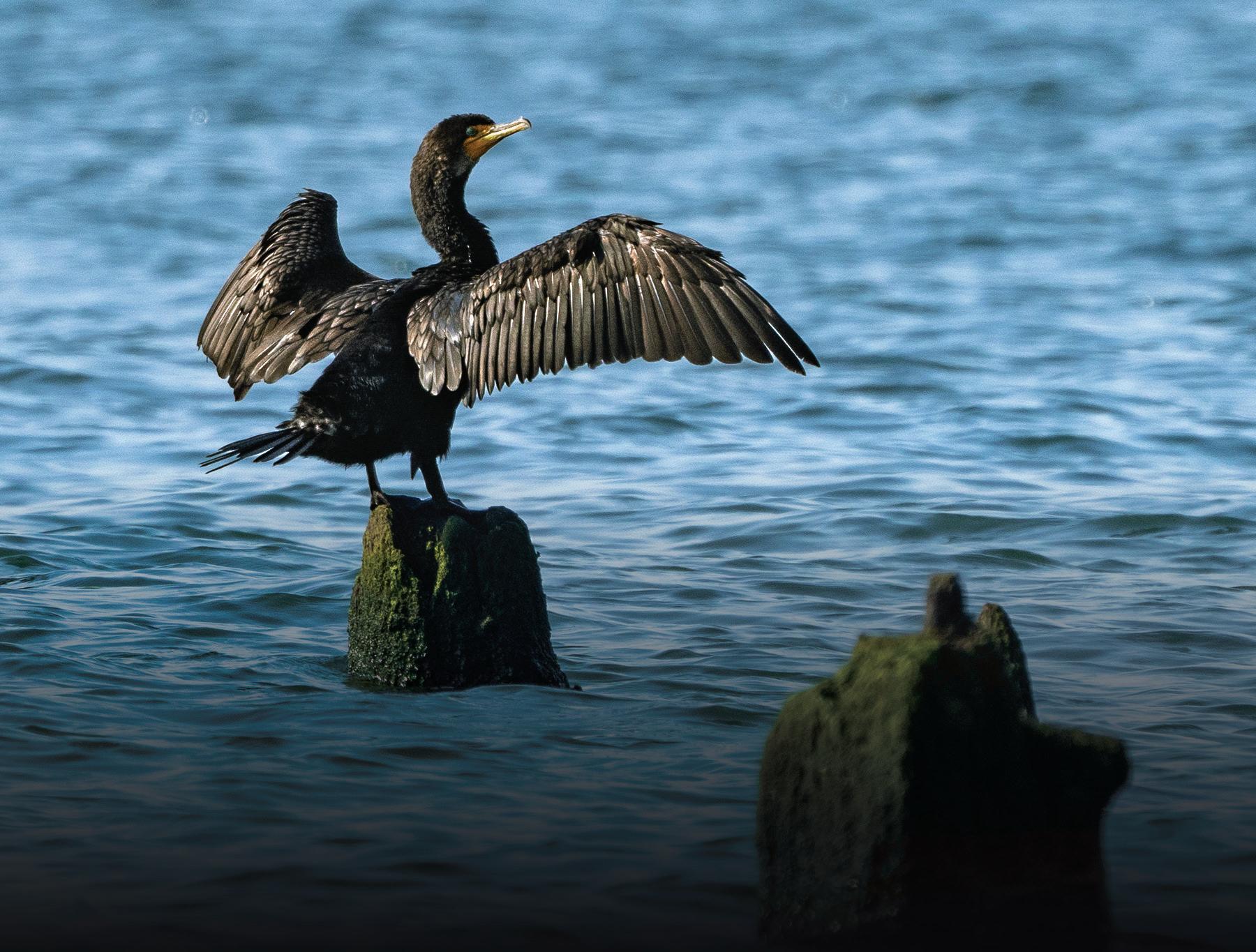
Double-crested cormorant
These expert divers and year-round residents are often seen near the mouth of the Columbia River. Although appearing fully black from a distance, up close they have bright orange faces, aquamarine eyes and blue throats. Look for them resting on pilings while drying their wings.
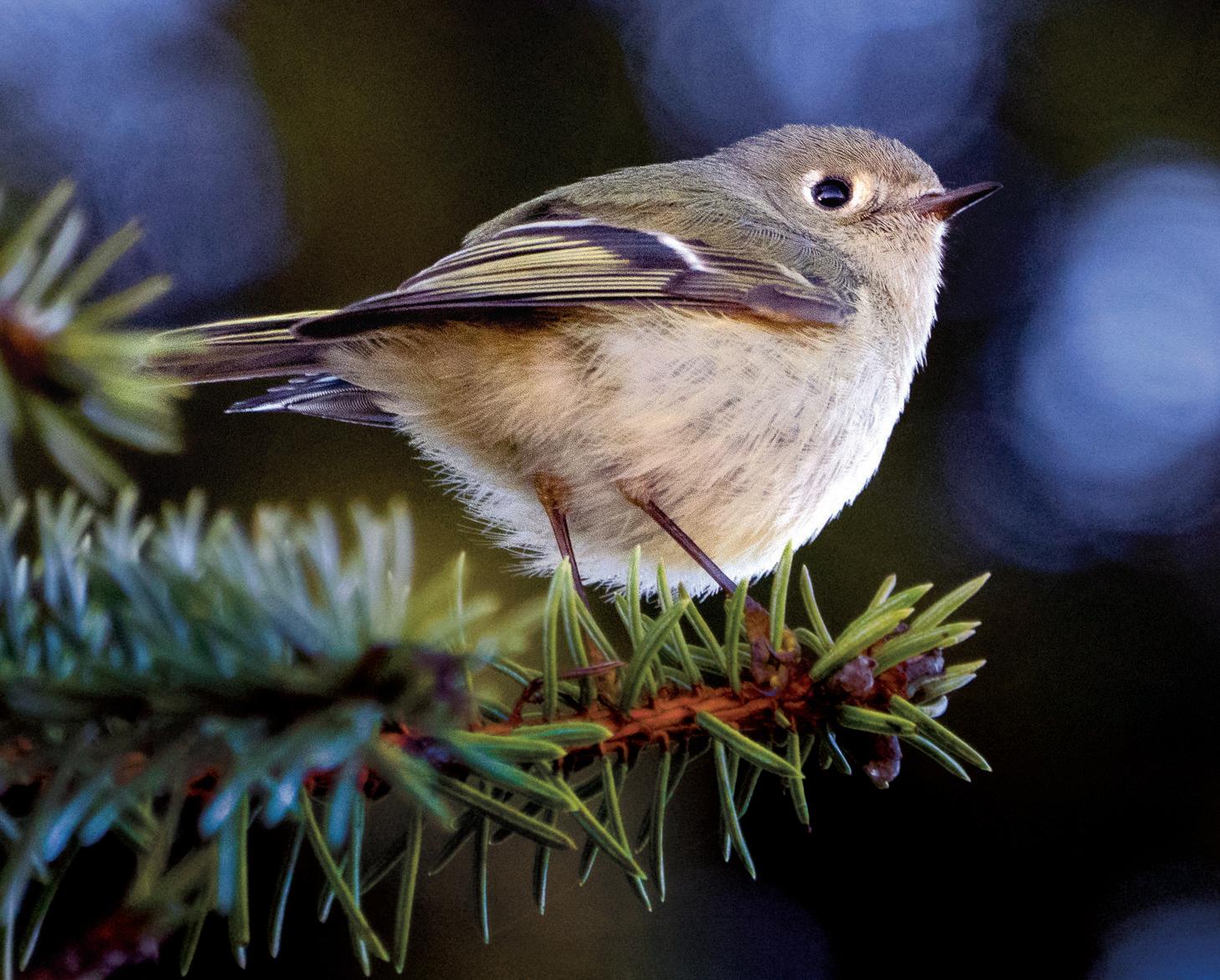
Ruby-crowned kinglet
A winter visitor, the ruby-crowned kinglet prefers open, dry forests. This one was seen in a small stand of conifers at the edge of Willapa Bay. It is very active and has two white wing bars and an incomplete, white eye ring.
Song sparrow
A large songbird, heavily streaked with a long tail, the song sparrow is common year-round. They prefer dense, brushy thickets, but can be seen moving between shrubs and open branches in the winter.
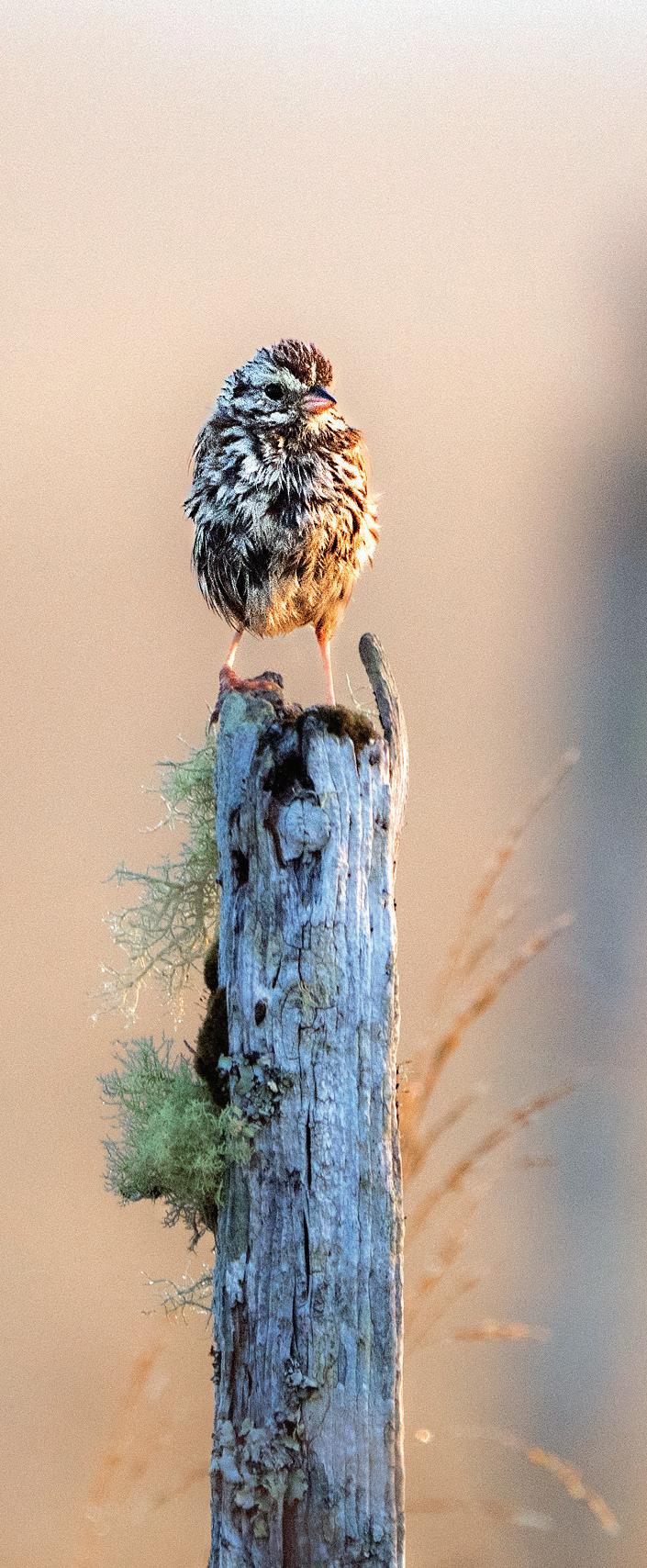
Brown pelican
This large seabird feeds by plunge diving, using its force of impact to stun small fish. It breeds south of the region, then travels north, and is usually visible on the coast from July to October.


Pacific wren
A tiny woodland bird with a distinctive song, the Pacific wren is more often heard than seen in conifer forests, preferring dense understory areas. This one was found along a small trail near Fort Stevens State Park.
Northern harrier
A slender raptor with a long, barred tail, the northern harrier can be recognized by its white rump patch and a distinctive, owl-shaped face. This bird can often be seen flying low over grasses near the coast or Willapa Bay.
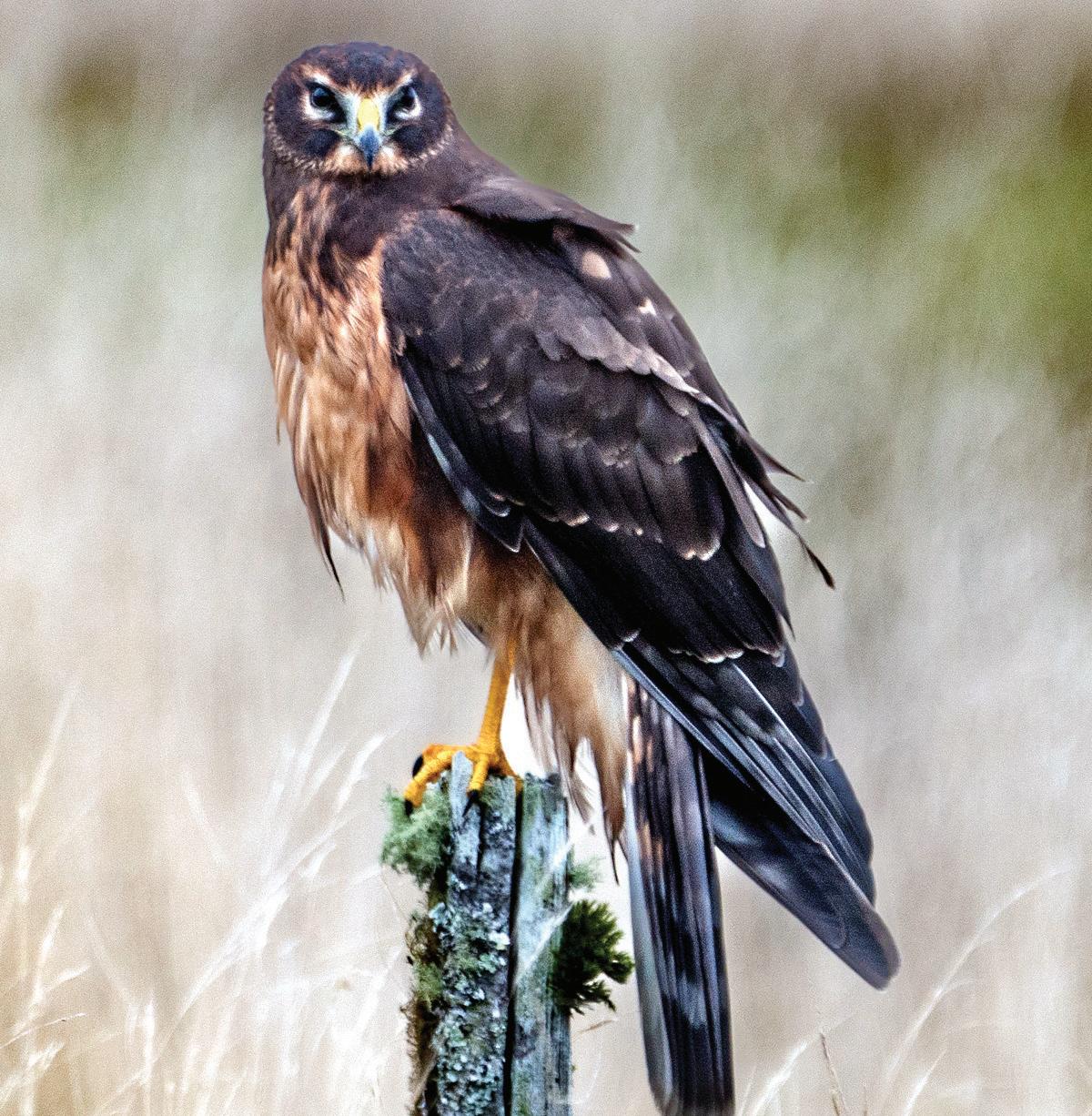








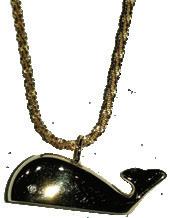

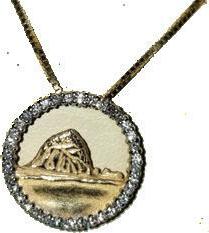
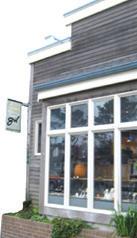
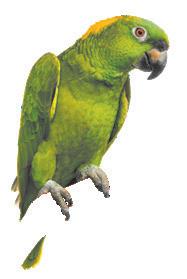

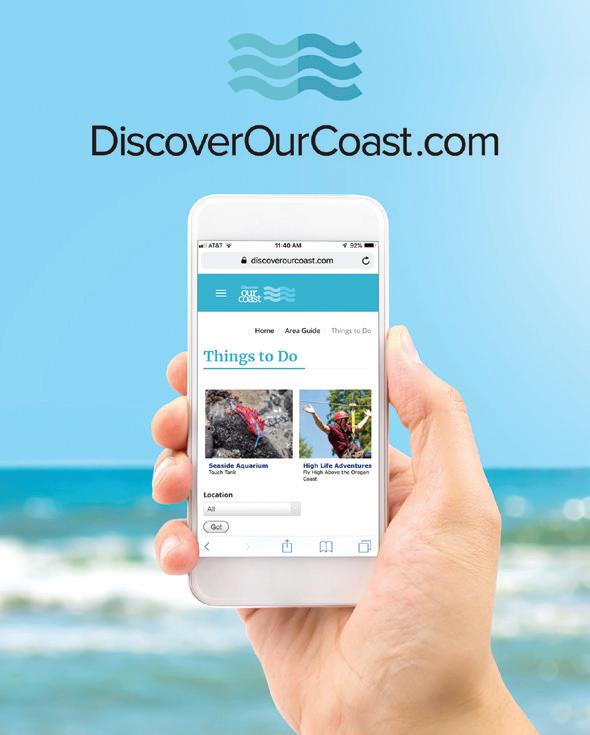
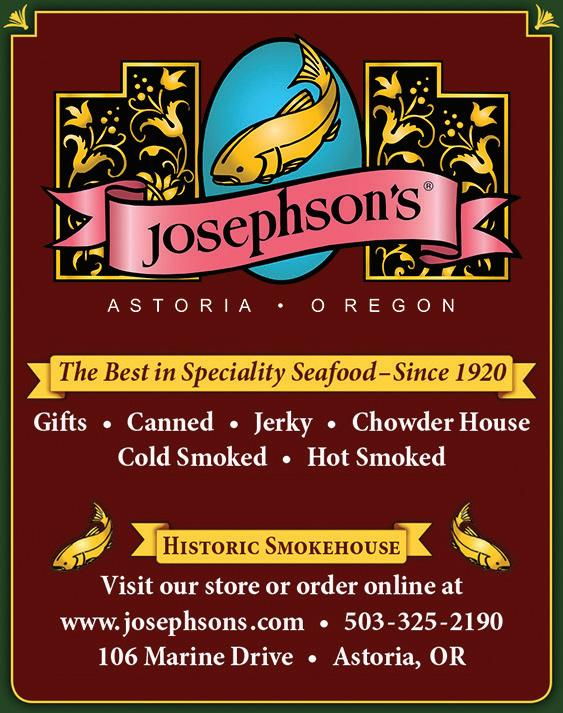
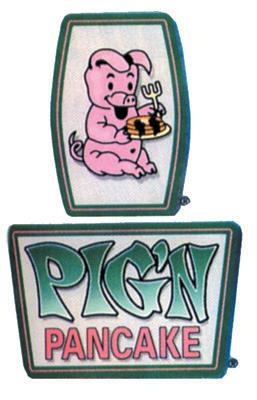

DIRECTORY Restaurants Specialty Retail Travel & Tourism Healthcare Museums Residential Living Fish and Seafood Antiques Books Attractions Video Rental 130 Our Coast Magazine 2024 Open 10-4 Wed-Sat (360) 642-3446 115 SE Lake St. Ilwaco, WA FREE Admission Discover our stories! Visit our gift shop columbiapacificheritagemuseum.org EXCELLENCE IN FAMILY DINING FOUND FROM A FAMILY THAT HAS BEEN SERVING THE NORTH COAST FOR THE PAST 55 YEARS SEASIDE 323 Broadway • (503)738-7243 CANNON BEACH 223 S. Hemlock (503)436-2851 ASTORIA 146 W. Bond • (503)325-3144 OPEN 7 DAYS A WEEK Mon - Sat 9:30am - 6pm 725 AVENUE J • SEASIDE, OR It is a Most Interesting Place LYLE’S Pet Feed & Supplies Gardening Supplies Indoor and Outdoor Plants Wild bird Feed and Supplies 503.738.5752 Koda & Merlin say Come Visit Us! OPEN 7 DAYS A WEEK Monday-Friday 7aM-7pM Saturday-Sunday 9aM-7pM 503-325-0333 Available for all of your routine healthcare needs, not just for emergency situations! 2120 Exchange Street, Suite 111 www.urgentcarenwastoria.com ...since 1984 DVD - Blu-ray - VHS - Video Games Vinyl - Board Games- T-shirts - Vintage Stuff Over 40,000 rentals to choose from Rent • Buy • Sell 1156 Duane St. Astoria (503) 325-7310 physical media still lives at... GOLDEN WHALE JEWELRY 194 N. Hemlock • Cannon Beach (503)436-1166 • (800)548-3918 Bridal • Gemstones • Silver Gold • Navajo • Earrings 14kt Gold & Sterling Charms Quality jewelry in gold and sterling silver by nationally known artists If you are looking for something unique, Visit the Golden Whale OPEN DAILY 616 Broadway, Seaside 503.738.3500 Shop any book at anytime, from anywhere More than just books! Journals, Cards,Stickers, Puzzles & More beachbooks37.com sales@astoriacolumn.org AstoriaColumn.org PHOG BOUNDERS ANTIQUE MALL 55+Vendors Antiques • Nautical Items Glassware • Vintage Decor MORE THAN JUST ANTIQUES! (503) 338-0101 892 Marine Drive, Astoria OR 97103 Do & See • Eat & Drink • Live & Stay • History & Heritage Specialty Retail
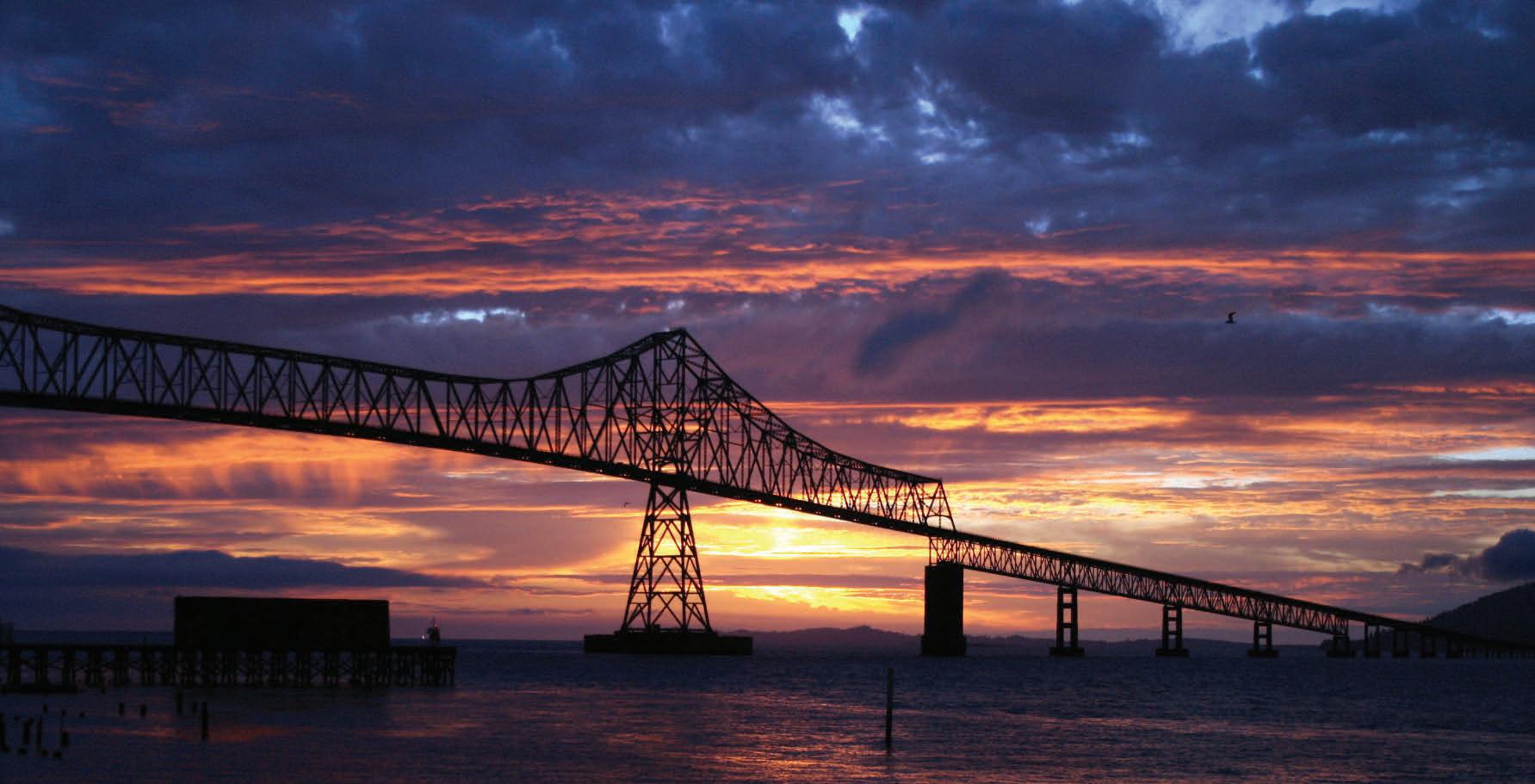


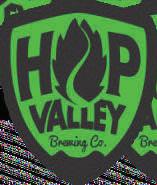

DiscoverOurCoast.com 131 Established since 1971. Owners Larry & Shirley Perkins, Ron & Kim Williams. We are a locally owned distributor of Anheuser-Busch products and many wine varieties. Clatsop Distributing Company is a supporter of local youth sports, Clatsop Comm. College, Clatsop Co. Fair, Tillamook Co. Fair, Clatsop Co. Food Bank, and many local events. 1375 SE 12th Place, Warrenton, OR 97146 503-861-4275
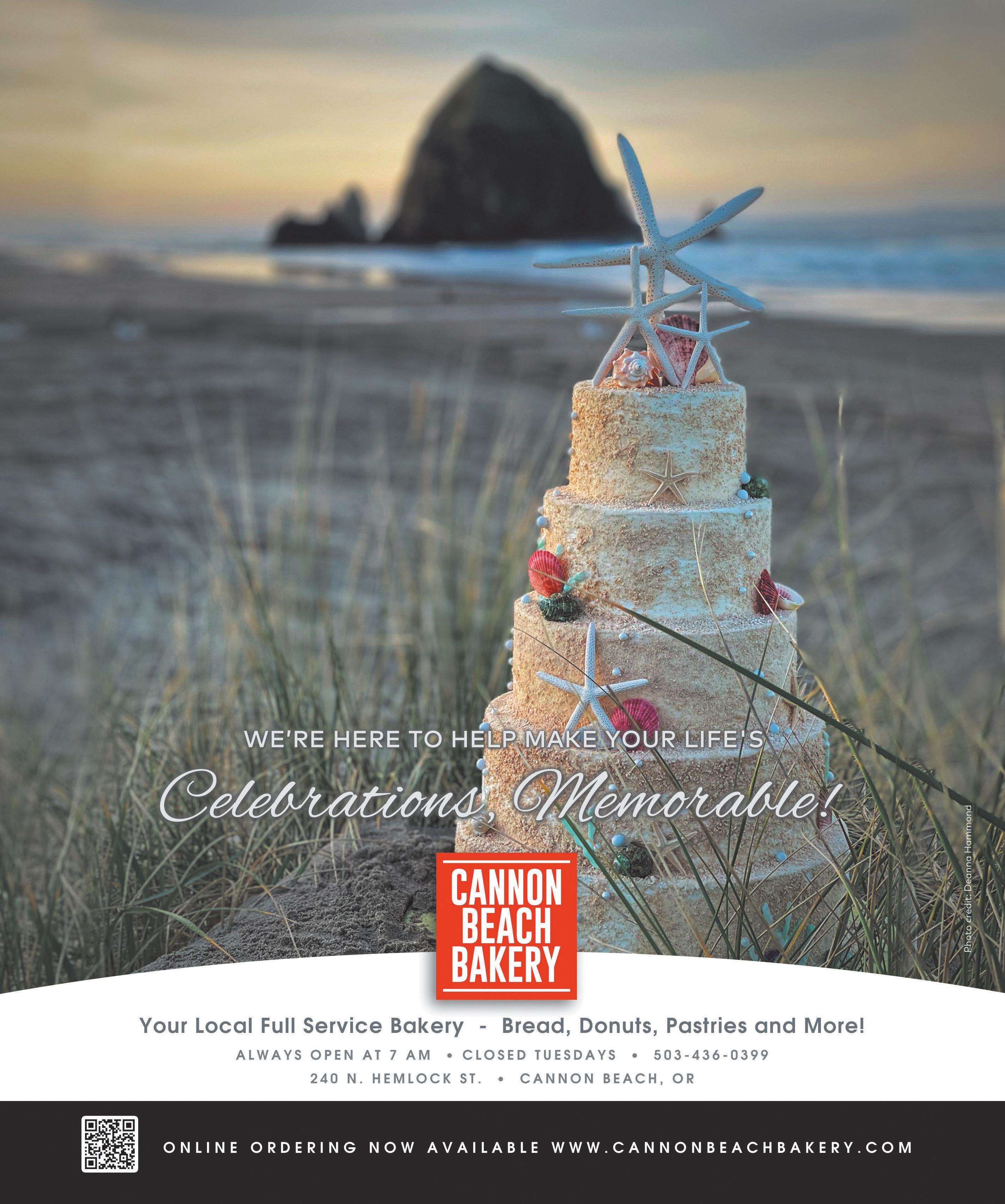

















































































































































 North Head Lighthouse, built in 1898, is the newer of two lighthouses at Cape Disappointment State Park.
North Head Lighthouse, built in 1898, is the newer of two lighthouses at Cape Disappointment State Park.









































































































 Sweet treats at The Cookie Jar in Seaside.
Sweet treats at The Cookie Jar in Seaside.












 The Rope Room
Dock line rope is weaved onto the studio walls of the Rope Room for sound absorption.
The Rope Room
Dock line rope is weaved onto the studio walls of the Rope Room for sound absorption.








































































































 Katy Menne
Katy Menne







































